mutually assured destruction
description: a military strategy and national security policy where the full-scale use of nuclear weapons by two opposing sides would effectively result in the destruction of both
233 results
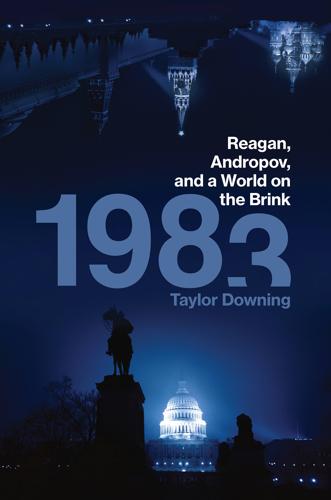
1983: Reagan, Andropov, and a World on the Brink
by
Taylor Downing
Published 23 Apr 2018
He came up with a new concept called ‘Assured Destruction’. Neither side would attack the other because they knew it was suicidal: if one superpower attacked, the other had enough nuclear capacity to strike back, causing massive destruction. Someone added the word ‘Mutual’ to this new phrase, and ‘Mutual Assured Destruction’, better known by its acronym MAD, became one of the central tenets underpinning the Cold War. McNamara insisted it was far from madness, that it created a form of stability, as long as neither side perceived it had an advantage over the other.12 However, the technology continued to advance at a dizzying pace.
…
Negotiations between the two continued at a snail’s pace but eventually resulted in the signing of the Strategic Arms Limitation Treaty (SALT I) by President Richard Nixon and Soviet leader Leonid Brezhnev at a summit in Moscow in May 1972. Alongside this came a treaty to prevent the development of ABMs. The treaties effectively froze the nuclear arsenals of both superpowers while ensuring that Mutual Assured Destruction continued to be possible. In other words, each side still had more than enough nuclear weapons to destroy the other. The SALT treaty ushered in a new era of détente between the superpowers that lasted for much of the 1970s. And in Europe, a newly prosperous West Germany recognised the existence of East Germany, ushering in what appeared to be a form of East–West reconciliation.
…
It shows how intelligence can be misused or just misunderstood. And it shows how dangerous the use or even the threat of the use of nuclear weapons can be without proper crisis management systems in place. In our multi-polar world of the twenty-first century, some people feel nostalgic about the era of Mutual Assured Destruction in the bi-polar world of the late twentieth century. I hope after reading this book that no one will want to return to the crazy world of 1983 at the brink of nuclear war. In the summer of 1983, cinema audiences flocked to see the latest James Bond movie in which Roger Moore defeats a Soviet general who attempts to fire a nuclear weapon against the West.15 People loved the film but believed that the storyline was entirely fictional, if not totally absurd.
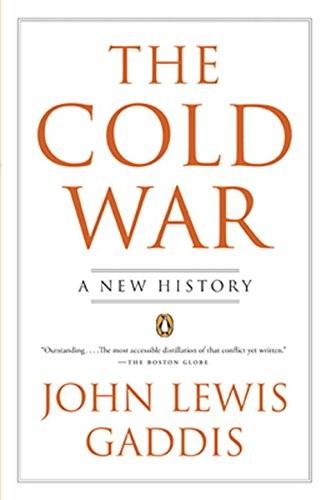
The Cold War: A New History
by
John Lewis Gaddis
Published 1 Jan 2005
McNamara, characteristically, transformed this reliance on irrationality into a new kind of rationality in the aftermath of the Cuban missile crisis. He now repudiated his earlier idea of targeting only military facilities: instead each side should target the other’s cities, with a view to causing the maximum number of casualties possible.70 The new strategy became known as “Mutual Assured Destruction”—its acronym, with wicked appropriateness, was MAD. The assumption behind it was that if no one could be sure of surviving a nuclear war, there would not be one. That, however, was simply a restatement of what Eisenhower had long since concluded: that the advent of thermonuclear weapons meant that war could no longer be an instrument of statecraft—rather, the survival of states required that there be no war at all.
…
This was the first formal acknowledgment, by both sides, of Churchill’s—and Eisenhower’s—idea that the vulnerability that came with the prospect of instant annihilation could become the basis for a stable, long-term, Soviet-American relationship. It also reflected Moscow’s acceptance, not easily arrived at, of Mutual Assured Destruction: persuading the Russians that it was a bad idea to try to defend themselves had been a negotiating challenge of the first order. The success of the effort—that American officials could now be educating their Soviet counterparts on how to think about national security—suggests how far things had come since each side’s development of nuclear weapons, in the first years of the Cold War, had terrified the other.
…
It would have been difficult, by any traditional moral principle, to justify the artificial division of entire countries like Germany, Korea, and Vietnam—and yet the United States and its allies had expended thousands of lives and billions of dollars to maintain those divisions. It strained democratic values to embrace right-wing dictatorships throughout much of the “third world” as a way of preventing the emergence of left-wing dictatorships, and yet every administration since Truman’s had done this. And surely Mutual Assured Destruction could only be defended if one considered hostage-taking on a massive scale—deliberately placing civilian populations at risk for nuclear annihilation—to be a humane act. American strategists did just that, however, because they saw no better way to deter a much greater evil, the possibility of an all-out nuclear war.

On Her Majesty's Nuclear Service
by
Eric Thompson
Published 18 Apr 2018
I am from the luckiest generation and am truly grateful for that, but peace did not happen by accident; I have lived under a nuclear umbrella through the forty-six years of the Cold War. After the horrors of the Second World War, Churchill said: ‘It must never happen again.’ To ensure it did not, the victors equipped themselves with nuclear weapons, weapons so devastating that they were the ultimate deterrent to a third world war. The principle was called Mutually Assured Destruction. Inspired by the heroes of the Second World War, I joined the Royal Navy in 1961, volunteered for submarines and served On Her Majesty’s Nuclear Service. My career spanned thirty-seven years and ended as Commodore in charge at Faslane, the operating base for our Strategic Nuclear Deterrent submarines.
…
Soviet President Khrushchev’s calculation had been that the young President Kennedy was weak and indecisive and would merely accept the missiles as a fait accompli when their presence was discovered. Castro’s view was more hawkish: if the Americans were to invade Cuba, he would launch a nuclear strike accepting that Cuba would be destroyed in retaliation – an alarming new Latin American variation on Mutually Assured Destruction. Russia would then retaliate by invading West Berlin and that would trigger nuclear war in Europe. Neither Russia nor America wanted a Third World War but Kennedy had an election to face and had to be seen to act tough. Khrushchev, on the other hand, had the prestige of International Communism at stake and could not be seen to back down.
…
We were on the brink of World War Three. The Cuba missile crisis was the nearest the world has ever come to nuclear war. Thank God (or Lenin), the Soviets blinked first and backed down. As Krushchev said later: ‘They talk about who won and who lost. Human reason won.’ The principle of Mutually Assured Destruction had been validated. Churchill had been spot on when he said: ‘There is nothing the Russians admire so much as strength, and there is nothing for which they have less respect than weakness, especially military weakness.’ **** The Cuba crisis had barely subsided when I received a newspaper cutting from my parents.
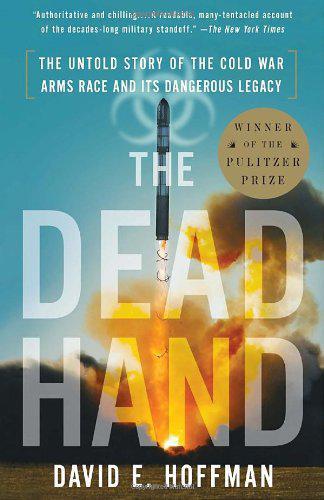
The Dead Hand: The Untold Story of the Cold War Arms Race and Its Dangerous Legacy
by
David Hoffman
Published 1 Jan 2009
His analysts concluded, "The main reason for stopping at 1,000 Minuteman missiles, 41 Polaris submarines and some 500 strategic bombers is that having more would not be worth the cost." McNamara hoped that the Soviets would also reach a plateau--and stop building. 7 A critic of McNamara proposed adding "mutual" to "assured destruction" and the idea of Mutual Assured Destruction, known pointedly as MAD, was born. For many Americans, this idea of equal vulnerability and mutual deterrence came to define the Cold War. 8 Locked in global confrontation, the United States and the Soviet Union were each rooted in centuries of radically different history, geography, culture and experience.
…
The outsiders were led by Richard Pipes, professor of history at Harvard, long a fierce critic of Soviet communism; the others on Team B were also drawn from critics of detente who had been warning of a Soviet quest for military superiority. When finished in November, the Team B report on Soviet intentions was unequivocal that Moscow was on a dangerous drive for supremacy, and that the CIA had badly underestimated it. Soviet leaders "think not in terms of nuclear stability, mutual assured destruction or strategic sufficiency, but of an effective nuclear war-fighting capability," they wrote. 19 On the other side of the exercise, Team A did not share the shrill sense of alarm. They said the Soviets might want to achieve nuclear war-fighting capability and superiority, but that it wasn't a realistic, practical goal.
…
A statement on the topic was put into the Republican Party platform, but it was not part of Reagan's campaign stump speech nor did it figure in his major campaign addresses on foreign policy. Nonetheless, Reagan held radical notions about nuclear weapons: he dreamed of abolishing them. Personally, he recoiled from the concept of mutual assured destruction, or MAD. 6 Reagan also intensely disliked the idea that he, as president, would have to make decisions about nuclear weapons in the event of a sudden crisis. He worried that a nuclear explosion would lead to the end of the Earth and expressed belief in the biblical story of Armageddon.

On the Edge: The Art of Risking Everything
by
Nate Silver
Published 12 Aug 2024
For instance, she could randomize by taking an aggressive action if the last digit was an odd number or a passive action if it was even. Other players have devised methods of randomization based on the rotation of their poker chips. Randomizing your strategy is not just an essential part of poker—it’s essential in game theory in general. The concept of mutually assured destruction, for instance—the game-theory doctrine that posits that a war between two fully armed nuclear powers is unlikely because they’d wind up annihilating each other—relies in part on what the economist Thomas Schelling called “the threat that leaves something to chance.” Basically, you never know what will happen in the fog of war, so you’d better not poke the bear.
…
That there hasn’t been an atomic bomb used in an act of war since Nagasaki, even as the number of nuclear states has proliferated from one to nine, would probably come as a surprise to someone who’d worked on the nuclear program. This is often attributed to the effectiveness of nuclear deterrence and particularly the doctrine, forged out of game theory, of mutually assured destruction, or MAD. But is this a reliable theory? I asked H. R. McMaster, the former U.S. national security advisor, about how game theory plays out in practice. McMaster has a PhD in American history, having studied the frequent miscalculations that American military planners made in Vietnam and other conflicts.
…
Machine Gods*: Superintelligent AIs that humans allow to take over our decision-making for us because we’re so impressed by them. Machine learning: An AI technique in which computers learn relationships and patterns autonomously by analyzing large data sets with little or no explicit guidance from humans. MAD: See: mutually assured destruction. Main Event: The most prestigious and lucrative event at the World Series of Poker, with a $10,000 entry fee; the 2023 Main Event generated more than $100 million in buy-ins. Manhattan Project: The U.S.-government project (1942–45) that successfully designed and tested an atomic bomb.

Our Final Invention: Artificial Intelligence and the End of the Human Era
by
James Barrat
Published 30 Sep 2013
They look at it as faster, cheaper, better, more profitable.” Vinge compares it to the Cold War strategy called MAD—mutually assured destruction. Coined by acronym-loving John von Neumann (also the creator of an early computer with the winning initials, MANIAC), MAD maintained Cold War peace through the promise of mutual obliteration. Like MAD, superintelligence boasts a lot of researchers secretly working to develop technologies with catastrophic potential. But it’s like mutually assured destruction without any commonsense brakes. No one will know who is ahead, so everyone will assume someone else is. And as we’ve seen, the winner won’t take all.
…
Superintelligence won’t be boxed in by anyone who can’t do something as comparatively easy as keeping human hackers out. However, we can draw some important insights from the history of arms control. Since the creation of nuclear weapons, only the United States has used them against an enemy. Nuclear powers have managed to avoid Mutually Assured Destruction. No nuclear power has suffered accidental detonations that we know about. The record of nuclear stewardship is a good one (although the threat’s not over). But here’s my point. Too few people know that we need to have an ongoing international conversation about AGI comparable to those we have about nuclear weapons.
…
LIDA (Learning Intelligent Distributed Agent) Lifeboat Foundation Lipson, Hod Loebner, Hugh Lynn, William J., III Machine Intelligence Research Institute (MIRI) Singularity Summit machine learning Madoff, Bernie malware Mazzafro, Joe McCarthy, John McGurk, Sean military battlefield robots and drones DARPA, see DARPA energy infrastructure and nuclear weapons, see nuclear weapons Mind Children (Moravec) Minsky, Marvin Mitchell, Tom mobile phones see also iPhone Monster Cat Moore, Gordon Moore’s Law morality see also Friendly AI Moravec, Hans Moravec’s Paradox mortality, see immortality mortgage crisis Mutually Assured Destruction (MAD) nano assemblers nanotechnology “gray goo” problem and natural language processing (NLP) natural selection Nekomata (Monster Cat) NELL (Never-Ending-Language-Learning system) neural networks neurons New Scientist New York Times Newman, Max Newton, Isaac Ng, Andrew 9/11 attacks Normal Accidents: Living with High-Risk Technologies (Perrow) normalcy bias North Korea Norvig, Peter Novamente nuclear fission nuclear power plant disasters nuclear weapons of Iran Numenta Ohana, Steve Olympic Games (cyberwar campaign) Omohundro, Stephen OpenCog Otellini, Paul Page, Larry paper clip maximizer scenario parallel processing pattern recognition Pendleton, Leslie Perceptron Perrow, Charles Piaget, Jean power grid Precautionary Principle programming bad evolutionary genetic ordinary self-improving, see self-improvement Rackspace rational agent theory of economics recombinant DNA Reflections on Artificial Intelligence (Whitby) resource acquisition risks of artificial intelligence apoptotic systems and Asilomar Guidelines and Busy Child scenario and, see Busy Child scenario defenses against lack of dialogue about malicious AI Precautionary Principle and runaway AI Safe-AI Scaffolding Approach and Stuxnet and unintended consequences robots, robotics Asimov’s Three Laws of in dangerous and service jobs in sportswriting Rosenblatt, Frank Rowling, J.
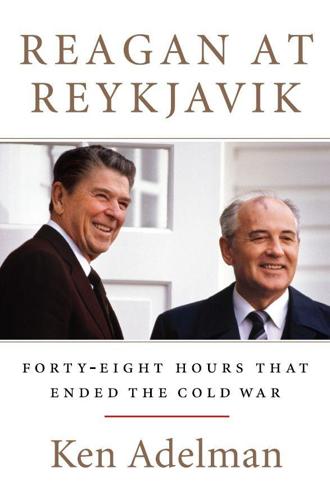
Reagan at Reykjavik: Forty-Eight Hours That Ended the Cold War
by
Ken Adelman
Published 5 May 2014
Kennedy’s secretary of defense, Robert McNamara, shortened the president’s “madness” to MAD as he adopted an approach which assured that every man, woman, and child would live under Damocles’s nuclear sword forevermore. MAD was short for “mutually assured destruction,” an idea that had been around for years before McNamara embraced it. The idea, though appalling, was appealingly simple: if both sides had enough nuclear arms to wipe out the other, then the prospect of mutually assured destruction would render their use irrational and hence preclude such use. As became unmistakable at Reykjavik, the MAD doctrine offended Reagan’s moral sense. It was what George Orwell might have included as a scheme so stupid that only an intellectual could have created it.
…
The treaty says that if someone wants to blow us up, the other will retaliate. Such a regime does not give protection. It limits protection. Why the Hell should the world have to live for another ten years under this threat of nuclear weapons? I fail to see the magic of the ABM regime, whose only assurance is the doctrine of Mutual Assured Destruction. Instead, we should give the world a means of protection that would put the nuclear genie back in his bottle. The next generation would reap the benefits when we are no longer around. The fact that Reagan’s quasi-rant ran contrary to official U.S. policy of every administration since John F.
…
He called the Soviet radar in Siberia “a violation of the ABM Treaty,” and threw in that “the Soviet Union is violating another agreement—the Helsinki Accords they had signed in 1975.” He refrained from mentioning that he had harshly condemned those accords as a symbol of weak-kneed détente when President Gerald R. Ford signed them back then. Reagan repeated what he had told Gorbachev—that the postwar policy of mutually assured destruction was “uncivilized” and should be scrapped. As before, he vastly exaggerated SDI’s promise by claiming that “our scientists . . . [are] convinced it is practical,” so much so that within a very few years, “we can have such a system ready to deploy.” If this optimistically inaccurate statement caused consternation among some American scientists, it must have caused heartburn in Gorbachev, as it confirmed his worst fears.

Army of None: Autonomous Weapons and the Future of War
by
Paul Scharre
Published 23 Apr 2018
It would be the equivalent of ripping out the steering wheel, but being unable to throw it out the window. (Similarly, the Soviets could program their ships to run the blockade without any option for turning back, but there would be no way to prove to the Americans they had done so.) Stanley Kubrick’s 1964 film Dr. Strangelove explores the bizarre logic of deterrence and mutual assured destruction. In the film, the Soviet ambassador explains to an assembled group of American military and political leaders that the Soviet Union has built a “doomsday machine” which, if the Soviet Union is attacked, will automatically launch a massive nuclear counterattack that will destroy humanity.
…
If Perimeter were to falsely detect an event, as the Soviet Oko satellite system did in 1983 when it falsely detected U.S. ICBM launches, or if Soviet leaders were unable to stop the mechanism once it was activated, the system would obliterate humanity. By some accounts, Perimeter is still operational within Russia today. STABILITY-INSTABILITY PARADOX AND THE MAD ROBOT THEORY The logic of mutual assured destruction (MAD) is to make any nuclear attack inherently suicidal. If a retaliatory response is assured, then attacking the enemy is akin to attacking oneself. This dynamic is stabilizing in the sense that it deters both sides from using nuclear weapons. Ironically, though, over time strategists began to worry that too much stability was a bad thing.
…
Returning to the gunslingers in their standoff, if stabilizing measures are those that make it less likely that a gunslinger will draw his weapon, too much stability might encourage other forms of aggression. One might be willing to insult or even steal from the other gunslinger, confident that he wouldn’t draw his gun, since doing so would be suicidal. One response to this paradox is the “madman theory.” As the acronym MAD implies, the logic of mutual assured destruction is fundamentally insane. Only a mad person would launch a nuclear weapon. The principle behind the madman theory, espoused by President Richard Nixon, is to convince the enemy’s leadership that a nation’s leaders are so volatile and irrational that they just might push the button. Mutual suicide or no, one would hesitate to insult a gunslinger with a reputation for rash, even self-destructive acts.
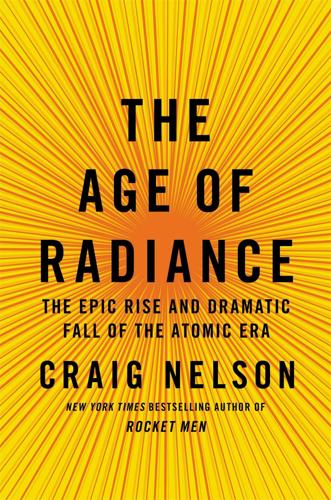
The Age of Radiance: The Epic Rise and Dramatic Fall of the Atomic Era
by
Craig Nelson
Published 25 Mar 2014
Since he wasn’t part of the immense no-thought-but-Trinity rush to successfully engineer the first nuclear weapons, he had time to think, and in March 1944 he tried to convince Vannevar Bush that the nation’s leaders needed to prepare for a future of “armed peace,” with several countries having atomic arsenals able to stalemate each other. Bush, and the others Leo approached, weren’t interested in what seemed so distant, but of course international stalemate would become the Cold War tenet Mutual Assured Destruction—MAD—the seemingly crazy notion that would keep the Cold War cold. The only French resident of the Hill, Françoise Ulam, was nursing her baby when she heard Rabi playing “La Marseillaise” outside her window on his comb. It was August 24, 1944, and Paris had been liberated. While pretending to be a scientist divorced from the politics of the real world in Vichy Paris, Frédéric Joliot made explosives and radio equipment for the Resistance and became president of the National Front.
…
We do this by maintaining a highly reliable ability to inflict unacceptable damage upon any single aggressor or combination of aggressors at any time during the course of a strategic nuclear exchange, even after absorbing a surprise first strike. This can be defined as our assured-destruction capability.” The strategy of Mutual Assured Destruction—MAD—was accompanied by the Pentagon’s Nuclear Utilization Target Selection: NUTS. In the nuclear arms race, “each individual decision along the way seemed rational at the time. But the result was insane,” admitted McNamara. “Each of the decisions, taken by itself, appeared rational or inescapable.
…
He cannot for that reason abandon further efforts. . . . To make no plans for [a nuclear war] would be openly to proclaim our helplessness. It would be psychologically wrong.” Physicist Herbert York: “Let’s put it this way, in more understandable terms. All roads in the strategic equation lead to MAD [Mutual Assured Destruction]. All the other ones . . . are games, are window dressings, and they are window dressing for upmanship. . . . But when you take away all these layers of cloth, at the bottom of the thing, basically, is MAD, and no one likes it.” Nikita Khrushchev’s son, Sergei: “For thousands of years peoples have resolved their conflicts by armed clashes.

I, Warbot: The Dawn of Artificially Intelligent Conflict
by
Kenneth Payne
Published 16 Jun 2021
And Schelling knew all about mixed strategies. Consider the problem of nuclear deterrence. Clearly, this rests on a bluff. If the bluff is called, everyone loses. The essential contradiction at the heart of nuclear deterrence is the threat to obliterate yourself in retaliation to an enemy attack: Mutually Assured Destruction or MAD, as it’s famously known. By the early 1960s, both sides in the Cold War possessed sufficiently large nuclear arsenals that neither could be certain of destroying all the enemy’s weapons in a ‘first strike’ attack against its weapons. It was likely that some weapons would survive a first strike and constitute an ‘assured’ second strike capability.
…
For Schelling, the thing to do is to remove the option of backing down. He suggested that one driver unscrew the steering wheel, hold it aloft, so that the other driver could see it, and then throw it from the car. Now the choice was, literally, out of his hands. There was, however, one big problem—what if the other driver had the same bright idea? Mutually assured destruction would ensue. Both strategies, ‘dancing’ and ‘hot-rods’, were about ‘mind reading’—getting inside the head of the adversary. You could model them formally, via game theory, using probabilities and payoffs. But the big question with both metaphors was how to translate them into international politics.
…
A-10 Warthog abacuses Abbottabad, Pakistan Able Archer (1983) acoustic decoys acoustic torpedoes Adams, Douglas Aegis combat system Aerostatic Corps affective empathy Affecto Afghanistan agency aircraft see also dogfighting; drones aircraft carriers algorithms algorithm creation Alpha biases choreography deep fakes DeepMind, see DeepMind emotion recognition F-117 Nighthawk facial recognition genetic selection imagery analysis meta-learning natural language processing object recognition predictive policing alien hand syndrome Aliens (1986 film) Alpha AlphaGo Altered Carbon (television series) Amazon Amnesty International amygdala Andropov, Yuri Anduril Ghost anti-personnel mines ants Apple Aristotle armour arms races Army Research Lab Army Signal Corps Arnalds, Ólafur ARPA Art of War, The (Sun Tzu) art Artificial Intelligence agency and architecture autonomy and as ‘brittle’ connectionism definition of decision-making technology expert systems and feedback loops fuzzy logic innateness intelligence analysis meta-learning as ‘narrow’ needle-in-a-haystack problems neural networks reinforcement learning ‘strong AI’ symbolic logic and unsupervised learning ‘winters’ artificial neural networks Ashby, William Ross Asimov, Isaac Asperger syndrome Astute class boats Atari Breakout (1976) Montezuma’s Revenge (1984) Space Invaders (1978) Athens ATLAS robots augmented intelligence Austin Powers (1997 film) Australia authoritarianism autonomous vehicles see also drones autonomy B-21 Raider B-52 Stratofortress B2 Spirit Baby X BAE Systems Baghdad, Iraq Baidu balloons ban, campaigns for Banks, Iain Battle of Britain (1940) Battle of Fleurus (1794) Battle of Midway (1942) Battle of Sedan (1940) batwing design BBN Beautiful Mind, A (2001 film) beetles Bell Laboratories Bengio, Yoshua Berlin Crisis (1961) biases big data Bin Laden, Osama binary code biological weapons biotechnology bipolarity bits Black Lives Matter Black Mirror (television series) Blade Runner (1982 film) Blade Runner 2049 (2017 film) Bletchley Park, Buckinghamshire blindness Blunt, Emily board games, see under games boats Boden, Margaret bodies Boeing MQ-25 Stingray Orca submarines Boolean logic Boston Dynamics Bostrom, Nick Boyd, John brain amygdala bodies and chunking dopamine emotion and genetic engineering and language and mind merge and morality and plasticity prediction and subroutines umwelts and Breakout (1976 game) breathing control brittleness brute force Buck Rogers (television series) Campaign against Killer Robots Carlsen, Magnus Carnegie Mellon University Casino Royale (2006 film) Castro, Fidel cat detector centaur combination Central Intelligence Agency (CIA) centre of gravity chaff Challenger Space Shuttle disaster (1986) Chauvet cave, France chemical weapons Chernobyl nuclear disaster (1986) chess centaur teams combinatorial explosion and creativity in Deep Blue game theory and MuZero as toy universe chicken (game) chimeras chimpanzees China aircraft carriers Baidu COVID-19 pandemic (2019–21) D-21 in genetic engineering in GJ-11 Sharp Sword nuclear weapons surveillance in Thucydides trap and US Navy drone seizure (2016) China Lake, California Chomsky, Noam choreography chunking Cicero civilians Clarke, Arthur Charles von Clausewitz, Carl on character on culmination on defence on genius on grammar of war on materiel on nature on poker on willpower on wrestling codebreaking cognitive empathy Cold War (1947–9) arms race Berlin Crisis (1961) Cuban Missile Crisis (1962) F-117 Nighthawk Iran-Iraq War (1980–88) joint action Korean War (1950–53) nuclear weapons research and SR-71 Blackbird U2 incident (1960) Vienna Summit (1961) Vietnam War (1955–75) VRYAN Cole, August combinatorial creativity combinatorial explosion combined arms common sense computers creativity cyber security games graphics processing unit (GPU) mice Moore’s Law symbolic logic viruses VRYAN confirmation bias connectionism consequentialism conservatism Convention on Conventional Weapons ConvNets copying Cormorant cortical interfaces cost-benefit analysis counterfactual regret minimization counterinsurgency doctrine courageous restraint COVID-19 pandemic (2019–21) creativity combinatorial exploratory genetic engineering and mental disorders and transformational criminal law CRISPR, crows Cruise, Thomas Cuban Missile Crisis (1962) culmination Culture novels (Banks) cyber security cybernetics cyborgs Cyc cystic fibrosis D-21 drones Damasio, Antonio dance DARPA autonomous vehicle research battlespace manager codebreaking research cortical interface research cyborg beetle Deep Green expert system programme funding game theory research LongShot programme Mayhem Ng’s helicopter Shakey understanding and reason research unmanned aerial combat research Dartmouth workshop (1956) Dassault data DDoS (distributed denial-of-service) dead hand system decision-making technology Deep Blue deep fakes Deep Green DeepMind AlphaGo Atari playing meta-learning research MuZero object recognition research Quake III competition (2019) deep networks defence industrial complex Defence Innovation Unit Defence Science and Technology Laboratory defence delayed gratification demons deontological approach depth charges Dionysus DNA (deoxyribonucleic acid) dodos dogfighting Alpha domains dot-matrix tongue Dota II (2013 game) double effect drones Cormorant D-21 GJ-11 Sharp Sword Global Hawk Gorgon Stare kamikaze loitering munitions nEUROn operators Predator Reaper reconnaissance RQ-170 Sentinel S-70 Okhotnik surveillance swarms Taranis wingman role X-37 X-47b dual use technology Eagleman, David early warning systems Echelon economics Edge of Tomorrow (2014 film) Eisenhower, Dwight Ellsberg, Daniel embodied cognition emotion empathy encryption entropy environmental niches epilepsy epistemic community escalation ethics Asimov’s rules brain and consequentialism deep brain stimulation and deontological approach facial recognition and genetic engineering and golden rule honour hunter-gatherer bands and identity just war post-conflict reciprocity regulation surveillance and European Union (EU) Ex Machina (2014 film) expert systems exploratory creativity extra limbs Eye in the Sky (2015 film) F-105 Thunderchief F-117 Nighthawk F-16 Fighting Falcon F-22 Raptor F-35 Lightning F/A-18 Hornet Facebook facial recognition feedback loops fighting power fire and forget firmware 5G cellular networks flow fog of war Ford forever wars FOXP2 gene Frahm, Nils frame problem France Fukushima nuclear disaster (2011) Future of Life Institute fuzzy logic gait recognition game theory games Breakout (1976) chess, see chess chicken Dota II (2013) Go, see Go Montezuma’s Revenge (1984) poker Quake III (1999) Space Invaders (1978) StarCraft II (2010) toy universes zero sum games gannets ‘garbage in, garbage out’ Garland, Alexander Gates, William ‘Bill’ Gattaca (1997 film) Gavotti, Giulio Geertz, Clifford generalised intelligence measure Generative Adversarial Networks genetic engineering genetic selection algorithms genetically modified crops genius Germany Berlin Crisis (1961) Nuremburg Trials (1945–6) Russian hacking operation (2015) World War I (1914–18) World War II (1939–45) Ghost in the Shell (comic book) GJ-11 Sharp Sword Gladwell, Malcolm Global Hawk drone global positioning system (GPS) global workspace Go (game) AlphaGo Gödel, Kurt von Goethe, Johann golden rule golf Good Judgment Project Google BERT Brain codebreaking research DeepMind, see DeepMind Project Maven (2017–) Gordievsky, Oleg Gorgon Stare GPT series grammar of war Grand Challenge aerial combat autonomous vehicles codebreaking graphics processing unit (GPU) Greece, ancient grooming standard Groundhog Day (1993 film) groupthink guerilla warfare Gulf War First (1990–91) Second (2003–11) hacking hallucinogenic drugs handwriting recognition haptic vest hardware Harpy Hawke, Ethan Hawking, Stephen heat-seeking missiles Hebrew Testament helicopters Hellfire missiles Her (2013 film) Hero-30 loitering munitions Heron Systems Hinton, Geoffrey Hitchhiker’s Guide to the Galaxy, The (Adams) HIV (human immunodeficiency viruses) Hoffman, Frank ‘Holeshot’ (Cole) Hollywood homeostasis Homer homosexuality Hongdu GJ-11 Sharp Sword honour Hughes human in the loop human resources human-machine teaming art cyborgs emotion games King Midas problem prediction strategy hunter-gatherer bands Huntingdon’s disease Hurricane fighter aircraft hydraulics hypersonic engines I Robot (Asimov) IARPA IBM identity Iliad (Homer) image analysis image recognition cat detector imagination Improbotics nformation dominance information warfare innateness intelligence analysts International Atomic Energy Agency International Criminal Court international humanitarian law internet of things Internet IQ (intelligence quotient) Iran Aegis attack (1988) Iraq War (1980–88) nuclear weapons Stuxnet attack (2010) Iraq Gulf War I (1990–91) Gulf War II (2003–11) Iran War (1980–88) Iron Dome Israel Italo-Turkish War (1911–12) Jaguar Land Rover Japan jazz JDAM (joint directed attack munition) Jeopardy Jobs, Steven Johansson, Scarlett Johnson, Lyndon Joint Artificial Intelligence Center (JAIC) de Jomini, Antoine jus ad bellum jus in bello jus post bellum just war Kalibr cruise missiles kamikaze drones Kasparov, Garry Kellogg Briand Pact (1928) Kennedy, John Fitzgerald KGB (Komitet Gosudarstvennoy Bezopasnosti) Khrushchev, Nikita kill chain King Midas problem Kissinger, Henry Kittyhawk Knight Rider (television series) know your enemy know yourself Korean War (1950–53) Kratos XQ-58 Valkyrie Kubrick, Stanley Kumar, Vijay Kuwait language connectionism and genetic engineering and natural language processing pattern recognition and semantic webs translation universal grammar Law, Jude LeCun, Yann Lenat, Douglas Les, Jason Libratus lip reading Litvinenko, Alexander locked-in patients Lockheed dogfighting trials F-117 Nighthawk F-22 Raptor F-35 Lightning SR-71 Blackbird logic loitering munitions LongShot programme Lord of the Rings (2001–3 film trilogy) LSD (lysergic acid diethylamide) Luftwaffe madman theory Main Battle Tanks malum in se Manhattan Project (1942–6) Marcus, Gary Maslow, Abraham Massachusetts Institute of Technology (MIT) Matrix, The (1999 film) Mayhem McCulloch, Warren McGregor, Wayne McNamara, Robert McNaughton, John Me109 fighter aircraft medical field memory Merkel, Angela Microsoft military industrial complex Mill, John Stuart Milrem mimicry mind merge mind-shifting minimax regret strategy Minority Report (2002 film) Minsky, Marvin Miramar air base, San Diego missiles Aegis combat system agency and anti-missile gunnery heat-seeking Hellfire missiles intercontinental Kalibr cruise missiles nuclear warheads Patriot missile interceptor Pershing II missiles Scud missiles Tomahawk cruise missiles V1 rockets V2 rockets mission command mixed strategy Montezuma’s Revenge (1984 game) Moore’s Law mosaic warfare Mueller inquiry (2017–19) music Musk, Elon Mutually Assured Destruction (MAD) MuZero Nagel, Thomas Napoleon I, Emperor of the French Napoleonic France (1804–15) narrowness Nash equilibrium Nash, John National Aeronautics and Space Administration (NASA) National Security Agency (NSA) National War College natural language processing natural selection Nature navigation computers Nazi Germany (1933–45) needle-in-a-haystack problems Netflix network enabled warfare von Neumann, John neural networks neurodiversity nEUROn drone neuroplasticity Ng, Andrew Nixon, Richard normal accident theory North Atlantic Treaty Organization (NATO) North Korea nuclear weapons Cuban Missile Crisis (1962) dead hand system early warning systems F-105 Thunderchief and game theory and Hiroshima and Nagasaki bombings (1945) Manhattan Project (1942–6) missiles Mutually Assured Destruction (MAD) second strike capability submarines and VRYAN and in WarGames (1983 film) Nuremburg Trials (1945–6) Obama, Barack object recognition Observe Orient Decide and Act (OODA) offence-defence balance Office for Naval Research Olympic Games On War (Clausewitz), see Clausewitz, Carl OpenAI optogenetics Orca submarines Ottoman Empire (1299–1922) pain Pakistan Palantir Palmer, Arnold Pandemonium Panoramic Research Papert, Seymour Parkinson’s disease Patriot missile interceptors pattern recognition Pearl Harbor attack (1941) Peloponnesian War (431–404 BCE) Pentagon autonomous vehicle research codebreaking research computer mouse development Deep Green Defence Innovation Unit Ellsberg leaks (1971) expert system programme funding ‘garbage in, garbage out’ story intelligence analysts Project Maven (2017–) Shakey unmanned aerial combat research Vietnam War (1955–75) perceptrons Perdix Pershing II missiles Petrov, Stanislav Phalanx system phrenology pilot’s associate Pitts, Walter platform neutrality Pluribus poker policing polygeneity Portsmouth, Hampshire Portuguese Man o’ War post-traumatic stress disorder (PTSD) Predator drones prediction centaur teams ‘garbage in, garbage out’ story policing toy universes VRYAN Prescience principles of war prisoners Project Improbable Project Maven (2017–) prosthetic arms proximity fuses Prussia (1701–1918) psychology psychopathy punishment Putin, Vladimir Pyeongchang Olympics (2018) Qinetiq Quake III (1999 game) radar Rafael RAND Corporation rational actor model Rawls, John Re:member (Arnalds) Ready Player One (Cline) Reagan, Ronald Reaper drones reciprocal punishment reciprocity reconnaissance regulation ban, campaigns for defection self-regulation reinforcement learning remotely piloted air vehicles (RPAVs) revenge porn revolution in military affairs Rid, Thomas Robinson, William Heath Robocop (1987 film) Robotics Challenge robots Asimov’s rules ATLAS Boston Dynamics homeostatic Shakey symbolic logic and Rome Air Defense Center Rome, ancient Rosenblatt, Frank Royal Air Force (RAF) Royal Navy RQ-170 Sentinel Russell, Stuart Russian Federation German hacking operation (2015) Litvinenko murder (2006) S-70 Okhotnik Skripal poisoning (2018) Ukraine War (2014–) US election interference (2016) S-70 Okhotnik SAGE Said and Done’ (Frahm) satellite navigation satellites Saudi Arabia Schelling, Thomas schizophrenia Schwartz, Jack Sea Hunter security dilemma Sedol, Lee self-actualisation self-awareness self-driving cars Selfridge, Oliver semantic webs Shakey Shanahan, Murray Shannon, Claude Shogi Silicon Valley Simon, Herbert Single Integrated Operations Plan (SIOP) singularity Siri situational awareness situationalist intelligence Skripal, Sergei and Yulia Slaughterbots (2017 video) Slovic, Paul smartphones Smith, Willard social environments software Sophia Sorcerer’s Apprentice, The (Goethe) South China Sea Soviet Union (1922–91) aircraft Berlin Crisis (1961) Chernobyl nuclear disaster (1986) Cold War (1947–9), see Cold War collapse (1991) Cuban Missile Crisis (1962) early warning systems Iran-Iraq War (1980–88) Korean War (1950–53) nuclear weapons radar technology U2 incident (1960) Vienna Summit (1961) Vietnam War (1955–75) VRYAN World War II (1939–45) Space Invaders (1978 game) SpaceX Sparta Spike Firefly loitering munitions Spitfire fighter aircraft Spotify Stanford University Stanley Star Trek (television series) StarCraft II (2010 game) stealth strategic bombing strategic computing programme strategic culture Strategy Robot strategy Strava Stuxnet sub-units submarines acoustic decoys nuclear Orca South China Sea incident (2016) subroutines Sukhoi Sun Tzu superforecasting surveillance swarms symbolic logic synaesthesia synthetic operation environment Syria Taliban tanks Taranis drone technological determinism Tempest Terminator franchise Tesla Tetlock, Philip theory of mind Threshold Logic Unit Thucydides TikTok Tomahawk cruise missiles tongue Top Gun (1986 film) Top Gun: Maverick (2021 film) torpedoes toy universes trade-offs transformational creativity translation Trivers, Robert Trump, Donald tumours Turing, Alan Twitter 2001: A Space Odyssey (1968 film) Type-X Robotic Combat Vehicle U2 incident (1960) Uber Uexküll, Jacob Ukraine ultraviolet light spectrum umwelts uncanny valley unidentified flying objects (UFOs) United Kingdom AI weapons policy armed force, size of Battle of Britain (1940) Bletchley Park codebreaking Blitz (1940–41) Cold War (1947–9) COVID-19 pandemic (2019–21) DeepMind, see DeepMind F-35 programme fighting power human rights legislation in Litvinenko murder (2006) nuclear weapons principles of war Project Improbable Qinetiq radar technology Royal Air Force Royal Navy Skripal poisoning (2018) swarm research wingman concept World War I (1914–18) United Nations United States Afghanistan War (2001–14) Air Force Army Research Lab Army Signal Corps Battle of Midway (1942) Berlin Crisis (1961) Bin Laden assassination (2011) Black Lives Matter protests (2020) centaur team research Central Intelligence Agency (CIA) Challenger Space Shuttle disaster (1986) Cold War (1947–9), see Cold War COVID-19 pandemic (2019–21) Cuban Missile Crisis (1962) culture cyber security DARPA, see DARPA Defense Department drones early warning systems F-35 programme Gulf War I (1990–91) Gulf War II (2003–11) IARPA Iran Air shoot-down (1988) Korean War (1950–53) Manhattan Project (1942–6) Marines Mueller inquiry (2017–19) National Security Agency National War College Navy nuclear weapons Office for Naval Research Patriot missile interceptor Pearl Harbor attack (1941) Pentagon, see Pentagon Project Maven (2017–) Rome Air Defense Center Silicon Valley strategic computing programme U2 incident (1960) Vienna Summit (1961) Vietnam War (1955–75) universal grammar Universal Schelling Machine (USM) unmanned aerial vehicles (UAVs), see drones unsupervised learning utilitarianism UVision V1 rockets V2 rockets Vacanti mouse Valkyries Van Gogh, Vincent Vietnam War (1955–75) Vigen, Tyler Vincennes, USS voice assistants VRYAN Wall-e (2008 film) WannaCry ransomware War College, see National War College WarGames (1983 film) warrior ethos Watson weapon systems WhatsApp Wiener, Norbert Wikipedia wingman role Wittgenstein, Ludwig World War I (1914–18) World War II (1939–45) Battle of Britain (1940) Battle of Midway (1942) Battle of Sedan (1940) Bletchley Park codebreaking Blitz (1940–41) Hiroshima and Nagasaki bombings (1945) Pearl Harbor attack (1941) radar technology V1 rockets V2 rockets VRYAN and Wrangham, Richard Wright brothers WS-43 loitering munitions Wuhan, China X-37 drone X-drone X-rays YouTube zero sum games

Stealth
by
Peter Westwick
Published 22 Nov 2019
The advantage had shifted decisively to the defense.23 Even as Soviet air defenses increasingly imperiled aircraft, US military strategy was putting greater emphasis on strike aircraft. As the US and the Soviet Union built up arsenals of nuclear-tipped missiles through the 1960s, it became increasingly clear that a thermonuclear war would mean civilizational suicide—a strategic conundrum captured by the term “mutual assured destruction,” or MAD. Meanwhile, the US had relied on smaller, tactical nuclear weapons to counter the Soviet advantage in conventional arms. American planners assumed that the Soviets would flood the plains of Western Europe with a hundred tank and infantry divisions. NATO ground forces might be able to halt the initial attack but would be overwhelmed by the following waves.24 This was the challenge facing American and NATO strategists by the 1970s.
…
An influential architect of nuclear strategy at the RAND Corporation, Wohlstetter had then taught at the University of Chicago, from where his intellectual progeny propagated the neoconservative movement, and he now ran his own consulting firm, called Pan Heuristics.29 Wohlstetter had chaired the LRRD seminars of the early 1970s, and now, a decade later, he developed the ideas they had introduced. Wohlstetter believed that the strategic and political landscape had changed, along with the technology, since the development of nuclear doctrine.30 For two decades the US had relied primarily on the strategy of mutual assured destruction, which assumed that the American threat to meet any Soviet assault with a thermonuclear apocalypse would deter the Soviets from attacking. But the vast growth of nuclear arsenals on both sides—the US and Soviet Union by 1980 had well over fifty thousand nuclear warheads between them—had rendered nuclear deterrence “increasingly incredible” in the literal sense.
…
See also Skunk Works A-12 model from, 38f ADP of, 34 aerodynamics used by, 133 aircraft design by, ix–xi arguments of, xii computers used by, xii–xiii, 48, 70 contest entered by, 28 in design competition, xi, 29, 53 design proposal of, 29 engine builders for, 152 financial acumen of, 32 flat facets from, 54, 134f flying wing of, 134–136, 134f full-scale models tested of, 76–81 internal discretionary funds used by, 197–198 Johnson hired by, 32–33 military contracts flowing to, 31 Northrop bailed out by protest of, 156 P-38 Lightning of, 31 production manager of, 107–108 prototype airplanes of, 83 radar focus of, 192 radar signature reduction and, 37–39, 76–77 Scherrer’s job for, 19–20, 45, 146 Sea Shadow built by, 184 Stealth aircraft of, 39, 185, 189 Stealth bomber design of, 146 wing’s leading edge of, 80–81 XST contest with, 70–72, 81 Lockheed Martin, 185 Locus, Stan, 44, 63, 65, 69 lofting, 137–138, 171 logarithmic decibel scale, 78 long-range R&D study (LRRD), 23–24, 118, 123 Los Alamos, CA, 70 Los Angeles, CA, 21 Loschke, Robert, 50, 70–72, 86–87, 105f, 140 Loughead, Allan, 31 Loughead, Malcolm, 31 Loughead Aircraft, 55 Lovick, Ed, 38–39, 47 low-altitude flight, 165–166 low-frequency threat, 138 low-probability-of-intercept radar, 125–126 low-radar-cross-section aircraft design, 29, 211n.17 LRRD. See long-range R&D LRRD II study, 120 Luckiesh, Matthew, 1–2 Macbeth (Shakespeare), 1 machine shops, close-tolerance, 14 “The Machine-Tooled Happyland” (Bradbury), 18 MAD. See mutual assured destruction Mailer, Norman, 16 make-work projects, 111–112 Manhattan Project, 3, 112–113 Marconi, Guglielmo, 2–3 Mark, Hans, 99 Martin, Albert, Jr., 16–17 Martin, Ed, 44–45, 49–51 Martin Marietta, 186–187 Massachusetts Institute of Technology (MIT), 4 materials. See also radar-absorbing materials for B-2 bomber, 171–172 composite, 172 Northrop requiring R&D on, 172 shortage of, 102–104 McDonnell Douglas, 25, 211n.17, 29 McWilliams, Carey, 14–15 mergers, in aerospace industry, 186–187 metallic chaff, 8 “Method of Edge Waves in the Physical Theory of Diffraction,” 42 microwave region, 3 military aircraft, 60, 75 contracts, 31 -industrial complex, xv, 196–197 technologies, xi, 23 Military Reform Caucus, 121 military-technical revolution (MTR), 116–118, 194 miniature remotely piloted vehicle (Mini-RPV), 24–26 Ministry of International Trade and Industry (MITI), 197 Minuteman missiles, 143, 152 missiles ballistic, 63–64, 116 cruise, 127, 138, 144 defense, 64–66, 193 Minuteman, 143, 152 MX, 174 Polaris submarine, 32 projects, 23 SA-1 and SA-2, 5 Snark, 62–64, 62f submarine-launched, 144 surface-to-air, 5 Trident, 174 TSSAM, 184 Mitchell, Sam, 93–94 MITI.
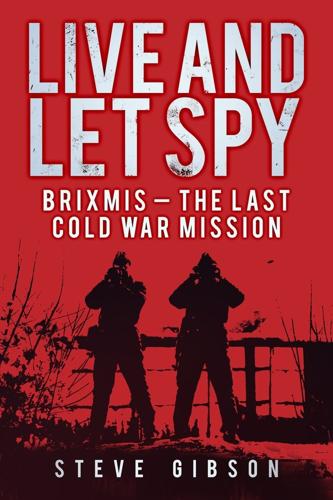
Live and Let Spy: BRIXMIS - the Last Cold War Mission
by
Steve Gibson
Published 2 Mar 2012
For those wanting to read an action-based first-hand account of ‘licensed’ spying operations behind enemy lines, the story remains unchanged. For those who want a case-study in intelligence’s fundamental relationship with power and politics, then the additional new chapter – ‘Reflections’ – charts a route from the mutually assured destruction strategy of the early Cold War years to the contemporary context that Western nations are constructing for themselves post-1989. This book was originally conceived by Stevyn Gibson as a personal story. It was intended as an individual account of a private experience set down for the record.
…
If ever there was a delicate moment in the Cold War then this was it – the last bit. The Berlin airlift in 1948–9, the Bay of Pigs and U2 debacles in 1961 (not to mention the Wall itself), the Cuban Missile crisis in 1962 (itself uniquely allied to the Berlin crisis at the time), the birth of the concept of Mutually Assured Destruction, Philby, Burgess, Blake and Maclean, not to mention a host of less infamous traitors, the invasions of Hungary and the near invasion of Poland in 1956, Czechoslovakia in 1968, Afghanistan in 1979 and all the other incidents that went to make the Cold War, each in their own way provided a degree of worldwide tension, reaction and threat.
…
However, it would have taken a clever man in the 1980s to spot the Soviets panting for breath, a brave one to broadcast the view and probably a certifiable one to predict the end of communism, let alone plan new defence budgets and strategies accordingly. The superpowers and their respective blocs had taken themselves to the brink of mutually assured destruction and back in the space of forty-five years. If you had set out to invent the Cold War you couldn’t have done it. The whole thing was absurd. If it is conceivable to summarise the rationale behind the Cold War then in my opinion it was very simply a lack of trust. That the Mission had played a very important role in bringing us back from the brink of disaster by building confidences and trust was clear and very rewarding to know.
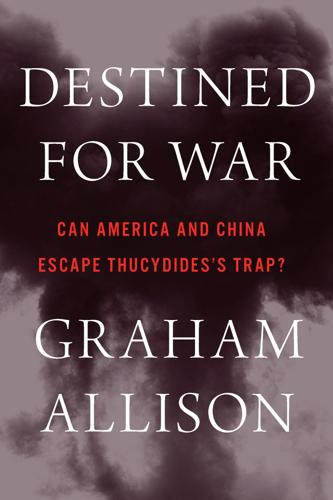
Destined for War: America, China, and Thucydides's Trap
by
Graham Allison
Published 29 May 2017
Understandably and repeatedly, this has led them to think again.59 Clue 7: MAD really does make all-out war madness. After exploding its first bomb in 1949, the Soviet Union rapidly developed a nuclear arsenal so substantial and sophisticated that it created what nuclear strategists recognized as mutual assured destruction: MAD. This described a condition in which neither the US nor the USSR could be sure of destroying its opponent’s arsenal with a nuclear first strike before the enemy could launch a fatal nuclear response. Under such conditions, one state’s decision to kill another is simultaneously a choice to commit national suicide.
…
Four “mega-threats” loom above all: nuclear Armageddon; nuclear anarchy; global terrorism, especially as threatened by Islamic jihadism; and climate change. In confronting each of these, the vital national interests the two powers share are much greater than those that divide them. Because of the inescapable logic of mutual assured destruction, if the US and China were to stumble into a war in which their full nuclear arsenals were launched, both nations would be erased from the map. Thus their most vital interest is to avoid such a war. Moreover, they must find combinations of compromise and constraint that avoid repeated games of chicken that could inadvertently lead to this dreaded outcome.
…
For decades after becoming a nuclear power in 1964, Beijing maintained a small arsenal of silo-based ICBMs, which left it vulnerable to an adversary’s first strike. Since the mid-1990s it has been deploying more survivable nuclear forces, most recently road-mobile and submarine-launched ballistic missiles. As a result, the US has been forced to accept a condition of “mutual assured destruction” between China and the United States, similar to the one that existed with the Soviet Union during the Cold War. This was reflected in the 2010 US Nuclear Posture Review’s assertion that the US would not take any action that could negatively affect “the stability of our nuclear relationships with Russia or China.”

The Secret War Between Downloading and Uploading: Tales of the Computer as Culture Machine
by
Peter Lunenfeld
Published 31 Mar 2011
The family lore is that my parents stayed up all that night in terror for themselves and for me. All throughout my college years, I would occasionally look over my shoulder to see if there was a vapor trail in the sky pointing the way to atomic apocalypse. The history of the bomb is imprinted in our deepest reptilian brain; it is a history of fear, mutually assured destruction, and a blinding light followed by darkness. xi INTRODUCTION If the first sibling came out as the biggest bully that the world had ever seen, what of the next one to emerge on the world stage? I may not be the best person to answer this question. A neighbor of mine wrote one of the first antitelevision books, The Plug-in Drug, and for years my parents didn’t even allow me to watch the tube.
…
All hyperlinks current as of October 1, 2010 197 INDEX Adobe Systems, 55 Adstar, 177 Advanced Research Projects Agency (ARPA), 152, 158 Advertisement, 184nn12,15 bespoke futures and, 107 culture machine and, 175–177 stickiness and, 23, 31 unimodernism and, 52, 57, 59 Affordances, 183n4 bespoke futures and, 121, 124, 129, 136 stickiness and, 16–17, 24, 28–35 unimodernism and, 68, 75 Web n.0 and, 80–82, 90 Afghanistan, 100 African National Congress, 113 AfterSherrieLevine.com, 41–42 Agee, James, 40–42 Age of Aquarius, 159 Agribusiness, 4, 10 Airplanes, xiii Alessi, 64 Algorithms, 46, 144, 174–177 Allen, Paul, 164 “All You Need Is Love” (Beatles), 62 Al-Muhajiroun, 134 Al-Qaeda, 134 Altair personal computer, 161, 164 Alto personal computer, 162 Amazing Stories (comic book), 108–110 Amazon, 68, 99, 145 Amis, Kinsley, 32 Animation, 55–56, 58, 110, 118 Antiglobalization activists, 98 AOL, 9, 53, 99 Apartheid, 112–113 Apple, 144, 163–167, 172, 186n12 Appropriate scale, 57 Aquarians, 24, 152, 159, 168–169 description of term, xv Engelbart and, 144, 157–167 Kay and, 144, 157, 160–167, 195nn16,17 Nelson and, 168 networked computers and, xv Sutherland and, 160–161 Arcades, 15, 71 Architectural Forum magazine, 84 Ariadne, 11 Arnold, Matthew, 14 Ars Electronica, 169–170 Art nouveau, 44, 66 “As We May Think” (Bush), 149, 157 AT&T, 144, 195n10 Atari, 165 Atlantic Monthly, 149 Atomic age, 146 as catalyst, xi Cuban Missile Crisis and, xi description of, xv emergence of, xi–xii 198 Atomic age (continued) Hiroshima and, 100–101 Manhattan Project and, 150 mutually assured destruction and, xi terrorism and, 100–101 Avant-gardism, 31, 44, 61, 117–120, 133 Babbage, Charles, 149 Bakri Muhammad, Omar, 134–135 Bali, 100 Ballmer, Steve, 164 Balzac, Honoré de, 44 Banham, Reyner, 10 Barr, Alfred, 117–118 Bauhaus, 117 BBC, 10 Beatles, 54–55, 62 Bebop, 25–27 Beirut, Michael, 102 Bellamy, Edward, 108 Benjamin, Walter, 88 Berg, Alban, 45 Berlin Wall, xvi, 85, 97, 99, 104 Bernays, Edward L., 123–124 Berners-Lee, Tim, 144, 167–169, 175 Bespoke futures adopting future as client and, 110–113 anticipated technology and, 108–110 crafting, 113–116 design and, 102, 105–106, 110–111, 115–116, 119–120, 124–125, 137 downloading and, 97, 123, 132, 138 dynamic equilibrium and, 117–120 89/11 and, xvi, 97, 100–102, 105, 130 Enlightenment and, xvi, 129–139 information and, 98, 100–101, 124–126 lack of vision and, 106–108 markets and, 97–104, 118, 120, 127, 131–132, 137–138 MaSAI (Massively Synchronous Applications of the Imagination) and, xvi, 112, 120–123, 127, 193n32 199 modernists and, 105–108 mutants and, 105–108 networks and, 98–101, 108, 112–113, 116, 119–126, 133, 137 New Economy and, 97, 99, 104, 131, 138, 144–145, 190n3 participation and, 98–99, 120–121, 129 plutopian meliorism and, xvi, 127–129, 133, 137–138 prosumers and, 120–121 reperceiving and, 112–113 R-PR (Really Public Relations) and, 123–127 scenario planning and, 111–119, 191n19, 192n20 simulation and, 98, 121, 124, 126–127 strange attractors and, xvi, 117–120, 192n27 technology and, 98–104, 107–113, 116, 119, 125–127, 131–133, 136–139 television and, 101, 108, 124, 127–129, 133–137 unfinish and, 127–129, 136 uploading and, 97, 120–123, 128–129, 132 Best use, 10, 13–15, 138 Bezos, Jeff, 145 Bible, 28, 137 BitTorrent, 92 Black Album, The (Jay Z), 55 Blade Runner (Scott), 107 Blogger, 177 Blogosphere, xvii bespoke futures and, 101 culture machine and, 175, 177 Facebook and, 81, 145, 180n2 stickiness and, 30, 34 Twitter and, 34, 180n2 unimodernism and, 49, 68 Web n.0 and, 80, 92–93 INDEX Bohème, La (Puccini), 61 Boing Boing magazine, 68–69 Bollywood, 62 Bourgeoisie, 31 Bowie, David, 62 Braque, Georges, 93 Breuer, Marcel, 45 Brillat-Savarin, Jean Anthèlme, 3 Brin, Sergey, 144, 174–176 Broadband technology, 9, 57 Brownian motion, 49 Burroughs, Allie Mae, 40–42 Burroughs, William, 52 Bush, Vannevar, 52, 194n6 culture machine and, 144, 147–152, 157 Engelbart and, 157 Memex and, 108, 149–151 Oppenheimer and, 150 systems theory and, 151 war effort and, 150–151 Business 2.0 magazine, 145 C3I , 146–147 Cabrini Green, 85 Calypso, 25–27 Cambodia, 107 Cambridge, 17, 36 “Can-Can” (“Orpheus in the Underworld”) (Offenbach), 62 Capitalism, 4, 13 bespoke futures and, 97–100, 103–105 Sears and, 103–105 stickiness and, 13 unimodernism and, 66, 75 Web n.0 and, 90 Capitulationism, 7, 24, 30, 182n1 Carnegie, Andrew, 166 Casablanca (film), 90 Cassette tapes, 2 CATIA 3–D software, 39 Cell phones, xiii, xvii, 17, 23, 42, 53, 56, 76, 101 Chaos theory, 117–120 Chaplin, Charlie, 45 Cheney, Dick, 99 China, 104, 107 Christians, 135 Cicero, 47 Cinema, 8, 10 micro, 56–60 stickiness and, 15 unimodernism and, 47, 52, 56–60, 63, 71 Clarke, Arthur C., 174 CNN, 58 Cobain, Kurt, 62 Code breaking, 17–18 Cold war, 101 Cole, Nat King, 62 Commercial culture, 4–5, 8 bespoke futures and, 98, 102, 108, 120, 132–134 culture machine and, 153–156, 167, 170, 172, 175–177 copyright and, 54, 88–95, 123, 164, 166, 173, 177 Mickey Mouse Protection Act and, 90 open source and, 36, 61, 69, 74–75, 91–92, 116, 121–126, 144, 170– 173, 177, 189n12 propaganda and, 124 scenario planning and, 111–119 stickiness and, 23, 28–31, 37 unimodernism and, 41, 69 Web n.0 and, 82–86 Commercial syndrome, 85–86 Communism, 97–98, 103 Compact discs (CDs), 2, 48, 53 Complex City (Simon), 39 “Computable Numbers, On” (Turing), 18 Computer Data Systems, 145 Computers, xi.
…
Intergalactic Computer Network and, 108, 152, 168 Machine Histories, 64 Macintosh computer, 165–167 Macrotelevision, 56–60 Madonna, 63 Madrid, 100, 130 Mahabharata, 28 MAKE magazine, 68–69 MAKER Faires, 68–69 Manchester Mark I computer, 18 “Man-Computer Symbiosis” (Licklider), 151 Mandela, Nelson, 113 Mandiberg, Michael, 41–42 Manhattan Project, 150 Manual labor, 3 Many Eyes, 126, 193n37 Mao Zedong, 86 Marinetti, Filippo Tommaso, 44 Markets bespoke futures and, 97–104, 118, 207 INDEX Markets (continued) 120, 127, 131–132, 137–138 capitalism and, 13, 66, 75, 97–100, 104–105 (see also Commercial culture) culture machine and, 156, 161–167, 173 empowerment and, 8 entrepreneurs and, 99, 109, 156–157, 174 FIRE, 99–100 Global Business Network (GBN) and, 113, 115, 191n18 Great Depression and, 107 Greed and, 100 Internet television and, 9 mass culture and, 184n16 NASDAQ, 99 New Economy and, 97, 99, 104, 131, 138, 144–145, 190n3 prosumers and, 120–121 retail, 103–105 scenario planning and, 111–119, 191n19, 192n20 September 11, 2001 and, 99–101, 130 Slow Food and, 5–6 social campaigns and, 190n8 stickiness and, 13, 16, 24, 30–33, 37 technofabulism and, 99–100 textile, 11 unimodernism and, 45, 48, 58–59, 71, 75 Web n.0 and, 81, 83, 86, 90 Martha Stewart Living magazine, 69 MaSAI (Massively Public Applications of the Imagination), xvi, 112, 120–123, 127, 193nn32 Masai tribe, 193n32 Mashing, 25, 54–55, 57, 74 Massachusetts Institute of Technology (MIT), 71, 117, 144, 148, 151 Matrix, The (film series), 39 Mau, Bruce, 55–56, 102, 190n8 Mauchly, John, 148 McDonald’s, 5 McLuhan, Marshall, 2, 14, 116 Meaningfulness, xvi, 173 bespoke futures and, 119, 123, 128– 129, 133 categorization of, 29–30 defining, 27–29 disrupting flow and, 23–24 Enlightenment and, 129–139 play and, 32–34 power and, 32–34 stickiness and, 14, 17, 20 (see also Stickiness) toggling and, 33–34, 43, 102, 197n30 tweaking and, 32–35, 185nn22,23 unimodernism and, 42, 67, 77 uploading and, xvi, 29 Web n.0 and, 79 Mechanical calculator, 149 Mechanization, 44–45 Medium specificity, 56–57 Meliorism, xvi, 127–129, 133, 137–138 Melodium label, 27 Memex, 108, 149–151 Memory, 46–47, 60, 67, 71, 109, 149, 194nn1,6 Metcalfe, Bob, 86–87 Metro Pictures gallery, 41 Michnik, Adam, 104 Mickey Mouse, 65, 88–90 Mickey Mouse Protection Act, 90 Microcinema, 56–60 Microfilm, 149–150 Microsoft, 144–145, 163–166, 172–173, 175, 196n21 Middle-class, 44 Mindfulness, 77, 79, 183n6 bespoke futures and, 123, 129 capitalism and, 4, 13, 66, 75, 90, 103–105 208 INDEX Mindfulness (continued) disrupting flow and, 23–24 info-triage and, xvi, 20–23, 121, 132, 143 stickiness and, 14, 17, 20–24, 27–29, 42 Mobility, 81–82, 128 Modders, 69–70 “Model B32” (Breuer), 45 Modernism, 36–37, 105–108 Modern Times (film), 45 Moore, Gordon, 156 Moore’s law, 156, 195n13 Morpheus, 92 Moses, Robert, 84 Motorola, 116 Moulin Rouge (Luhrmann), 60–63 Mouse, 158–159 MP3s, 2, 27 MS-DOS, 165–166 MTV, 31, 63 Murakami, Takashi, 49 Murger, Henri, 61 Musée du quai Branly, 66 Museum of Modern Art (MOMA), 42, 117 Music bebop, 25–27 calypso, 35–37 hip-hop, 53–54, 61 jazz, 25–27, 160 Napster and, 54, 92 remixing and, 53–55 (see also Remixing) Mutually assured destruction, xi MySpace, 81 Napoleonic Wars, 21 Napster, 54, 92 Narrative, 2, 8 bespoke futures and, 108, 110, 129–139 blogosphere and, xvii, 30, 34, 49, 68, 80, 92–93, 101, 175, 177, 181n7 capitulationism and, 7, 24, 182n1 209 development of computer and, 143– 145, 174, 178 Enlightenment Electrified and, 129–139 gaming and, 188n25 isotypes and, 44, 125, 193n34 negative dialectics and, 29–30 Oprah and, xv, 180nn3,4 samizdat and, 59 storyline and, 59 unimodernism and, 58–59, 67, 71, 76 NASA, 51, 123 NASDAQ, 99 National Center for Biotechnology Information, 81 “Nature Boy” (Cole), 62 Nelson, Ted, 145, 168 Net.art, 52 Netscape, 169 Networks bespoke futures and, 98–101, 108, 112–113, 116, 119–126, 133, 137 commercial, 4–5 (see also Commercial culture) culture machine and, 143–144, 152, 167–168, 172–175, 178 development of computer, 8–9 flexibility of digital, 10 Global Business Network (GBN) and, 113, 115, 191n18 Intergalactic Computer Network and, 108, 152, 168 Metcalfe’s corollary and, 86–87 patio potato and, 10, 13 peer-to-peer, 15, 54, 92, 116, 126 stickiness and, 16–17, 22, 24, 29–36 unimodernism and, 39, 47–48, 54–57, 60, 64–65, 68–69, 73–74 Web n.0 and, 79–95 Neurath, Otto, 44, 125 New Economy, 190n3 bespoke futures and, 97, 99, 104, 131, 138 INDEX New Economy (continued) dot-com bubble and, 145 fantasies of, 104 Hustlers and, 144 Newtonian physics, 118 New York City, 25–26, 84–86, 100, 130 New Yorker, 135 New York Museum of Modern Art, 42 New York Times, 61, 103 NeXT Cube, 167–168 Nirvana, 62 NLS (oN-Line System), 160 Nobel Prize, 156 Norman, Don, 16 Nouvel, Jean, 66 Noyce, Philip, 156 “Nude on a Red Background” (Léger), 45 Obama, Barack, 31 Odyssey (Homer), 28, 94–95 Offenbach, Jacques, 62 Ogilvy, Jay, 113–114 Open source, 36, 189n12 Creative Commons and, 90–93, 123, 173 development of computer and, 144, 170–173, 177 GNU and, 171, 173 Linux and, 75, 169–173, 197n27 Raymond and, 172 Stallman and, 170–171 Torvalds and, 144, 167–173 unimodernism and, 61, 69, 74–75 Web n.0 and, 116, 121–126 Opera, 40, 45, 60–63, 187n18 Oppenheimer, J.
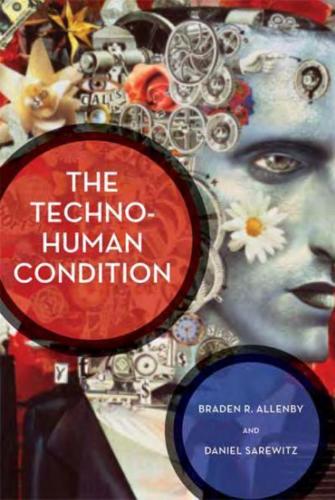
The Techno-Human Condition
by
Braden R. Allenby
and
Daniel R. Sarewitz
Published 15 Feb 2011
(The mechanisms for introducing such chaos would not be the relatively clumsy denial-of-service attacks that we saw in Russia's assaults on Estonia and Georgia, but rather the "back doors" planted in Internet systems, which would be activated in such a way as to cause appropriate damage in case 140 Chapter 7 of attack-"appropriate" being the level of damage required to achieve one's strategic goals under the conditions as they unfold, which need not involve full implementation of "cyberwar" capability.) Details, of course, are classified, but it is reasonable to expect that, even now, a new "balance of terror" based on "mutual assured destruction" is evolving on the cyber battlefield. And in the realm of asymmetric warfare, cyberspace is also the obvious place for less technologically advanced nations and for non-governmental organizations to go if they wish to inflict relatively undirected damage on a sophisticated opponent. The third realm, Revolutions in Civilian Systems (RCS), is one of the main themes of this book, so we will touch on it only briefly here.
…
For example, although we both suspect that, had we been of age during the early decades of the Cold War, we would have strongly supported efforts to prevent the development and proliferation of thermonuclear weapons, the historian Richard Rhodes (who wrote the authoritative histories of the development of the atomic and hydrogen bombs) has suggested, not implausibly, that the threat of mutually assured destruction In Front of Our Nose 183 helped to deliver 50 years of relative peace to the U.S., its allies, and the Soviet Bloc. l l Ethical uncertainty begins to look surprisingly like factual uncertainty when it comes to the techno-human condition. Neither ethical nor scientific analysis has much hope of predicting the future accurately enough to dictate appropriate behavior in the present.
…
W von, 189 Goodman, Eo, 122 Google, 96, 118 GOSPLAN, 114, 161 Great Chain of Being, 7,10,84 Green Revolution, 112 Greenland, 121, 122, 183 Gulliver's Travels, 83 Gunpowder, 128 Gunpowder Empires, 129 Halliburton, 141 Harris,]., 19,21 Health care, 46ff, 64 Heffner, Po, 19 Heidegger, Mo, 10, 11, 171 Heine, Ho, 73 Hewlett-Packard,89 Hinduism, 119 Hughes,]., 93, 94 "Human," as cultural construct, 103 Humanity+, 6, 7 Hutchins, Eo, 95, 96 Hydrologic cycle, 10 IBM, 89, 146 IEEE Spectrum, 82 Immortality, 82, 83 India, 99, 129, 139 Industrial ecology, 168 Industrial time, 71 Infant mortality,S 8, 60 Influenza, 68 Information and communication technology (ICT), 8, 80, 179 Institute of Electrical and Electronics Engineers (IEEE), 179 219 Institutional review boards (IRBs),l77 Integrated Vector Management (IVM), 48ff, 53 Integration of human and machine, 20 Intercollegiate Genetically Engineered Machine competition,68 Intergovernmental Panel on Climate Change, l11ff, 122, 124 Internet, 112, 118, 139, 166 Inuit, 183, 186, 187 "Invisible hand," 97, 98 iPhone,l iPod,l Iraq war, 3, 24, 76, 91ff, 94, 127,135,150-153 Jacobs,]., 168 James, W, 81 Japan, 131,133, 150 Jenner, Eo, 16 John Paul II, 101 Joy, W, 68 Kass, L., 21 Kepler,]., 101, 173 Kondratieff waves, 79ff, 192 Koniggriitz, Battle of, 75, 76 Krishna, 119 Kurzweil, Ro, 8, 18,68 Kyoto Protocol, 67, 109, 111, 193 Land mines, 150 Las Vegas, 152 Lawrence Livermore National Laboratory, 89 Leopold, Ao, 181 Libertarian approach to human enhancement,21ff 220 Index Lindblom, c., 93 Long-Term Capital Management,92 "Long waves" of innovation, 79££ Maginot Line, 135 Malaria, 47££, 53 Malaysia, 139 Maoism, 31, 121 Marlboro Man, 135 Marne, Battle of, 76 Marxism, 110, 114, 121, 172 Marx, K., 64, 70, 173 Maslow, A., 33 McKibben,~.,21, 101 McKinsey & Company, 49 McNeill, ]. R., 80 Medical Journal of Australia, 122 Memory-enhancing pharmaceuticals, 113 Mexico, 125, 133 Microsoft, 173 Millenarian utopianism, 120 Modafinil, 24 Moltke, H. von, 75, 105, 106 Money, 80, 81 Moravec, H., 8, 18 Mumford, L., 33, 36, 45 Mutually assured destruction, in cyberspace, 140 Nanotechnology, 8, 80, 178 National Institute of Health, 89 National Science Foundation, 8, 89,90 Natural Born Cyborgs, 9 Nature, as sacred, 100ff Nature's Metropolis, 115 Nazi Germany, 22, 31,121,131 Needle gun, 75 Negligible senescence, engineered,82 Neoconservatives, 91, 110 Neuropharmaceuticals, 3, 18, 24,88,95 New Atlantis, 18 New Jerusalem, 11, 77, 78 New Scientist, 122, 124 Newton, I., 101, 173, 179 Nitrogen cycle, 10, 110, 192 Noble, D., 18 Notice-and-comment rulemaking, 165 Nuclear power, 174ff Nuclear winter, 67, 78 Occupational health and safety, 52 Office of Naval Research, 89 Olympic Games, 3, 4 Oppenheimer,].
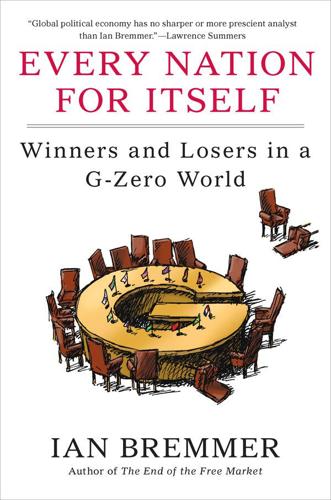
Every Nation for Itself: Winners and Losers in a G-Zero World
by
Ian Bremmer
Published 30 Apr 2012
Hackers aren’t the only threats here. Governments are also developing offensive (often unidentifiable) computer capabilities as a new way to project power in a world where direct military strikes are much more expensive and exponentially more dangerous. During the Cold War, the risk of mutually assured destruction made nuclear weapons all but unusable. Everyone knew when and from where a missile was fired and could retaliate in kind. That’s not true for cyberweapons. States are now in the process of putting national cybersecurity strategies into place. The creation of a separate U.S. cybercommand in 2010 reveals a growing military emphasis on cyberwarfare.
…
A seemingly endless number of such potential flash points could provoke many different forms of fighting, and this confrontation might force other states to take sides. As to what any confrontation might look like, it’s tempting to fall back on the Cold War model—two superpowers staring one another down from behind their nuclear arsenals with only the threat of mutually assured destruction stilling hands. But that scenario ignores an important point. During the U.S.-Soviet conflict, the Iron Curtain was not just the prison wall that kept invaders out and prisoners in. It was a buffer between the capitalist and communist worlds. The Soviet Union was an important energy supplier for Europe, but other East–West trade ties were extremely limited.
…
-China partnership in, 157–66 G3, 16, 35 G6, 47 G7, 2, 4, 16, 25, 26, 35, 47, 54 G8, 54 G20, 1–2, 4, 16, 26, 35, 148, 166–70, 203 Gadhafi, Muammar, 19, 113, 134, 138–39, 192 gangs, 183 Gates, Robert, 134 Gazprom, 137 geoengineering, 96 Geological Survey, U.S., 97 Georgia, 32, 54, 141, 177 Germany, 11, 17–18, 19, 25, 28, 45, 46, 54, 122, 126, 166, 168, 169 China compared to, 164–65 European leadership of, 175, 176, 179 post–World War II division of, 39 glasnost, 180 globalization, 13, 20, 55–56, 78, 110–11, 132, 193–95, 202n global public goods, 11, 14 global warming, see climate change Gmail, 93 Google, 75, 92, 93 Gorbachev, Mikhail, 180 grain, 98–99, 100–101, 102, 104, 168 Great Britain, 10–11, 19, 25, 39, 44, 47, 67, 132, 167 nuclear program of, 57 post–World War II reconstruction needed in, 39–40 separatist movements in, 181 Great Firewall, 90 Greece, 17, 45 “Green Dam Youth Escort,” 86 Gulf Cooperation Council (GCC), 71, 112–13, 155, 175–76, 217n G-Zero, 1, 2, 4, 5, 9–10, 21, 35, 38, 56, 68 air and, 69 climate change and, 94–97 communication standards and, 83–94 cyberthreats and, 72–76, 107, 133 food and, see food, security of global standards and, 69, 80–83 losers in, 132–40 as period of transition, 152 state-to-state conflicts and, 69–72 trade and, 76–80 unified approach to coercive diplomacy in, 57–58 water and, 68, 69, 97, 104–7 winners in, 115–32 Hatoyama, Yukio, 20 health care reform, 64–65 health crises, 183 hedge funds, 127 He Yafei, 9 high-speed trains, 127 Hong Kong, 51, 121 House of Representatives, U.S., Subcommittee on Commerce, Manufacturing and Trade, 75 Hu Jintao, 162 Human Rights Watch, 135 Hungary, 53 Hussein, Saddam, 124 Hu Yaobang, 53 hydrocarbon energy, 99 hyperinflation, 37 IAEA, 207n Iceland, in Arctic Council, 96–97 India, 3, 9, 10, 16, 24–25, 26, 28, 33, 40, 55, 79, 117, 122, 155, 161, 167–68, 170, 183, 187 biofuel production in, 100 China’s rivalry with, 25, 70, 115, 173, 178 climate change and, 94 defense spending of, 129 demand for grain in, 98–99 economic growth in, 98–99, 148, 166 energy imported by, 30 famine in, 100 food riots in, 98 nuclear program of, 57, 76 Pakistan’s conflict with, 25, 70, 152, 158, 165–66 urbanization in, 99, 118 water security in, 105 in World Bank and IMF, 29–30 Indochina, 40 Indonesia, 48, 51, 55, 70, 71, 76, 114, 120, 122, 194 biofuel production in, 100 economic growth in, 99 multinationals in, 80 industrialization, 104 inflation, 32, 39, 49, 60 information revolution, 92–93 intellectual property, 84 Intergovernmental Panel on Climate Change, UN, 109 International Energy Agency, 94, 100 International Monetary Fund (IMF), 4, 22, 27–28, 29–30, 80, 118, 120, 134, 135, 167 American and European influence in, 42, 43–44 creation of, 39, 43 Greece aided by, 45 world currency and debt crises resolved by, 38 International Telecommunications Union (ITU), 88–89 Internet, 22, 33, 87–91, 93, 94, 180 Internet Corporation for Assigned Names and Numbers (ICANN), 87, 88 Internet Engineering Task Force, 87 Internet Society, 87 Iran, 14, 47, 48, 69, 117, 123, 125, 136, 139, 154 Internet in, 90, 92 nuclear program of, 15, 55, 56, 58–59, 73, 123–24, 158 protests in, 192 revolution in, 112–13 Iraq, 15, 47, 48, 58, 64, 69, 113, 117, 124, 127, 175, 183, 187, 202n U.S. withdrawal from, 32, 202n Ireland, 126 Ismay, Hastings Lionel, 133 Israel, 48–49, 56, 69, 113, 117, 129, 130 as exposed state, 136 Israeli-Palestinian conflict, 17, 136, 158 nuclear program of, 57, 207n Italy, 19, 25, 39, 45, 47, 181 Japan, 15, 16, 19–20, 22, 25, 30, 47, 50, 70, 82–83, 114, 120, 121, 129, 143, 148, 155, 166 aging population of, 120 biofuel production in, 100 China’s tension with, 69, 71, 114, 135–36, 173, 177–78 climate change and, 94 debt problems of, 20 as exposed state, 135–36 grain production, 104 oil imported by, 47 political and economic malaise of, 3 post–World War II reconstruction and growth of, 39, 45–47, 50–51 reduced role of, 194 Jiang Zemin, 60 job creation, 32 Johnson, Lyndon, 100 Jordan, 48, 69, 113, 176 JPMorgan Chase, 75 Kan, Naoto, 20 Kawasaki, 127 Kazakhstan, 54, 122, 137, 141, 177, 179 Kenya, 72, 106, 177 Kimberley Process (KP), 131–32 Korb, Lawrence, 191 Kosovo, 181 Kuwait, 48, 71 Kyoto Protocol, 94 Lagarde, Christine, 27–28 Lake Victoria, 106 Lampedusa Tunisian Collective, 19 Laos, 105 Latin America, 40, 59, 85 Chinese investments in, 80 cooperation in, 115–16, 174 corruption in, 115–16 debt crisis in, 37 League of Nations, 170 Liberal Democratic Party, Japanese, 20 Libya, 19, 30, 48, 69, 134, 138–39, 192 civil war in, 112, 113, 175, 202n oil exports of, 117 Lizza, Ryan, 113n Lockheed Martin, 129 London, 33, 121 Lula da Silva, Luiz Inácio, 55 Maastricht Treaty, 54 MacArthur, Douglas, 39, 45–46, 109 Mack, Mary Bono, 75 McKinsey & Company, 146 McKinsey Global Institute, 99 Madagascar, 102 mad cow disease, 103 Mahbubani, Kishore, 114–15 Malaysia, 51 Maldives, 9, 109–10 Mandelbaum, Michael, 11 Marange mine, 131–32 Margrethe, queen of Denmark, 7–8 Martin, Paul, 1–2 MasterCard, 75 Medicaid, 12 Medicare, 12, 189 Medvedev, Dmitry, 203n Merkel, Angela, 9, 18 metals, 147 Mexico, 55, 122 borrowing by, 37 food riots in, 98 as shadow state, 136–37 Middle East, 40, 48, 59, 136, 175 as potential hotspot, 69–72, 113–14, 152 water scarcity in, 104 minerals, 147 Ministry of International Trade and Industry (MITI), Japan, 46 Mongolia, 122 Morgenthau, Henry, Jr., 41 Morocco, 69, 101, 113, 176 Mozambique, 102, 120 Mubarak, Hosni, 89, 113, 192–93 Mugabe, Robert, 7–8, 131–32 multinational companies, 74–75, 79, 80, 83, 91, 119, 126–28, 139–40 mutually assured destruction, 172 Myanmar, 123, 124, 125 Chinese companies in, 80 nanotechnology, 147 Napoleon I, emperor of France, 11 Napoleonic Wars, 167 Nasdaq, 75 Nasheed, Mohamed, 9, 110 National Committee on U.S.-China Relations, 157 National Development and Reform Commission, 130 National Institute of Standards and Technology, 73 natural gas, 58, 63, 147, 181, 182 in Arctic, 97 Navy, U.S., 24 Nehru, Jawaharlal, 24–25, 55 New York, N.Y., 121 NGOs, 135 Nigeria, 48, 72, 177, 182 Nile, 106 Nixon, Richard, 44, 49–50 Noda, Yoshihiko, 20 North Africa, 18, 48, 136, 139, 175, 187 North Atlantic Treaty Organization (NATO), 17, 19, 30, 117, 133–34, 192 North Korea, 70, 91, 123, 125, 152, 154, 165, 208n nuclear program of, 15, 57, 58–59, 124, 158, 161 Norway, in Arctic Council, 96–97 Nuclear Non-Proliferation Treaty (NPT), 57–59 Obama, Barack, 8–9, 11, 64, 65, 100, 113, 190, 202n oil, 3, 22, 23, 30–31, 37, 47–49, 58, 61, 114, 116, 117, 120, 125–26, 127, 141–42, 147, 160, 181–82 in Arctic, 97 OPEC’s embargos of, 48–49, 50 as priced in dollars, 81–82 oilseeds, 100 Oman, 71 Organization of the Petroleum Exporting Countries (OPEC), 48–49, 50, 100 Paine, Thomas, 185 Pakistan, 14, 57, 70, 115, 161, 182, 183 food riots in, 98 India’s conflict with, 25, 70, 152, 158, 165–66 U.S. drone attacks in, 111 Palestinians, 17, 25, 136, 158 Pan Am Flight 103, 139 Panetta, Leon, 73 PayPal, 75 Peace Corps, 90–91 Pearl Harbor, 187 People’s Action Party, Singapore, 121 People’s Liberation Army, 146 Peru, 177 Petrobras, 125–26 Pew Research Center, 13 Philippines, 23, 51, 70, 114, 129, 194 pivot states, 115–20, 136, 140–41, 155, 165, 177, 178–79 Poland, 55 pollution, 104–5 population growth, 104 Portugal, 17 power grids, 169, 171 protectionism, 77–79 protectors, 128–30 Prussia, 167 Putin, Vladimir, 24, 54, 82, 137, 141, 182 Qatar, 48, 71 Rapaport, 132 Raytheon, 129 Reagan, Ronald, 65 “Red Dragon Rising: The Coming War with China” (board game), 170–71 referees, 133–35 regional development banks, 38 Research in Motion (RIM), 33 Resolution 1973, 192 Roach, Stephen, 12 rogue states, 123–25, 138–39 Roosevelt, Franklin, 42–43 Rosneft, 127 Royal Dutch Shell, 97 Rudd, Kevin, 203n Russia, 24, 28, 30, 54, 55, 69, 73, 77, 84, 102, 121, 122, 125, 141, 168, 169, 170, 177, 183, 203n in Arctic Council, 96, 97 climate change and, 94 default on debt in, 37 energy exported by, 30 Georgia’s war with, 32, 141 grain exports banned by, 102 Internet in, 88, 89, 91, 92 nuclear program of, 59 oil prices and, 141 Peace Corps unwelcome in, 90–91 state capitalism in, 78 suspicions of U.S. in, 91 Ukraine’s ties with, 54, 137–38, 141 water security in, 105 Russian Empire, 167, 182 Rwanda, 32, 106 Sarkozy, Nicolas, 9, 38 Sata, Michael, 119 Saudi Arabia, 26, 30, 33, 48, 67, 69, 71, 114, 128, 155, 182 foreign land purchased by, 102 grain production in, 104 Internet in, 92 local hegemony of, 175–76 oil of, 114 state capitalism in, 78 Schäuble, Wolfgang, 18 Schengen Agreement, 18, 176 Schularick, Moritz, 158 Scowcroft, Brent, 163 September 11, 2001, terrorist attacks of, 13, 32, 64, 188 Serageldin, Ismail, 104 shadow states, 136–38 Shanghai Cooperation Organization, 122 Shaw, George Bernard, 37 Shi Lang, 23 Siemens, 127 Sierra Leone, 130 Singapore, 51, 71, 120, 121–22, 194 Singh, Manmohan, 26 smart grids, 72, 73 Social Security, 12, 189 Somalia, 14, 183 Sony, 75 Soreq Nuclear Research Center, 207n South Africa, 10, 26, 28, 72, 131, 177 biofuel production in, 100 South Asia, water scarcity in, 104 South China Sea, 23, 129 Southeast Asia, 59, 102 urbanization in, 99 Southern African Development Community, 120 South Korea, 15, 51, 55, 70, 71, 114, 129, 165, 173, 208n foreign land purchased by, 102 U.S. beef banned by, 103 sovereign wealth funds, 125 Soviet Union, 39, 44, 45, 47, 52, 53, 54, 72–73, 138, 168, 173, 186 coup attempt in, 92 efforts at reform in, 179–80 nuclear program of, 57 post–World War II reconstruction needed in, 39–40 shifting borders of, 182 Spain, 17, 169 separatist movements in, 181 Spiegel, Der, 8 Spielberg, Steven, 119 Splinternet, 90 Standard Chartered Bank, 3 State Development & Investment Corporation (SDIC), 129, 140 state-owned companies, 78–79, 119, 125, 139–40, 160 in China, 59, 61, 86, 144, 148 Stoltenberg, Jens, 9 Strategic Arms Reduction Treaty (2010), 59 Strategy & Tactics, 170–71 Strauss-Kahn, Dominique, 27 Stuxnet, 56, 72–73 Sudan, 32, 106, 119 Sweden, in Arctic Council, 96–97 Syria, 48, 69, 112, 117, 123, 175, 183 Taiwan, 51, 114, 129, 172–73 as exposed state, 136 Tanzania, 106 tariffs, 79 Tata Group, 128 TD-SCDMA, 86 tech bubble, 64 telecommunications standards, 33, 83–94 terrorism, 3, 70, 93, 116, 128, 170, 183 Texas, 47, 48 Thailand, 51, 71, 114, 124, 168–69, 194 collapse of currency in, 37 multinationals in, 80 water security in, 105 3G mobile phone standard, 86 Three Gorges Dam, 105 Tiananmen Square, 53, 59, 148, 163 Time, 75 trade, global, 68, 70–71, 76–80, 178, 193–95 protectionist trend in, 77–79 trade balances, 32 trade routes, 15, 24, 59 Trans-Pacific Partnership, 71 Treasury Department, U.S., 38 Tunisia, 19, 69, 112, 175 Turkey, 3, 25, 26, 55, 69, 76, 141, 148, 155, 161, 166, 179, 187 as pivot state, 117 Turkmenistan, 54 Twitter, 91 Uganda, 72, 106 Ukraine, 54, 141, 177 as shadow state, 137–38 United Arab Emirates, 26, 48, 71 United Nations, 44, 89, 97, 104, 131 Food and Agriculture Organization, 100, 103 General Assembly of, 21, 44 Security Council of, 3, 25, 44, 57, 192 World Food Program of, 103 United States, 16, 21, 25, 30, 39, 44, 47, 50, 122, 148–49, 170, 182 in Arctic Council, 96–97 as Asian power, 70–71 beef production in, 103, 105 biofuels produced in, 100 United States (cont.)
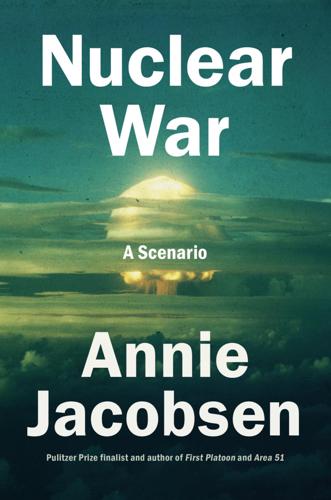
Nuclear War: A Scenario
by
Annie Jacobsen
Published 25 Mar 2024
Knows the Trinity bomb was exploded in the Jornada del Muerto desert, which means the Journey of the Dead Man. And now, here he stands in Diablo Canyon, in the Devil’s Gorge, watching the mushroom cloud expand. Everything associated with nuclear weapons is saturated in evil and in death, he has read in books. Always has been this way. He is old enough to remember when Mutual Assured Destruction was first sold to the public as a savior; when really the old rancher knows that MAD is madness. He remembers Bert the Turtle. Duck and cover drills. Project Sunshine, that Atomic Energy Commission program that collected bones of the dead and baby teeth of living children. To secretly test tissue in human body parts for levels of radiation exposure.
…
Russia had nothing to do with what just happened in the U.S., in this scenario. The ranking Russian generals signing into the teleconference one by one know this to be fact. They are the individuals in charge of the nation’s nuclear forces. But conclusions drawn by others will be impossible to control. Deterrence has failed. The theory that Mutual Assured Destruction keeps the world safe from nuclear weapons is no longer valid. In this moment of crisis, how will a decapitation event against the United States by a rogue third party impact decisions made by Russia’s Nuclear Command and Control? Former secretary of defense Leon Panetta provides us with his impression of what might be transpiring in such a moment.
…
But the SecDef remains focused on one thing: getting the Russian president on the line. Like many who become the U.S. secretary of defense, the SecDef in this scenario has spent his life working within the military-industrial complex. This makes him uniquely aware of an existential peril that exists. A terrifying flaw in Mutual Assured Destruction. A kind of hole. Over the North Pole. A weakness that is well known to nuclear weapons experts like Hans Kristensen, but largely ignored by the rest of the world. “The Minuteman III ICBM does not have enough range to target North Korea without overflying Russia,” Kristensen explains.
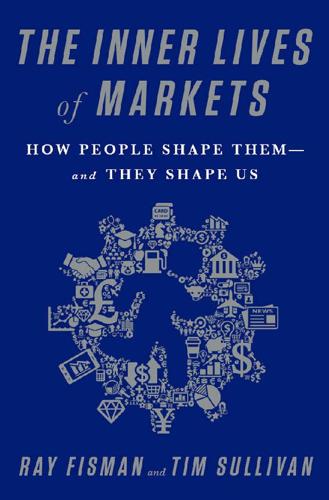
The Inner Lives of Markets: How People Shape Them—And They Shape Us
by
Tim Sullivan
Published 6 Jun 2016
Although technical, some of von Neumann and Morgenstern’s ideas eventually filtered into the mainstream, and so resonated with the public imagination that the two researchers found themselves on the front page of the New York Times in 1946 under the headline, “Mathematical Theory of Poker Is Applied to Business Problems.”12 Game theory, though, was about much more than just business. Most famously, perhaps, RAND economists and mathematicians developed the doctrine of nuclear deterrence by mutually assured destruction (MAD) under the guidance of then defense secretary Robert McNamara (himself an economist by training). Von Neumann and Morgenstern’s Theory of Games and Economic Behavior is, in concentrated form, the story of how the new mathematical science of economics could operate and change the way the world works in arenas small (poker) and earth shattering (thermonuclear war).
…
Morgenstern concluded that if “chess is the Russian national pastime and poker is ours, we ought to be more skillful than they in applying its precepts.”13 This overlap between some quite esoteric mathematical game theory and the real world reflects the overall argument of The Inner Lives of Markets: von Neumann and Morgenstern took something instinctual and messy and provided a clear path forward using logical and coherent math. Arcane mathematical, economic reasoning found fertile ground in real-world interactions like poker and mutually assured destruction. Their Theory of Games gave precision to the way we think about strategy—and also the way we strategize. But this begs the question of why right-leaning RAND and left-leaning Cowles each turned to math. One reason it was seen as useful at both organizations is that, unlike words, mathematical theorizing presented what seemed a coldly objective analysis, devoid of political considerations.
…
See mathematics models, 15, 24–29 of platforms, 107–112 reality-based, 35–37, 45, 49–51, 141 traditional, 110, 133 See also lemon markets theory; markets; platforms Edelman, Ben, 123–124 efficiency optimization, 85–86 eighteenth-century book markets, 90–91 Eisenstein, Don, 154 Elfenbein, Daniel, 73–75 empirical economics, 45 English auctions, 83, 100 equilibrium, existence of, 29, 31–34, 36–37, 40, 45, 76 Euler’s buckling equation, 141 exploding offers, 140 Federal Communications Commission (FCC), 102–103 feedback ratings, customer, 52, 74–75 Feeding America, 154 Findlay, Ronald, 85 first-price (live) auction, 84 first-price sealed-bid auction, 86–87, 99–100 Fisman, Ray Airbnb experience, 171–172 lesson on selling lemons, 59 study on eBay seller motivation for giving to charities, 73 fixed prices, auction versus, 96–97 food bank market system, 154–160 Foundations of Economic Analysis (Samuelson), 28 Fourcade, Marion, 20 fraternity rush, 140 free markets See markets frictions, market, 169–174 “Friday Car,” 46 Friedman, Milton, 72, 151 fundamental attribution error, 178 fundamentalists, market, 16–17 Future Shop (Snider and Ziporyn), 42 Gale, David, 136, 137–138 Gambetta, Diego, 68 game theory, 25–27, 136, 178–179 gang markings as signals, 61–62, 67–68 general equilibrium model, 31–34, 36–37, 40, 76 German POW camps, marketplaces at, 7–10, 13 Giving Works program (eBay for Charity), 73–75 global thermonuclear war, game of, 26 Goethe, Johann Wolfgang von, 89–92, 101 greed, in platforms, 128–129 Groves, Theodore, 93 guarantees, money-back, 69–71 Hall, Robert, 94 Hayek, Friedrich, 13 health markets, lemon problems and, 58–59 Healy, Kieran, 20 Heilbroner, Robert, 20, 21 Henry, John, 80–81, 87–89 Hermann and Dorothea (Goethe) royalties, 90–92, 101 Hernandez, Frances, 61–62 Herodotus, 81 Hicks, John, 34 hierarchy in POW camps, survival rates and, 10–13 Holderness, Clifford, 11–12 home contractors, 119–120 Hoshijima Susumu, 10–11 hotel lobbies, Airbnb vs., 172 Hoteling, Harold, 30 house exchange algorithm, 163–164 “How to Spot Fake Tiffany Jewelry” (yvonne9903), 52–53 human capital theory, 35 income, distribution of, 22 industrial organization, 117–118 inferior good, 180 information management system, 41–42 “Inside the School Assignment Maze” (article), 146 insights, market, 14–15 internet commerce, 41–43 lifestyle changes with creation of, 2–3 scams, 52–55 See also auctions invisible hand metaphor, 21, 33, 182 Japanese POW camps, 10–13, 175–177 Kakutani, Shizuo, 32 Das Kapital (Marx), 23 Keynes, John Maynard, 49–50 “Kidney Exchange” (Roth et al.), 164–165 kidneys sales, 160–161 transplant exchange algorithm, 162–166 King Rat (Clavell), 175–177 Klein, Joel, 143–144 labor markets, 48, 64–66 labor theory of value, 23 ladies night at bars, 123 laundry service platform, 112 lemon markets theory, 44–51, 58–59, 64, 112 “Let Them Eat Pollution” (article), 167 life insurance, 1840s, 153 Lincoln Elementary, 1–2 Little, I. M. D., 22 Liu, Qihong, 128–129 Lyft car service, 173 MAD (doctrine of nuclear deterrence by mutually assured destruction), 26 mail-in-bids, for auctions, 83–84 “The Market for Lemons” (Akerlof), 44–51, 64 market frictions, 169–174 market fundamentalists, 16–17 market insights, 14–15 market makers, 107–110, 118–121 markets 18th-century book, 90–91 competitive, 35, 124–126, 172–174, 180–181 design, 133, 137–142 dysfunction of, 36, 75–77, 143 economics of platform, 107–112 equilibrium, 33 fixed-price versus auctions, 96–97 food bank system, 154–160 image problem of, 152–153 labor, 48, 64–66 lemon, 44–51, 58–59, 64, 112 multisided, 108–112, 118–124 one-sided, 108–112 in POW camps, 4, 7–13, 175–177 rules for platform, 112–117 school choice in Sweden, 151–152 selfishness in, 177–179 technology and, 169–173 trade with uninformed parties, 166–169 transformation of, 13–17 two-sided, 108–112, 118–124 See also auctions; economics; platforms Marx, Karl, 20, 23 matching problems middle school dance partners, 131–132, 134, 137–140 student to school, 138–139, 141–142, 143–149 mathematics algebraic topology, 44–45 economic theory transformed by, 15, 19–27 game theory, 136 general equilibrium model, 29, 31–34, 36–37, 40, 45, 76 kidney exchange algorithm, 163–165 models, 20, 24–25, 30 in real world economics, 35–37 Samuelson connecting economics and, 28–29 Shapley-Gale algorithm, 137–140 Matsuzaka, Daisuke, 79–81, 87–89 Maxwell, James Clark, 24 McManus, Brian, 73–75 mechanism design, 133, 134 medical residency programs, 140 merchant from Prato, 105–107 middle school dance-matching, 131–132, 134, 137–140 Milgrom, Paul, 70–71, 98, 102–103 mobile market platform, 116 modeling applied theory, 45, 50, 75–76 competition, 35, 166, 172–173 congestion pricing, 86, 94 dysfunction of, 75–77 economic, 15, 24–29 mathematical, 20, 24–25, 30 reality-based economic, 35–37, 45, 49–51, 141 models auction, 82–84 eBay, 43, 46, 48 general equilibrium, 31–34, 36–37, 40, 76 lemons, 44–51, 58–59, 64, 112 Solow, 35 See also platforms; signaling model Moldovanu, Benny, 90–91 money burning costs, 70–71 money-back guarantees, 69–71 Morals & Markets: The Development of Life Insurance in the United States (Zelizer), 153 Morgenstern, Oskar, 25–27 mortality rates, of Japanese vs German POW camps, 10–13 MS-13 gang, 67 multisided markets, 108–112, 118–124 multisided platform, 14 multiunit Vickrey auction, 93 Murphy, Frank, 9 Nasar, Sylvia, 29 Nash, John, 32 National Archives’ World War II Prisoners of War Data File, 11 network externalities, 121–124 New England Program for Kidney Exchange, 164–165 New York Department of Education, 143–144, 145, 149 Nobel Prize in Economics, 34 See also Sveriges Riksbank Prize in Economic Sciences in Memory of Alfred Nobel noncustomers, paying, 123–124 Nordstrom’s return policy, 69–70 no-risk money-back guarantees, 69–71 normal good, 180 no-trade rule, Japanese POW camps, 10–13 nuclear deterrence, 26 Omidyar, Pierre, 39–40 one-sided markets, 108–112 online retail, 41–43, 52–55 optimized efficiency, 85–86, 133 organ sales, 160–161 organizations, sick, 142–143 out-of-town bids, for auctions, 83–84 Pareto, Vilfredo, 20, 21–22 Pareto efficiency, 22 Penny Black stamp, 82–84 Percy P.

Super Thinking: The Big Book of Mental Models
by
Gabriel Weinberg
and
Lauren McCann
Published 17 Jun 2019
How about a nice game of chess? The reason that there is no winner in Global Thermonuclear War is that both sides have amassed enough weapons to destroy the other side and so any nuclear conflict would quickly escalate to mutually assured destruction (MAD). As a result, neither side has any incentive to use its weapons offensively or to disarm completely, leading to a stable, albeit tense, peace. Mutually assured destruction isn’t just a military model. A parallel in business is when companies amass large patent portfolios, but generally don’t use them on one another for fear of escalating lawsuits that could potentially destabilize all the companies involved.
…
That’s why it makes sense to consider conflict prevention measures like mediation, or, more generally, diplomacy (see win-win in Chapter 4 for some related mental models). If diplomacy by itself doesn’t work, though, there is another set of models to turn to, starting with deterrence, or using a threat to prevent (deter) an action by an adversary. Credible mutually assured destruction makes an excellent deterrent. But even one nuclear blast is so undesirable that simply the possession of a nuclear weapon has proven to be a powerful deterrent. For example, North Korea seemingly developed nuclear weapons to secure its survival as a state, despite being an authoritarian dictatorship with a well-documented history of human rights violations.
…
Department of, 97 just world hypothesis, 22 Kahneman, Daniel, 9, 30, 90 karoshi, 82 Kauffman Foundation, 122 keeping up with the Joneses, 210–11 key person insurance, 305 King, Martin Luther, Jr., 129, 225 KISS (Keep It Simple, Stupid), 10 knowledge, institutional, 257 knowns: known, 197 unknown, 198, 203 known unknowns, 197–98 Knox, Robert E., 91 Kodak, 302–3, 308–10, 312 Koenigswald, Gustav Heinrich Ralph von, 50 Kohl’s, 15 Kopelman, Josh, 301 Korea, 229, 231, 235, 238 Kristof, Nicholas, 254 Krokodil, 49 Kruger, Justin, 269 Kuhn, Thomas, 24 Kutcher, Ashton, 121 labor market, 283–84 laggards, 116–17 landlords, 178, 179, 182, 188 Laplace, Pierre-Simon, 132 large numbers, law of, 143–44 Latané, Bibb, 259 late majority, 116–17 lateral thinking, 201 law of diminishing returns, 81–83 law of diminishing utility, 81–82 law of inertia, 102–3, 105–8, 110, 112, 113, 119, 120, 129, 290, 296 law of large numbers, 143–44 law of small numbers, 143, 144 Lawson, Jerry, 289 lawsuits, 231 leadership, 248, 255, 260, 265, 271, 275, 276, 278–80 learned helplessness, 22–23 learning, 262, 269, 295 from past events, 271–72 learning curve, 269 Le Chatelier, Henri-Louis, 193 Le Chatelier’s principle, 193–94 left to their own devices, 275 Leibniz, Gottfried, 291 lemons into lemonade, 121 Lernaean Hydra, 51 Levav, Jonathan, 63 lever, 78 leverage, 78–80, 83, 115 high-leverage activities, 79–81, 83, 107, 113 leveraged buyout, 79 leveraging up, 78–79 Levitt, Steven, 44–45 Levitt, Theodore, 296 Lewis, Michael, 289 Lichtenstein, Sarah, 17 lightning, 145 liking, 216–17, 220 Lincoln, Abraham, 97 Lindy effect, 105, 106, 112 line in the sand, 238 LinkedIn, 7 littering, 41, 42 Lloyd, William, 37 loans, 180, 182–83 lobbyists, 216, 306 local optimum, 195–96 lock-in, 305 lock in your gains, 90 long-term negative scenarios, 60 loose versus tight, in organizational culture, 274 Lorenz, Edward, 121 loss, 91 loss aversion, 90–91 loss leader strategy, 236–37 lost at sea, 68 lottery, 85–86, 126, 145 low-context communication, 273–74 low-hanging fruit, 81 loyalists versus mercenaries, 276–77 luck, 128 making your own, 122 luck surface area, 122, 124, 128 Luft, Joseph, 196 LuLaRoe, 217 lung cancer, 133–34, 173 Lyautey, Hubert, 276 Lyft, ix, 288 Madoff, Bernie, 232 magnetic resonance imaging (MRI), 291 magnets, 194 maker’s schedule versus manager’s schedule, 277–78 Making of Economic Society, The (Heilbroner), 49 mammograms, 160–61 management debt, 56 manager’s schedule versus maker’s schedule, 277–78 managing to the person, 255 Manhattan Project, 195 Man in the High Castle, The (Dick), 201 manipulative insincerity, 264 man-month, 279 Mansfield, Peter, 291 manufacturer’s suggested retail price (MSRP), 15 margin of error, 154 markets, 42–43, 46–47, 106 failure in, 47–49 labor, 283–84 market norms versus social norms, 222–24 market power, 283–85, 312 product/market fit, 292–96, 302 secondary, 281–82 winner-take-most, 308 marriage: divorce, 231, 305 same-sex, 117, 118 Maslow, Abraham, 177, 270–71 Maslow’s hammer, xi, 177, 255, 297, 317 Maslow’s hierarchy of needs, 270–71 mathematics, ix–x, 3, 4, 132, 178 Singapore math, 23–24 matrices, 2 × 2, 125–26 consensus-contrarian, 285–86, 290 consequence-conviction, 265–66 Eisenhower Decision Matrix, 72–74, 89, 124, 125 of knowns and unknowns, 197–98 payoff, 212–15, 238 radical candor, 263–64 scatter plot on top of, 126 McCain, John, 241 mean, 146, 149, 151 regression to, 146, 286 standard deviation from, 149, 150–51, 154 variance from, 149 measles, 39, 40 measurable target, 49–50 median, 147 Medicare, 54–55 meetings, 113 weekly one-on-one, 262–63 Megginson, Leon, 101 mental models, vii–xii, 2, 3, 31, 35, 65, 131, 289, 315–17 mentorship, 23, 260, 262, 264, 265 mercenaries versus loyalists, 276–77 Merck, 283 merry-go-round, 108 meta-analysis, 172–73 Metcalfe, Robert, 118 Metcalfe’s law, 118 #MeToo movement, 113 metrics, 137 proxy, 139 Michaels, 15 Microsoft, 241 mid-mortems, 92 Miklaszewski, Jim, 196 Milgram, Stanley, 219, 220 military, 141, 229, 279, 294, 300 milkshakes, 297 Miller, Reggie, 246 Mills, Alan, 58 Mindset: The New Psychology of Success (Dweck), 266 mindset, fixed, 266–67, 272 mindset, growth, 266–67 minimum viable product (MVP), 7–8, 81, 294 mirroring, 217 mission, 276 mission statement, 68 MIT, 53, 85 moats, 302–5, 307–8, 310, 312 mode, 147 Moltke, Helmuth von, 7 momentum, 107–10, 119, 129 Monday morning quarterbacking, 271 Moneyball (Lewis), 289 monopolies, 283, 285 Monte Carlo fallacy, 144 Monte Carlo simulation, 195 Moore, Geoffrey, 311 moral hazard, 43–45, 47 most respectful interpretation (MRI), 19–20 moths, 99–101 Mountain Dew, 35 moving target, 136 multiple discovery, 291–92 multiplication, ix, xi multitasking, 70–72, 74, 76, 110 Munger, Charlie, viii, x–xi, 30, 286, 318 Murphy, Edward, 65 Murphy’s law, 64–65, 132 Musk, Elon, 5, 302 mutually assured destruction (MAD), 231 MVP (minimum viable product), 7–8, 81, 294 Mylan, 283 mythical man-month, 279 name-calling, 226 NASA, 4, 32, 33 Nash, John, 213 Nash equilibrium, 213–14, 226, 235 National Football League (NFL), 225–26 National Institutes of Health, 36 National Security Agency, 52 natural selection, 99–100, 102, 291, 295 nature versus nurture, 249–50 negative compounding, 85 negative externalities, 41–43, 47 negative returns, 82–83, 93 negotiations, 127–28 net benefit, 181–82, 184 Netflix, 69, 95, 203 net present value (NPV), 86, 181 network effects, 117–20, 308 neuroticism, 250 New Orleans, La., 41 Newport, Cal, 72 news headlines, 12–13, 221 newspapers, 106 Newsweek, 290 Newton, Isaac, 102, 291 New York Times, 27, 220, 254 Nielsen Holdings, 217 ninety-ninety rule, 89 Nintendo, 296 Nobel Prize, 32, 42, 220, 291, 306 nocebo effect, 137 nodes, 118, 119 No Fly List, 53–54 noise and signal, 311 nonresponse bias, 140, 142, 143 normal distribution (bell curve), 150–52, 153, 163–66, 191 North Korea, 229, 231, 238 north star, 68–70, 275 nothing in excess, 60 not ready for prime time, 242 “now what” questions, 291 NPR, 239 nuclear chain reaction, viii, 114, 120 nuclear industry, 305–6 nuclear option, 238 Nuclear Regulatory Commission (NRC), 305–6 nuclear weapons, 114, 118, 195, 209, 230–31, 233, 238 nudging, 13–14 null hypothesis, 163, 164 numbers, 130, 146 large, law of, 143–44 small, law of, 143, 144 see also data; statistics nurses, 284 Oakland Athletics, 289 Obama, Barack, 64, 241 objective versus subjective, in organizational culture, 274 obnoxious aggression, 264 observe, orient, decide, act (OODA), 294–95 observer effect, 52, 54 observer-expectancy bias, 136, 139 Ockham’s razor, 8–10 Odum, William E., 38 oil, 105–6 Olympics, 209, 246–48, 285 O’Neal, Shaquille, 246 one-hundred-year floods, 192 Onion, 211–12 On the Origin of Species by Means of Natural Selection (Darwin), 100 OODA loop, 294–95 openness to experience, 250 Operation Ceasefire, 232 opinion, diversity of, 205, 206 opioids, 36 opportunity cost, 76–77, 80, 83, 179, 182, 188, 305 of capital, 77, 179, 182 optimistic probability bias, 33 optimization, premature, 7 optimums, local and global, 195–96 optionality, preserving, 58–59 Oracle, 231, 291, 299 order, 124 balance between chaos and, 128 organizations: culture in, 107–8, 113, 273–80, 293 size and growth of, 278–79 teams in, see teams ostrich with its head in the sand, 55 out-group bias, 127 outliers, 148 Outliers (Gladwell), 261 overfitting, 10–11 overwork, 82 Paine, Thomas, 221–22 pain relievers, 36, 137 Pampered Chef, 217 Pangea, 24–25 paradigm shift, 24, 289 paradox of choice, 62–63 parallel processing, 96 paranoia, 308, 309, 311 Pareto, Vilfredo, 80 Pareto principle, 80–81 Pariser, Eli, 17 Parkinson, Cyril, 74–75, 89 Parkinson’s law, 89 Parkinson’s Law (Parkinson), 74–75 Parkinson’s law of triviality, 74, 89 passwords, 94, 97 past, 201, 271–72, 309–10 Pasteur, Louis, 26 path dependence, 57–59, 194 path of least resistance, 88 Patton, Bruce, 19 Pauling, Linus, 220 payoff matrix, 212–15, 238 PayPal, 72, 291, 296 peak, 105, 106, 112 peak oil, 105 Penny, Jonathon, 52 pent-up energy, 112 perfect, 89–90 as enemy of the good, 61, 89–90 personality traits, 249–50 person-month, 279 perspective, 11 persuasion, see influence models perverse incentives, 50–51, 54 Peter, Laurence, 256 Peter principle, 256, 257 Peterson, Tom, 108–9 Petrified Forest National Park, 217–18 Pew Research, 53 p-hacking, 169, 172 phishing, 97 phones, 116–17, 290 photography, 302–3, 308–10 physics, x, 114, 194, 293 quantum, 200–201 pick your battles, 238 Pinker, Steven, 144 Pirahã, x Pitbull, 36 pivoting, 295–96, 298–301, 308, 311, 312 placebo, 137 placebo effect, 137 Planck, Max, 24 Playskool, 111 Podesta, John, 97 point of no return, 244 Polaris, 67–68 polarity, 125–26 police, in organizations and projects, 253–54 politics, 70, 104 ads and statements in, 225–26 elections, 206, 218, 233, 241, 271, 293, 299 failure and, 47 influence in, 216 predictions in, 206 polls and surveys, 142–43, 152–54, 160 approval ratings, 152–54, 158 employee engagement, 140, 142 postmortems, 32, 92 Potemkin village, 228–29 potential energy, 112 power, 162 power drills, 296 power law distribution, 80–81 power vacuum, 259–60 practice, deliberate, 260–62, 264, 266 precautionary principle, 59–60 Predictably Irrational (Ariely), 14, 222–23 predictions and forecasts, 132, 173 market for, 205–7 superforecasters and, 206–7 PredictIt, 206 premature optimization, 7 premises, see principles pre-mortems, 92 present bias, 85, 87, 93, 113 preserving optionality, 58–59 pressure point, 112 prices, 188, 231, 299 arbitrage and, 282–83 bait and switch and, 228, 229 inflation in, 179–80, 182–83 loss leader strategy and, 236–37 manufacturer’s suggested retail, 15 monopolies and, 283 principal, 44–45 principal-agent problem, 44–45 principles (premises), 207 first, 4–7, 31, 207 prior, 159 prioritizing, 68 prisoners, 63, 232 prisoner’s dilemma, 212–14, 226, 234–35, 244 privacy, 55 probability, 132, 173, 194 bias, optimistic, 33 conditional, 156 probability distributions, 150, 151 bell curve (normal), 150–52, 153, 163–66, 191 Bernoulli, 152 central limit theorem and, 152–53, 163 fat-tailed, 191 power law, 80–81 sample, 152–53 pro-con lists, 175–78, 185, 189 procrastination, 83–85, 87, 89 product development, 294 product/market fit, 292–96, 302 promotions, 256, 275 proximate cause, 31, 117 proxy endpoint, 137 proxy metric, 139 psychology, 168 Psychology of Science, The (Maslow), 177 Ptolemy, Claudius, 8 publication bias, 170, 173 public goods, 39 punching above your weight, 242 p-values, 164, 165, 167–69, 172 Pygmalion effect, 267–68 Pyrrhus, King, 239 Qualcomm, 231 quantum physics, 200–201 quarantine, 234 questions: now what, 291 what if, 122, 201 why, 32, 33 why now, 291 quick and dirty, 234 quid pro quo, 215 Rabois, Keith, 72, 265 Rachleff, Andy, 285–86, 292–93 radical candor, 263–64 Radical Candor (Scott), 263 radiology, 291 randomized controlled experiment, 136 randomness, 201 rats, 51 Rawls, John, 21 Regan, Ronald, 183 real estate agents, 44–45 recessions, 121–22 reciprocity, 215–16, 220, 222, 229, 289 recommendations, 217 red line, 238 referrals, 217 reframe the problem, 96–97 refugee asylum cases, 144 regression to the mean, 146, 286 regret, 87 regulations, 183–84, 231–32 regulatory capture, 305–7 reinventing the wheel, 92 relationships, 53, 55, 63, 91, 111, 124, 159, 271, 296, 298 being locked into, 305 dating, 8–10, 95 replication crisis, 168–72 Republican Party, 104 reputation, 215 research: meta-analysis of, 172–73 publication bias and, 170, 173 systematic reviews of, 172, 173 see also experiments resonance, 293–94 response bias, 142, 143 responsibility, diffusion of, 259 restaurants, 297 menus at, 14, 62 RetailMeNot, 281 retaliation, 238 returns: diminishing, 81–83 negative, 82–83, 93 reversible decisions, 61–62 revolving door, 306 rewards, 275 Riccio, Jim, 306 rise to the occasion, 268 risk, 43, 46, 90, 288 cost-benefit analysis and, 180 de-risking, 6–7, 10, 294 moral hazard and, 43–45, 47 Road Ahead, The (Gates), 69 Roberts, Jason, 122 Roberts, John, 27 Rogers, Everett, 116 Rogers, William, 31 Rogers Commission Report, 31–33 roles, 256–58, 260, 271, 293 roly-poly toy, 111–12 root cause, 31–33, 234 roulette, 144 Rubicon River, 244 ruinous empathy, 264 Rumsfeld, Donald, 196–97, 247 Rumsfeld’s Rule, 247 Russia, 218, 241 Germany and, 70, 238–39 see also Soviet Union Sacred Heart University (SHU), 217, 218 sacrifice play, 239 Sagan, Carl, 220 sales, 81, 216–17 Salesforce, 299 same-sex marriage, 117, 118 Sample, Steven, 28 sample distribution, 152–53 sample size, 143, 160, 162, 163, 165–68, 172 Sánchez, Ricardo, 234 sanctions and fines, 232 Sanders, Bernie, 70, 182, 293 Sayre, Wallace, 74 Sayre’s law, 74 scarcity, 219, 220 scatter plot, 126 scenario analysis (scenario planning), 198–99, 201–3, 207 schools, see education and schools Schrödinger, Erwin, 200 Schrödinger’s cat, 200 Schultz, Howard, 296 Schwartz, Barry, 62–63 science, 133, 220 cargo cult, 315–16 Scientific Autobiography and other Papers (Planck), 24 scientific evidence, 139 scientific experiments, see experiments scientific method, 101–2, 294 scorched-earth tactics, 243 Scott, Kim, 263 S curves, 117, 120 secondary markets, 281–82 second law of thermodynamics, 124 secrets, 288–90, 292 Securities and Exchange Commission, U.S., 228 security, false sense of, 44 security services, 229 selection, adverse, 46–47 selection bias, 139–40, 143, 170 self-control, 87 self-fulfilling prophecies, 267 self-serving bias, 21, 272 Seligman, Martin, 22 Semmelweis, Ignaz, 25–26 Semmelweis reflex, 26 Seneca, Marcus, 60 sensitivity analysis, 181–82, 185, 188 dynamic, 195 Sequoia Capital, 291 Sessions, Roger, 8 sexual predators, 113 Shakespeare, William, 105 Sheets Energy Strips, 36 Shermer, Michael, 133 Shirky, Clay, 104 Shirky principle, 104, 112 Short History of Nearly Everything, A (Bryson), 50 short-termism, 55–56, 58, 60, 68, 85 side effects, 137 signal and noise, 311 significance, 167 statistical, 164–67, 170 Silicon Valley, 288, 289 simulations, 193–95 simultaneous invention, 291–92 Singapore math, 23–24 Sir David Attenborough, RSS, 35 Skeptics Society, 133 sleep meditation app, 162–68 slippery slope argument, 235 slow (high-concentration) thinking, 30, 33, 70–71 small numbers, law of, 143, 144 smartphones, 117, 290, 309, 310 smoking, 41, 42, 133–34, 139, 173 Snap, 299 Snowden, Edward, 52, 53 social engineering, 97 social equality, 117 social media, 81, 94, 113, 217–19, 241 Facebook, 18, 36, 94, 119, 219, 233, 247, 305, 308 Instagram, 220, 247, 291, 310 YouTube, 220, 291 social networks, 117 Dunbar’s number and, 278 social norms versus market norms, 222–24 social proof, 217–20, 229 societal change, 100–101 software, 56, 57 simulations, 192–94 solitaire, 195 solution space, 97 Somalia, 243 sophomore slump, 145–46 South Korea, 229, 231, 238 Soviet Union: Germany and, 70, 238–39 Gosplan in, 49 in Cold War, 209, 235 space exploration, 209 spacing effect, 262 Spain, 243–44 spam, 37, 161, 192–93, 234 specialists, 252–53 species, 120 spending, 38, 74–75 federal, 75–76 spillover effects, 41, 43 sports, 82–83 baseball, 83, 145–46, 289 football, 226, 243 Olympics, 209, 246–48, 285 Spotify, 299 spreadsheets, 179, 180, 182, 299 Srinivasan, Balaji, 301 standard deviation, 149, 150–51, 154 standard error, 154 standards, 93 Stanford Law School, x Starbucks, 296 startup business idea, 6–7 statistics, 130–32, 146, 173, 289, 297 base rate in, 157, 159, 160 base rate fallacy in, 157, 158, 170 Bayesian, 157–60 confidence intervals in, 154–56, 159 confidence level in, 154, 155, 161 frequentist, 158–60 p-hacking in, 169, 172 p-values in, 164, 165, 167–69, 172 standard deviation in, 149, 150–51, 154 standard error in, 154 statistical significance, 164–67, 170 summary, 146, 147 see also data; experiments; probability distributions Staubach, Roger, 243 Sternberg, Robert, 290 stock and flow diagrams, 192 Stone, Douglas, 19 stop the bleeding, 234 strategy, 107–8 exit, 242–43 loss leader, 236–37 pivoting and, 295–96, 298–301, 308, 311, 312 tactics versus, 256–57 strategy tax, 103–4, 112 Stiglitz, Joseph, 306 straw man, 225–26 Streisand, Barbra, 51 Streisand effect, 51, 52 Stroll, Cliff, 290 Structure of Scientific Revolutions, The (Kuhn), 24 subjective versus objective, in organizational culture, 274 suicide, 218 summary statistics, 146, 147 sunk-cost fallacy, 91 superforecasters, 206–7 Superforecasting (Tetlock), 206–7 super models, viii–xii super thinking, viii–ix, 3, 316, 318 surface area, 122 luck, 122, 124, 128 surgery, 136–37 Surowiecki, James, 203–5 surrogate endpoint, 137 surveys, see polls and surveys survivorship bias, 140–43, 170, 272 sustainable competitive advantage, 283, 285 switching costs, 305 systematic review, 172, 173 systems thinking, 192, 195, 198 tactics, 256–57 Tajfel, Henri, 127 take a step back, 298 Taleb, Nassim Nicholas, 2, 105 talk past each other, 225 Target, 236, 252 target, measurable, 49–50 taxes, 39, 40, 56, 104, 193–94 T cells, 194 teams, 246–48, 275 roles in, 256–58, 260 size of, 278 10x, 248, 249, 255, 260, 273, 280, 294 Tech, 83 technical debt, 56, 57 technologies, 289–90, 295 adoption curves of, 115 adoption life cycles of, 116–17, 129, 289, 290, 311–12 disruptive, 308, 310–11 telephone, 118–19 temperature: body, 146–50 thermostats and, 194 tennis, 2 10,000-Hour Rule, 261 10x individuals, 247–48 10x teams, 248, 249, 255, 260, 273, 280, 294 terrorism, 52, 234 Tesla, Inc., 300–301 testing culture, 50 Tetlock, Philip E., 206–7 Texas sharpshooter fallacy, 136 textbooks, 262 Thaler, Richard, 87 Theranos, 228 thermodynamics, 124 thermostats, 194 Thiel, Peter, 72, 288, 289 thinking: black-and-white, 126–28, 168, 272 convergent, 203 counterfactual, 201, 272, 309–10 critical, 201 divergent, 203 fast (low-concentration), 30, 70–71 gray, 28 inverse, 1–2, 291 lateral, 201 outside the box, 201 slow (high-concentration), 30, 33, 70–71 super, viii–ix, 3, 316, 318 systems, 192, 195, 198 writing and, 316 Thinking, Fast and Slow (Kahneman), 30 third story, 19, 92 thought experiment, 199–201 throwing good money after bad, 91 throwing more money at the problem, 94 tight versus loose, in organizational culture, 274 timeboxing, 75 time: management of, 38 as money, 77 work and, 89 tipping point, 115, 117, 119, 120 tit-for-tat, 214–15 Tōgō Heihachirō, 241 tolerance, 117 tools, 95 too much of a good thing, 60 top idea in your mind, 71, 72 toxic culture, 275 Toys “R” Us, 281 trade-offs, 77–78 traditions, 275 tragedy of the commons, 37–40, 43, 47, 49 transparency, 307 tribalism, 28 Trojan horse, 228 Truman Show, The, 229 Trump, Donald, 15, 206, 293 Trump: The Art of the Deal (Trump and Schwartz), 15 trust, 20, 124, 215, 217 trying too hard, 82 Tsushima, Battle of, 241 Tupperware, 217 TurboTax, 104 Turner, John, 127 turn lemons into lemonade, 121 Tversky, Amos, 9, 90 Twain, Mark, 106 Twitter, 233, 234, 296 two-front wars, 70 type I error, 161 type II error, 161 tyranny of small decisions, 38, 55 Tyson, Mike, 7 Uber, 231, 275, 288, 290 Ulam, Stanislaw, 195 ultimatum game, 224, 244 uncertainty, 2, 132, 173, 180, 182, 185 unforced error, 2, 10, 33 unicorn candidate, 257–58 unintended consequences, 35–36, 53–55, 57, 64–65, 192, 232 Union of Concerned Scientists (UCS), 306 unique value proposition, 211 University of Chicago, 144 unknown knowns, 198, 203 unknowns: known, 197–98 unknown, 196–98, 203 urgency, false, 74 used car market, 46–47 U.S.

Surviving AI: The Promise and Peril of Artificial Intelligence
by
Calum Chace
Published 28 Jul 2015
The superintelligence could proceed to polish off the rest of us at its leisure by commandeering every weapon, vehicle and machine with the facility for remote control. Or it could release deadly pathogens into the environment, plundering and replicating samples from research labs which store smallpox, mustard gas and whatever other neurotoxins we have lying around. Or it could take control of our nuclear weapons and execute the mutual assured destruction scenarios which we have managed (sometimes narrowly) to avoid ever since the beginning of the cold war. Humanity versus a fully fledged superintelligence with internet access would be like the Amish versus the US Army. How do I destroy thee? Let me count the ways . . . The Terminator scenario is not the worst thing we have to worry about.
…
Today, while the world hangs on every utterance of Justin Bieber and the Kardashian family, relatively few of us even know the names of Vasili Arkhipov and Stanislav Petrov, two men who quite literally saved the world. Perhaps this survival illustrates our ingenuity. There was an ingenious logic in the repellent but effective doctrine of mutually assured destruction (MAD). More likely we have simply been lucky. We have time to rise to the challenge of superintelligence – probably a few decades. However, it would be unwise to rely on that period of grace: a sudden breakthrough in machine learning or cognitive neuroscience could telescope the timing dramatically, and it is worth bearing in mind the powerful effect of exponential growth in the computing resource which underpins AI research and a lot of research in other fields too. 9.7 – It’s time to talk What we need now is a serious, reasoned debate about superintelligence – a debate which avoids the twin perils of complacency and despair.
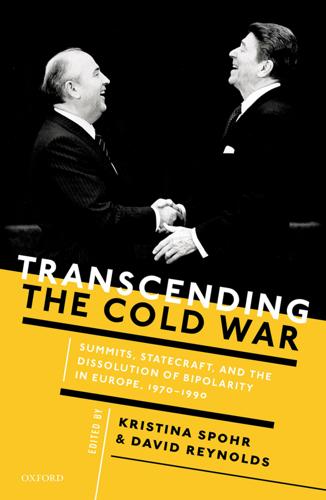
Transcending the Cold War: Summits, Statecraft, and the Dissolution of Bipolarity in Europe, 1970–1990
by
Kristina Spohr
and
David Reynolds
Published 24 Aug 2016
‘The Bonn/Moscow Alliance: The War is Over’ (Der Spiegel, 23 July 1990) List of Abbreviations ABM Anti-Ballistic Missile treaty CBMs confidence-building measures CCP Chinese Communist Party CDU Christian Democratic Union of Germany (Christlich Demokratische Union Deutschlands) CPSU Communist Party of the Soviet Union CSCE Conference on Security and Cooperation in Europe CSU Christian Social Union (Christlich-Soziale Union) CTBT Comprehensive Test Ban Treaty DMZ De-Militarized Zone DRV Democratic Republic of Vietnam EC European Community EU European Union ERWs enhanced radiation warheads FBS forward-based systems FRC Foreign Relations Committee, US Senate FRG Federal Republic of Germany GDR German Democratic Republic GLCM ground-launched cruise missiles G7 Group of Seven HVA Main Directorate for Reconnaissance, GDR (Hauptverwaltung Aufklärung) ICBMs intercontinental ballistic missiles INFs intermediate-range nuclear forces MAD Mutual Assured Destruction MBFR mutual and balanced force reduction (talks) MFN Most Favoured Nation trade status MIRVs multiple independently targetable re-entry vehicles NATO North Atlantic Treaty Organization NORAD North American Aerospace Defense Command NSC National Security Council NSDD National Security Decision Directive NVA National People’s Army of the GDR (Nationale Volksarmee) PRC People’s Republic of China SALT Strategic Arms Limitation Talks SDI Strategic Defense Initiative SED Socialist Unity Party of Germany (Sozialistische Einheitspartei Deutschlands) SLBMs submarine-launched ballistic missiles SPD Social Democratic Party of Germany (Sozialdemokratische Partei Deutschlands) SRINFs shorter-range INFs UN United Nations List of Contributors James Cameron is a Stanton Research Fellow at Fundação Getulio Vargas in Brazil.
…
He warned that stark ultimatums would ‘make it impossible for them to give in’; his preference was to ‘sit around a table and tell the Russians quietly’.6 Even though any summit was clearly a long way off, Reagan’s private letters to Soviet leaders were intended to establish some kind of personal rapport.7 George Shultz, secretary of state from 1982 to 1989, supported the president, believing that a two-pronged strategy of fortifying national strength while conducting limited and firm dialogue could yield ‘a more stable’, if still ‘competitive’, Soviet-American relationship.8 Reagan’s intellectual complexities were most evident in his approach to nuclear weapons. It is ironic that the president who advocated ‘peace through strength’ and authorized one of the biggest arms build-ups of the Cold War did not, at heart, believe in the nuclear option. He was convinced that the Pentagon’s deterrence doctrine of Mutual Assured Destruction (MAD) was literally mad because the human cost of a major US-Soviet nuclear war would be annihilation. Many of Reagan’s advisers believed that he could never have brought himself to authorize the use of nuclear weapons. Since his days in Hollywood, Reagan held what has been described as a ‘visionary, even utopian’ belief in nuclear abolitionism.
…
At their second meeting in Reykjavik in October 1986, this trust emboldened them into a passionate dialogue about a nuclear-free world. Even though pulling back from the brink of such a revolutionary step, much to the relief of their aides, the two men had clearly developed radically new conceptions of security. On his side, Reagan repudiated the traditional American doctrine of deterring war though Mutual Assured Destruction as literally mad: his Star Wars project (SDI) was intended to abolish nuclear weapons for the benefit of the world. Gorbachev, likewise, moved beyond security as a zero-sum game, benefiting one side only at the expense of the other, to talk about ‘sufficient security’ rather than superiority.
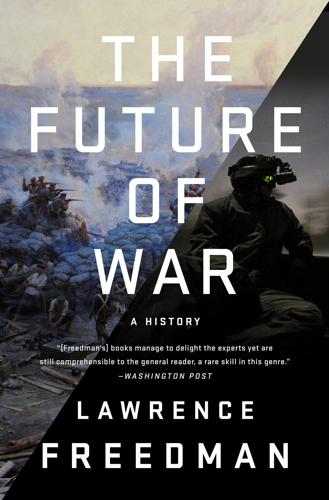
The Future of War
by
Lawrence Freedman
Published 9 Oct 2017
For the foreseeable future each side could eliminate the other as a modern industrial state. Robert McNamara, the US secretary of defense for much of that decade, argued that the two superpowers could impose ‘unacceptable damage,’ put at 25 per cent of population and 50 per cent of industry, on each other. Mutual Assured Destruction (MAD) conveyed exactly what it was supposed to convey—destruction would be assured and mutual and certainly unacceptable. Contrary to what had been assumed, therefore, the system tended towards stability. This was not so much a deliberate policy choice but recognition of a condition which confirmed the risks involved in any attempt to achieve a decisive victory through a knockout blow.
…
When he realised what he had done, and after arrest by the FBI for the hack, Lightman reached the embittered, dying scientist who had invented the programme to persuade him to give him the clue to turning it off. This was done seconds away from catastrophe. As WOPR was a learning machine it could realise that some games led to futility, which became a metaphor for mutual assured destruction. After this point was reached through a drawn game of tic-tac-toe the computer had the last line: ‘A strange game. The only winning move is not to play. How about a nice game of chess?’5 As with the doomsday machine in the earlier movies, the plot depended on a prior decision to give deterrence a form of automaticity that prevented human beings interrupting the launch sequence.
…
E., 195 League of Nations, 46, 49–51, 53 Lebanon, 257 See also Beirut; Hezbollah; Second Lebanon War Lebard, Meredith, 265–266 Lebensraum, 61 legitimate force, monopoly of, 148–149 Lenin, Vladimir, 35 Leopold II (King), 159 The Lessons of History (Durant, A., and Durant, W.), 114–115 Lettres sur la Philosophie del’Histoire (Barot), 115 Levi, Michael, 272 Levy, Jack, 137 Lewis, Bernard, 181 liberalism, nationalism and, 46–47 See also war, liberal vision of Liberia, 172 Libya, xv, 174, 219, 250 Lieber, Francis, 30–31, 33 limited war, 30 Lincoln, Abraham, 37 Livermore, Thomas, 128 Locarno Treaties, 49 Long Peace, xi Low, David, 61 Ludendorff, Erich, 57 Luttwak, Edward, 217, 273 Lyall, Jason, 206–207 MacArthur, Douglas, 90 machine guns, 12, 14 MacMillan, Margaret, 43 MAD. See mutually assured destruction de Madariaga y Rojo, Salvador, 49–50, 84, 174 Malaysia, 169, 197 Mali, 172, 262 al-Maliki, Nouri, 269 The Man Who Ended War (Godfrey), 20 Manhattan Project, 71 Mao Zedong, 122, 195, 203 Master of the World (Verne), 20 Mattis, James, 223 McConnell, Mike, 234 McCune, Emma, 214–215 McFate, Montgomery, 195 McMaster, H.

The Singularity Is Nearer: When We Merge with AI
by
Ray Kurzweil
Published 25 Jun 2024
Hellman, “Arms Race Can Only Lead to One End: If We Don’t Change Our Thinking, Someone Will Drop the Big One,” Houston Post, April 4, 1985, available in very similar form at https://ee.stanford.edu/~hellman/opinion/inevitability.html. BACK TO NOTE REFERENCE 13 For a clear and concise summary of how mutually assured destruction works, see “Mutually Assured Destruction: When the Only Winning Move Is Not to Play,” Farnam Street, June 2017, https://fs.blog/2017/06/mutually-assured-destruction. BACK TO NOTE REFERENCE 14 For more on US missile defense programs, see “Current U.S. Missile Defense Programs at a Glance,” Arms Control Association, August 2019, https://www.armscontrol.org/factsheets/usmissiledefense.
…
The global community has negotiated a number of international treaties[9] that have successfully reduced the total number of active warheads to fewer than 9,500 from a peak of 64,449 in 1986,[10] halted environmentally harmful aboveground testing,[11] and kept outer space nuclear-free.[12] But the current number of active weapons is still sufficient to end our civilization.[13] And even if the annual risk of nuclear war is low, the cumulative risks over decades or a century become extremely serious. As long as high-alert arsenals are maintained in their present form, it is likely only a matter of time before these weapons are used somewhere in the world, whether deliberately—by a government, terrorists, or rogue military officers—or by accident. Mutually assured destruction (MAD), the most well-known strategy for reducing nuclear risk, was used by both the United States and the Soviet Union for most of the Cold War.[14] It entails sending potential enemies a credible message that, if they use nuclear weapons, they will be met with an overwhelming retaliatory response in kind.
…
See also COVID-19 vaccines modular housing, 187–88 molecular assemblers, 249–50, 252 molecular Lego, 251 molecular manufacturing, 249–52 molecules, 7, 8, 29–30 Mona Lisa (da Vinci), 52 monkeys, 71, 72–73 monocytes, 262 Moore, Gordon, 40, 168 Moore’s law, 3, 40–41, 57, 113, 168 morality, 81, 91 consciousness and, 76–77 Moravec, Hans, 61, 101, 245, 246, 295n Moravec’s paradox, 101 motor cortex, 31 Mount Everest, 171 MT 486DX, 166, 303–4 multimodality, 49–50, 51–53 muscle memory, 30–32 music, 32, 59, 106–7, 186, 221 Musk, Elon, 70–71, 280 mutually assured destruction (MAD), 269–70 MuZero, 42, 43, 50 MYCIN system, 16–17 N nanobots in biomass, 249, 275, 397–98n in blood, 71, 192, 245, 258–59, 262–63 blue goo, 277 cloud-connected neocortices, 72, 103, 263–64 fat fingers and sticky fingers problem, 249–50 gray goo, 249, 275–78 medical, 192, 251, 257, 258–63, 276–77 molecular assemblers, 249–50, 252 radical life extension, 135–36 risks and perils, 273–78 self-replication of, 5, 30, 96, 246–49, 252, 260, 273–75 nanocrystals, 172 Nanosystems (Drexler), 250 nanotechnology, 1, 4, 245–65.
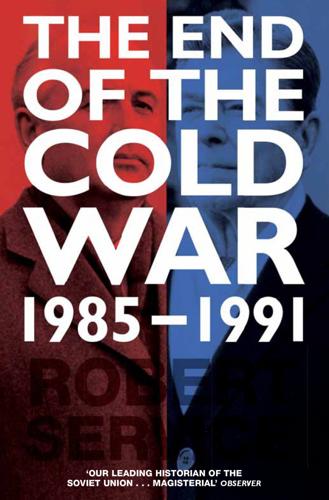
The End of the Cold War: 1985-1991
by
Robert Service
Published 7 Oct 2015
His technical advisers – Richard Allen, Fred Iklé and William Van Cleave – had always known otherwise. Their words failed to hit home until Reagan made his own enquiries.6 He learned to his horror that America could not prevent a nuclear ‘first strike’. The Americans could only retaliate – which would mean that they would blow Moscow to bits: this was the logic of ‘mutually assured destruction’. The problem was that the entire planet would suffer from blast, fire, radiation and smoke that would kill hundreds of millions of people, perhaps billions. America too would be devastated, and Reagan found little consolation in the thought that the Russians would suffer an equal calamity.
…
Mike Beaver, his spokesman, claimed that it was Brylcreem that gave him the dark gloss.22 There was an underestimation of Reagan’s ultimate purposes even at high levels in his own administration. National Security Adviser Richard Allen sought to rectify the situation by spreading the word that the President was serious about making nuclear war impossible.23 Reagan had been talking about ‘defensive concepts’ since 1973. Hating the idea of mutually assured destruction, he searched for a way of protecting America from the threat of nuclear holocaust. Among those who knew his thoughts were theoretical physicist Edward Teller and President Nixon’s Office of Management and Budget Director Caspar Weinberger, and after entering the White House he continued to talk about possibilities with them as well as with Ed Meese, Martin Anderson and Richard Allen.24 Meese held some exploratory meetings, and Reagan in early 1982 instructed the National Security Council staff to explore ways of moving beyond traditional defence strategy.
…
He banked on impressing on all NATO countries that they would risk estrangement from Washington if they failed to show the same toughness.25 As he drafted his Christmas message to the American people, Poland remained close to his heart: ‘We can’t let this revolution against Communism fail without offering a hand.’26 Thatcher expressed her support but other NATO leaders were more guarded in their statements.27 Even the Vatican took a cautious view. Cardinal Casaroli assured Reagan in December 1981 that ‘the time was not yet ripe for major change in Eastern Europe’. Reagan explained his general strategy as moving beyond the constraints of mutually assured destruction towards big reductions in the number of weapons on both sides.28 Casaroli in the same year was intervening with the Kremlin frequently on the Polish question.29 Neither Pope nor General Secretary wished to see violent trouble in Warsaw. John Paul II made his second papal visit to Poland in August 1983.
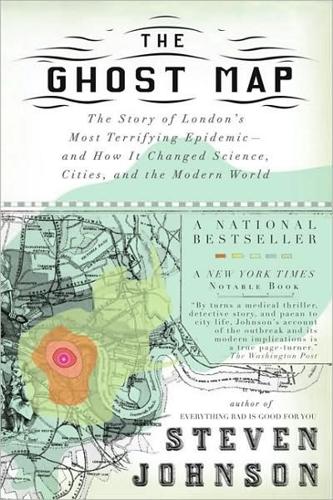
The Ghost Map: A Street, an Epidemic and the Hidden Power of Urban Networks.
by
Steven Johnson
Published 18 Oct 2006
On a planet of more than 6 billion people, there have to be thousands and thousands of lost souls ready and willing to detonate one of those weapons in a crowded urban center. How long before those two sets intersect? That driver with the rigged SUV isn’t going to be deterred by the conventional logic of détente-era nuclear politics. Mutually assured destruction isn’t much of a deterrent to him. Mutually assured destruction, in fact, sounds like a pretty good outcome. Game theory has always had trouble accounting for players with no rational self-interest, and the theories of nuclear deterrence are no exception. And once the bomb goes off, there’s no second line of defense—no vaccines or quarantines to block off the worst-case scenario.
…
page 254 But if the trends of asymmetric warfare continue The one thing we can do now to prevent such a dark future is to radically reduce, if not eliminate, the current stockpiles of nuclear weapons in the world. The United States alone has around 10,000 weapons in its active arsenal. This is madness in an age of asymmetric warfare, where mutually assured destruction is meaningless. (It was madness in the cold war too, but for different reasons.) If all the nuclear powers agreed to limit their stockpiles to no more than ten weapons per country—thereby reducing the total number of weapons in the world from 20,000 to less than a hundred—we would reduce by more than an order of magnitude the risk that a weapon would fall into the wrong hands.
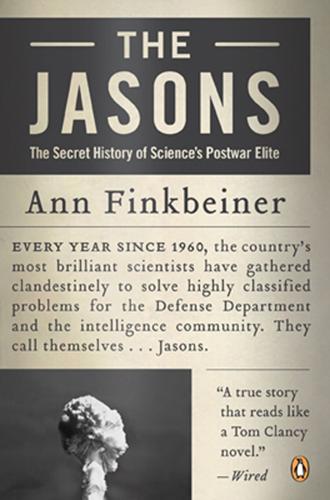
The Jasons: The Secret History of Science's Postwar Elite
by
Ann Finkbeiner
Published 26 Mar 2007
A few idealistic voices—like Freeman Dyson’s—suggested that nonworking nuclear weapons might be the solution to everyone’s problems. More realistic voices answered that one-sided disarmament in an armed world was bad policy, and that mutually assured destruction (with the famous acronym MAD) had prevented nuclear war for over fifty years. So the question was, how would you know you could mutually assure destruction unless you tested the weapons? And if you needed to test the weapons, how could you sign a Comprehensive Test Ban Treaty? The arms controller Jasons had done scattered studies on every stage of the test ban arguments: on seismic verification of underground tests in the 1960s, and on other signatures of nuclear explosions in the 1970s and 1980s.
…
Christofilos said this system would transmit six words per minute. He figured it would cost $138 million. Such an uninformative one-way signal is essentially a beeper; Jasons call it a “bell-ringer.” “The signals would be only of emergency-type signals, like ‘Go to hell,’” said Ruina. Or, said a Jason, “‘My God, we’ve an atomic attack. Go and mutually assure destruction.’” Christofilos wrote around eight Jason reports on Bassoon/Sanguine. They were all classified confidential or secret. He seems to have worked alone on them; the reports list no other authors. The Jasons nevertheless all know about this project—it’s one of the few they mention without being asked—though they are vague on the details, either because they don’t know them or because they don’t remember which ones are classified.
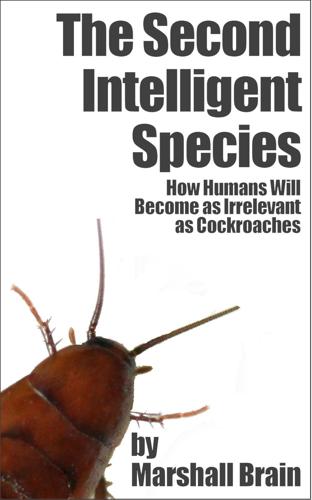
The Second Intelligent Species: How Humans Will Become as Irrelevant as Cockroaches
by
Marshall Brain
Published 6 Apr 2015
And Russia has about the same. Each warhead can destroy an entire city, killing millions of people. Why do we have all of these missiles, which pose an immediate existential threat to the entire ecosystem of the planet as well as our own species? We call it the doctrine of mutually assured destruction. "Mutually Assured Destruction" - MAD - even the name sounds like we are insane. Yet this is the best idea we have been able to come up with as a species for dealing with nuclear bombs. And many other countries have warheads as well that they could unleash at any moment for any insane reason. In addition, we worry that terrorists will get hold of a nuclear device and detonate it in a major city, killing millions.
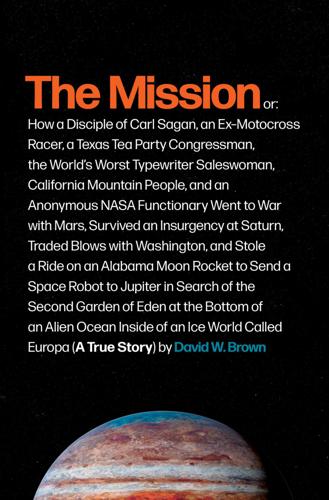
The Mission: A True Story
by
David W. Brown
Published 26 Jan 2021
MAYBE REAGAN WAS playing four-dimensional chess, though more likely it was just a happy accident, but while he was cutting planetary science to the bone, and then shaving bone to the marrow, and then just sort of idly needling around in there to see which bits of gooey tissue NASA could do without, the president was also funding a secret space program that would eventually pay Apollo-level technological dividends and enable planetary exploration for the next two decades.109 It was called the Strategic Defense Initiative and, as envisioned, would be a missile defense shield designed to deflect or destroy an incoming Soviet nuclear strike.110 The idea was to nullify the doctrine of Mutually Assured Destruction, which asserted that if Ivan launched nukes at Uncle Sam (or vice versa), it would be suicide because the other side would retaliate with everything it’s got.111, 112 The Strategic Defense Initiative, went the argument, would deter the Soviets from attacking because we would survive the onslaught unscathed.
…
The Mariner camera couldn’t capture animals scurrying about, of course, but it might give us the broad strokes of what the die-hard creatures of cruel, cold, crimson Mars were up against.322 So while the theoretical mattered, a lot of Gavin’s research required reading about the practical, and he zeroed in on the Minuteman 1 intercontinental ballistic missile program. Now there was a program where reliability mattered! And not only to aerospace engineers, who had a financial interest in flying solid hardware, but also to the survival of the human race, which had gone all in on the concept of Mutually Assured Destruction. The Minutemen had to launch on command the first time, every time; they were, after all, the only thing standing between peace and the mine-shaft gap. The only difference between the Minuteman and Mariner, from Tom’s perspective, was total hardware lifetime: a Minuteman had a very short-duration mission, launch to flash.
…
“Strategic Defense Initiative (SDI),” Atomic Heritage Foundation, last modified July 18, 2018, https://www.atomicheritage.org/history/strategic-defense-initiative-sdi. 111.A. Wellerstein, “Why Build So Many Nukes? Factors Behind the Size of the Cold War Stockpile” (presentation, Putting the Genie Back in the Bottle: MIT Faculty and Nuclear Arms Reduction, Cambridge, MA, May 2011), http://web.mit.edu/fnl/volume/235/wallslides.pdf. Mutually Assured Destruction, of course, required both countries to build ever-growing arsenals of increasingly sophisticated doomsday weaponry, keep them on constant alert, and have them pointed perpetually at each other, because if you couldn’t absolutely annihilate your opponent, destruction was not mutually assured.
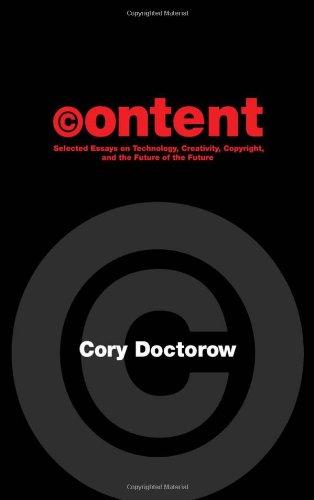
Content: Selected Essays on Technology, Creativity, Copyright, and the Future of the Future
by
Cory Doctorow
Published 15 Sep 2008
So long as everyone with a huge portfolio of unexamined, overlapping, generous patents was competing with similarly situated manufacturers, there was a mutually assured destruction — a kind of detente represented by cross-licensing deals for patent portfolios. But the rise of the patent troll changed all that. Patent trolls don't make products. They make lawsuits. They buy up the ridiculous patents of failed companies and sue the everloving hell out of everyone they can find, building up a war-chest from easy victories against little guys that can be used to fund more serious campaigns against larger organizations. Since there are no products to disrupt with a countersuit, there's no mutually assured destruction. If a shakedown artist can buy up some bogus patents and use them to put the screws to you, then it's only a matter of time until the same grifters latch onto the innumerable "agreements" that your company has formed with a desperate dot-bomb looking for an exit strategy.
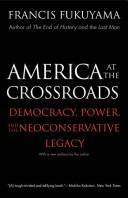
America at the Crossroads: Democracy, Power, and the Neoconservative Legacy
by
Francis Fukuyama
Published 20 Mar 2007
It is not clear whether Albert Wohlstetter ever came to regard himself as a neoconservative, but he and his students merged more or less seamlessly with this movement because of his dark view of the threat posed by the Soviet Union. He did not accept the received wisdom of the 1960s and 1970s that mutual assured destruction (MAD) would be sufficient to deter the Soviet Union. Wohlstetter argued that the threat to wipe out tens or hundreds of millions of civilians was both immoral and noncredible. He noted that with increasing ICBM accuracies and the deployment of multiple warheads, a so-called counterforce war might one day become thinkable—for example, if the Soviets launched a first strike on American nuclear bases, wiping out the bulk of U.S. land-based nuclear forces and holding back enough weapons to deter a submarine-based counterstrike on cities.
…
.: as instrument of foreign policy, 36, 62-64; limits of, 181-82, 188-89; role of, in Cold War, 59 Millennium Challenge Account (MCA), 147-48, 153-54 Millennium Challenge Corporation, H9> 153 Millennium Development Goals, 142, 2iin 33 Milosevic, Slobodan, 42, 136 MIRVs (multiple independently targetable reentry vehicles), 35 Mises, Ludwigvon, 39 modernity, philosophical crisis of, 22 modernization, 54, 57, 139; in Japan, 129; and jihadism, 74; and political development, 125-26 Moynihan, Daniel Patrick, 15, 16-17, 18-19, 2 °> 37 multilateralism, 11,64-65, 153-54, 163, 173; in Asia, 174-75 multi-multilateralism, 158, 168-69, 172, 2i5n2 222 Murray, Charles, 18-19, 2 ° Muslims, 69-70; cultural diversity of, 75. See also jihadists mutual assured destruction (MAD), 33 Myroie, Laurie, 2031121 Nasser, Gamal Abdel, 85 National Democratic Institute (NDI), 150 National Endowment for Democracy (NED), 134, 137, 150, 187 national greatness, 42-43 National Interest, 20, 40 National Security Strategy of the United States (NSS), 3, 81-83, 88 > IOI » io 4> 142, 184, 2oi-2nn nation-building, 9-10, 63-64, 131, 151-52; George W.
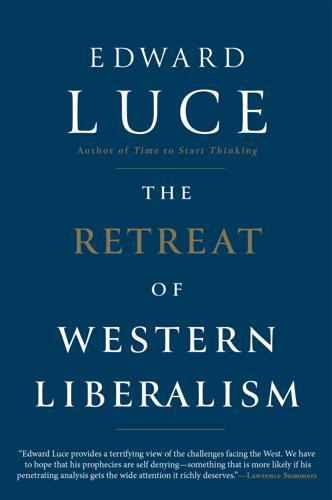
The Retreat of Western Liberalism
by
Edward Luce
Published 20 Apr 2017
Although the Cold War involved near-misses, most notably during the Cuban Missile Crisis of 1962, the Americans and the Soviets gradually came to understand each other’s signals. Eventually each was able to read the other’s nuclear grammar fluently. After 1962 the two sides set up a nuclear hotline and even agreed to exchanges of personnel so that they could minimise the risk they would stumble into war. The doctrine of mutually assured destruction worked because it was based on an understanding between two highly organised actors. Russia and the United States have both cut their stockpiles of nuclear weapons drastically since the end of the Cold War. Today their arsenals stand at roughly a tenth of where they were at their peak.
…
Suppose also that you knew the identity of the attacker. Would a military response be merited? If not, why not? If so, where do you stop? The line between reality and virtual reality is blurring. Some of America’s best strategists have been working on the problem for almost a decade. They have yet to come up with a clear doctrine. Mutually assured destruction does not work, yet nothing has emerged to take its place. The US Cyber Command believes the next global war will start in cyberspace. Doubtless they are talking up their own book. But they are right to worry that the temptation to strike by stealth is irresistible on a battlefield in which there are no rules of engagement.
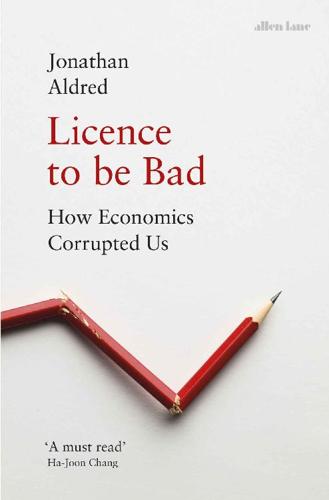
Licence to be Bad
by
Jonathan Aldred
Published 5 Jun 2019
To address the problem of multiple Nash equilibria, the obvious line of attack is to find grounds for ruling out some of these equilibria as inferior. Selten argued that some equilibria are inferior because they can only emerge when players make threats which are not credible. For example, the MAD (Mutually Assured Destruction) doctrine of nuclear deterrence relies on nuclear powers threatening catastrophic retaliation in response to a nuclear attack. But the threat is not credible if the recipient of the threat does not believe it would be carried out. In Dr Strangelove the Russians designed their Doomsday machine to trigger catastrophic retaliation automatically and irrevocably once an attack had been detected, removing any possibility of non-retaliation and hence making their threat completely credible.fn3 In business, a monopoly firm in a particular market will often loudly threaten a price war to any firm considering entering the market as a competitor.
…
His career reads like that of a Grade-A Cold War defence hawk. From 1948 to 1953 he worked for the Marshall Plan and then the White House; after that he had stints at RAND and various consultancy jobs in Washington drawing on his expertise in military strategy. Although it was John von Neumann who invented the infamous nuclear war jargon ‘mutually assured destruction’ (largely because he liked the acronym MAD), it was Schelling who became a MAD expert. Schelling was close to some of the most influential figures in the Cold War. In his day job as an economics professor at Harvard he co-taught a course on foreign policy with one of the dominant minds behind post-war US foreign policy, Henry Kissinger.
…
objection, 107, 119–20 Friedman, Milton, 4–5, 56, 69, 84, 88, 126, 189 awarded Nobel Prize, 132 and business responsibility, 2, 152 debate with Coase at Director’s house, 50, 132 as dominant Chicago thinker, 50, 132 on fairness and justice, 60 flawed arguments of, 132–3 influence on modern economics, 131–2 and monetarism, 87, 132, 232 at Mont Pèlerin, 5, 132 rejects need for realistic assumptions, 132–3 Sheraton Hall address (December 1967), 132 ‘The Methodology of Positive Economics’ (essay, 1953), 132–3 ‘The Social Responsibility of Business is to Increase Its Profits’ (article, 1970), 2, 152 Frost, Gerald, Antony Fisher: Champion of Liberty (2002), 7* Galbraith, John Kenneth, 242–3 game theory assumptions of ‘rational behaviour’, 18, 28, 29–32, 35–8, 41–3, 70, 124 Axelrod’s law of the instrument, 41 backward induction procedure, 36–7, 38 and Cold War nuclear strategy, 18, 20, 21–2, 24, 27, 33–4, 35, 70, 73, 198 focus on consequences alone, 43 as form of zombie science, 41 and human awareness, 21–3, 24–32 and interdependence, 23 limitations of, 32, 33–4, 37–40, 41–3 minimax solution, 22 multiplicity problem, 33–4, 35–7, 38 Nash equilibrium, 22–3, 24, 25, 27–8, 33–4, 41–2 the Nash program, 25 and nature of trust, 28–31, 41 the Prisoner’s Dilemma, 26–8, 29–32, 42–3 real world as problem for, 21–2, 24–5, 29, 31–2, 37–8, 39–40, 41–3 rise of in economics, 40–41 and Russell’s Chicken, 33–4 and Schelling, 138–9 and spectrum auctions, 39–40 theory of repeated games, 29–30, 35 tit-for-tat, 30–31 and trust, 29, 30–31, 32, 41 uses of, 23–4, 34, 38–9 view of humanity as non-cooperative/distrustful, 18, 21–2, 25–32, 36–8, 41–3 Von Neumann as father of, 18, 19, 20–22, 25, 26, 28, 30, 34, 41 zero-sum games, 21–2 Gates, Bill, 221–2 Geithner, Tim, 105 gender, 127–8, 130–31, 133, 156 General Electric, 159 General Motors (GM), 215–16 George, Prince of Cambridge, 98 Glass–Steagall Act, repeal of, 194 globalization, 215, 220 Goldman Sachs, 182, 184, 192 Google, 105 Gore, Al, 39 Great Reform Act (1832), 120 greed, 1–2, 196, 197, 204, 229, 238 Greenspan, Alan, 57, 203 Gruber, Jonathan, 245 Haifa, Israel, 158, 161 Harper, ‘Baldy’, 7 Harsanyi, John, 34–5, 40 Harvard Business Review, 153 Hayek, Friedrich and Arrow’s framework, 78–9 economics as all of life, 8 and Antony Fisher, 6–7 influence on Thatcher, 6, 7 and Keynesian economics, 5–6 and legal frameworks, 7* at LSE, 4 at Mont Pèlerin, 4, 5, 6, 15 and Olson’s analysis, 104 and public choice theory, 89 rejection of incentive schemes, 156 ‘spontaneous order’ idea, 30 The Road to Serfdom (1944), 4, 5, 6, 78–9, 94 healthcare, 91–2, 93, 178, 230, 236 hedge funds, 201, 219, 243–4 Heilbroner, Robert, The Worldly Philosophers, 252 Heller, Joseph, Catch-22, 98, 107, 243–4 Helmsley, Leona, 105 hero myths, 221–3, 224 Hewlett-Packard, 159 hippie countercultural, 100 Hoffman, Abbie, Steal This Book, 100 Holmström, Bengt, 229–30 homo economicus, 9, 10, 12, 140, 156–7 and Gary Becker, 126, 129, 133, 136 and behaviour of real people, 15, 136, 144–5, 171, 172, 173, 250–51 and behavioural economics, 170, 171, 172, 255 long shadow cast by, 248 and Nudge economists, 13, 172, 173, 174–5, 177 Hooke, Robert, 223 housing market, 128–9, 196, 240–41 separate doors for poor people, 243 Hume, David, 111 Huxley, Thomas, 114 IBM, 181, 222 identity, 32, 165–6, 168, 180 Illinois, state of, 46–7 immigration, 125, 146 Impossibility Theorem, 72, 73–4, 75, 89, 97 Arrow’s assumptions, 80, 81, 82 and Duncan Black, 77–8 and free marketeers, 78–9, 82 as misunderstood and misrepresented, 76–7, 79–82 ‘paradox of voting’, 75–7 as readily solved, 76–7, 79–80 Sen’s mathematical framework, 80–81 incentives adverse effect on autonomy, 164, 165–6, 168, 169–70, 180 authority figure–autonomy contradiction, 180 and behavioural economics, 171, 175, 176–7 cash and non-cash gifts, 161–2 context and culture, 175–6 contrast with rewards and punishments, 176–7 ‘crowding in’, 176 crowding out of prior motives, 160–61, 162–3, 164, 165–6, 171, 176 impact of economists’ ideas, 156–7, 178–80 and intrinsic motivations, 158–60, 161–3, 164, 165–6, 176 and moral disengagement, 162, 163, 164, 166 morally wrong/corrupting, 168–9 origins in behaviourism, 154 and orthodox theory of motivation, 157–8, 164, 166–7, 168–70, 178–9 payments to blood donors, 162–3, 164, 169, 176 as pervasive in modern era, 155–6 respectful use of, 175, 177–8 successful, 159–60 as tools of control/power, 155–7, 158–60, 161, 164, 167, 178 Indecent Proposal (film, 1993), 168 India, 123, 175 individualism, 82, 117 and Becker, 134, 135–8 see also freedom, individual Industrial Revolution, 223 inequality and access to lifeboats, 150–51 and climate change, 207–9 correlation with low social mobility, 227–8, 243 and demand for positional goods, 239–41 and economic imperialism, 145–7, 148, 151, 207 and efficiency wages, 237–8 entrenched self-deluding justifications for, 242–3 and executive pay, 215–16, 219, 224, 228–30, 234, 238 as falling in 1940–80 period, 215, 216 Great Gatsby Curve, 227–8, 243 hero myths, 221–3, 224 increases in as self-perpetuating, 227–8, 230–31, 243 as increasing since 1970s, 2–3, 215–16, 220–21 and lower growth levels, 239 mainstream political consensus on, 216, 217, 218, 219–21 marginal productivity theory, 223–4, 228 new doctrine on taxation since 1970s, 232–5 and Pareto, 217, 218–19, 220 poverty as waste of productive capacity, 238–9 public attitudes to, 221, 226–8 rises in as not inevitable, 220, 221, 242 role of luck downplayed, 222, 224–6, 243 scale-invariant nature of, 219, 220 ‘socialism for the rich’, 230 Thatcher’s praise of, 216 and top-rate tax cuts, 231, 233–5, 239 trickle-down economics, 232–3 US and European attitudes to, 226–7 ‘you deserve what you get’ belief, 223–6, 227–8, 236, 243 innovation, 222–3, 242 Inside Job (documentary, 2010), 88 Institute of Economic Affairs, 7–8, 15, 162–3 intellectual property law, 57, 68, 236 Ishiguro, Kazuo, Never Let Me Go, 148 Jensen, Michael, 229 Journal of Law and Economics, 49 justice, 1, 55, 57–62, 125, 137 Kahn, Herman, 18, 33 Kahneman, Daniel, 170–72, 173, 179, 202–3, 212, 226 Kennedy, President John, 139–40 Keynes, John Maynard, 11, 21, 162, 186, 204 and Buchanan’s ideology, 87 dentistry comparison, 258–9, 261 on economics as moral science, 252–3 Friedman’s challenge to orthodoxy of, 132 Hayek’s view of, 5–6 massive influence of, 3–4, 5–6 on power of economic ideas, 15 and probability, 185, 186–7, 188–9, 190, 210 vision of the ideal economist, 20 General Theory (1936), 15, 188–9 Khomeini, Ayatollah, 128 Khrushchev, Nikita, 139–40, 181 Kilburn Grammar School, 48 Kildall, Gary, 222 Kissinger, Henry, 184 Knight, Frank, 185–6, 212 Krugman, Paul, 248 Kubrick, Stanley, 35*, 139 labour child labour, 124, 146 and efficiency wages, 237–8 labour-intensive services, 90, 92–3 lumpenproletariat, 237 Olson’s hostility to unions, 104 Adam Smith’s ‘division of labour’ concept, 128 Laffer, Arthur, 232–3, 234 Lancet (medical journal), 257 Larkin, Philip, 67 law and economics movement, 40, 55, 56–63, 64–7 Lazear, Edward, ‘Economic Imperialism’, 246 legal system, 7* and blame for accidents, 55, 60–61 and Chicago School, 49, 50–52, 55 and Coase Theorem, 47, 49, 50–55, 63–6 criminal responsibility, 111, 137, 152 economic imperialist view of, 137 law and economics movement, 40, 55, 56–63, 64–7 ‘mimic the market’ approach, 61–3, 65 Posner’s wealth-maximization principle, 57–63, 64–7, 137 precautionary principle, 211–12, 214 transaction costs, 51–3, 54–5, 61, 62, 63–4, 68 Lehmann Brothers, 194 Lexecon, 58, 68 Linda Problem, 202–3 LineStanding.com, 123 Little Zheng, 123, 124 Lloyd Webber, Andrew, 234–5, 236 lobbying, 7, 8, 88, 115, 123, 125, 146, 230, 231, 238 loft-insulation schemes, 172–3 logic, mathematical, 74–5 The Logic of Life (Tim Harford, 2008), 130 London School of Economics (LSE), 4, 48 Long-Term Capital Management (LTCM), 201, 257 Machiavelli, Niccoló, 89, 94 Mafia, 30 malaria treatments, 125, 149 management science, 153–4, 155 Mandelbrot, Benoît, 195, 196, 201 Mankiw, Greg, 11 marginal productivity theory, 223–4 Markowitz, Harry, 196–7, 201, 213 Marx, Karl, 11, 101, 102, 104, 111, 223 lumpenproletariat, 237 mathematics, 9–10, 17–18, 19, 21–4, 26, 247, 248, 255, 259 of 2007 financial crash, 194, 195–6 and Ken Arrow, 71, 72, 73–5, 76–7, 82–3, 97 axioms (abstract assumptions), 198 fractals (scale-invariance), 194, 195–6, 201, 219 and orthodox decision theory, 190–91, 214 Ramsey Rule on discounting, 208–9, 212 and Savage, 189–90, 193, 197, 198, 199, 205 and Schelling, 139 Sen’s framework on voting systems, 80–81 standard deviation, 182, 192, 194 and stock market statistics, 190–91, 195–6 use of for military ends, 71–2 maximizing behaviour and Becker, 129–31, 133–4, 147 and catastrophe, 211 and Coase, 47, 55, 59, 61, 63–9 economic imperialism, 124–5, 129–31, 133–4, 147, 148–9 Posner’s wealth-maximization principle, 57–63, 64–7, 137 profit-maximizing firms, 228 see also wealth-maximization principle; welfare maximization McCluskey, Kirsty, 194 McNamara, Robert, 138 median voter theorem, 77, 95–6 Merton, Robert, 201 Meucci, Antonio, 222 microeconomics, 9, 232, 259 Microsoft, 222 Miles, David, 258 Mill, John Stuart, 102, 111, 243 minimum wage, national, 96 mobility, economic and social correlation with inequality, 226–8, 243 as low in UK, 227 as low in USA, 226–7 US–Europe comparisons, 226–7 Modern Times (Chaplin film, 1936), 154 modernism, 67 Moivre, Abraham de, 193 monetarism, 87, 89, 132, 232 monopolies and cartels, 101, 102, 103–4 public sector, 48–9, 50–51, 93–4 Mont Pèlerin Society, 3–9, 13, 15, 132 Morgenstern, Oskar, 20–22, 24–5, 28, 35, 124, 129, 189, 190 Mozart, Wolfgang Amadeus, 91, 92–3 Murphy, Kevin, 229 Mussolini, Benito, 216, 219 Nash equilibrium, 22–3, 24, 25, 27–8, 33–4, 41–2 Nash, John, 17–18, 22–3, 24, 25–6, 27–8, 33–4, 41–2 awarded Nobel Prize, 34–5, 38, 39, 40 mental health problems, 25, 26, 34 National Health Service, 106, 162 ‘neoliberalism’, avoidance of term, 3* Neumann, John von ambition to make economics a science, 20–21, 24–5, 26, 35, 125, 151, 189 as Cold War warrior, 20, 26, 138 and expansion of scope of economics, 124–5 as father of game theory, 18, 19, 20–22, 25, 26, 28, 30, 34, 41 final illness and death of, 19, 34, 35, 43–4 genius of, 19–20 as inspiration for Dr Strangelove, 19 and Nash’s equilibrium, 22–3, 25, 38* simplistic view of humanity, 28 theory of decision-making, 189, 190, 203 neuroscience, 14 New Deal, US, 4, 194, 231 Newton, Isaac, 223 Newtonian mechanics, 21, 24–5 Nixon, Richard, 56, 184, 200 NORAD, Colorado Springs, 181 nuclear weapons, 18–19, 20, 22, 27, 181 and Ellsberg, 200 and game theory, 18, 20, 21–2, 24, 27, 33–4, 35, 70, 73, 198 MAD (Mutually Assured Destruction), 35, 138 and Russell’s Chicken, 33–4 and Schelling, 138, 139 Nudge economists, 13, 171–5, 177–8, 179, 180, 251 Oaten, Mark, 121 Obama, Barack, 110, 121, 157, 172, 180 Olson, Mancur, 103, 108, 109, 119–20, 122 The Logic of Collective Action (1965), 103–4 On the Waterfront (Kazan film, 1954), 165 online invisibility, 100* organs, human, trade in, 65, 123, 124, 145, 147–8 Orwell, George, Nineteen Eighty-Four, 42–3 Osborne, George, 233–4 Packard, David, 159 Paine, Tom, 243 Pareto, Vilfredo 80/20 rule’ 218 and inequality, 217, 218–19, 220 life and background of, 216–17 Pareto efficiency, 217–18, 256* Paul the octopus (World Cup predictor, 2010), 133 pensions, workplace, 172, 174 physics envy, 9, 20–21, 41, 116, 175–6, 212, 247 Piketty, Thomas, 234, 235 plastic shopping bag tax, 159–60 Plato’s Republic, 100–101, 122 political scientists and Duncan Black, 78, 95–6 Black’s median voter theorem, 95–6 Buchanan’s ideology, 84–5 crises of the 1970s, 85–6 influence of Arrow, 72, 81–2, 83 see also public choice theory; social choice theory Posner, Richard, 54, 56–63, 137 ‘mimic the market’ approach, 61–3, 65 ‘The Economics of the Baby Shortage’ (1978), 61 precautionary principle, 211–12, 214 price-fixing, 101, 102, 103–4 Princeton University, 17, 19–20 Prisoner’s Dilemma, 26–8, 29–32, 42–3 prisons, cell upgrades in, 123 privatization, 50, 54, 88, 93–4 probability, 182–4 and Keynes, 185, 186–7, 188–9, 210 Linda Problem, 202–3 modern ideas of, 184–5 Ramsey’s personal probabilities (beliefs as probabilities), 187–8, 190, 197, 198, 199, 204–5 and Savage, 190, 193, 197, 198, 199, 203, 205 ‘Truth and Probability’ (Ramsey paper), 186–8, 189, 190 see also risk and uncertainty Proceedings of the National Academy of Sciences, 22 productivity Baumol’s cost disease, 90–92, 93, 94 and efficiency wages, 237–8 improvement in labour-intensive services, 92–3 labour input, 92 protectionism, 246, 255 psychology availability heuristic, 226 behaviourism, 154–8, 237 and behavioural economics, 12, 170–71 cognitive dissonance, 113–14 and financial incentives, 156–7, 158–60, 163–4, 171 framing effects, 170–71, 259 of free-riding, 113–14, 115 intrinsic motivations, 158–60, 161–3, 164, 165–6, 176 irrational behaviour, 12, 15, 171 learning of social behaviour, 163–4 moral disengagement, 162, 163, 164, 166 motivated beliefs, 227 ‘self-command’ strategies, 140 view of in game theory, 26–31 view of in public choice theory, 85–6 and welfare maximization, 149 ‘you deserve what you get’ belief, 223–6, 227–8, 236, 243 public choice theory as consensus view, 84–5 and crises of the 1970s, 85–6 foolish voter assumption, 86–8 ‘paradox of voter turnout’, 88–9, 95–6, 115–16 partial/self-contradictory application of, 86, 87–9 ‘political overload’ argument, 85, 86–7 ‘public bad, private good’ mantra, 93–4, 97 and resistance to tax rises, 94, 241 self-fulfilling prophecies, 95–7 and selfishness, 85–6, 87–8, 89, 94, 95–7 as time-bomb waiting to explode, 85 public expenditure in 1970s and ’80s, 89 Baumol’s cost disease, 90–92, 93, 94 and Keynesian economics, 4 and public choice theory, 85–8, 89, 241 and tax rises, 241–2 public-sector monopolies, 48–9, 50–51, 93–4 Puzzle of the Harmless Torturers, 118–19 queue-jumping, 123, 124 QWERTY layout, 42 racial discrimination, 126–7, 133, 136, 140 Ramsey, Frank, 186–8, 189, 190, 205, 208 Ramsey Rule, 208–9, 212 RAND Corporation, 17, 41, 103, 138, 139 and Ken Arrow, 70–71, 72–3, 74, 75–6, 77, 78 and behaviourism, 154 and Cold War military strategy, 18, 20, 21–2, 24, 27, 33–4, 70, 73, 75–6, 141, 200, 213 and Ellsberg, 182–4, 187, 197–8, 200 and Russell’s Chicken, 33 Santa Monica offices of, 18 self-image as defender of freedom, 78 rational behaviour assumptions in game theory, 18, 28, 29–32, 35–8, 41–3, 70, 124 axioms (abstract mathematical assumptions), 198 Becker’s version of, 128–9, 135, 140, 151 behavioural economics/Nudge view of, 173, 174–5 distinction between values and tastes, 136–8 economic imperialist view of, 135, 136–8, 140, 151 and free-riding theory, 100–101, 102, 103–4, 107–8, 109–10, 115–16 and orthodox decision theory, 198, 199 public choice theory relates selfishness to, 86 term as scientific-sounding cover, 12 see also homo economicus Reader’s Digest, 5, 6 Reagan, Ronald, 2, 87–8, 89, 104, 132 election of as turning point, 6, 216, 220–21 and top-rate tax cuts, 231, 233 regulators, 1–2 Chicago view of, 40 Reinhart, Carmen, 258 religion, decline of in modern societies, 15, 185 renewable energy, 116 rent-seeking, 230, 238 ‘right to recline’, 63–4 risk and uncertainty bell curve distribution, 191–4, 195, 196–7, 201, 203–4, 257 catastrophes, 181–2, 191, 192, 201, 203–4, 211–12 delusions of quantitative ‘risk management’, 196, 213 Ellsberg’s experiment (1961), 182–4, 187, 197, 198–200 errors in conventional thinking about, 191–2, 193–4, 195–7, 204–5, 213 financial orthodoxy on risk, 196–7, 201–2 and First World War, 185 and fractals (scale-invariance), 194, 195–6, 201 hasard and fortuit, 185* ‘making sense’ of through stories, 202–3 ‘measurable’ and ‘unmeasurable’ distinction, 185–6, 187–9, 190, 210–11, 212–13 measurement in numerical terms, 181–4, 187, 189, 190–94, 196–7, 201–2, 203–5, 212–13 orthodox decision theory, 183–4, 185–6, 189–91, 193–4, 201–2, 203–5, 211, 212–14 our contemporary orthodoxy, 189–91 personal probabilities (beliefs as probabilities), 187–8, 190, 197, 198, 199, 204–5 precautionary principle, 211–12, 214 pure uncertainty, 182–3, 185–6, 187–9, 190, 197, 198–9, 210, 211, 212, 214, 251 redefined as ‘volatility’, 197, 213 the Savage orthodoxy, 190–91, 197, 198–200, 203, 205 scenario planning as crucial, 251 Taleb’s black swans, 192, 194, 201, 203–4 ‘Truth and Probability’ (Ramsey paper), 186–8, 189, 190 urge to actuarial alchemy, 190–91, 197, 201 value of human life (‘statistical lives’), 141–5, 207 see also probability Robertson, Dennis, 13–14 Robinson, Joan, 260 Rodrik, Dani, 255, 260–61 Rogoff, Ken, 258 Rothko, Mark, 4–5 Rumsfeld, Donald, 232–3 Russell, Bertrand, 33–4, 74, 97, 186, 188 Ryanair, 106 Sachs, Jeffrey, 257 Santa Monica, California, 18 Sargent, Tom, 257–8 Savage, Leonard ‘Jimmie’, 189–90, 193, 203, 205scale-invariance, 194, 195–6, 201, 219 Scandinavian countries, 103, 149 Schelling, Thomas, 35* on access to lifeboats, 150–51 awarded Nobel Prize, 138–9 and Cold War nuclear strategy, 138, 139–40 and economic imperialism, 141–5 and game theory, 138–9 and Washington–Moscow hotline, 139–40 work on value of human life, 141–5, 207 ‘The Intimate Contest for Self-command’ (essay, 1980), 140, 145 ‘The Life You Save May be Your Own’ (essay, 1968), 142–5, 207 Schiphol Airport, Amsterdam, 172 Schmidt, Eric, 105 Scholes, Myron, 201 Schwarzman, Stephen, 235 Second World War, 3, 189, 210 selfishness, 41–3, 178–9 and Becker, 129–30 and defence of inequality, 242–3 as free marketeers’ starting point, 10–12, 13–14, 41, 86, 178–9 and game theory, 18 and public choice theory, 85–6, 87–8, 89, 94, 95–7 Selten, Reinhard, 34–5, 36, 38, 40 Sen, Amartya, 29, 80–81 service sector, 90–93, 94 Shakespeare, William, Measure for Measure, 169 Shaw, George Bernard, 101 Shiller, Robert, 247 Simon, Herbert, 223 Skinner, Burrhus, 154–5, 158 Smith, Adam, 101, 111, 122 The Wealth of Nations (1776), 10–11, 188–9 snowflakes, 195 social choice theory, 72 and Ken Arrow, 71–83, 89, 95, 97, 124–5, 129 and Duncan Black, 78, 95 and free marketeers, 79, 82 Sen’s mathematical framework, 80–81 social media, 100* solar panels, 116 Solow, Bob, 163, 223 Sorites paradox, 117–18, 119 sovereign fantasy, 116–17 Soviet Union, 20, 22, 70, 73, 82, 101, 104, 167, 237 spectrum auctions, 39–40, 47, 49 Stalin, Joseph, 70, 73, 101 the state anti-government attitudes in USA, 83–5 antitrust regulation, 56–8 dismissal of almost any role for, 94, 135, 235–6, 241 duty over full employment, 5 economic imperialist arguments for ‘small government’, 135 increased economic role from 1940s, 3–4, 5 interventions over ‘inefficient’ outcomes, 53 and monetarism, 87, 89 and Mont Pèlerin Society, 3, 4, 5 and privatization, 50, 54, 88, 93–4 public-sector monopolies, 48–50, 93–4 replacing of with markets, 79 vital role of, 236 statistical lives, 141–5, 207 Stern, Nick, 206, 209–10 Stigler, George, 50, 51, 56, 69, 88 De Gustibus Non Est Disputandum (with Becker, 1977), 135–6 Stiglitz, Joseph, 237 stock markets ‘Black Monday’ (1987), 192 and fractals (scale-invariance), 194, 195–6, 201 orthodox decision theory, 190–91, 193–4, 201 Strittmatter, Father, 43–4 Summers, Larry, 10, 14 Sunstein, Cass, 173 Nudge (with Richard Thaler, 2008), 171–2, 175 Taleb, Nassim, 192 Tarski, Alfred, 74–5 taxation and Baumol’s cost disease, 94 and demand for positional goods, 239–41 as good thing, 231, 241–2, 243 Laffer curve, 232–3, 234 new doctrine of since 1970s, 232–4 property rights as interdependent with, 235–6 public resistance to tax rises, 94, 239, 241–2 and public spending, 241–2 revenue-maximizing top tax rate, 233–4, 235 tax avoidance and evasion, 99, 105–6, 112–13, 175, 215 ‘tax revolt’ campaigns (1970s USA), 87 ‘tax as theft’ culture, 235–6 top-rate cuts and inequality, 231, 233–5, 239 whines from the super-rich, 234–5, 243 Taylor, Frederick Winslow, 153–4, 155, 167, 178, 237 Thaler, Richard, 13 Nudge (with Cass Sunstein, 2008), 171–2, 175 Thatcher, Margaret, 2, 88, 89, 104, 132 election of as turning point, 6, 216, 220–21 and Hayek, 6, 7 and inequality, 216, 227 privatization programme, 93–4 and top-rate tax cuts, 231 Theory of Games and Economic Behavior (Von Neumann and Morgenstern, 1944), 20, 21, 25, 189 Titanic, sinking of (1912), 150 Titmuss, Richard, The Gift Relationship, 162–3 tobacco-industry lobbyists, 8 totalitarian regimes, 4, 82, 167–8, 216, 219 see also Soviet Union trade union movement, 104 Tragedy of the Commons, 27 Truman, Harry, 20, 237 Trump, Donald, 233 Tucker, Albert, 26–7 Tversky, Amos, 170–72, 173, 202–3, 212, 226 Twitter, 100* Uber, 257 uncertainty see risk and uncertainty The Undercover Economist (Tim Harford, 2005), 130 unemployment and Coase Theorem, 45–7, 64 during Great Depression, 3–4 and Keynesian economics, 4, 5 United Nations, 96 universities auctioning of places, 124, 149–50 incentivization as pervasive, 156 Vietnam War, 56, 198, 200, 249 Villari, Pasquale, 30 Vinci, Leonardo da, 186 Viniar, David, 182, 192 Volkswagen scandal (2016), 2, 151–2 Vonnegut, Kurt, 243–4 voting systems, 72–4, 77, 80, 97 Arrow’s ‘Independence of Irrelevant Alternatives’, 81, 82 Arrow’s ‘Universal Domain’, 81, 82 and free marketeers, 79 ‘hanging chads’ in Florida (2000), 121 recount process in UK, 121 Sen’s mathematical framework, 80–81 Waldfogel, Joel, 161* Wanniski, Jude, 232 Watertown Arsenal, Massachusetts, 153–4 Watson Jr, Thomas J., 181 wealth-maximization principle, 57–63 and Coase, 47, 55, 59, 63–9 as core principle of current economics, 253 created markets, 65–7 extension of scope of, 124–5 and justice, 55, 57–62, 137 and knee space on planes, 63–4 practical problems with negotiations, 62–3 and values more important than efficiency, 64–5, 66–7 welfare maximization, 124–5, 129–31, 133–4, 148–9, 176 behavioural economics/Nudge view of, 173 and vulnerable/powerless people, 146–7, 150 welfare state, 4, 162 Wilson, Charlie, 215 Wittgenstein, Ludwig, 186, 188 Wolfenschiessen (Swiss village), 158, 166–7 Woolf, Virginia, 67 World Bank, 96 World Cup football tournament (2010), 133 World Health Organization, 207 Yale Saturday Evening Pest, 4–5 Yellen, Janet, 237 THE BEGINNING Let the conversation begin … Follow the Penguin twitter.com/penguinukbooks Keep up-to-date with all our stories youtube.com/penguinbooks Pin ‘Penguin Books’ to your pinterest.com/penguinukbooks Like ‘Penguin Books’ on facebook.com/penguinbooks Listen to Penguin at soundcloud.com/penguin-books Find out more about the author and discover more stories like this at penguin.co.uk ALLEN LANE UK | USA | Canada | Ireland | Australia India | New Zealand | South Africa Allen Lane is part of the Penguin Random House group of companies whose addresses can be found at global.penguinrandomhouse.com First published 2019 Copyright © Jonathan Aldred, 2019 The moral right of the author has been asserted Jacket photograph © Getty Images ISBN: 978-0-241-32544-5 This ebook is copyright material and must not be copied, reproduced, transferred, distributed, leased, licensed or publicly performed or used in any way except as specifically permitted in writing by the publishers, as allowed under the terms and conditions under which it was purchased or as strictly permitted by applicable copyright law.

Command and Control: Nuclear Weapons, the Damascus Accident, and the Illusion ofSafety
by
Eric Schlosser
Published 16 Sep 2013
Number—a unique eight-digit number that identifies each of the targets in the Air Force’s Bombing Encyclopedia BMEWS—Ballistic Missile Early Warning System, the radar system built after Sputnik to detect Soviet missiles heading toward the United States BOMARC—a ground-launched antiaircraft missile with an atomic warhead, designed by Boeing (BO) and the Michigan Aerospace Research Center (MARC), that was deployed at sites in the United States and Canada CND—Campaign for Nuclear Disarmament, a British antiwar group whose logo later became known as the “peace symbol” DEFCON—Defense Readiness Condition, the American military’s readiness for hostilities, ranked on a scale from DEFCON 5 (the lowest level of alert) to DEFCON 1 (nuclear war) DEW Line—the Distant Early Warning Line, a radar system that extended across the Arctic in North America to detect Soviet bombers DIRECT—Defense Improved Emergency Message Automatic Transmission System Replacement Command and Control Terminal, the Pentagon computer system currently deployed to send and receive a nuclear attack order DUL—the Deliberate, Unauthorized Launch of a missile ENIAC—the Electronic Numerical Integrator and Computer, America’s first large-scale electronic, digital computer, built for the Army to calculate the trajectory of artillery shells and later used at Los Alamos to help design a thermonuclear weapon EOD—Explosive Ordnance Disposal, the rendering safe of warheads, bombs, and anything else that might detonate FCDA—the Federal Civil Defense Administration, which from 1951 until 1979 advised the American public on how to survive a nuclear war H-Bomb—a hydrogen bomb, the most powerful weapon ever invented, deriving its explosive force not only from nuclear fission but also from nuclear fusion, the elemental power of the sun ICBM—Intercontinental Ballistic Missile, a missile that can propel a nuclear warhead more than 3,400 miles JAG—the nickname for a military attorney, a member of the Judge Advocate General’s Corps K crew—a backup crew for the Titan II missile, on call to give advice during an emergency LOX—liquid oxygen, a propellant that was used as an oxidizer, in combination with rocket fuel, to launch Atlas and Titan I missiles MAD—Mutually Assured Destruction, a nuclear strategy that seeks to maintain peace by ensuring that adversaries have the capability to destroy one another MANIAC—the Mathematical Analyzer, Numerical Integrator, and Computer, an early electronic, digital computer used at Los Alamos to help design the first hydrogen bombs MART—Missile Alarm Response Team, the security police who responded to problems at Titan II missile sites MFT—Mobile Fire Team, a heavily armed four-man team of Air Force security officers MIMS—Missile Inspection and Maintenance Squadron, the repair crews who kept Titan II missiles ready to launch MIRV—Multiple Independently targetable Reentry Vehicle, a ballistic missile carrying two or more warheads that can be aimed at different targets MIT—Massachusetts Institute of Technology MSA—a nickname for the vapor-detection equipment built by the Mine Safety Appliance Company and installed in Titan II silos NATO—North Atlantic Treaty Organization, the military alliance formed in 1949 to defend Western Europe against an attack by the Soviet Union NORAD—North American Air Defense Command, an organization created in 1958 by the United States and Canada to defend against a Soviet attack, later renamed the North American Aerospace Defense Command NRC—Nuclear Regulatory Commission, the federal agency that licenses and regulates civilian nuclear power plants OPLAN—Operations Plan, the term used since 2003 to describe the nuclear war plans of the United States PAL—Permissive Action Link, a coded device installed within a nuclear warhead or bomb, much like a lock, to prevent unauthorized use of the weapon PK—Probability of Kill, the likelihood of a target being destroyed PPM—Parts per Million PTPMU—Propellant Tank Pressure Monitor Unit, the gauge in a Titan II launch control center that provided digital readouts of the fuel and oxidizer pressures within the missile PTS—Propellant Transfer System, the facilities and equipment used to handle the fuel and oxidizer for a Titan II missile RAF—Royal Air Force, the armed service in Great Britain that during the Cold War was responsible for land-based aircraft and missiles RAND—a think tank in Santa Monica, California, created by the Air Force after the Second World War, whose name was derived from the phrase “Research ANd Development” RFHCO—Rocket Fuel Handler’s Clothing Outfit, a liquidproof, vaporproof outfit with an air pack and a bubble helmet that looked like a space suit, commonly known among Titan II crews as a “ref-co” RV—Reentry Vehicle, the nose cone of a missile containing its warhead SAC—Strategic Air Command, the organization that until 1992 was responsible for the long-range bombers, the land-based missiles, and most of the nuclear weapons deployed by the U.S.
…
Once the Soviets felt confident that they could retaliate after being attacked, they’d feel much less pressure to strike first. Leaving the cities of the United States and the Soviet Union vulnerable to annihilation, McNamara now thought, would keep them safe. The strategy was soon known as MAD: “mutually assured destruction.” The strategic thinking at the White House and the Department of Defense, however, didn’t correspond to the targeting policies at SAC headquarters in Omaha. The gulf between theory and practice remained vast. Although the SIOP had been revised during the Kennedy administration, General Power had blocked significant changes in weapon allocation.
…
The failed attempt to decommission an aging weapon system reflected the new balance of power. Robert McNamara had assumed that once the Soviet Union felt confident about its ability to destroy the United States in any nuclear exchange, it would stop building new missiles. But the Soviets didn’t share McNamara’s faith in mutually assured destruction. After the humiliation of the Cuban Missile Crisis, one of their diplomats had told an American counterpart, “You Americans will never be able to do this to us again.” In a rivalry where a nation’s power was measured numerically in warheads and bombs, the Soviet Union now sought to gain the upper hand.
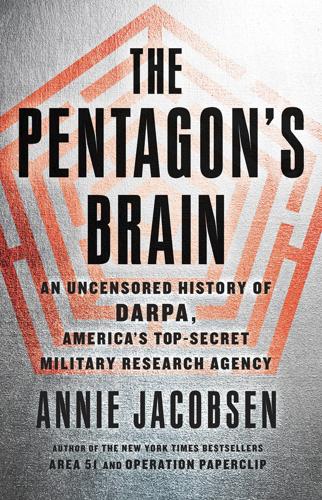
The Pentagon's Brain: An Uncensored History of DARPA, America's Top-Secret Military Research Agency
by
Annie Jacobsen
Published 14 Sep 2015
But as his assistants entered more and more complicated computational requests, von Neumann finally did what human beings do: he erred. The computer did not. It was a revelatory moment in the history of defense science. A machine had just outperformed a brain the Pentagon relied on, one of the greatest minds in the world. The Pentagon’s strategy for nuclear deterrence in the 1950s was based on a notion called mutual assured destruction, or MAD. This was the proposition that neither the Soviets nor the Americans would be willing to launch a nuclear attack against the other because that action would ensure a reciprocal action and ultimately guarantee both sides’ demise. At RAND, analysts began applying the Prisoner’s Dilemma strategy to a nuclear launch, keeping in mind that the driving principle of the dilemma was distrust.
…
President Eisenhower, age seventy-one when he left office, had been a five-star general and served as Supreme Commander of the Allied Forces in Europe during World War II. President Kennedy was a dashing young war hero, full of idealism and enthusiasm, and just forty-three years old. Kennedy sought a more adaptable, collegial style of policy making when it came to issues of national security. The Eisenhower doctrine was based on mutual assured destruction, or MAD. The Kennedy doctrine would become known as “flexible response.” The new president believed that the U.S. military needed to be able to fight limited wars, quickly and with flexibility, anywhere around the world where communism threatened democracy. In describing his approach, Kennedy said that the nation must be ready “to deter all wars, general or limited, nuclear or conventional, large or small.”
…
Gouré claimed that during his trip to Moscow, he had seen firsthand evidence indicating that the Soviet Union had built a vast network of underground bunkers, which would protect the Russian people after a nuclear first strike against the United States. The Soviet action would inevitably be followed by a U.S. nuclear response. The concept of mutual assured destruction was based on the idea that the superpowers would not attack each other, provided they remained equally vulnerable to a nuclear strike. Gouré’s frightening premise suggested that the Soviet Politburo believed they could survive a nuclear war and protect the majority of their population as well.

The Coming Wave: Technology, Power, and the Twenty-First Century's Greatest Dilemma
by
Mustafa Suleyman
Published 4 Sep 2023
The world had come together to decisively arrest the proliferation of nuclear weapons to new states. From the first test, their destructive power was clear. Popular revulsion at the possibility of a thermonuclear apocalypse was a powerful motivator for signing the treaty. But these weapons have also been contained by cold calculation. Mutually assured destruction hemmed in possessors since it soon became clear that using them in anger is a quick way of ensuring your own destruction. They’re also eye-wateringly expensive and difficult to manufacture. Not only do they require rare and difficult-to-handle materials like enriched uranium-235, but maintaining and ultimately decommissioning them is also challenging.
…
Earlier in the chapter I discussed the frictions between the United States and China. Despite their differences there are still obvious places for collaboration between these vying powers. Synthetic biology is a better starting point than AI here, thanks to lower existing competition and the obvious mutually assured destruction of novel biothreats. The SecureDNA project is a good example, laying out a path for governing synthetic biology similarly to how chemical weapons have been curtailed. If China and the United States could create, say, a shared bio-risk observatory, encompassing everything from advanced R&D to deployed commercial applications, it would be a precious area of collaboration to build on.
…
See disinformation/misinformation Mitchell, Melanie, 73 Model T, 24 Modern Turing Test, 76–77, 78, 115, 190, 210 Mojica, Francisco, 129–30 Montreal Protocol (1987), 45, 263 Moore, Gordon, 32–33, 35 Moore’s Law, 32–33, 67, 81, 108 Motorwagen, 24 Mumford, Lewis, 29, 217 mutually assured destruction, 43 N nanotechnology, 101 narrow path, defined, viii National Laboratory for Quantum Information Sciences (China), 122 nation-state fragility amplifiers, vii, 11 AI and, 166–67 authoritarianism and, 158–59 bad actor empowerment and, 165–66, 168 cyberattacks and, 160–63 democracies and, 158, 185 disinformation and, 169–73 fragility and, 152–54 globalization and, 155–56 inadvertent, 173–77 military applications and, 167–69 power and, 163–64 technological unemployment and, 177–81 nation-states containment and, 143, 159 economic inequality and, 153–54 equilibrium of, 147 functions of, 158 importance of, 151–52 regulation and, 230–31 technology symbiosis with, 156–58 trust and, 152–53 See also geopolitics; governments; nation-state fragility amplifiers Neuralink, 91 neural networks, 59, 64 See also deep learning 1984 (Orwell), 196 Nobel, Alfred, 35 Nordhaus, William, 30–31 North Korea, 44, 161 NotPetya, 161–62, 163 Noyce, Robert, 32 nuclear technology arms race rhetoric and, 126 catastrophe and, 205 containment of, 42–45, 264–65 development of, 41–42 ego and, 141 safety and, 241 NVIDIA, 130, 250, 251 O Odin, 82 offensive vs. defensive capabilities, 157, 234 off-grid living, 198 off switches, 244–45 omni-use technology, 105, 110–12 AI and, 111, 130 containment and, 233 contradictions and, 202 power and, 182 regulation and, 229–30 OpenAI, 62, 64, 69, 251 openness imperative, 127–29 opioids, 36 Oppenheimer, J.
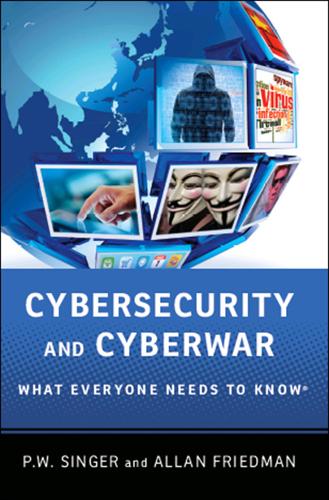
Cybersecurity: What Everyone Needs to Know
by
P. W. Singer
and
Allan Friedman
Published 3 Jan 2014
Of note, it wouldn’t just be able to respond with counter cyber weapons, but also would include “Global selective strike systems e.g. penetrating bomber, submarines with long range cruise missiles, and Conventional Prompt Global Strike [a ballistic missile].” Foreign Policy magazine’s reaction to the news perhaps sums it up the best: “Wow.” When we think about deterrence, what most often comes to mind is the Cold War model of MAD, mutually assured destruction. Any attack would be met with an overwhelming counterstrike that would destroy the aggressor as well as most life on the planet, making any first strike literally mad. Yet rather than just getting MAD, deterrence really is about the ability to alter an adversary’s actions by changing its cost-benefit calculations.
…
multifactor authentication: A layered approach to security uses two or more mechanisms to authenticate identity, such as something the user knows, like a password, something the user has (like a smart card), where the user is, and/or something the user is physically, such as a biometric characteristic like the fingerprint. mutually assured destruction (MAD): The military strategy of a “balance of terror” that held during the Cold War. The great powers shied away from direct conflict by MAD guaranteeing that the initiator of any hostilities would also be destroyed. National Institute of Standards and Technology (NIST): Located in the US Department of Commerce, NIST is the federal agency that works to develop and apply new standards and frameworks, especially for areas where industry has no clear consensus.
…
See digital currency logic bomb, 93, 124 Lucas, George, 119 Lynn, William, 97–98, 135–136 malware characteristics of, 33–34, 154, 157–159, 174, 251 consequences of, 132, 147–149 defending against, 60–62, 205–206, 212, 224–225 (see also Conficker; DNS Changer Virus; Stuxnet) examples of, 58, 65, 72–73, 75, 91, 115–119 Mandiant, 76, 226 Manning, Bradley, 38, 52–53, 55, Markov, Sergei, 110 McAfee, 60, 91, 157 McConnell, Mike, 99, 151, 196 McGeehan, Ryan, 216 metadata, 104, 250 mobile device, 14, 32, 246, 250–252 Moltke, Helmuth Graf, 212 money mules, 86, 217 Moore, Tyler, 231 Morse code, 181 multifactor authentication, 244 Mulvenon, James, 139, 161 mutually assured destruction (MAD), 145 Nacht, Michael, 157 Nasibett, John, 248 National Institute of Standards and Technology (NIST), 201, 204, 212 National Security Agency (NSA), 50, 104, 134, 140–141, 199–200, 209 network-centric, 129 New York Times, 76, 95, 128, 141, 213, 226 North Atlantic Treaty Organization (NATO), 122–124 North Korea, 126–127, 151, 182, 191, nuclear weapons, 7, 71, 99, 137–138, 144–147, 160–162, 190, 247 Nye, Joseph, 3, 152 Obama, Barrack, 2–3, 202, 204 Operation Orchard, 126–128 Operation Shady RAT, 58, 91–93 packet, 17–18, 23–24, 166 Pac-Man, 46 Pakistan, 21, 25, 102 Palmer, Alan, 237 Panetta, Leon, 146 password, 32, 40, 60, 65, 103, 241–244 patch, 62–63, 72, 139, 218, 245 patriotic hacking, 74, 110–114, 142, 179–180, 186 PayPal, 54, 83, 195, 206–207 Pearl Harbor, 37, 68, 70, 165, People’s Liberation Army (PLA), 114, 140–143 Petraeus, David, 33 phishing, 40–41, 57–58, 86, 217, 222–223 piracy cyber, 83, 139, 179–180, 189, 194 maritime, 177–179 pornography, 20, 40, 105, 109, 206–207 Postel, Jon, 26, 29 privacy, 33–35, 74, 106, 108–110, 175, 199, 208, 218, 228, 234 protocol, 18, 22–23, 110, 140, 227 pwn, 41, 58 Pyrrhic Victory, 156 Pyrrhus of Epirus.

Thank You for Being Late: An Optimist's Guide to Thriving in the Age of Accelerations
by
Thomas L. Friedman
Published 22 Nov 2016
So breakers can tap this energy source to amplify their power of one—and to connect, communicate, and collaborate with those of like mind—just as easily as any maker. If today’s breakers are much more empowered, they are also less easily deterred. There is no mutual assured destruction—MAD—doctrine keeping Al Qaeda or ISIS from going to extremes. Just the opposite: for the jihadist suicide bombers, mutual assured destruction is like an invitation to a party and a date with ninety-nine virgins. As the Harvard University strategist Graham Allison summed it up: “Historically, there has always been a gap between people’s individual anger and what they could do with their anger.
…
The two superpowers even maintained a “hotline”—a special communication system connecting the White House and the Kremlin—so each could clear up any misunderstanding with the other to prevent any direct hot wars with nuclear weapons. Strategically, both sides deployed enough nuclear weapons to guarantee not only a first-strike capability but also a retaliatory second-strike capability if the other side fired first, creating a system of “mutual assured destruction,” or MAD, which all but guaranteed that neither side would ever use any of their atomic weapons. More important, though, the intense competition between America and the Soviet Union to collect allies on their respective sides of the chessboard provided a steady flow of resources to create and reinforce order in so many of these new states, which enabled many of them to get by with just C+ leadership—or, to put it in human terms, to get by without exercising regularly, lowering their cholesterol, building muscle, studying hard, or increasing their heart rate.
…
Moore’s law; climate change and; computing power and; financial flows and; the Market and morality, see ethics, innovation in Morning Edition (radio show) mortality rates Mortenson, David Mother Nature; adaptability of; as complex system; as entrepreneurial; interdependence in; as political mentor; resilience of Mother Nature, human impact on; black elephants in; deniers of; Great Acceleration in; natural buffers and adaptive responses to; novel entities introduced by; planetary boundaries of, see planetary boundaries; stewardship and; see also biodiversity loss; climate change; population growth Mubarak, Hosni Mukunda, Gautam Muller, Wayne Mundie, Craig Muñoz, Andrés, Jr. Murthy, Vivek Muse (Somali pirate) Muslim Brotherhood mutation mutual assured destruction (MAD) Myers, Richard Namib desert beetle Namibia nanotechnology Naranya NASSCOM Nasser, Gamal Abdel National Aeronautics and Space Administration (NASA) National Geographic Channel National Oceanic and Atmospheric Administration (NOAA) National Public Radio national security Native Americans NATO natural selection Nature Navarro, Joe Naylor, Kit NBD Nano Ndiaeye, Mayoro Ndiamaguene, Senegal Ndiaye, Ndiougua Ndiaye, Ousmane neo-Nazis Neota Logic .NET Netflix Netscape networking; fiber optics and; latency in; Moore’s law and; software-enabled; wireless Network Lobby for Catholic Social Justice New Deal New Media Inc.
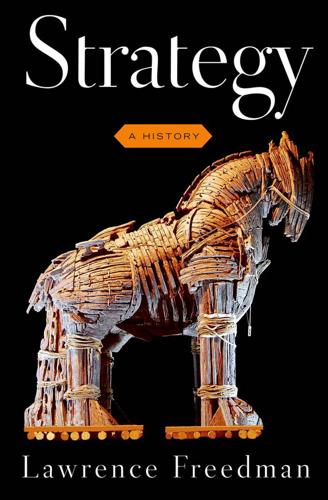
Strategy: A History
by
Lawrence Freedman
Published 31 Oct 2013
By the mid-1960s, fears eased of a technological arms race that might encourage either side to unleash a surprise attack. For the foreseeable future, each side could eliminate the other as a modern industrial state. Robert McNamara, as secretary of defense, argued that so long as the two superpowers had confidence in their capacity for mutual assured destruction—an ability to impose “unacceptable damage” defined as 25 percent of population and 50 percent of industry—the relationship between the two would be stable. These levels, it should be noted, reflected less a judgment about the tolerances of modern societies and more the point at which extra explosions would result in diminishing marginal returns measured by new damage and casualties, the point at which—to use Winston Churchill’s vivid phrase—“all you are going to do is make the rubble bounce.”
…
What they thought was truly distinctive to their type of warfare was the attention paid to political education and propaganda. Vietnam, a war for which the civilian strategists had not prepared and on which they had relatively little of value to say, marked the end of the “golden age” of strategic studies. Just as the arrival of mutual assured destruction and a period of relative calm took the urgency out of the Cold War, Vietnam “poisoned the academic well.”43 Colin Gray charged the civilian “men of ideas” with being overconfident about the ease with which theory might be transferred to the “world of action.” The prophets had become courtiers, living off their intellectual capital.
…
Furthermore, while the United States’ evident military superiority in a particular type of war was likely to encourage others to fight in different ways, that military capacity would also constrain opponents’ ambitions. As a regular conventional war against the United States appeared to be an increasingly foolish proposition, especially after its convincing performance in the 1991 Gulf War, one form of potential challenge to American predominance was removed, just as the prospect of mutual assured destruction had earlier removed nuclear war as a serious policy option. Nonetheless, the presentation of the RMA was shaped by political preferences about the sort of war the Americans would like to fight. It offered a neat fit between a desire to reduce the risks of high casualties or Vietnam-style campaigns and a Western ethical tradition that stressed discrimination and proportionality in warfare.
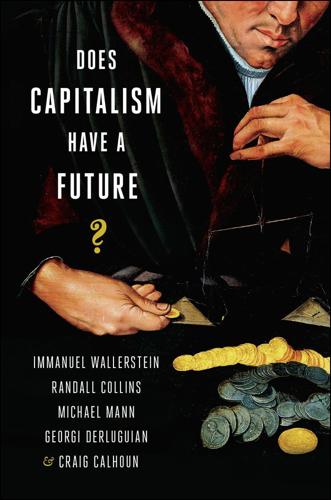
Does Capitalism Have a Future?
by
Immanuel Wallerstein
,
Randall Collins
,
Michael Mann
,
Georgi Derluguian
,
Craig Calhoun
,
Stephen Hoye
and
Audible Studios
Published 15 Nov 2013
What the United States and the Soviet Union in effect agreed to observe was the primary (virtually exclusive) right of each to decide matters within its sphere. A crucial element of this de facto agreement was there would be no attempt to change these boundaries by military (or even political) means. After 1949, this accord was reinforced by the concept of “mutually assured destruction” based on the fact that both sides had sufficient nuclear strength to respond to any attack and destroy the other. The second part of the tacit agreement was the de facto economic disjuncture of the two zones. The United States would offer no assistance in the reconstruction of the Soviet bloc.
…
The severity of this threat is almost completely unpredictable since it depends on a whole sequence of events any one of which might not happen. So far there have only been two-power confrontations, first the United States (and its British and French allies) against the Soviets, then India against Pakistan, flanked by a rather passive China. In these cases the threat of mutually assured destruction has been obvious to the two sides and the response, after a couple of half-crises, has been disciplined avoidance of escalation. Nuclear deterrence has worked. However, when more than two powers are involved in more complex conflicts, outcomes become more fraught. It was multipower conflicts in which some could not read the intentions of others which produced both world wars.
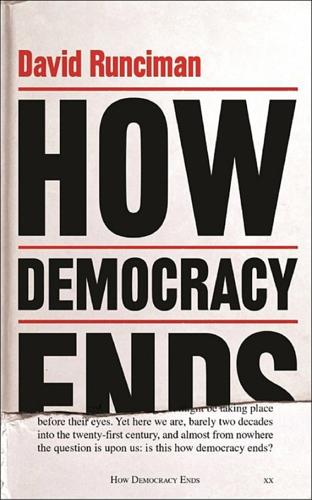
How Democracy Ends
by
David Runciman
Published 9 May 2018
Stanley Kubrick’s 1964 masterpiece Dr Strangelove or: How I Learned to Stop Worrying and Love the Bomb is the great cinematic representation of the paranoid style in American politics. It satirised the world of conspiracy theories and it helped to fuel them. The inevitable secrecy of the nuclear state made it ripe for the wildest kinds of suspicion – in the upside-down universe of Mutually Assured Destruction (MAD) nothing was too crazy to be believable. Today, though we live in an age when conspiracy theories are everywhere, few of them concern nuclear weapons. The paranoia has spread its wings and moved on. Kissinger, once the pre-eminent symbol of the sinister underside of American democracy, is now just another has-been on the international conference circuit.
…
The next time a nuclear weapon is detonated with human beings in the firing line everything changes. Until that happens – or until nuclear weapons are abolished – nothing really changes. The uncertainty persists. The irony is that the use of nuclear weapons is now more likely than it was a generation ago. We no longer live in a world of mutually assured destruction. Nuclear warfare could take place without destroying everything. Terrorists may acquire crude versions of nuclear weapons, in which case any taboo against their use would be meaningless. Equally, the super-sophisticated versions now available to the American military may tempt a commander-in-chief to see them as an extension of conventional warfare, capable of tactical precision and contained fall-out.
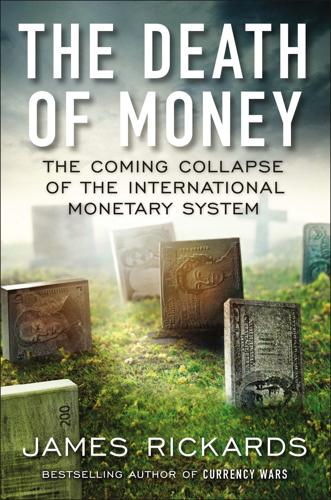
The Death of Money: The Coming Collapse of the International Monetary System
by
James Rickards
Published 7 Apr 2014
In game theory, offense and defense converge, since second-strike retaliation can be sufficiently destructive to deter first-strike attacks. This line of reasoning was the same doctrine Andy Marshall helped develop in nuclear-war-fighting scenarios during the Cold War in the early 1960s. The doctrine was called Mutual Assured Destruction (MAD). Now a new doctrine of Mutual Assured Financial Destruction was emerging. To Andy Marshall, financial weapons were new, but deterrence theory was not. The distinction between offensive and defensive capabilities in financial warfare is not the only dichotomy. There is also a distinction between physical targets, such as exchange computers, and virtual targets, such as business relationships.
…
In this scenario, Taiwan is left to its fate. Andy Marshall’s Air-Sea Battle is deterred by China’s weapons of wealth destruction. Perhaps the greatest financial threat is that these scenarios might play out by accident. In the mid-1960s, at the height of Cold War hysteria about nuclear attacks and Mutual Assured Destruction, two films, Fail-Safe and Dr. Strangelove, dealt with nuclear-war-fighting scenarios between the United States and the Soviet Union. As portrayed in these films, neither side wanted war, but it was launched nonetheless due to computer glitches and actions of rogue officers. Capital markets today are anything but fail-safe.
…
See easy-money policy of Federal Reserve Monnet, Jean, 116 Montenegro, 136 Morell, Mike, 37–39 Morgan, J. P., 220 Morgan Stanley, 32–33, 262 Morocco, 152, 153 Mourdock, Richard, 205 M-Subzero, 280, 283–84 Mubarak, Hosni, 156 Mulheren, John, 18–19, 32–33 Mundell, Robert, 125 Mussolini, Benito, 294 Mutual Assured Destruction (MAD), 46, 63 Mutual Assured Financial Destruction, 46 “Myth of Asia’s Miracle, The” (Krugman), 94 M-Zero (M0), 280 Nakamoto, Satoshi, 254 Napoleon Bonaparte, 114 Napoleonic Wars, 115 NASDAQ Stock Market closure, August 22, 2013, 60, 296–97 National Defense University, 59 National Journal, 63 National Security Agency (NSA), 53 negative real interest rates, 183–84 neofascism, 294–95 Netherlands, 233 New Scotland Yard, 37 New York Times, The, 39, 51, 55, 133, 144 9/11 attacks continuity of government operations, failure of, 63 as failure of imagination, 256, 257 9/11 attacks, and insider trading, 17–28, 63 Mulheren’s opinion of, 18 9/11 Commission’s failure to find connection between, 21–22, 23, 25–27 Poteshman’s statistical analysis of, 22–23 signal amplification and, 24, 25, 26, 27 social network analysis of, 19–20, 25 Swiss Finance Institute study of, 23 9/11 Commission, 21–22, 23, 25–27 9/11 Truth Movement, 27 Nitze, Paul, 43 Nixon, Richard, 1, 2, 5, 58, 85, 209, 220, 235, 252, 285 Nolan, Dave, 32–33 numeraire, gold as, 219–20 Obama, Barack, 37, 57, 129, 156, 202–3, 206, 252–53 Obamacare legislation, 247–48 offensive aspects of financial war, 46 Office of Tailored Access Operations (TAO), 53–54 Oman, 152 one-child policy, China, 95, 102 O’Neill, Jim, 139–40, 146, 150 Operation Duplex-Barbara, 59 Otto I, Emperor, 114 Outline of Reform (C-20), 235 Pakistan, 30, 151, 156 panic dynamic, 62 Panic of 1907, 198 Panic of 2008, 46, 47, 52, 76, 77, 170, 188, 196, 201–2, 211, 296 panics, 224 paper gold transactions, 275–76, 284–86 Paulson, Hank, 206 Pei, Minxin, 106 permanent disability, 246 Peterson, Peter G., 51 Petraeus, David, 37 Pettis, Michael, 108–9 phase transitions, 172, 265, 289–90 Ph.D. standard, 177 physical targets, in financial war, 46 piecemeal engineering, 292 piggyback trading, 24 Plaza Accord, 1985, 118–19 Pleines, Günter, 277 Poland, 200, 233 Ponzi scheme, in wealth management products (WMPs), 102–3 Popper, Karl, 292 Portugal, 128, 200 Poteshman, Allen M., 22–23 pound sterling, 157, 161, 209 price discovery, 68 primary deficit sustainability (PDS) framework, 177–83 Project Prophesy, 28–34 Pufeng, Wang, 44, 45 Putin, Vladimir, 151 Qatar, 152 Qiao Liang (Unrestricted Warfare), 44–45 Qin Dynasty, 90 Qing Dynasty, 90, 91 quantitative easing (QE), 159–61 end of, implications of, 297 by Federal Reserve, 184–85 in Japan, 160–61 in United Kingdom, 160 quantity theory of credit (creditism), 168 quantity theory of money (monetarism), 168–69 Quantum Dawn 2, 54 Rajoy, Mariano, 134 Ramo, Joshua Cooper, 120 random numbers, 268–69 Rauf, Rashid, 37 Ray, Chris, 35–36, 38, 40 Raymond, Lenny, 35 Reagan, Ronald, 2, 63, 118, 166, 176–77, 210 Reagan administration, 235 real incomes, decline in, 78–79 regime uncertainty, 84–87, 125–26 regional trade currency blocs, 255–56 regression analyses, 4–5 Reinhart, Carmen, 182, 183 repatriation of gold, 40, 231–34 Republicans, 175–76, 179, 180, 205, 294 Reserve Bank of Australia, 52–53 revolution in military affairs (RMA), 43–44 Rise of the Warrior Cop (Balko), 294 risk financial, 85, 268–70 gold as risk-free asset, 219 investments and, 218–19 systemic, 11–12, 81, 188, 249–50, 251, 259, 270 uncertainty distinguished, 85, 268 Risk, Uncertainty and Profit (Knight), 268 Roett, Riordan, 192 Rogoff, Kenneth, 182 Rollover (film), 1, 3 Roman Empire, fall of, 5 Roosevelt, Franklin D., 85, 295 Rothschild, Nathan, 216 Rouhani, Hassan, 57, 152 Rubin, Robert, 177, 195, 196 rule-of-law society, 166–67 Russia, 139, 151, 152, 233.
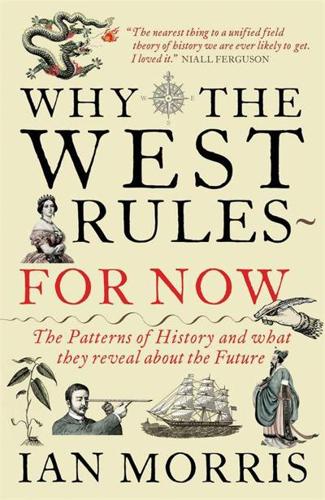
Why the West Rules--For Now: The Patterns of History, and What They Reveal About the Future
by
Ian Morris
Published 11 Oct 2010
A Kremlin report concluded that war might “create on the whole globe conditions impossible for life.” Yet the mushroom cloud had a silver lining: “Strange as it may seem,” Churchill told the British Parliament, “it is to the universality of potential destruction that I think we may look with hope and even confidence.” The doctrine of Mutual Assured Destruction had been born, and although a string of terrifying slip-ups brought the world several times to the brink of Armageddon, in the end the West fought no Third World War. Instead, it fought a war in the Third World over the ruins of the western European and Japanese empires, waged mostly through proxies (normally rural revolutionaries for the Soviets and thuggish dictators for the Americans).
…
After a number of years, the world’s population would once again reach 2.7 billion and certainly become even bigger. Fortunately for us all, the men who actually made the decisions in the Soviet Union and United States in the 1950s realized that the only way to handle nuclear weapons was through Mutual Assured Destruction, a no-middle-ground doctrine where one false move would mean annihilation all around. The details of how to play this game remained nail-bitingly murky, and there were some close calls, particularly when John F. Kennedy and Nikita Khrushchev tried to work out the rules in the autumn of 1962.
…
Since 1986 the number of warheads in the world has fallen by two-thirds, with further big reductions agreed upon in 2010. The thousands of weapons that the Americans and Russians still have could kill everyone on earth with megatons to spare, but Nightfall now seems far less likely than it did during the forty years of Mutual Assured Destruction. Biology, sociology, and geography continue to weave their webs; history goes on. FOUNDATION Asimov’s story “Nightfall” has not, so far at least, provided a very good model for explaining the onward march of history, but perhaps his Foundation novels can do better. Far, far in the future, says Asimov, a young mathematician named Hari Seldon takes a spaceship to Trantor, the mighty capital of a Galactic Empire that has endured for twelve thousand years.
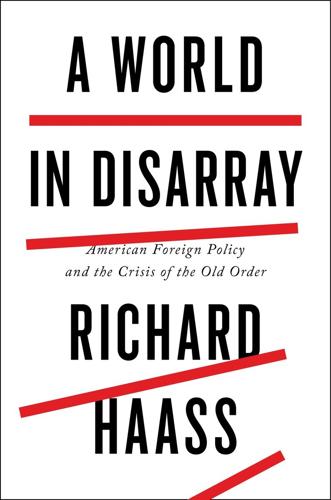
A World in Disarray: American Foreign Policy and the Crisis of the Old Order
by
Richard Haass
Published 10 Jan 2017
Expressed differently, nuclear weapons had the effect of dampening down competition between the two dominant powers of their day because leaders understood that a nuclear war would be disproportionately costly regardless of the interests at stake. Behind that was the sinister genius of mutually assured destruction (popularly known as MAD) and what was known as second-strike capability, namely, the ability to absorb a nuclear strike by the other side and still be in a position to retaliate on a scale that would deter (assuming rationality was at work) the other side from acting in the first place.
…
See Gulf War Latin America, 10, 48, 71, 192–93, 283–84 League of Nations, 31 legitimacy, 21–22, 31–32, 101, 105, 195–98, 200–201, 225–27 and Iraq War, 123–24, 196 See also sovereign obligation; world order liberal democratic order, 55–73, 210–11 Libya intervention (2011), 89, 115, 117, 136, 160–63, 235, 236 linkage, 220–21 Lisbon Treaty (2009), 190 Maastricht Treaty (1992), 188–89 MAD (mutually assured destruction), 42, 43 major-power relations, 201, 202–3, 215–24, 233, 326n2 post–Cold War, 12, 77–79, 101 post–World War II, 59, 153 in Westphalian order, 22–23 See also China; Cold War; Russia al-Maliki, Nouri, 174 Mao Tse-tung, 80, 84 Marshall Plan, 39, 70 Medvedev, Dmitry, 100 Middle East, 8–9, 50, 62–63, 71, 151–77, 180, 268–83 and Arab Spring, 118, 155–60, 163, 172, 230 and Iran, 131, 132, 273, 274–75 and Iraq War, 89, 122–24, 153–55 and Israel, 125, 275–76 and military force, 276–77 and oil, 269–70 and stateless groups, 279–83 and Yemen, 172–73 See also Iraq War; Syrian crisis military force, 22–23, 28–29, 59, 99, 132, 133, 165–66, 170, 234 and Cold War, 38–41 preventive vs. preemptive, 123–24, 127–28, 240–42 and self-determination, 107 and terrorism, 120–22 and U.S. foreign policy, 217, 240–43, 273, 276–77 monetary systems, 147–49, 249, 251 and China, 81–82 and European integration, 189, 190 post–World War II, 56–57, 65–66 Monroe Doctrine, 48 multilateralism, 198, 254–55 multipolarity, 203 Nasser, Gamal Abdel, 63 nationalism.
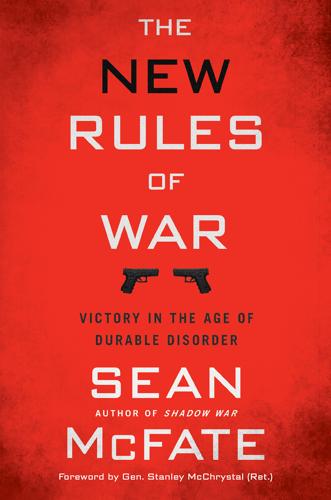
The New Rules of War: Victory in the Age of Durable Disorder
by
Sean McFate
Published 22 Jan 2019
First, it sought to maximize US influence and minimize the USSR’s influence abroad. Second, it avoided direct confrontation with the USSR to avert nuclear war. Third, it tried to prevent a regional “domino effect” favoring the USSR. Fourth, it contained communist expansion through a variety of discrete strategies, such as nuclear deterrence through mutually assured destruction (or “MAD”), security cooperation efforts like NATO, coercive diplomacy, covert operations, proxy wars in places like Korea and Vietnam, the “rollback” of communist governments through regime change, and aiding democratic nations, also known as the Truman Doctrine. These facets of containment lasted throughout every administration, both Democrat and Republican, although each had a slightly different take on it.
…
(West Point), 235, 236 Military budget, 37–38, 41, 46, 47, 50, 102, 106–7, 445 Military contractors, 51, 101–2, 128–31 Military education, 235–40 Military force, declining utility of, 104–8 Military-industrial complex, 50, 166–67 Militias, 3, 101, 123–24, 153 Mimicry operations, 191 Mitchell, William “Billy,” 17–19, 20, 238, 249, 250 Mobutu Sese Seko, 157 Montgomery, Bernard, 234 Moral corruption, 113 “Moral hazard,” 186–87 More, Thomas, 127 Morocco, 97 Mueller, Robert, 202 Mutually assured destruction (“MAD”), 78–79 Myanmar, 150 My Lai massacre, 122 Myth-busting, 111 Myth of bifurcated victory, 232–33, 235 Napoleon Bonaparte, 32, 230, 250 Narco-wars. See Drug wars Narrative, controlling the, 41, 66, 67–68, 108–13, 227 Nash equilibrium, 161 Nasrallah, Hassan, 242 Natanz nuclear facility, 16 National debt, 46, 167 National Defense University, 23, 71, 232–33, 237–38 National guard vs. active duty, realignment of, 38–40 Nationalism, 105 National Security Agency, 137–38, 202 National Security Strategy, 75, 76–77 Nation-building, 4, 93–94, 150 Nation-states, 8, 247 conventional war and, 30–32 retreat of, 147–50 NATO (North Atlantic Treaty Organization), 2, 13, 21, 33, 37, 103–4, 168, 200, 245 Naval training, 55–57 Navy SEALs, 38, 172 Newbold, Gregory, 263n New Rules of War, 6, 9–10, 80, 248 New superpowers.
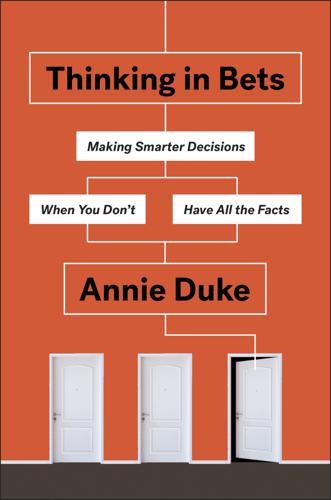
Thinking in Bets
by
Annie Duke
Published 6 Feb 2018
After a twenty-year period in which he contributed to practically every branch of mathematics, this is what he did in the last ten years of his life: played a key role on the Manhattan Project, pioneered the physics behind the hydrogen bomb, developed the first computers, figured out the optimal way to route bombers and choose targets at the end of World War II, and created the concept of mutually assured destruction (MAD), the governing geopolitical principle of survival throughout the Cold War. Even after being diagnosed with cancer in 1955 at the age of fifty-two, he served in the first civilian agency overseeing atomic research and development, attending meetings, though in great pain, in a wheelchair for as long as he was physically able.
…
Even after being diagnosed with cancer in 1955 at the age of fifty-two, he served in the first civilian agency overseeing atomic research and development, attending meetings, though in great pain, in a wheelchair for as long as he was physically able. Despite all he accomplished in science, somehow von Neumann’s legacy in popular culture is as one of the models for the title character in Stanley Kubrick’s apocalyptic comedy, Dr. Strangelove: a heavily accented, crumpled, wheelchair-bound genius whose strategy of relying on mutually assured destruction goes awry when an insane general sends a single bomber on an unauthorized mission that could trigger the automated firing of all American and Soviet nuclear weapons. In addition to everything else he accomplished, John von Neumann is also the father of game theory. After finishing his day job on the Manhattan Project, he collaborated with Oskar Morgenstern to publish Theory of Games and Economic Behavior in 1944.
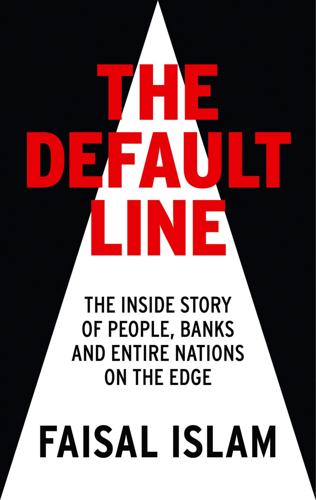
The Default Line: The Inside Story of People, Banks and Entire Nations on the Edge
by
Faisal Islam
Published 28 Aug 2013
It risked what US Treasury secretary Timothy Geithner had referred to as ‘the threat of cascading default, bank runs, and catastrophic risk’. But Syriza did not have the same fear. Alexis Tsipras’s line was that he would do ‘as much as I can’ to keep Greece in the euro. He also used the analogy of ‘mutually assured destruction’ (MAD for short), the Cold War theory behind nuclear deterrence, and firmly believed there was no legal basis to throw Greece out. But he clearly implied that there was a price for euro membership that he believed was not worth paying. Greece’s European partners started to make contingencies for what Grexit would mean for their tourists.
…
After the May election the threat of a disorderly euro exit was Greece’s fundamental bargaining chip in a renegotiation of the EU loan agreement. By June, drachmail had been replaced by pragmatism. Syriza said it would stick to some of the headline targets of the Troika deal, but achieve them through tax rises rather than spending cuts. Within a month, all talk of mutually assured destruction had disappeared. New Democracy knew their trump card. At their final rally in Syntagma Square before the June election, there were flares, dodgy dance music, and an attempt at an impassioned speech from Greece’s would-be euro saviour, the ND leader Antonis Samaras. ‘The first choice Greece must make,’ he declaimed, ‘is: euro or drachma?’
…
The fundamental imbalance, however, between Western debts and over-consumption, and Eastern surpluses and overproduction, got even worse. In the USA, the defence secretary and others have played down any potential leverage that China might possess with its still massive stock of US government debt. The situation is broadly described as ‘mutually assured destruction’. China would sustain massive collateral damage if, for example, it attempted to dump its bond holdings. In this situation, the USA does appear to have obliged China to become a forced lender, a type of bonded banker for its ever-growing debts. It is a form of international financial repression.
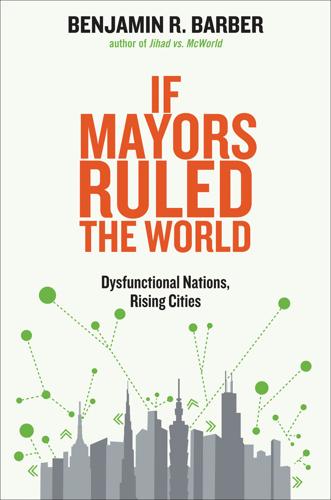
If Mayors Ruled the World: Dysfunctional Nations, Rising Cities
by
Benjamin R. Barber
Published 5 Nov 2013
It is too easy to imagine a cell securing a loose nuke or dirty bomb (clad in fissionable radioactive material) and importing it on one of those ubiquitous container ships that enter ports around the world, mostly uninspected. The second half of the twentieth century was marked by the unthinkable peril of nuclear winter, a thermonuclear exchange among state superpowers devoted to “mutual assured destruction”—the so-called MAD strategy of threatening reciprocal annihilation in order to deter conflict altogether. The first half of the twenty-first century will be marked by the “lesser” peril of a singular random act by a terrorist madman, a peril that may however seem even more horrific to urban dwellers.
…
See also Johnson, Boris London Interbank Offered Rate (LIBOR), 186, 379n32 Los Angeles: carbon emissions, 319; inequalities in transportation, 195, 196; mitigation, 230–233; participatory budgeting, 306, 396n14 Los Angeles Microfinance Network (LAMN), 230 Lovelock, James, 17–18 Lübeck in Hanseatic League, 109 Luzhkov, Yury, 86, 172–174, 331, 400n48 Ma, Yo-Yo, 272, 287–288 MacArthur Park, 232–233 MAD (mutual assured destruction) strategy, 127 Mafia, 50–52, 107–108 Mailer, Norman, 10, 27, 37 “Make-work” jobs, 200 Malls, 44–45, 47, 276 Market fundamentalism, 226, 227 Marketplace, 14–15, 16 Market privatization of digital media, 254 Martindale, Don, 65 Maslin, Paul, 84 Masur, Kurt, 287 Mau, Bruce, 46–47, 366n46 Mayer, Marissa, 220 Mayors, 83–102; ambitions, 94–95, 98–99; characteristics, 87–100; corrupt, 89; expectations, 92–93; as homeboys, 98; how cities shape, 100–102; humor, 89–90; as managers, 92; mobilization of relationships by, 93; and NRA, 89; personal engagement by, 95–98; personality, 85–86, 88–89, 99–100; popularity, 84–85; pragmatism, 90–92; unique role, 350–352; work of, 86–87.
…
See also Global parliament of mayors Mayors Against Illegal Guns, 6, 113, 122–123, 129, 317 Mayors for Peace, 122–123, 128, 317 McCarthy, Kathleen, 117 McWorld, 143, 180 MedCities, 132–133 Megacities, 15–16 Menon, Anil, 106 Mer-Khamis, Juliano, 287 Metropolis, 16, 164, 316 Mexico, crime, 202, 381–382n66 Mexico City business revival, 223 Mexico City Pact (2010), 6 Michigan, emergency managers, 321 Microfinance, 229–230, 385–386n32 Millennium Development Goals, 134, 183, 204, 290–291 Mitigation of inequality, 213–237; best-practices approach, 233–237; example, 230–233; informal economy in, 228–230; injustice in, 224–228; poverty in, 216–224; and pragmatism of cities, 215 MNCs (multinational corporations), 168–169, 310–315 Mobility, 217–219 Mockus, Antanas, 295–298 Moore, Clover, 337 Moral freedom, 161 Moscow. See Luzhkov, Yury Moussa, Qadoura, 91, 268–270 MoveOn.org, 242, 260 Mumbai, 188, 200–201 Multiculturalism, 156–157, 283–286 Multinational corporations (MNCs), 168–169, 310–315 Mumford, Lewis, 36, 62 Musa, Kadara. See Moussa, Qadoura Music file-sharing techniques, 266 Mutual assured destruction (MAD) strategy, 127 mySociety, 263 Napster, 266 Nationalism, 115 Nationality, failure of, 154–157 National League of Cities, 111 National Rifle Association (NRA), 89, 112–113, 148–149, 325, 399n41 “National Right-to-Carry Reciprocity Act” (proposed), 148 National self-determination, 160–161 Nation-states, 145–163; as autonomous, 115; cities as alternatives, 3–4, 18–19; climate negotiations, 146; communities of, 156; cooperation by, 152; democracy in, 155; and failure of nationality, 154–157; and failure of sovereignty, 157–163; as global actors, 74–78, 147–148, 154; jurisdictional disputes, 9–11, 75–77, 147–150; origins and development, 114, 153–154; relationship of cities to, 8–11, 145–147 “Natural” human differences, 180 Naturalism, artificial, 35 Naturalness of country life, 29–31 Natural networks, 113–117 Nature, inequality in, 205–208 “Necropolis,” 36, 62 Nenshi, Naheed, 170, 177, 213, 217 Neocolonialism, 182 Neo-Nazis, 253 Networks, 5–8, 106–140; current, 11–12, 117–121; electronic, 262–267; environmental, 130–138; historical, 107–113; intercity, 135, 136, 301, 316–319; natural, 113–117; node and synapse metaphor of, 112; security, 121–130 Network society, 243 New cities, 55–58, 384n17 Newsom, Gavin, 95, 260, 265, 387n3 New Songdo City (South Korea), 16 Newtown, Connecticut, massacre (2012), 129, 148 New York City: bike-share program, 137; bridging capital, 115–116; carbon emissions, 319; crime, 203; culture, 278; fiscal crisis, 145; inequality in, 184; Mailer on, 10; MTA rail service, 151; parks, 45–46, 207–208; personality of mayors, 88; Police Department, 124.
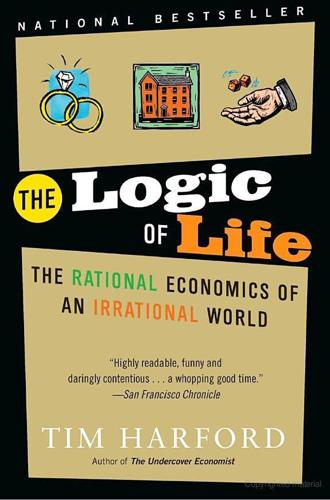
The Logic of Life: The Rational Economics of an Irrational World
by
Tim Harford
Published 1 Jan 2008
If it had been up to von Neumann’s purely intellectual reasoning alone, many of the bombs he helped to create would have exploded on the Soviet Union. Thankfully, there was another thinker on hand, whose deeper grasp of human foibles added a new dimension to game theory that, among other things, helped save the world from mutually assured destruction. Enter Thomas Schelling. CAMP DAVID, MARYLAND, SEPTEMBER 1961 SOME OF AMERICA’S best foreign policy and military strategists were in the room: a young Henry Kissinger; Colonel DeWitt Armstrong, the Pentagon’s top authority on Berlin; McGeorge Bundy, President Kennedy’s national security adviser; and John McNaughton, the top arms control aide of Defense Secretary Robert McNamara.
…
Von Neumann was too quick to draw the parallel between life and poker.) It is much more desirable to avoid war altogether than to fight a destructive war that does not change the balance of power, so while war is certainly a conflict of interests, there is nothing zero-sum about it. Compared to the likely alternative of mutually assured destruction, the cold war was a win for both sides. Thomas Schelling’s war games were part of his effort to bring that mutual win about. The war games were, in a way, a prelude to John List’s field experiments with Minnie Mouse pins. Schelling realized that however compelling the equations of game theory might be, you could not take the human element out of war.
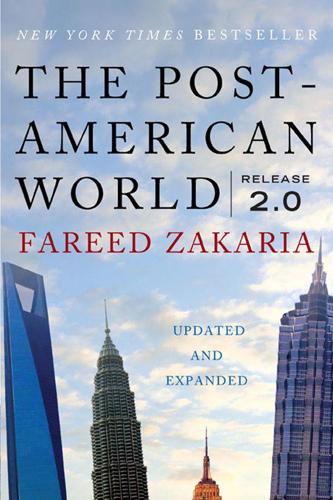
The Post-American World: Release 2.0
by
Fareed Zakaria
Published 1 Jan 2008
For now, the forces of integration have triumphed, in both Beijing and Washington. The Chinese-American economic relationship is one of mutual dependence. China needs the American market to sell its goods; the United States needs China to finance its debt. It’s globalization’s equivalent of the nuclear age’s Mutual Assured Destruction. (And to add to the forces of stability, the Chinese and American nuclear arsenals also act as deterrents.) The best scenario would be for China and the United States to work together to slowly unwind their suicide pact. China would benefit by having more money to reinvest in its domestic economy.
…
Raja, 166 monarchy, 76, 123–24 Mondale, Walter, 251 Monier-Williams, Monier, 170 Montgomery, Bernard Law, 254 Morocco, 17, 209, 239–41, 278 Morocco bombings (2003), 17 Morris, James, 184 mortgages, 42, 46, 85, 152, 217, 222, 225 Mountbatten, Louis, 36, 164 Moynihan, Daniel Patrick, 74 MRI machines, 30 Mugabe, Robert, 109, 131 multiculturalism, 65 multilateralism, 246–55, 267–69 multipolar order, 1–5, 39, 52–53, 233, 241–42, 243–50, 266–69, 274 multi-spindle wheel, 72 Mumbai, 150, 173, 180, 210 Mumtaz Mahal, 70–71 Mussolini, Benito, 195 Mutual Assured Destruction, 140 Naím, Moisés, 130 Nanjing, 63 nanotechnology, 200–202, 215 Napoleon I, Emperor of France, 100 Nasser, Gamal Abdul, 84–85 National Academy of Sciences, 204 national debt, 46–49, 130, 138, 140, 217–19, 241–42 National Debt Clock, 46 nationalism, 34–42, 43, 76, 101, 134–35, 143, 145, 158–59, 180–83, 192, 274 nationalization, 197 national saving, 218 National Science Foundation, 205 nation-states, 34–42, 75 natural gas, 31, 129, 260 natural resources, 6, 30–34, 38, 65, 103–4, 115, 129–32, 232, 260 Nazism, 10, 25, 36–37, 143, 266, 275, 276 Needham, Joseph, 122–23 Nehru, Jawaharlal, 84, 86, 154, 156, 162–65, 169, 173, 177, 181 neoconservatives, 141–42, 247, 253 Netherlands, 67, 72, 79, 80, 188, 209 New Delhi, India, 150 Newsweek, 96, 227 New World, 79, 80, 187 “new world order,” 38 New York, N.Y., 48, 221, 224 New York Times, 163, 188, 203, 258 Nigeria, 60, 86, 98, 130, 149 Nixon, Richard M., 233, 284 Nobel Prize, 139, 210, 215 nonaccelerating inflation rate of unemployment (NAIRU), 217 nonalignment policy, 163–66, 177 nongovernmental organizations (NGOs), 5, 34, 39, 57, 168, 173, 272 North Africa, 12–13, 20, 80 North America, 78–79 North Atlantic Treaty Organization (NATO), 13, 173, 247, 268 North Korea, 6, 19, 20, 141, 175, 235–36, 246, 259, 264 Nuclear Nonproliferation Treaty (1968), 174–78, 265 nuclear weapons, 6, 17, 29, 34, 96, 140, 142, 167, 174–78, 249, 251, 256, 259–60, 265, 273, 275 Nunn, Sam, 265 Nye, Joseph, 121 Obama, Barack, xii, 139, 178, 251, 256, 259, 266, 279 Odah, Salman al-, 14–15 Oglethorpe University, 276 oil, 6, 30–32, 38, 115, 232–33, 260 Olympic Games, 5, 103, 105, 137, 187 Omdurman, Battle of, 188 one-child policy, 148, 214n O’Neill, Thomas P.
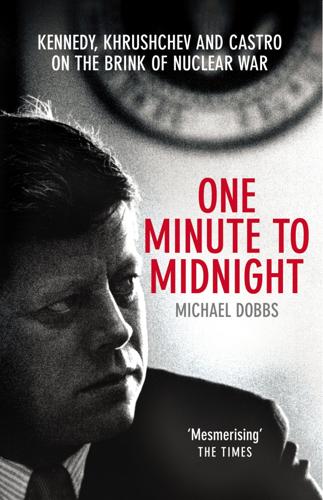
One Minute to Midnight: Kennedy, Khrushchev and Castro on the Brink of Nuclear War
by
Michael Dobbs
Published 3 Sep 2008
Deploying missiles to Cuba strengthened Khrushchev's hand, and compensated for his shortage of intercontinental missiles. On the other hand, Khrushchev could not deliver a knockout blow against the United States under any circumstances. The surviving U.S. nuclear strike force would still be able to wreak much greater damage on the Soviet Union than the Soviets had inflicted on America. The doctrine of Mutual Assured Destruction—MAD for short—was alive and well even after the deployment of Soviet missiles to Cuba. An army was on the move. To prepare for a possible invasion of Cuba, the president had ordered the greatest emergency mobilization of U.S. troops since World War II. All of a sudden, everybody in the military seemed to be heading toward Florida, by road, rail, and air, accompanied by huge amounts of equipment.
…
Some military leaders, such as LeMay and Power, were enthusiastic proponents of the first-strike option. The idea repelled and frightened Kennedy—he agreed with McNamara that it was impossible to guarantee the destruction of all Soviet nuclear weapons—but the plans were drawn up anyway. The nuclear debate was shifting from an abstract faith in deterrence through "mutual assured destruction" to practical considerations on how to fight and win a limited nuclear war. The American nuclear war plan was known as the Single Integrated Operational Plan, SIOP for short. Kennedy had been horrified by the first such plan, SIOP-62, which called for the dispatch of 2,258 missiles and bombers carrying 3,423 nuclear weapons against 1,077 "military and urban-industrial targets" scattered throughout the "Sino-Soviet bloc."
…
Minuteman missiles Miró Cardona, José missile gap Molotov, Vyacheslav Moncada military barracks Montana, Minuteman missiles in Moorestown, N.J., radar in Morse code experts (diddy chasers) Moscow Knox in military parades in Presidium meetings in submarine communications with as target U.S. Embassy in Moscow State University Mount Weather MRBMs (medium-range ballistic missiles) in Cuba Khrushchev's confirmation of low-level photos of as strategic weapons in Turkey see also R-12 missiles Munich, appeasement at Murmansk Mutual Assured Destruction (MAD) Naftali, Timothy Nagasaki Napoleon I, Emperor of France Napoleonic wars National Airlines National Archives National Intelligence Estimate National Photographic Interpretation Center National Press Club National Security Agency (NSA) National Security Council, Executive Committee of, see ExComm NATO Cuba-Turkey swap and NATO Council naval blockade (quarantine) Berlin and communications and Coolangatta and effectiveness of ending of Grozny and JFK and, see Kennedy, John F., naval blockade and Khrushchev's denunciation of press and pros and cons of public relations aspect of radiation detection devices and RFK's favoring of Russell's views on Soviet demonstrations against Soviet ships approach to Soviet submarines and NAVFAC Grand Turk Navy, Soviet see also specific ships Navy, U.S.
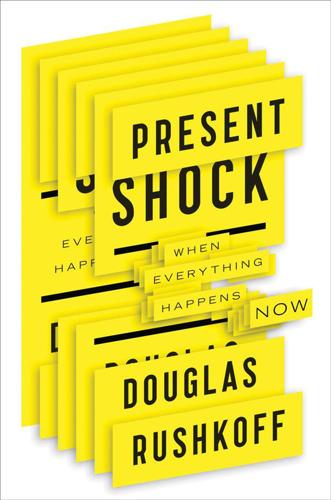
Present Shock: When Everything Happens Now
by
Douglas Rushkoff
Published 21 Mar 2013
And so the RAND Corporation was hired to conduct experiments (like the Prisoner’s Dilemma, which we looked at earlier), determine probable outcomes, and then program computers to respond appropriately in any number of individual circumstances. Led by the as yet undiagnosed paranoid schizophrenic John Nash (the mathematician portrayed in the movie A Beautiful Mind), they adopted a principle called MAD, or mutually assured destruction, which held that if the use of any nuclear device could effectively guarantee the complete and utter annihilation of both sides in the conflict, then neither side would opt to use them. While this didn’t stop the superpowers from fighting smaller proxy wars around the world, it did serve as a deterrent to direct conflict.
…
See also media JPMorgan Chase, 174 Kairos time, 112–20, 236, 259 Kaprow, Allan, 60 Keen, Andrew, 52 Kelly, Kevin, 256–57 Kennedy, John F., 29 Kirn, Walter, 234 kleptomania, 166 Korzybski, Alfred, 103, 137–38, 139 Kurzweil, Ray, 254–56 Kutcher, Ashton, 119 Langley, John, 35 Law of Accelerating Returns, Kurzweil’s, 255–56 Law of Diminishing Returns, 255 Law and Order (TV show), 20, 32 Le Guin, Ursula K., 13 leading, digiphrenia and, 93–109 Lennon, John, 29 Leno, Jay, 55 Lethem, Jonathan, 34 leverage: digiphrenia and, 71–72; fractalnoia and, 206, 229; overwinding and, 135, 136, 137, 139, 163, 165, 175, 176, 177, 178, 184, 185, 186, 188, 189, 190; storytelling and, 20 Licklider, J.C.R., 4 LifeWaves, 107 Lilla, Mark, 53 Lincoln, Abraham, 82 Linnaeus, Carolus, 90 Lippman, Walter, 45 local economic transfer systems (LETS), 149 long now, overwinding and, 140–49, 193, 194 Lost (TV show), 32, 34, 39, 199 Luntz, Frank, 47 machines: digiphrenia and, 93, 95, 98–99; event-based, 98–99; fractalnoia and, 224, 225, 230, 231; humans as, 95; needs of, 81; new “now” and, 4–5; off-loading of time intensive tasks to, 93. See also computers MacLeish, Archibald, 223–24 Macy’s, 160 MAD (mutually assured destruction), 221 Mafia Wars (game), 63 Major League Baseball, 41, 89 makeup, overwinding and, 149–59 management: role of, 187; scientific, 81 Mandlebrot, Benoit, 201, 229 manhood, 39 March, James G., 125 marketing/market research, 6, 85, 128, 158, 240 mashup, 149–59 mass production, 161–62, 165 Mayer-Schonberger, Viktor, 157 McCain, John, 41 McDonald, Mark, 86 McKenna, Dennis, 251–52 McKenna, Terence, 251–53 McLuhan, Marshall, 115, 202, 214–15, 219 Mead, Margaret, 225 media: apocalypto and, 248; change and, 265; consumers and, 166, 167; digiphrenia and, 7; fractalnoia and, 202, 203–4, 205, 210–11, 214–15, 223; global, 214–15; overwinding and, 166, 167; zombie movement and, 248.

Beyond: Our Future in Space
by
Chris Impey
Published 12 Apr 2015
In Europe, American and Soviet tanks were facing off across the newly constructed Berlin Wall. When the Soviets prepared to install nuclear missiles in Cuba in October 1962, it felt as if the world had come to the brink. The United States had more than 30,000 nuclear weapons and the Soviet Union was rapidly catching up. The deterrence logic of “mutually assured destruction” was scant solace. So began the Apollo program, the largest and most complex technical undertaking in human history.5 At its peak, it involved 500,000 people and 20,000 companies. Its cost in present-day dollars was more than $100 billion. To get to the Moon so quickly, NASA needed a huge budget and a tight and single-minded focus on the goal.
…
Mex., 239 Los Angeles Times, 71 Losing My Virginity (Branson), 86, 87 Louis IX, king of France, 23 Louis XVI, king of France, 68 Lovelock, James, 286 Lowell, Percival, 163–64 Lucian of Samosata, 20 Lucretius, 18–19 Luna program, 50–51 Lunar and Planetary Laboratory, 156 Lunokhod rover, 143 Lynx rocket plane, 101 M5 fiber, 161 McAuliffe, Christa, 55, 74 Mack 3 Blackbird, 69 McKay, Chris, 173 McLellan, William, 283 magnetic implants, 207 magnetic resonance imaging (MRI), 190 magnetic sails, 186, 223 magnitude of time, 248–50, 249 Manhattan Project, 36, 221 Manifest Destiny, applied to space, 146–47, 199 Manned Habitat Unit, 169 many worlds concept, 17–20, 17, 49, 267 Mao Zedong, 141 Marconi, Guglielmo, 237 Mariner 2, 51 Mariner 4, 164 Marino, Lori, 190 Marriott hotels, 145 Mars, 28, 237, 270 challenges of travel to, 166–70 distance from Earth to, 50, 148, 166 Earth compared to, 171–72, 216 establishing a colony on, 166–71, 169, 192, 195, 200–201, 203, 214, 248 evidence of water on, 124–25, 163–66, 165, 173 fly-bys of, 51, 170 imaginative perceptions of, 163–65 latency on, 178 map of, 163 obstacles to exploration of, 66–67, 148 one-way journey to, 166, 170–71, 200 as potentially habitable, 124–25, 163, 165–66, 171, 172–74, 234, 278 privately funded missions to, 170–71 probes to, 40, 51, 52, 164–65, 176, 246 projected exploration of, 94–98, 101, 104, 115, 119, 157, 161, 163–74, 178, 181, 182 property rights on, 145, 198–99 sex and reproduction on, 200 simulated journey to, 169–70 soil of, 170 staging points for, 161 terraforming of, 172–74, 182, 216, 227 tests for life on, 52 Mars Direct, 169 Mars500 mission, 169 Mars One, 170–71, 198–201 Mars Society, 166 Mars 3 lander, 51 Masai people, 120 Massachusetts General Hospital, 250 Masson-Zwaan, Tanja, 199 mathematics, 19 as universal language, 236–37 Matrix, The, 260 matter, manipulation of, 258 matter-antimatter annihilation, 220, 220, 221–22 Mavroidis, Constantinos, 182 Max-Q (maximum aerodynamic stress), 46 Maxwell, James Clerk, 183 Mayor, Michel, 126–28, 133 medicine: challenges and innovation in, 92–93, 263 cyborgs in, 205 medicine (continued) as lacking in space, 200 in life extension, 259 nanotechnology in, 225, 259 robots in, 180, 181, 182, 205 mediocrity, principle of, 261 Mendez, Abel, 278 mental models, 13–17, 18–19 Mercury: orbit of, 126, 215 property rights on, 145 as uninhabitable, 124 mercury poisoning, 118 Mercury program, 41, 42, 71, 74, 272 meta-intelligence, 94 meteorites, 152, 160, 160, 164, 195 methane, 52–53, 125, 132, 278 as biomarker, 217–18 methanogens, 217 “Method of Reaching Extreme Altitudes, A” (Goddard), 30, 31 Methuselah, 131 mice, in scientific research, 48–49, 250–51 microbes, microbial life, 97–98, 173, 174, 217, 241, 246, 286 habitable environments for, 122–25, 165–66, 186 microcephaly, 203 microgravity, 115 microsatellites, 90 Microsoft, 84, 188 microwaves: beaming of, 223–24 signals, 187 Microwave Sciences, 223 Middle East, population dispersion into, 8, 118 migration: early human population dispersion through, 5–9, 9, 15, 19 motivation for, 9–12, 11 military: covert projects of, 69–72 Eisenhower’s caveat about, 79 in Internet development, 77, 78–79 nanotechnology in, 180–81, 225 in rocket development, 30, 32–39, 55–56, 71 in space programs, 73, 76, 79, 144, 153 Milky Way galaxy, 227, 240, 253, 263, 270 ancient Greek concept of, 18 Drake equation for detectable life in, 188, 233–35 Earth-like exoplanets in, 129–33, 233, 291 formation and age of, 235 size of, 242 Millis, Marc, 290 mind control, 245 mind uploading, 259 miniaturization, see nanotechnology minimum viable population, 201, 251 mining: of asteroids, 155–56, 182, 214 of Enceladus, 227 on Moon, 214 by robots, 178, 182 Minsky, Marvin, 177, 179 MirCorp, 75 mirrors, 173 Mir Space Station, 75, 115, 167–68 Miss Baker (monkey), 47–48, 48 Mission Control, 43, 100, 158, 269 MIT, 38, 77, 90, 141, 226, 257 mitochondrial DNA, 6, 9 Mittelwerk factory, 33, 35 Mojave Desert, 71, 82, 83 population adaptation to heat in, 118–19 molecules, in nanotechnology, 151 Mongols, 23, 24 monkeys, in space research, 47–48, 48 Montgolfier brothers, 68 Moon: age of, 50 ancient Greek concept of, 18 in asteroid capture, 156 distance from Earth to, 49–50, 150, 166, 267 first animals on, 49 first man on, 71, 158 latency on, 178 lunar base proposed for, 157–63, 158, 160, 195, 214, 248 manned landings on, 44–45, 49–50, 54, 56, 63, 71, 84, 99, 104, 108, 143, 157, 158, 176, 219, 270, 272 obstacles to exploration of, 66 orbit of, 25 probes to, 40, 51, 129, 140, 143 projected missions to, 92, 143, 157–63, 166, 214, 275 property rights on, 145–47, 198–99 proposed commercial flights to, 102 in science fiction, 20, 26 soil of, 159, 160, 162 as staging point for Mars, 161 staging points for, 148 telescopic views of, 31, 49–50 as uninhabitable, 124, 166 US commitment to reach, 41–45 Moon Treaty (1979), 146 Moon Treaty, UN (1984), 279 Moore, John, 203 Moravec, 259–60 Morgan, Barbara, 74 Morrison, Philip, 187, 239 Mosaic web browser, 79 Moses, 148 motion, Newton’s laws of, 25, 67–68 multistage rockets, 29 multiverse, 252–57, 255 Musk, Elon, 94–98, 97, 100–101, 112–13, 148, 205 mutation, 6–7 cosmic rays and, 204 7R, 10–12, 11, 15 mutually assured destruction, 42 Mylar, 184, 225 N1/L3 rocket, 44, 54 nanobots, 179–82, 181, 224–28 NanoSail-D, 184, 185 nanosponges, 180 nanotechnology, 151–52, 179–82, 208, 214, 245, 280, 283 projected future of, 257–59 see also nanobots National Aeronautics and Space Administration (NASA), 83, 90, 96, 97–98, 114, 116–17, 128, 144, 153, 156, 176, 178, 182, 184–85, 185, 195, 200, 205, 206, 216, 224, 226, 271, 275, 280, 290 and Air Force, 71 artistic depiction of space colonies by, 196, 196 budget of, 39, 42, 43, 49, 54, 64, 75, 99, 104, 140, 144, 158, 166, 188, 238, 270, 272, 284 cut back of, 45, 49, 54, 188 formation of, 38–39, 145, 269 private and commercial collaboration with, 99–102, 104 revival of, 103–5 space program of, 51, 55–56, 71–76, 92, 157–58, 285–86 stagnation of, 63–67, 141, 147, 166 National Geographic Society, 7, 265 National Radio Astronomy Observatory, 187–88 National Science Foundation (NSF), 78–79 Native Americans, 118 naturalness, 256 natural selection, 6, 16, 123, 164, 251, 291 Nature, 187 Naval Research lab, 37 Navy, US: Bureau of Aeronautics, 30 in rocket development, 36–37 Nayr, Ernst, 238 Nazis, 48 Propaganda Ministry of, 32 von Braun and, 32–34, 141, 269 NBC, 75 Nedelin, Mitrofan, 43 “needle in a haystack” problem, 188–89, 242–43 “Nell” (rocket), 29 Neptune, 127, 131, 225 as uninhabitable, 125 Nergal, 163 Netscape, 80 New Mexico, 88, 88, 105 Newton, Isaac, 24–25, 25, 30, 67–68, 110, 262, 267 New York Times, 30, 94 Nicholas, Henry, 214 Niven, Larry, 198, 253 Nixon, Richard, 108, 167 Nobel Prize, 126, 180, 214 nomad planets, 128 Noonan, James, 266 nuclear fission, 220, 220, 221 nuclear fusion, 110, 161–62, 220, 221, 221, 222 nuclear reactors, 224 nuclear weapons, 36, 42, 78, 129, 146, 197–98, 222, 234–35, 244, 245, 246, 286 Nuremberg Chronicles, 17 Nyberg, Karen, 200 Obama, Barack, 104 Oberth, Hermann, 28, 31–32, 36, 268 oceans: acidification of, 195 sealed ecosystem proposed for, 197 Oculus Rift, 176 Ohio, astronauts from, 74 Okuda, Michael, 228 Olsen, Ken, 213 100 Year Starship project, 224 100 Year Starship Symposium, 229 101955 Bennu (asteroid), 156 O’Neill, Gerard, 196, 251–52 Opportunity rover, 165 optical SETI, 190, 243 Orbital Sciences Corporation, 100–101, 275 orbits: concept of, 25 geostationary, 149–50, 150 legislation on, 146 low Earth, 49, 54, 63, 70–71, 70, 74–75, 97, 100, 110, 113–14, 151, 155, 184 manned, 40–41, 141–42 staging points from, 148 orcas, 190 Orion spacecraft, 104 Orteig, Raymond, 90 Orteig Prize, 90–91 Orwell, George, 35 OSIRIS-REx, 156 Outer Space Treaty (1967), 145–47, 198–99 “Out of the Cradle, Endlessly Rocking” (Clarke), 201 oxygen, 156, 159, 161, 170, 172, 173–74, 182, 193–95, 214 Oymyakon, Siberia, population adaptation to cold in, 119–20 ozone, as biomarker, 217 Pacific Ocean, 9, 224 Pac-Man, 175 Page, Larry, 92 Paine, Thomas, 167 Pale Blue Dot (Sagan), 121 “Pale Blue Dot,” Earth as, 53, 118–22, 121, 130 Paperclip, Operation, 141 parabolic flight, 93 paradox, as term, 241 Paratrechina longicornis (crazy ant), 193 Parkinson’s disease, 202–3 particle physics, standard model of, 256 Pascal, Blaise, 120 Pauley, Phil, 196–97 PayPal, 95, 97 Pensées (Pascal), 120 People’s Daily, 162 People’s Liberation Army, 144 Pericles, 18 Pettit, Don, 100, 273 phenotype, 6 philanthropy, 95 PhoneSat, 185 photons, 183, 186 in teleportation, 229, 230, 231 photosynthesis, as biomarker, 217 pigs, 250 Pinker, Steven, 16 Pioneer probes, 50, 51–52 piracy, 24 Pitcairn Island, 202 planetary engineering, 172 Planetary Resources, 156 planetary science, 51–52, 176 Planetary Society, 184 planets: exploration of, 49–53 formation of, 156 plate techtonics, 132, 241 play, imagination in, 10, 14 pluralism, 17–20, 17, 49 plutonium, 66 poetry, space, 272–73 politics, space exploration and, 63–64, 104, 141, 214, 238 Polyakov, Valeri, 115, 167–68 population bottleneck, 201–2, 287 Poynter, Jane, 193 Princess of Mars, A (Burroughs), 164 Principia (Newton), 25 Project Orion, 221, 221 Project Ozma, 187–88, 237, 253 prokaryotes, 172 property rights, in space, 145–47, 198 Proton rockets, 65, 113 proton scoop, 222–23 Proxmire, William, 238 Puerto Rico, 239, 243 pulsar, 131 Pythagorean Theorem, 238 Qian Xuesen, 141 Qi Jiguang, 24 Qualcomm Tricorder X Prize, 92 quantum entanglement, 230–32, 230 quantum genesis, 255 quantum mechanics, 258 quantum teleportation, 230–32, 230 quantum theory, 189 qubits, 230 Queloz, Didier, 126–28, 133 R-7 rocket, 37 R-16 rocket, 43 radiation, infrared, 109, 253–54, 254 radioactivity, as energy source, 124, 181 radio waves, 66, 187, 189, 242 ramjets, 222–23 RAND Corporation, 222 Rare Earth hypothesis, 241 RCS Energia, 106 RD-180 engine, 72 Reagan, Ronald, administration of, 167, 271 reality TV, 75, 171, 214, 282 “Realm of Fear,” 229 reasoning, human capacity for, 13–17, 18–19 red dwarfs, 131 Red Mars (Stanley), 174 Red Scare, 141 Redstone rocket, 36–37, 71 reindeer, 119–20 remote sensing, 175–91, 224 RepRap Project, 227 reproduction, sexual, 6, 172 Ride, Sally, 74 “Right Stuff,” as term, 71, 114 Right Stuff, The (Wolfe), 272 Ringworld series (Niven), 253 risk: as basic to human nature, 9, 262 genetic factor in, 10–12 of living on Mars, 167–70 in pushing human limits, 120 of space tourism, 102, 105–9, 155 of space travel, 42–43, 55–56, 56, 106–9, 152–53 Robinson, Kim Stanley, 174 robonaut project, 179 robots, robotics: as aids to humans, 249, 250 in asteroid redirection, 104 commercial, 178 ethical issues of, 179 nanotechnology in, 179–82, 181 remote control of, 177–78 remote sensing through, 176 self-assembly and self-replication by, 226–28, 258, 259 in spacecraft, 50, 100, 100 space exploration by, 53–57, 66, 98, 133, 161, 177–79, 179, 208, 224–28 see also cyborgs; nanobots Rocketdyne, 112 rocket equation, 27, 53, 72–73, 110–11, 111, 148, 220, 268 rocket fuel, 110–13, 148, 156, 159, 161 comparison of efficiency of, 219–24 Rocket Performance Calculator, 222 rockets: alternatives to, 148–53 “bible” of, 267 challenges in launching of, 43–44, 46–49, 106, 107, 111–12, 148 comparison of US and Soviet, 44 cost of, 112–13, 113 developing technology of, 21–39, 43, 101, 103, 112–13, 183, 262 fuel for, 110–13, 148, 156, 159, 161, 220–21 launched from planes, 84 liquid-fueled, 28–29, 29 physics and function of, 110–14 proposed energy technologies for, 220–24 reusable, 101, 103, 111, 112, 113 solar sails compared to, 183 as term, 23 visionaries in development of, 26–30, 94 in warfare, 22–24, 30, 32–34 see also specific rockets “Rockets to the Planets in Space, The” (Oberth), 28 Rogers Commission, 271 Rohrabacher, Dana, 284 Rome, ancient, 18, 67, 163 Rovekamp, Roger, 207 rovers, 66–67, 92, 125, 140, 143, 158, 165, 167 nanotechnology in, 181–82 remote sensing through, 176 Rozier, Jean-François de, 68 RP-1 kerosine, 110 RS-25 rocket, 112 Russia, 23, 26–27, 149, 178 space program of, 37, 65–66, 72, 75, 84, 91, 104, 106, 107–8, 113, 114, 140, 143, 168, 184, 195, 200, 271 space tourism by, 75, 102 tensions between US and, 72 see also Soviet Union Russian Revolution, 27, 47 Russian Space Agency, 102 Rutan, Burt, 72, 82–86, 85, 88, 88, 89, 91, 97–98, 105–6, 214 Rutan, Dick, 83–84 Rutan Aircraft Factory, 83 Saberhagen, Fred, 177, 259 Sagan, Carl, 53, 121–22, 121, 176–77, 184, 198, 234–35, 238, 240 Sahakian, Barbara, 98 Sahara Desert, 238 sails: solar, 183–86, 185 wind-driven, 67–68, 183, 262 Salyut space station, 54, 108 satellites: artificial Earth, 36–39, 37, 40, 65, 71, 106 commercial, 96, 105 communications, 101, 142, 153 in energy capture, 253 geostationary, 149 GPS, 144 launching of, 154, 154 miniature, 90, 184–85 Saturn: moon of, 125, 227 probes to, 52–53 as uninhabitable, 125 Saturn V rocket, 43, 44, 46, 54, 83, 104, 111, 113, 113, 166 Scaled Composites, 83, 89 science fiction, 192, 196, 222, 223, 239, 250, 253 aliens in, 186–87 in film, 28, 204 Mars in, 164, 174 roots of, 20 technologies of, 228–32, 259 see also specific authors and works scientific method, 213 Search for Extraterrestrial Intelligence (SETI), 187–90, 234, 239, 254 evolution and technology of, 237–39, 242–43, 242 lack of signals detected by, 236–37, 240–44 new paradigms for, 258 “Searching for Interstellar Communications” (Cocconi and Morrison), 187 sea travel: early human migration through, 8, 9 exploration by, 109, 262 propulsion in, 67–68 self-replication, 226–28, 258, 259 Senate, US, Armed Services Preparedness Committee of, 39 SETI Institute, 188 78–6 (pig), 250 sex: promiscuous, 12 in reproduction, 6, 172 in space, 200, 214 Shackleton Energy Company, 161 Shane, Scott, 98 Shatner, William, 88–89 Shelley, Mary, 206 Shenlong (“Divine Dragon”), 145 Shenzhou 10, 142–43 Shepard, Alan, 41, 84 Shostak, Seth, 243 Siberia, 65, 119–20, 238 population dispersion into, 8, 118, 218 Sidereal Messenger, The (Galileo), 270 Siemienowicz, Kazimierz, 267 Simonyi, Charles, 75 Sims, 175 simulation: infinite regression in, 261 living in, 257–62 simulation hypothesis, 261 Sinatra, Frank, 45 singularity, 207 in origin of cosmos, 255 and simulation, 257–62 technological, 258–59 Singularity University, 94, 259 Skylab space station, 54, 116 Skype video, 176 smart motes, 181, 225 smartphones, 92, 185 Smithsonian Institution, 30, 81 Smithsonian National Air and Space Museum, 85, 91, 271 Snow Crash (Stephenson), 103 Snowden, Edward, 178 social media, 195 Sojourner rover, 165 SolarCity, 96–97 solar flares, 167 solar power, 96, 181, 183–86 solar sails, solar sailing, 183–86, 185, 223, 225, 227 Solar System: discovery of first planet beyond, 126–27 edge of, 50, 53, 121 formation of, 156 habitability potential in, 122, 124–26 latency variations in, 178 probes into, 51–52, 66, 177, 185–86, 208, 270 projected travel within, 248–49, 263 property rights in, 145–47, 198 worlds beyond, 126–29, 156, 208, 215, 250, 263 solar wind, 162, 223 sound barrier, breaking of, 69, 71 South America, 11, 202, 218 Soviet Union, 30, 34, 37, 141 fall of, 47, 65, 75, 197, 271–72 rocket development in, 35–39 space program failures and losses of, 43, 47, 50–51, 54, 269 space program of, 37–39, 40–43, 141, 149, 237, 271 Soyuz spacecraft, 43, 55, 75, 84, 91, 102, 106, 113, 143 crash of, 107–8 space: civilians in, 55, 74 civilian vs. military control of, 37–39, 69–71, 79, 153 commercialization of, 55, 63, 73–76, 79–80, 88–89, 92, 97, 99–109, 100, 110, 147, 153–56, 154, 199, 214, 249, 275 debris in, 144, 152 first American in, 41 first man in, 40–41, 41 first women in, 40, 74 as infinite, 18, 19, 22 as inhospitable to human beings, 53–54, 114–17, 121 legislation on, 39, 78, 90, 144, 145–47, 198–200 living in, 192–208 “living off the land” in, 166, 200 peaceful exploration of, 39 potential for human habitabilty in, 123 prototype for sealed ecosystem in, 192–97 Space Act (1958), 39, 90 Space Adventures, 102, 275 space colonization: challenges of, 197–201 cyborgs in, 204–8 evolutionary diversion in, 201–4 legal issues in, 198–200 of Mars, 166–71, 169, 192, 195, 203 off-Earth human beings in, 215, 250–51 prototype experiments for, 192–97 space elevators, 27, 148–53, 150, 160–61, 185, 280 “Space Exploration via Telepresence,” 178 Spaceflight Society, 28 space hotels, 102–3 Space Launch System (SLS), 104 space mining, 155–56, 161–62 “Space Oddity,” 142 spaceplanes, 71–72, 85, 144 Spaceport America, 1–6, 105 Space Race, 35–39, 37, 40–43, 50, 55, 139 SpaceShipOne, 72, 85, 85, 88–89, 88, 91 SpaceShipTwo, 88, 101, 105 Space Shuttle, 45, 46, 49, 64, 72, 84, 85, 111–13, 112, 159, 167, 194, 219–20, 222, 275 disasters of, 55–56, 56, 74–75, 107, 111–13 final flight of, 271 limitations of, 55–56, 64–65 as reusable vehicle, 54–55 space sickness, 114 spacesuits, 89, 182, 195–96 space-time, 255, 255 manipulation of, 258 space tourism, 63, 73, 75–76, 79–80, 88–89, 91, 101–3, 154, 170, 214 celebrities in, 88, 101–2 revenue from, 154–55, 155 risks of, 102, 105–9, 155 rules for, 105 space travel: beyond Solar System, see interstellar travel bureaucracy of, 105–10, 271 cost of, 39, 42, 45, 49, 54, 55, 66, 75, 81–82, 91, 112–14, 113, 139–49, 153, 155–56, 158–59, 161, 166, 179, 183, 198, 214, 217, 222, 224–26, 252, 270, 275, 284 early attempts at, 21–22, 22 effect of rocket equation in, see rocket equation entrepreneurs of, 81–98 erroneous predictions about, 214 failures and disasters in, 21–22, 22, 38, 43, 47, 50–51, 54–56, 56, 63–64, 68, 72, 74–75, 101, 102, 107, 142, 184, 269, 271, 275 fatality rate of, 107–9 fictional vignettes of, 1–4, 59–62, 135–38, 209–12 Internet compared to, 76–80, 77, 80 life extension for, 250–51 lifetimes lived in, 251 living conditions in, 114–17 new business model for, 99–105 Newton’s theories as basis of, 25 obstacles to, 21, 63, 66–67, 105–109 space travel (continued) as part of simulation, 261–62 public engagement in, 45, 73, 85, 93, 162, 177, 217 remote sensing vs., 175–91 risks of, 43–44, 83, 89, 93, 105–9 speculation on future of, 76–80, 133, 213–32, 248–52 suborbital, 84 telescopic observation vs., 49–50 visionaries of, 26–39, 80, 94, 109 SpaceX, 96, 97, 100–103, 113–14, 275 SpaceX Dragon spacecraft, 96, 100, 100, 102, 170 special theory of relativity, 228, 231 specific impulse, 220 spectroscopy, 127, 165, 176 spectrum analyzer, 237 Speer, Albert, 34 Spielberg, Steven, 238 Spirit of St.
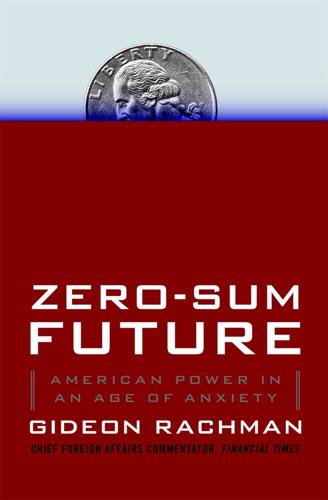
Zero-Sum Future: American Power in an Age of Anxiety
by
Gideon Rachman
Published 1 Feb 2011
Treasury secretary, attempted to reassure an audience of Chinese students that the country’s investments were safe in the United States, he was met with derisive laughter.10 It has become a cliché that the relationship between American debtor and Chinese creditor is now so dependent that it represents a new form of “mutually assured destruction”—a financial version of the nuclear balance of terror between the United States and the Soviet Union during the cold war. It is clear that neither country’s situation is entirely comfortable, but it is surely worse to be the debtor nation. Shakespeare warned, “Neither a borrower nor a lender be.”
…
Morgan, 123 Judt, Tony, 47, 57, 69 Kabul, 253, 254, 258 Kagan, Robert, 152, 240–41, 243 Kan, Naoto, 190 Kant, Immanuel, 304n Kaplan, Robert, 184 Kennan, George, 100 Kennedy, John F., 212 Kennedy, Paul, 88 Kennedy, Ted, 44 Kenya, 239, 256, 257 Keynes, John Maynard, 292 Kirkpatrick, Jeane, 75–76 Kissinger, Henry, 108 Klein, Naomi, 157, 160 Kohl, Helmut, 49 Korea, 275 see also North Korea; South Korea Kosovo, 132, 133–34, 167, 236, 246, 248, 275 Krauthammer, Charles, 163–64, 165, 167–68, 169, 307n Krepinevich, Andrew, 187 Kristof, Nicholas, 238 Krugman, Paul, 265 Kuwait, 87, 89, 90 Kyoto treaty, 126, 222, 229 Kyrgyzstan, 233 labor unions, 38, 39, 66, 67 British, 16, 30, 31, 32, 34 Labour Party, British, 34, 43–44, 114–15 Lake, Anthony, 103, 166 Lamy, Pascal, 219 Latin America, 8, 16, 17–18, 70–78, 173, 226, 228, 241–42, 245, 247 financial crisis in (2002), 159 “Washington Consensus” and, 72, 74, 77 Latvia, 270 Lawson, Nigel, 35 Lebanon, 241, 272 Lee Kuan Yew, 21–22, 80, 138, 140–41 “Left Behind” novels, 161 Legrain, Philippe, 155 Lehman Brothers, 201 collapse of, 1, 2, 29, 113, 141, 169–70, 181, 182, 191, 192, 264 Leonard, Mark, 153 Lewinsky, Monica, 148 liberal interventionism, 132–33 libertarians, 42, 95, 109, 112 license raj, 83, 85 LIFFE futures trading exchange, 32 Lipset, Seymour Martin, 239 Lisbon Treaty, 158, 311n Lithuania, 58 Litvinenko, Alexander, 236 Logar province, 253–54 London, 16, 30, 32–33, 34, 79, 96, 112, 152, 218, 226, 279–80 Somalis in, 257 Lutyens, Edwin, 82 Maastricht Treaty (1991), 52, 150 McCain, John, 108, 126, 170, 242–43 McDonald’s, 6, 127, 261, 304n McVeigh, Timothy, 161 Maestro (Woodward), 108 Mahbubani, Kishore, 6, 138–41, 143, 213, 283 Major, John, 52, 150 Malaysia, 60, 143 Malthus, Thomas, 125, 206 Mandela, Nelson, 36, 69–70 Mandelbaum, Michael, 117, 130, 188 manufacturing, 32, 34, 111, 149, 202, 259 in China, 24, 60, 122, 247 U.S., 122, 182, 265–66 Mao Tse-tung, 22, 23, 26, 237 Marchais, Georges, 46 Marcos, Ferdinand, 18, 43 Marx, Karl, 2 Marxism, 2, 27, 54 Medvedev, Dmitry, 283, 287 Merkel, Angela, 189, 194–95, 269–70 Mexico, 9, 71, 73, 77, 122, 188, 206, 271 as failed state, 210–11, 256–60 NAFTA and, 74, 116, 157, 259 Mexico City, 258 Microsoft, 120, 155, 261 middle class, 6, 140, 141, 205, 238 Middle East, 4, 10, 18, 85, 89, 96, 185, 195, 212, 233, 241, 245, 256, 257, 272, 288 see also Gulf War; specific countries Mihailova, Nadezhda, 148 Miles, James, 169, 284 missile tests, Chinese, 136–37, 187 Mitchell, Andrea, 108 Mitterrand, François, 45–49 Monnet, Jean, 216, 219 Morales, Evo, 78 Morgan Stanley, 110 Moscow, 53, 54, 55, 57, 238, 279 Mubarak, Hosni, 257 Mullen, Michael, 185–86 multinationals, 17, 81, 157, 193 Muslims, 147, 226, 245, 257, 260, 269, 288 see also Islamists mutually assured destruction, 183 Nabokov, Vladimir, 311n Naim, Moises, 77, 229–30, 241 National Intelligence Council (NIC), 180–81, 193, 267 National Interest, 100 nationalism, nationalists, 129, 147, 160, 263, 290 in China, 152, 220, 238, 261, 268–69, 283 U.S., 152, 157–58, 220, 267–68, 269 Nationalists, Chinese, 136 nationalization, 191–92 National Security Strategy, 184 national sovereignty, 203, 213, 216, 220, 222, 223, 230, 240, 246, 248, 275 nation building, 149, 209–10 nation reconstruction, 149 NATO, 96, 132, 133, 230, 234, 235, 236, 240, 253, 312n–13n Nehru, Jawaharlal, 80, 81 neoconservatives (neocons), 96, 103–5, 146, 165–68, 240, 307n Netherlands, 151, 158, 215, 219, 221, 269 New Asian Hemisphere, The (Mahbubani), 139 New Deal, 38, 296n new world order, 4, 8, 90, 93, 95–96, 176, 230 Bush Sr. and, 63, 87, 88, 225 New World Order, The (Robertson), 161 New York, N.Y., 16, 18, 221 9/11 in, 90, 96, 161–62, 164, 199, 280 New York Times, 168, 238, 261 Nicaragua, 43, 73, 242 9/11, 10–11, 90, 96, 103, 104, 134, 164–65, 167, 184, 199, 254, 273 antiglobalization and, 156–57 Europe and, 146–47 NonZero (Wright), 124 North American Free Trade Agreement (NAFTA), 74, 116, 157, 259 North Korea, 159, 168, 186, 229, 273, 275, 311n nuclear deterrence, 183, 272 nuclear disarmament, 222, 287, 288 Nuclear Non-Proliferation Treaty (NPT), 212 nuclear proliferation, 3–4, 5, 9, 10, 176, 198, 199, 220, 223, 224, 226, 227, 229, 241, 242, 243, 248, 249, 280, 286, 287, 288, 311n terrorism and, 211–12 zero-sum future and, 262, 272–73, 275 Obama, Barack, 2, 173, 176, 182, 184–87, 196–99, 203, 222, 240, 243, 285, 287 Afghanistan war and, 230, 252–53, 254, 314n in election of 2008, 170, 179, 245, 268 election of 2010 and, 292 global problems and, 9, 197–99, 210, 211, 212, 224–27, 244, 272, 288, 291 Japanese relations and, 190 at UN, 9, 197–99 Of Paradise and Power (Kagan), 152 oil, 9, 48, 81, 89–90, 125, 175, 204–5, 221, 244, 272, 274, 275, 288 financial crisis and, 192–95 price controls removed from, 37, 39 price of, 204, 236, 242, 247, 248 Soviet, 55, 60, 66 Okinawa, 186, 190 Oklahoma City bombing (1994), 161 O’Neill, Jim, 76 Opel, 195 opinion polls, 140, 158, 165, 170, 196, 238, 245, 254–55, 264, 284, 316n Opium Wars, 17, 135–36 Organisation of Economic Co-operation and Development, 110, 259 O’Rourke, Kevin, 271 outsourcing, 122, 168 Ozawa, Ichiro, 190 Pacific, 185, 186, 187, 190–91, 274, 280 Pakistan, 10, 208, 251–52, 254, 255–56, 258, 273, 274, 311n terrorism in, 211, 212, 251, 252, 256, 313n Pale Fire (Nabokov), 311n Palestine, 207, 241, 272 pandemics, 9, 198, 199, 225 Paris, 46, 152 Parsons, Sir Anthony, 31 Paulson, Hank, 112 peace, 103, 118, 126–34 democratic, theory of, 5–6, 94, 127–31, 134, 140, 174, 283, 304n globalization and, 5–6, 10, 127–28, 140 peace dividend, 103 peacekeeping activities, 131, 199, 223, 225, 230, 255, 288–89, 316n People’s Daily, 22, 239 perestroika, 54–60 Perot, Ross, 157, 158, 267 Persian Gulf, 184, 193, 205, 241, 247, 272 see also Gulf War Peshawar, 251–52, 254, 313n Peskov, Dmitry, 235–36, 237 Peterson Institute for International Economics, 181–82 Pew polls, 158, 196, 254–55, 284 Philippines, 18, 43, 138, 206 Pinochet, Augusto, 36, 71, 75 piracy, Somali, 209, 210, 256 Pittsburgh G20 summit (Sept. 2009), 217, 218–19, 221, 225 Poland, Poles, 64–67, 100, 146, 147, 149, 150, 158, 165, 235, 270, 279, 280 population, 146, 206–9, 240, 257, 263, 269, 285 Portugal, Portuguese, 72, 147, 165, 188, 235 Post-American World, The (Zakaria), 181, 262 poverty, 27, 80, 81, 109, 115, 118, 138, 139, 149, 175, 189, 238, 272, 281 globalization and, 157, 255 global problems and, 198, 199, 202, 206–9, 220, 229 in Obama’s UN speech, 9, 198, 199 power, 118, 126, 162–70, 248 in Asia, 6, 142–43 of European Union, 151, 160 technological, 93, 94, 128 U.S., 10, 93, 96, 162–70, 173, 174, 176, 179, 180–81, 183–88, 213, 246, 249, 253 Prior, Jim, 31 privatization, 24, 57, 94, 191 in France, 47–48 in Great Britain, 17, 32–35 in Latin America, 72, 74, 75 productivity, 119, 122, 151 progress, 118–26 Project for the New American Century (PNAC), 104 prosperity, 10, 107–18, 133, 134, 140, 173, 194, 196, 249 protectionism, 80, 83, 158, 192, 195, 206, 218, 280 in Latin America, 72–75, 77 zero-sum future and, 262–68, 274 Provincial Reconstruction Team (PRT), 253 Putin, Vladimir, 146, 168, 235–36, 237, 283 Rand, Ayn, 108–9, 110 Rao, Narasimha, 79–83 Reagan, Ronald, 16, 17, 18, 35–45, 64, 74, 87, 114, 118, 119, 191, 213, 225, 296n defense buildup and, 55 Fukuyama and, 99, 104 Greenspan and, 42, 107 Latin America and, 75, 76 Soviet Union vs.
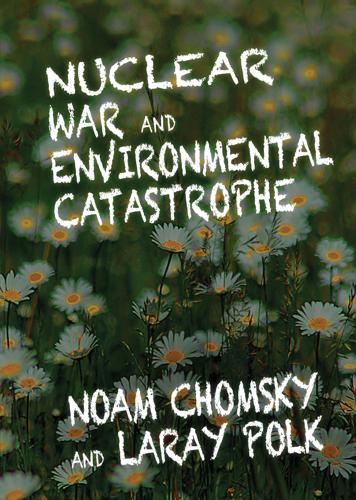
Nuclear War and Environmental Catastrophe
by
Noam Chomsky
and
Laray Polk
Published 29 Apr 2013
Abbreviations ACHRE: Advisory Committee on Human Radiation Experiments AEC: Atomic Energy Commission ALEC: American Legislative Exchange Council API: American Petroleum Institute ARPA-E: Advanced Research Projects Agency-Energy BIOT: British Indian Ocean Territory BLEEX: Berkeley Lower Extremity Exoskeleton BP: British Petroleum CDB: China Development Bank CIA: Central Intelligence Agency CND: Campaign for Nuclear Disarmament COP: Conference of the Parties to the UNFCCC CTBT: Comprehensive Test Ban Treaty CW: chemical weapons DARPA: Defense Advanced Research Projects Agency DEFCON: defense readiness condition DOD: Department of Defense DOE: Department of Energy DU: depleted uranium EPA: Environmental Protection Agency GE: General Electric HEU: highly enriched uranium IAEA: International Atomic Energy Agency IBM: International Business Machines ISN: Institute for Soldier Nanotechnologies IT: Information Technology LEU: low-enriched uranium MAD: mutually assured destruction MIT: Massachusetts Institute of Technology NAM: Non-Aligned Movement NATO: North Atlantic Treaty Organization NAVSTAR GPS: navigation system for timing and ranging, Global Positioning System NEPA: National Environmental Policy Act NIH: National Institutes of Health NNI: National Nanotechnology Initiative NPT: Non-Proliferation Treaty NSC: National Security Council NSF: National Science Foundation NSG: Nuclear Suppliers Group NWFZ: nuclear-weapon-free zone OPEC: Organization of the Petroleum Exporting Countries OSRD: Office of Scientific Research and Development PNE: peaceful nuclear explosion POW: prisoner of war PTBT: Partial Test Ban Treaty R&D: research and development RADAR: radio detection and ranging SDS: Students for a Democratic Society START: Strategic Arms Reduction Treaty TRIPS: Trade-Related Aspects of Intellectual Property Rights UN: United Nations UNFCCC: UN Framework on Convention on Climate Change WgU: weapon-grade uranium WTO: World Trade Organization 1.

How Not to Network a Nation: The Uneasy History of the Soviet Internet (Information Policy)
by
Benjamin Peters
Published 2 Jun 2016
The 1950s saw a dizzying number of potentially revolutionary technologies become popular—atomic and hydrogen bombs, nuclear power plants, Sputnik, the double helix, passenger jets, dishwashers, polio vaccines, the lobotomy (invented in the 1930s), television, and transistor radios—and other trends, such as rock & roll and suburban housing developments. The disruptive influences of modern science and technology continued to be felt in the 1960s as quarks, lasers, Apollo, nylon, Pampers, the pill, LSD, napalm, DDT, mutually assured destruction, and the ARPANET entered the world stage. The most disruptive and destructive of all was the development of computers around the work of John von Neumann at the Institute of Advanced Studies at Princeton to study and control the effects of nuclear bombs.29 The technocratic promise of the computer seemed to promise both delivery and destruction.
…
If Wiener was right in arguing that information arms all its possessors equally, double heaps of suspicion may support an ultrarational strategy that strains toward the irrationality found across cold war discourse. Kolman’s counterdefense of cybernetics against other Soviet critics, for example, resembles a game-theoretic scenario in which (like the policy of mutually assured destruction) both parties seek to settle their disagreements in order to avoid a larger collective loss.100 The basic logic of this cybernetic worldview, asserts historian Peter Galison, is to adopt the logic of the “enemy Other” and to preempt and predict the behavior of the intelligent and rational foe to the point where the positions are reversed and foe and friend become indistinguishable.101 Cybernetics—like its sister disciplines of game theory, information theory, and others—appears as a method for rationalizing the enemy, distributing structural strategy evenly across opponents and flattening the chances that an enemy will have to take strategic or logical advantage over an ally.
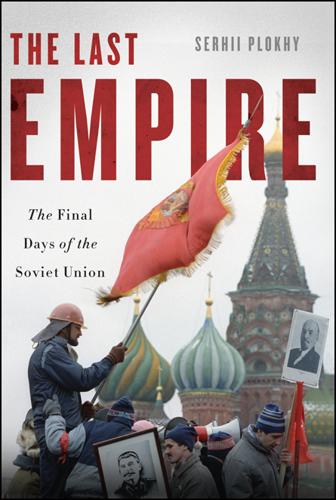
The Last Empire: The Final Days of the Soviet Union
by
Serhii Plokhy
Published 12 May 2014
It had taken eight years to negotiate such a document, and the beginning was modest indeed, but it was a step in the right direction. From then on, while continuing to compete globally and fighting proxy wars throughout the world, from Vietnam to Angola, the two superpowers kept negotiating to reduce their nuclear arsenals, finding solace in the doctrine of mutual assured destruction (MAD), according to which both countries had enough weapons to wipe each other off the face of the earth and were thus obliged to negotiate in order to survive. Nixon flew to Moscow in May 1972 to sign SALT I—the Strategic Arms Limitation Treaty—with Brezhnev, and President Jimmy Carter flew to Vienna in 1979 to sign SALT II with the same leader.
…
See Ukraine Kyrgyzstan Akayev and, 224, 345–346 CIS and, 322, 345–346 military forces, 346 nuclear weapons and, 346 sovereignty and, 173 U.S. and, 345–346, 382 Landsbergis, Vytautas, 197–198 Language, of Ukraine’s military, 289, 290 Lapychak, Chrystyna, 292 Latvia, 45, 191 annexation of, 192 sovereignty and, 174, 175, 197 Lebed, Aleksandr, 108, 118 Lenin, Vladimir, xiii, 328, 395, 398 Lezginka (dance), 288 Ligachev, Yegor, 28–29 Likhachev, Dmitrii, 175–176 Limited Nuclear Test-Ban Treaty, 6 Lincoln, Abraham, 67, 101 Lithuania, 45, 191, 197 demonstrations in, 50–51, 117–118 sovereignty and, 34, 37, 38, 50, 174, 198 Lobov, Vladimir, 209–210 Loyalty, 289 Lubianka Square, 139–140 Lukashenka, Aliaksandr, 324–325 Lukianenko, Levko, 60, 165–169, 278, 279 Lukianov, Anatolii, 125 Luzhkov, Yurii, 94, 122 MAD. See Mutual assured destruction Madrid peace conference. See Middle East Peace Conference Major, John, 75, 113, 209, 378 Make Way for Ducklings (McCloskey), 20 Makhamov, Kakhahr, 163 The Malachite Casket (Bazhov), 228 Malkina, Tatiana, 98 Maria (Yeltsin’s granddaughter), 100 Marshall, George, 329 Marshall Plan, for Soviet Union, 205–206, 329–331, 341 Massacres Babyn Yar, 66–67, 266, 285 Katyn Forest, 369 Tiananmen Square, 77 Matlock, Jack, 26, 48, 65, 69, 76, 193, 206 Bush, George H.
…
See Multiple independently targeted reentry vehicles Missiles Anti-Ballistic Missile Treaty, 51 Cuban Missile Crisis, 6 ICBMs, 209 MIRVs, 209, 211 tests, 15–17 Mitterand, François, 75, 112, 209, 235, 240–241 Mlynář, Zdenĕk, 12 Moiseev, Mikhail, 81, 127, 135, 136, 137–138 Moldova (Moldavia), 50, 65, 193 CIS and, 360, 361 local nationalism in, 34 sovereignty and, 173, 178 Transnistria, 177, 360, 361, 362 U.S. and, 382 Molotov-Ribbentrop Pact of 1939, xviii, 34, 193, 301, 369, 400 Morozov, Kostiantyn, 287–291, 324 Moscow, xix coup d’état of August 1991 and, 102–104, 107–109, 118–120, 134, 139–141, 142–143 food shortage in, 205 Moscow Echo (radio station), 103, 108, 115 Moscow Summer Olympics, 6 Most-favored-nation trade status Soviet Union and, 21 Ukraine and, 62 Mulroney, Brian, 75, 79 Multiple independently targeted reentry vehicles (MIRVs), 209, 211 “Muslim Charter,” 355 Mutalibov, Ayaz, 224, 357, 361 See also Azerbaijan Mutual assured destruction (MAD), 6 Nagornyi Karabakh, 360, 362 cease fire in, 213 ethnic clashes in, 33–34, 213, 357, 361 Nairobi, 32 Najibullah, Mohammad, 203 Narodna Rada (People’s Council), 165 National Security Council, xxi Nationality with mixed ethnicity, 288–289 Ukraine military and passport, 289 NATO (North Atlantic Treaty Organization), 7, 25, 339, 406 Natural gas, 226, 270, 297, 301, 353 Nazarbayev, Nursultan, 14, 25, 44, 83, 88, 215, 219, 310–311, 402 Almaty summit and, 363, 364 Belavezha Agreement and, 320, 321, 348 biography, 350 CIS and, 345, 346–353, 356 coup d’état of August 1991 and, 114 economic reform and, 222 legacy, 185–186, 213, 405 with new union treaty, 41, 163, 185 nuclear arms and, 346, 348–349 political standing, 352 sovereignty of Kazakhstan and, 179, 181, 182, 249, 351 “10 + 1” and, 184–185, 186 See also Kazakhstan Nazis, 66, 67, 192, 281, 329 Neto, Agostinho, 8 New York, 32 New Zealand, 210 News media, 215, 235, 261, 266, 272, 279, 292, 298, 344, 347, 356, 364 censorship of, 98, 116, 137 coup d’état of August and, 98–99, 103, 108, 113, 115–116, 118–119, 138, 158, 161 foreign press, 98, 115–116, 118, 161, 372, 373–374, 377 radio stations, 103, 108, 115, 118 Ukrainian sovereignty and, 263 See also specific news outlets Nezavisimaia gazeta (Independent Newspaper), 98, 171, 230 Nicholas I (Tsar), 20 Nicholas II (Tsar), 28, 323, 338 Niiazov, Saparmurat, 249 Nikolaevich, Boris, 218 Niles, Thomas, 299, 379 9/11, xvi Nixon, Richard, 8, 63, 65, 117, 290 Brezhnev and, 3, 6, 51, 53 Niyazov, Saparmurat, 224, 352–353 See also Turkmenistan North Atlantic Treaty Organization.
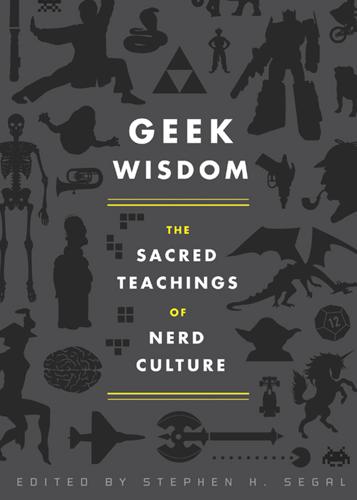
Geek Wisdom
by
Stephen H. Segal
Published 2 Aug 2011
Though the word was never uttered in 1984’s seminal teen-computer-hacker-political-thriller War Games, the idea lies at the heart of the conflict that fuels the movie: a new Pentagon supercomputer that controls the nation’s nuclear launch codes is caught up in a relentless war-game simulation trying to answer the question, “How can the United States win a nuclear war?” We all know it’s a flawed question—the whole point of the Cold War arms-race theory of “mutual assured destruction” was that, in a world of opposing superpowers, the sheer volume of weaponry is meant to deter the use of any nukes at all. But back in 1984, when computer networks were new and exotic, it seemed entirely reasonable to worry that an artificial intelligence might start firing missiles based on the inhuman outcome of an algorithm.

Nerds on Wall Street: Math, Machines and Wired Markets
by
David J. Leinweber
Published 31 Dec 2008
Strangelovian reputation, and its widely underappreciated solutions are arguably why we are still here. The idea of the strategic triad— nuclear missiles, submarines, and bombers—and the equally important fourth element—space- and ground-based electronic early warning systems—has suffered from the unfortunate moniker of “Mutually Assured Destruction.” What the four were, in concept and in fact, were Mutally Assured Survival. The use of MAD instead of MAS is one of history’s greatest marketing errors. There is a voluminous literature on this.4 For those disinclined to read any of it, the 1983 movie War Games (with uncredited technical advisers from RAND) ended with the WOPR computer explaining the central insight of the Cold War: “What a strange game.
…
History’s greatest technological advances are often cited as fire, the wheel, and storing instructions as data. The first is arguably a discovery, but the others are inventions. We can add a few more—the time value of money, the automobile, the transistor, and the World Wide Web. In the Introduction, the structure of Mutually Assured Survival (dreadfully mislabeled as Mutually Assured Destruction) was given high marks. Not all military technology ideas had similar merit. In Imaginary Weapons: A Journey Through the Pentagon’s Scientific Underworld, Defense Technology International editor Sharon Weinberger tells the remarkable story of how tens of millions of dollars were spent on a crackpot idea for what amounted to a nuclear hand grenade, despite the efforts of the most senior Pentagon scientists to scuttle the project, and the dubious utility of such a weapon.
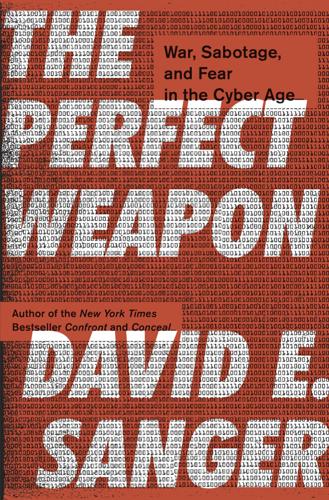
The Perfect Weapon: War, Sabotage, and Fear in the Cyber Age
by
David E. Sanger
Published 18 Jun 2018
But the nuclear comparison is faulty, and as the cyber expert James Lewis has pointed out, the false analogy has kept us from accurately understanding how cyber plays into the daily geopolitical conflict. Nuclear arms were designed solely for fighting and winning an overwhelming victory. “Mutually assured destruction’’ deterred nuclear exchanges because both sides understood they could be utterly destroyed. Cyberweapons, in contrast, come in many subtle shades, ranging from the highly destructive to the psychologically manipulative. Until recently, Americans were fixated on the most destructive class of cyberweapons, the ones that could turn off a nation’s power or interfere with its nuclear command-and-control systems.
…
But we knew the only attack that could threaten the existence of the country would come at the tip of a Soviet or Chinese intercontinental missile, or in the form of terrorists with access to nuclear weapons. And after some terrifying close calls, notably the Cuban Missile Crisis in 1962, we found an uneasy balance of power with our primary adversaries—mutually assured destruction—to deter the worst. It worked, or has so far, because the cost of failure is so high. In the cyber age, we have not found that balance, and probably never will. Cyberweapons are entirely different from nuclear arms, and their effects have so far remained relatively modest. But to assume that will continue to be true is to assume we understand the destructive power of the technology we have unleashed and that we can manage it.

New Laws of Robotics: Defending Human Expertise in the Age of AI
by
Frank Pasquale
Published 14 May 2020
Thus, even protective plans can seem aggressive, as in the case of Ronald Reagan’s Strategic Defense Initiative (SDI). Popularly known as Star Wars, SDI would have relied on lasers in space to shoot down Soviet missiles. Had it worked, it would have upset a fragile balance of deterrence (mutually assured destruction via nuclear annihilation). Now, LAWS, automated cyberattacks, and disinformation campaigns threaten to disrupt long-settled expectations about the purpose and limits of international conflict. We must find new ways of limiting their development and impact. War may at first appear as a state of exception, where ordinary ethical reasoning is suspended (or at least radically circumscribed).
…
A ruthless power may try to kill the people in control of its rival’s military. If the rival’s forces were hard coded to respond with deadly force the moment any attack was detected, that first-strike strategy would be futile. Given devastating weaponry available globally, the logic of nuclear deterrence (mutually assured destruction) may apply a fortiori to autonomous systems with a dead man’s switch. Such a strategy is extremely dangerous. Automation can lead to disastrous results, causing the very danger it is meant to foreclose. In 1960, shortly before the US election, the United States’ Ballistic Missile Early Warning System (based in Greenland) “detected” a Soviet missile launch, asserting “99.9% certainty” that one had occurred.
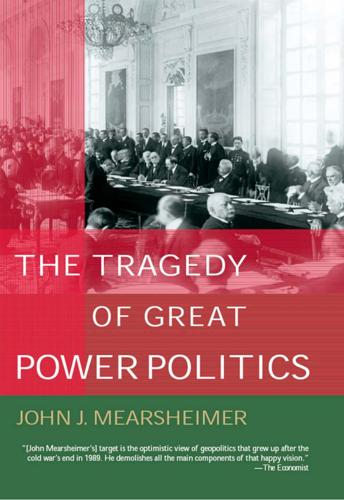
The Tragedy of Great Power Politics
by
John J. Mearsheimer
Published 1 Jan 2001
Nor were the Soviets able to gain a decisive nuclear advantage over the Americans at any time during the Cold War. Thus, each side was forced to live with the fact that no matter how it employed its own nuclear forces, the other side was still likely to have a survivable nuclear retaliatory force that could inflict unacceptable damage on an attacker. This “Texas standoff” came to be called “mutual assured destruction” (MAD), because both sides probably would have been destroyed if either initiated a nuclear war. However desirable it might be for any state to transcend MAD and establish nuclear superiority, it is unlikely to happen in the foreseeable future.135 Military Power in a MAD World A MAD world is highly stable at the nuclear level, because there is no incentive for any great power to start a nuclear war that it could not win; indeed, such a war would probably lead to its destruction as a functioning society.
…
It is difficult, however, to achieve and maintain nuclear superiority, because rival states will go to great lengths to develop a nuclear retaliatory force of their own. As emphasized in Chapter 4, great powers are likely to find themselves operating in a world of nuclear powers with the assured capacity to destroy their enemies—a world of mutual assured destruction, or MAD. Some scholars, especially defensive realists, argue that it makes no sense for nuclear-armed states in a MAD world to pursue nuclear superiority.9 In particular, they should not build counterforce weapons—i.e., those that could strike the other side’s nuclear arsenal—and they should not build defensive systems that could shoot down the adversary’s incoming nuclear warheads, because the essence of a MAD world is that no state can be assured that it has destroyed all of its rival’s nuclear weapons, and thus would remain vulnerable to nuclear devastation.
…
Defensive realists suggest that once nuclear-armed rivals develop the capability to destroy each other as functioning societies, they should be content with the world they have created and not attempt to change it. In other words, they should become status quo powers at the nuclear level. According to offensive realism, however, those rival nuclear powers will not simply accept mutual assured destruction (MAD) but instead will strive to gain nuclear superiority over the other side. I will attempt to show that the nuclear weapons policies of both superpowers were largely consistent with the predictions of offensive realism. With the exception of the American and British cases, which are discussed in the next chapter, my four different cuts at the historical record are dealt with here in the order in which they were described above.

The Fourth Industrial Revolution
by
Klaus Schwab
Published 11 Jan 2016
Towards a more secure world In the face of these challenges, how do we persuade people to take the security threats from emerging technologies seriously? Even more importantly, can we engender cooperation between the public and private sectors on the global scale to mitigate these threats? Over the second half of the last century, the fear of nuclear warfare gradually gave way to the relative stability of mutually assured destruction (MAD), and a nuclear taboo seems to have emerged. If the logic of MAD has worked so far it is because only a limited number of entities possessed the power to destroy each other completely and they balanced each other out. A proliferation of potentially lethal actors, however, could undermine this equilibrium, which was why nuclear states agreed to cooperate to keep the nuclear club small, negotiating the Treaty on the Non-Proliferation of Nuclear Weapons (NPT) in the late 1960s.
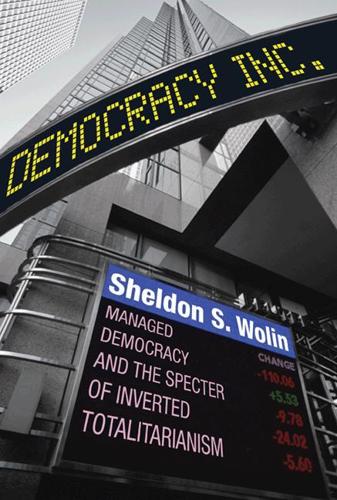
Democracy Incorporated
by
Sheldon S. Wolin
Published 7 Apr 2008
As then Vice President Nixon explained, “tactical atomic explosives are now conventional.”52 When the Cold War threatened to become too normal and abstract, déjà vu all over again, there would be “war scares,” including air raid drills during which children practiced protecting themselves from nuclear attacks by huddling under their schoolroom desks.53 Perhaps the most unnerving example of the mentality at work constructing a Cold War power imaginary was the doctrine of “Mutual Assured Destruction” formulated in the aftermath of the Cuban Missile Crisis of 1962. Instead of targeting an enemy’s military facilities “each side should target the other’s cities” in order to cause the most casualties possible. “The assumption behind it,” according to one historian, “was that if no one could be sure of surviving a nuclear war, there would not be one.”54 If there had been one, incinerated parents could die comforted with the knowledge that, thanks to school desks, their children would have been spared.
…
Bush’s signing statements, 236 and government, 199 and inequality, 147 and inverted totalitarianism, 45, 47, 61 and Iraq War, 93 and McCarthy, 37 and The National Security Strategy of the United States, 83, 88 privatization of, 213, 284 and Reagan, 272 and religion, 116 and Republican Party, 199, 200 and science, 125 and September 11, 2001, attacks, 5 and Superpower, 60, 62, 132, 147 support for, 112, 198–200 and terrorism, 73 universal training for, 34–35, 39 and World War II, 106 Mill, John Stuart, 219 Miller, Zell, 199 Missouri Compromise of 1820, 208 Mommsen, Hans, 41 monarchy, xxi, 53, 96, 171, 234, 248, 253. See also sovereign Mubarak, Hosni, 47 Musharraf, Pervez, 175 Muslims, 124, 181, 199 Mussolini, Benito, xvii, 21, 22, 44, 51, 53, 84–85, 112, 169 Mutual Assured Destruction, 33 myth: and Cold War, 223 cosmic, 10–11 definition of, 10 democratic, 52 and elections, 148 and George W. Bush, 1–2 and Iraq War, 10 and media, 2, 12–13 and The National Security Strategy of the United States, 83 of new world, 69–71, 72 and NSC-68, 29 and presidency, 102–3 and Reagan, 271 and Riefenstahl, 1 and September 11, 2001, attacks, 9–10, 13–14 and Smith, 123 and Strauss, 169 and technology, 12 Weber on, 12 and World War II, 25 Nader, Ralph, 166, 205–6, 216 Nagasaki, 183 Napoleon I, 95 nationalism, 35, 112, 116, 204 National Security Council, 28, 167 The National Security Strategy of the United States (2002), 70, 71, 72, 82, 83, 84–93 National Union for Social Justice, 23 natural rights, 252 Nazi Germany, 66 comparison with, xvii and Huntington, 181 mobilization in, 106, 107 plebiscites in, 64 and Reichstag fire, 4 social services in, 196 and Strauss, 169 as totalitarian, xxi Zakaria on, 176 Nazis: American understanding of, 25 and business, 63, 112 and capitalism, 47 and constitution, 51 coordination by, 215 and democracy, 52–54 and economy, 55, 67, 108 and elections, 53, 54, 64, 101, 166 and elitism, 162 labor camps of, 57 and Lebensraum, 48, 49 and The National Security Strategy of the United States, 85 and opinion surveys, 59 overreaching by, 49 politicization by, 65–66 and preemptive war, 48 and race, 300n58 and Riefenstahl, 1, 3 social control by, 55–56 and Superpower, 62 and Vichy government, 96 and war, 55, 67 Negroponte, John, 134 neoconservatives, 19, 48, 74, 93, 130, 154, 165, 224, 264, 326n9, 327n10, 333 n13 neoliberalism, 221 neomercantilism, 219–20 New Deal, xxiii, 21, 22–23, 24, 25, 26, 27, 36, 38, 39, 156, 188, 203, 220, 221, 270, 273 New York Times, 8 Nicaraguan contras, 271 Niebuhr, Reinhold, 27, 40, 298n27 Nietzsche, Friedrich, 118, 170, 171, 173 Nixon, Richard, 33, 65, 104, 156, 230, 304n29 North Korea, 124 NSC-68: United States Objectives and Programs for National Security, 28–31, 301n70 nuclear weapons, 14, 16–17, 30, 33, 39, 50 Nunn, Sam, 103 oil/energy policy, 47, 49, 133, 197, 309n20 Olin Foundation, 171 opinion surveys, 59–60 Oppenheimer, J.
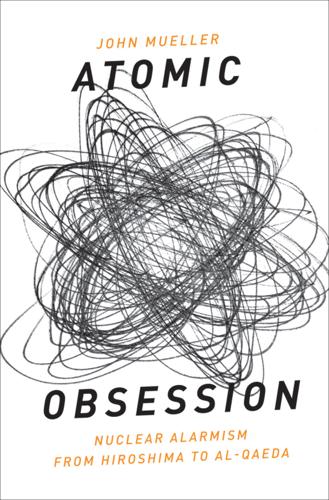
Atomic Obsession: Nuclear Alarmism From Hiroshima to Al-Qaeda
by
John Mueller
Published 1 Nov 2009
To achieve this balance each side had to maintain sufficient nuclear capability to retaliate with equal or greater force and to persuade the other side that it was willing to do so if attacked. It sounds simple, but it required careful calculations, convincing communications, and complex negotiations aimed at preventing either side from gaining a destabilizing advantage. Deterrence was maintained by mutual assured destruction (MAD), a tense standoff aimed at preventing nuclear war.23 The simple existence of the nuclear arsenals, therefore, somehow required all sorts of exquisite theorizing about their precise capacities and about how they should be deployed. The theory then ingeniously looped back on itself to further require that the arsenal be big and impressive enough to be persuasive to the presumed perspective of the theorists on the other side.
…
bin Laden’s interest in, network, 213 intelligence agencies closing operation, 164–165 selling secrets, 169–170, 207 Khattab, Ibn, connection to bin Laden, 202–203 Khrushchev, Nikita Britain and France reversing invasion at Suez, 249n.12 Cuban missile crisis, 39–40 struggle against capitalism, 34–35 supporting Shevchenko, 248n.31 world war, 33 Korean War, 38, 47–48, 50 Kornienko, Georgy, world war and Soviets, 33 Kosko, Bart, government overestimating threat, 220 Kramer, Stanley, On the Beach, 57 Krauthammer, Charles, Arab world, 261n.1, 261n.4 Kremlin, 246n.15, 247n.22 Kristof, Nicholas, Nuclear Terrorism: The Ultimate Preventable Catastrophe, 181 Kristol, William, 261n.4 Langewiesche, William Atomic Bazaar, 183, 268n.5 book jacket flap, 268n.5 constructing bomb, 111, 173 obtaining nuclear weapons, 105 odds against terrorists, 184 passed “point of no return,” 93 Lapp, Ralph, A-bombs, 242n.19 Laqueur, Walter, proliferation of WMD, 228 Lawrence Livermore National Laboratory, 266–267n.43 leadership, nuclear weapons programs, 113 Lenin, Vladimir, 34 Levi, Michael, 165, 171, 175, 184, 187, 189, 213, 264n.6 Lewis, Jeffrey, 178, 191 Libya, 124–126, 145, 258n.31 likelihood acceptable risk, 197–198 acquisition scenarios, 190–191 arraying barriers, 184, 186 assessing, 186–191 assigning and calculating probabilities, 187–189 comparisons of improbable events, 191–193 multiple attempts, 189–190 policy for reducing, 193–197 probability of nuclear fission bomb, 267n.48 terrorist bomb, 183, 238 World at Risk, 182 Lockerbie bombing, 125, 258n.32 London, image of destruction, 24 longer-term effects, nuclear attack, 8 The Looming Tower, Wright, 201 “loose nukes,”165–168, 208–210, 238 Los Alamos National Laboratory, 267n.48 Los Alamos scientists bomb design, 173–174 difficulties of making nuclear weapons, 174–175 sensitive detection equipment, 176 Los Angeles, port security, 141 Los Angeles International Airport, 19 lottery tickets, terrorism comparison, 191 Lugar, Senator Richard, 20, 171, 181, 194 McCain, Senator John, 130–131, 230 McCarthyism, Communist menace, 49 McCone, CIA Director John, Chinese threat, 91, 96 McNamara, Robert, 66–67, 68, 248n.33 McNaugher, Thomas, missiles, 116 McPhee, John, sense of urgency, 162 Mahmood, Sultan Bachiruddin, 203–205, 271n.16 Majid, Abdul, Pakistani nuclear scientist, 203–204 marijuana bale, smuggling atomic device, 177 Martin, Susan, 232 measured ambiguity, catchphrase, 86 melancholy thought, Winston Churchill, 35 Middle East, 225, 261n.4 Milhollin, Gary, 174, 175 military, Canada, 106 military attacks, appeal of nuclear weapons, 147 military planning, nuclear weapons, 14–15 military strategy, stabilizing or destabilizing, 66 military value, nuclear weapons, 108–110, 236, 237–238 Mir, Hamid, 164, 210–211, 264n.7 credibility of, 273n.36 missile capacity, 153, 154 missile crisis, Cuba, 40 The Missiles of October, Cuba, 40 Mohammed, Khalid Sheikh, 9/11 attack, 206 morality, Canada without weapons, 112–113 Morison, Samuel Eliot, 269n.23 Morrison, Phillip, chance for working peace, 26 Mowatt–Larssen, Rolf, xi, 20 Mueller, Robert, xi, 228, 274n.16, 276n.37 Mukhatzhanova, Gaukhar, points of no return, 94–95 Muller, Richard, 146, 172, 192 multiple groups, likelihood, 189–190 Musharraf, General Pervez, criticism, 260n.24 Muslim extremists, publications of violence, 223 mustard gas, calculation for causalties, 12 mutual assured destruction (MAD), deterrence, 64 Myers, General Richard, 20, 22 Naftali, Timothy, 76, 249n.12, 263n.29 Nagasaki atomic bomb, 9–10 human costs, 141 military value of atomic bomb, 10 surrender of Japanese, 43 taboo of nuclear weapons, 61–63 napalm, 243n.30 National Intelligence Estimate (1958), 119 National Intelligence Estimate (2007), 274n.16 National Planning Association, diffusion, 104 national security threat, terrorism and U.S., 233 NATO missiles, European demonstrations, 60 “naughty child” effect, Russia, 108 neglect, cold war, 86 Negroponte, John, probability of attack, 181 nerve gas, calculation for causalties, 12 Netanyahu, Benjamin, 264n.33 Neufeld, Michael, missiles, 116 neutron bomb, 4, 14, 81 New Jersey Lottery, 270n.6 Nimitz, Admiral Chester W., 269n.23 Non-Proliferation Treaty (NPT), nuclear, 119–121 North Korea American-led forced invading, 247n.27 attention, 108, 238 axis of evil, 144 calm policy discussion, 151, 152–153 deterrence, 262n.19 “eating problem,” 152 hysteria, 263n.25 invasion of South Korea, 49 nuclear weapon, x proliferation, 93 proliferation fixation, 135–137 sanctions, 136, 145 “supreme priority” of, 149–150 Nth country problem, nuclear weapons, 91 nuclear age, verge of new, x nuclear arsenals, 64–65, 145, 237 nuclear bomb, 17, 269n.16 “The Nuclear Bomb of Islam,” bin Laden, 211–212 nuclear crisis, Cuba, 39 nuclear diffusion, 237 nuclear energy, security, 139–140 “nuclear era,” Hiroshima, ix nuclear explosion, 61–62, 181, 243n.9 nuclear fears classic cold war, 56–57 declining again, 60–61 On the Beach, 57 reviving in early 1980s, 58–60 subsiding in 1960s and 1970s, 57–58 nuclear fission bomb, probability of attack, 267n.48 nuclear forensics, 155, 164, 190, 194, 264n.6 nuclear fuel, cartelization, 260n.28 nuclear metaphysics, deterrence, 63–67 nuclear proliferation, xiii, 89 nuclear radiation, dirty bomb, 18 nuclear reactor meltdown, Chernobyl, 7 Nuclear Regulatory Agency, radiation, 7 The Nuclear Revolution, Mandelbaum, 246n.7 nuclear sting operation, 194 Nuclear Terrorism: The Ultimate Preventable Catastrophe, Kristof, 181 nuclear tipping point, Brookings Institution, 93–94 nuclear virginity, Canada, 112 nuclear war, x, 64 nuclear weapons.
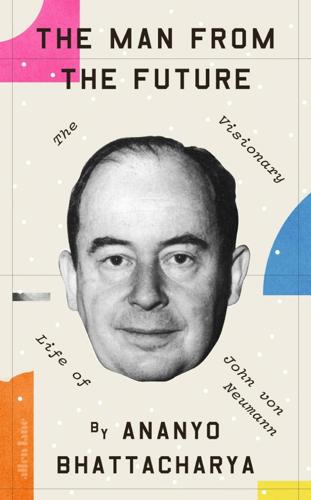
The Man From the Future: The Visionary Life of John Von Neumann
by
Ananyo Bhattacharya
Published 6 Oct 2021
Baggott, Jim, 2009, Atomic: The First War of Physics and the Secret History of the Atom Bomb: 1939–49, Icon Books, London. Binmore, Ken, 2007, Game Theory: A Very Short Introduction, Oxford University Press, Oxford. Burks, Arthur W., 1966, Theory of Self-reproducing Automata, University of Illinois Press, Urbana. Byrne, Peter, 2010, The Many Worlds of Hugh Everett III: Multiple Universes, Mutual Assured Destruction, and the Meltdown of a Nuclear Family, Oxford University Press, Oxford. Copeland, Jack B. (ed.), 2004, The Essential Turing: Seminal Writings in Computing, Logic, Philosophy, Artificial Intelligence, and Artificial Life Plus The Secrets of Enigma, Oxford University Press, Oxford. Davis, Martin, 2000, The Universal Computer: The Road from Leibniz to Turing, W.
…
Using entangled photons rather than hydrogen atoms is easier for such experiments. 75. This and what follows is from Stefano Osnaghi, Fábio Freitas and Olival Freire Jr, ‘The Origin of the Everettian Heresy’, Studies in History and Philosophy of Modern Physics, 40, pp. 97–123. 76. Peter Byrne, 2010, The Many Worlds of Hugh Everett III: Multiple Universes, Mutual Assured Destruction, and the Meltdown of a Nuclear Family, Oxford University Press, Oxford. 77. Philip Ball discusses the problems and advantages of this and other interpretations of quantum mechanics in his wonderful 2018 book Beyond Weird, The Bodley Head, London. 78. G. C. Ghirardi, A. Rimini and T.
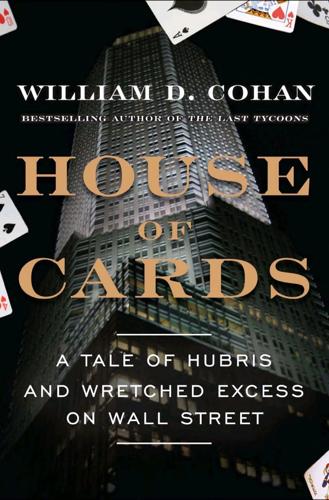
House of Cards: A Tale of Hubris and Wretched Excess on Wall Street
by
William D. Cohan
Published 15 Nov 2009
He opened that the move was “absolutely necessary because Bear Stearns has a balance sheet that is about $400 billion in size and it has about $176 billion worth of securities plus it has $42 billion in loans outstanding to others who own securities. If Bear Stearns had gone under, virtually all of these securities would become available for sale and be pushed into the market”—at prices that would have forced all securities firms to mark their own assets down in what surely might have led to the financial equivalent of mutually assured destruction—“and the result would have been a fairly significant financial collapse. So the Fed had no choice but to bail out Bear Stearns. This is a too-big-to-fail situation.” Inside Bear, the news about the Fed facility was announced around the firm. “We went out and we announced it to the trading floor,” Friedman said.
…
The idea was to reject the lowball offers to buy the company and threaten to blow the company up by filing for bankruptcy. With the company would go the global financial system, to which Bear Stearns was so deeply connected. The thinking was that nobody—not the federal government, not JPMorgan, not other banks and investment banks—would want to experience the consequences of such mutually assured destruction and that, accordingly, the threat of such an option would be sufficient to award Bear more time—for instance, a real twenty-eight days—to fashion an orderly sale process or to be offered a price for the firm that would allow everyone to save face. It was just a germ of an idea, but one that was largely in keeping with the firm's image of being a bunch of rough-and-tumble iconoclasts.
…
He and Flexner somehow figured out that the Saudis had not obtained the air rights over nearby Grand Central Station that would be needed for them to build a skyscraper on the site. So Bear Stearns bought an option on the air rights from billionaire Carl Lindner for around $10 million contingent on Bear Stearns getting control of the site. “This was the true mutual assured destruction kind of deal because if you buy the air rights and you can never cut a deal with the owner of the building, then you've just lost 100 percent of whatever you paid for the air rights because they're only good for that building,” Flexner explained. “But they weren't that expensive and we could get an option on them for a few weeks or months or something.
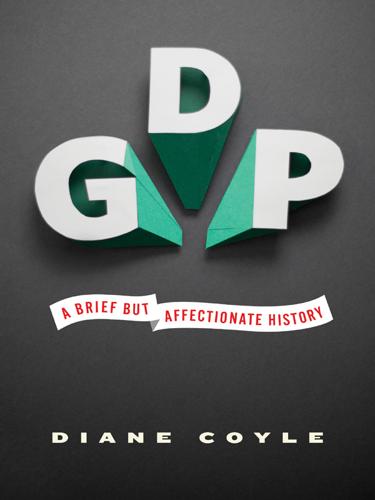
GDP: A Brief but Affectionate History
by
Diane Coyle
Published 23 Feb 2014
When the oil-producing countries in OPEC (the Organization of Petroleum Exporting Countries, dominated by Saudi Arabia and other Middle Eastern countries) then dramatically increased the price of oil in 1973 and again in 1975, recession was unavoidable. The second challenge was the intensity of the Cold War. We tend now to think of the 1950s as being its height because of the political conformism of the McCarthy era, the Korean War, and the development of the insane but (as it turned out) correct theory of Mutually Assured Destruction. Yet the fact that it had persisted for twenty more years with no abatement was surprisingly demoralizing. Although it was clear to internal dissidents that the communist economies were failing, the disastrous results of central planning would not be understood in the West for another decade because of the publication of false statistics by the Soviet Union.
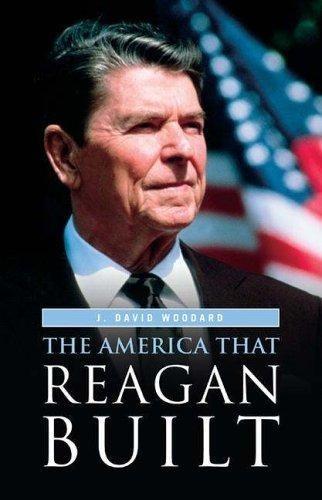
The America That Reagan Built
by
J. David Woodard
Published 15 Mar 2006
If the Soviet Union knew a confrontation would end hopelessly with bombs and rockets hitting Moscow, then the chances for peace would be greater, or so the theory went. John Foster Dulles, the Secretary of State under Dwight Eisenhower, called the policy ‘‘massive retaliation.’’ Later it would become ‘‘mutually assured destruction,’’ with the more fitting acronym MAD. Ronald Reagan had lived through World War II and the Cold War. He was opposed to this policy, which had been pursued by both Democratic and Republican presidents with the Soviets. American presidents dating back to 1969 were of the belief that if the United States waited and played its cards right, it could have security on the cheap without war or confrontation.
…
See also Bitburg fiasco Korean Airlines Flight 007, 54 Koresh, David, 154 Kosovo, 189–91 Kuwait, 125–26, 128–29, 131, 134, 137 Lebanon: Iran-Contra scandal, 89–90; 1983 involvement, 59–62; TWA 847 hijacking, 88–89 Lennon, John, 72 leveraged buyout, 67 Lewinsky, Monica, 193–96 Lieberman, Senator Joe, 208–9, 233–34 Live Aid concert, 73 Los Angeles riots, 170–72 Luce, Henry, ‘‘The American Century,’’ Life magazine, 76 280 Index MAD (mutually assured destruction), 52 Madonna, 73 McCain, John, 205–7 McFarlane, Robert ‘‘Bud,’’ National Security Advisor, 88–89 McVeigh, Timothy, 176–78 media, 194; campaigns, 81–82, 146, 149, 188; domestic affairs, 172–74, 177, 203; foreign affairs, 131, 134, 160; politics, 140, 194–96 media markets, 31–32, 86, 113, 150, 188, 196, 207, 209, 237– 40 Medicare, 121, 185, 187 Microsoft, 163–64 Middle East, 14, 129, 141, 175, 224, 237, 243 Middle East Peace Accord, 155–57 midterm elections, 79, 129, 157, 204, 224 Milken, Michael, 67–68 Milosevic, Slobodan, 189–91 misery index, 27 modernism, 71–72 Mogadishu, 156 Mondale, Walter, 80–82 ‘‘Morning in America,’’ 83, 85, 187 MTV, 72 1980s, 25, 31–32, 35–36, 46– 47, 65–66, 69–70, 72, 77 1990s, 32, 131, 141, 152, 163, 165, 169, 176, 180–81, 196, 199–200 Nixon, Richard, 4, 17 ‘‘No Child Left Behind,’’ 213, 237 noblesse oblige, 112 Noriega, Manuel Antonio, 118–19 North, Oliver, 89–92 nuclear: freeze, 55, 56; prospect, 96; war, 55–57 Nader, Ralph, 208 NAFTA (North American Free Trade Agreement), 142, 161 Nagin, Ray, 243– 44 NASA, 93, 95 NASDAQ, 162 NATO (North Atlantic Treaty Organization), 189–91 Nelson, Prince Rogers, ‘‘Prince,’’ 72 New Democrat, 145, 157, 184 New Orleans, 243– 45 New Right, 28, 29 New York City, 220.

Traders, Guns & Money: Knowns and Unknowns in the Dazzling World of Derivatives
by
Satyajit Das
Published 15 Nov 2006
In the end, the bond desk’s attempts to best Meriwether precipitated a scandal. Salomon’s was accused of breakng the rules that governed the US government bond auctions. Both Paul Mozer, who had succeeded Coats as the head of Government bond trading, and Meriwether were forced to leave Salomons. It was MAD (mutually assured destruction).5 Modus operandi After leaving Salomon’s, Meriwether gradually put together LTCM. He assembled his old team; this time they would be in complete control; their profits would not have to subsidize the bloated and unprofitable activities of a full-service investment bank. The presence of Merton, Scholes and Mullins was puzzling.
…
There was one final meeting; if there was no progress, then we would give it away. The meeting was ugly. Sensing victory, the dealer’s lawyers became aggressive and attacked us personally. Now lawyers and expert advisors have principles; we didn’t like being called ‘scum’. Legally, we were on weak ground – it was time for the MAD (mutually assured destruction) strategy. We set up a last meeting, claiming that we had new evidence. How were they to know that we had nothing of the sort? We were going to use standover tactics; if we were scum then we were going to give them something to support their views. At the meeting, we laid out the position.
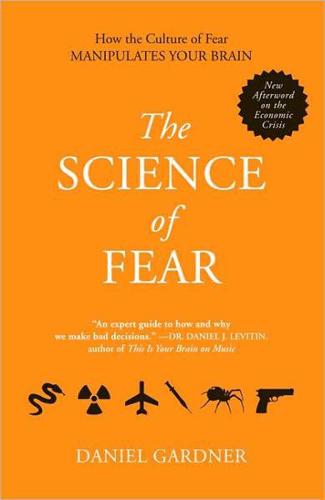
The Science of Fear: How the Culture of Fear Manipulates Your Brain
by
Daniel Gardner
Published 23 Jun 2009
In November 2007, the esteemed professor of Near Eastern studies Bernard Lewis cast the fight against terrorism as the third great fight against totalitarianism, after the struggles against Naziism and Communism. But there is an important difference, Lewis wrote. The Nazis “had no weapons of mass destruction. The Soviets had them, but were deterred from using them by what came to be known as ‘mutually assured destruction.’ Our present adversaries either have or will soon have weapons of mass destruction, but for them, with their apocalyptic mind-set, mutual assured destruction would not be a deterrent; it would be an inducement. ” Thus, according to Lewis, neither a genocidal maniac who came within a hair of conquering Europe and dominating the planet nor a superpower capable of snuffing out civilization on 15 minutes notice were as dangerous as scattered bands of fanatics who may, someday, get their hands on a WMD or two. 267: “. . . of death or 9/11 increased support for the president.”

Smart Cities: Big Data, Civic Hackers, and the Quest for a New Utopia
by
Anthony M. Townsend
Published 29 Sep 2013
At the time, Baran had been tasked with developing a scheme for an indestructible telecommunications network for the US Air Force. Cold War planners feared that the hub-and-spoke structure of the telephone system was vulnerable to a preemptive Soviet first strike. Without a working communications network, the United States would not be able to coordinate a counterattack, and the strategic balance of “mutually assured destruction” between the superpowers would be upset. What Baran proposed, according to Harvard University science historian Peter Galison, “was a plan to remove, completely, critical nodes from the telephone system.”15 In “On Distributed Communications” and a series of pamphlets that followed, he demonstrated mathematically how a less centralized latticework of network hubs, interconnected by redundant links, could sustain heavy damage without becoming split into isolated sections.16 The idea was picked up by the Pentagon’s Advanced Research Projects Agency (ARPA), a group set up to fast-track R&D after the embarrassment of the Soviet space program’s Sputnik launch in 1957.
…
In the early 1960s, the nuclear arms race between the United States and the Soviet Union entered a new and alarming phase. At first, American strategy was based on deterrence. By matching Soviet buildup, the United States could ensure that nuclear war would cause such total annihilation that it would be an unthinkable option for the enemy. But some thinkers, led by Herman Kahn at RAND, didn’t buy the “mutually assured destruction” doctrine. In a controversial 1962 treatise, titled Thinking About the Unthinkable, published after he left RAND to found his own group, the Hudson Institute, Kahn argued that not only was a nuclear war winnable, but “the living would not envy the dead” as conventional thinking held.71 Many, if not most of the population, would survive.

Vertical: The City From Satellites to Bunkers
by
Stephen Graham
Published 8 Nov 2016
Such vertical axes of surveillance, targeting and burrowing are far from new, however. Rather, current incarnations echo and intensify centuries of burrowing against attack from above – in medieval siege warfare, in the trenches of World War I, in the vast concrete bunkers of World War II, and in the preparations for ‘mutually assured destruction’ of the Cold War. (American journalist Albert Kahn memorably quoted one child’s fear when researching the psychological effects of the latter. ‘Please mother!’ the child pleaded. ‘Can’t we go some place where there isn’t any sky?’2) All of these outbursts of bunkering have repeatedly reworked prevailing notions of the use of warfare from above to try to destroy defensive and military architectures on or below ground.
…
Their brute, immovable materiality strongly evokes collective and personal memories of what archaeologist Graham Fairclough has called ‘a remembered past’. Here emerges a powerful series of resonances with the way the excavation of bunkers linked seamlessly in the Cold War with constructions of modernist Brutalism above the surface47 within an all-powerful rhetoric of mutually assured destruction or ‘exterminism’.48 Such complexes – ‘ruins of the twentieth century, of ideologies, conflicts, and dreams of mastery through reinforced concrete’49 – lie ready for exploration by a spectrum of groups, from conspiracy theorists, archaeologists, architects, place marketers, to photographers and developers.
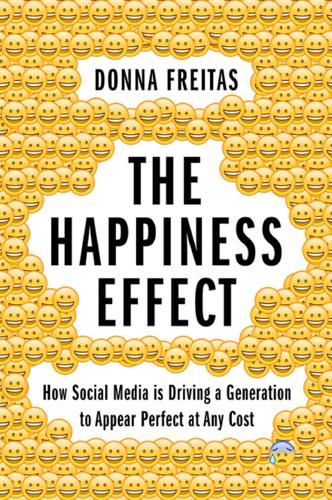
The Happiness Effect: How Social Media Is Driving a Generation to Appear Perfect at Any Cost
by
Donna Freitas
Published 13 Jan 2017
4.The Selfie Generation: Why Social Media Is More of a “Girl Thing” 5.Performing for God: Religion On (and Off) Social Media 6.Virtual Playgrounds: The Rise of Yik Yak, the Joys of Snapchat, and Why Anonymity Is Just So Liberating 7.An Acceptable Level of Meanness: The Bullies, the Bullied, and the Problem of Vulnerability 8.So You Wanna Make That Facebook Official? 9.The Ethics of Sexting: Tinder, Dating, and the Promise of Mutually Assured Destruction 10.My Smartphone and Me: A Love-Hate Relationship 11.Taking a Timeout from the Timeline: Students Who Quit Social Media and Why Conclusion: Virtues for a Generation of Social Media Pioneers Taking Control of Our Smartphones: How Student Affairs Professionals, Faculty, and Parents Can Help Young Adults Feel Empowered with Respect to Social Media and Their Devices Acknowledgments Appendix: Methodology Notes Index FOREWORD Margaret has to avoid Facebook because seeing how happy everyone else appears online makes her unhappy by comparison.
…
Some lament that nobody really talks anymore, and that “friend has changed as a word” because of Facebook. It’s not only friendships, either, that college students still prefer to strike up in person. When it comes to dating, romance, sex, and hooking up, their preference for an in-person, face-to-face spark is undeniable. 9 THE ETHICS OF SEXTING TINDER, DATING, AND THE PROMISE OF MUTUALLY ASSURED DESTRUCTION Sexting responsibly would mean, if you’re not sending your pictures or, like, sexy text messages to somebody you don’t know. Jeremy, sophomore, Catholic university I do not know of any peers who engage in [sexting] now, as it is widely known to negatively impact your reputation on campus.

Shoot for the Moon: The Space Race and the Extraordinary Voyage of Apollo 11
by
James Donovan
Published 12 Mar 2019
In 1953, Eisenhower had threatened to use a hydrogen bomb against China, and U.S. senators had often called publicly for an atomic bomb to be dropped on Russia. Soon after the Soviet Union had detonated its own nuclear device, the two superpowers had begun to coexist under an unwritten but clearly understood doctrine known as “mutually assured destruction,” meaning that everyone was aware that the full-scale use of nuclear weapons would cause the almost complete annihilation of both the attacker and the defender. This knowledge—and each country’s fear of a massive, preemptive nuclear strike from the other—was all that kept the Cold War from becoming hot.
…
But neither the public nor the press seemed to care about the distinction, and the May 15, 1958, successful launch into orbit of Sputnik 3, a 2,926-pound research satellite with a large array of instruments, only increased the nation’s anxiety. The United States and the USSR had yet to engage in full-scale combat, but each side was heavily armed, and the doctrine of mutually assured destruction was of little comfort. Further fueled by an almost constant barrage of opinion pieces and articles on the imminent dangers of Soviets in space, not to mention speeches and statements by Senator Lyndon Johnson and other Democratic congressmen eager to exploit the purported missile gap for their own political gain, Americans quickly began demanding a full-fledged space program.
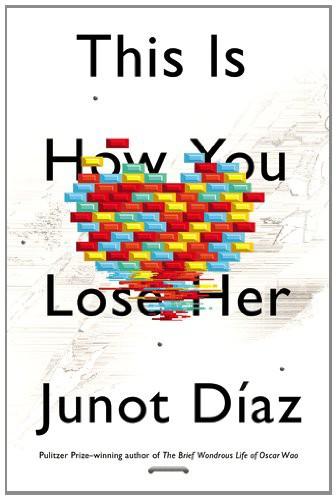
This Is How You Lose Her
by
Junot Diaz
Published 10 Sep 2012
In your dreams the bombs were always going off, evaporating you while you walked, while you ate a chicken wing, while you took the bus to school, while you fucked Paloma. You would wake up biting your own tongue in terror, the blood dribbling down your chin. Someone really should have medicated you. Paloma thought you were being ridiculous. She didn’t want to hear about Mutual Assured Destruction, The Late Great Planet Earth, We begin bombing in five minutes, SALT II, The Day After, Threads, Red Dawn, WarGames, Gamma World, any of it. She called you Mr. Depressing. And she didn’t need any more depressing than she had already. She lived in a one-bedroom apartment with four younger siblings and a disabled mom and she was taking care of all of them.

Roller-Coaster: Europe, 1950-2017
by
Ian Kershaw
Published 29 Aug 2018
Kennedy was elected President of the United States in November 1960 the Americans had perhaps seventeen times as many usable nuclear weapons as the Soviets. Which of the superpowers possessed the larger nuclear arsenal had by now, however, become largely meaningless. For by the early 1960s the nuclear arms race had long reached the point of Mutually Assured Destruction (MAD), as it was aptly labelled. Interballistic missiles could deliver their devastating load within minutes. Fleets of bombers and submarines were armed with nuclear weapons, ready to unleash them should the command be given. The world had to live with the possibility that a crisis could escalate to the point where the button would be pressed; or that a nuclear bomb could wreak devastation by accident (such as came close to wiping out East Anglia when in 1957 an American bomber crashed into a repository holding three nuclear bombs).
…
Earlier in the year Reagan had announced a new nuclear programme, the Strategic Defence Initiative (SDI), dubbed ‘Star Wars’ since it aimed at a comprehensive anti-missile defence system located in space. It threatened to tip the nuclear balance decisively in America’s favour. The Soviets did not have the resources to match it. But when they tried to ensure that restrictions on it be included in talks on nuclear arms limitation, the Americans refused. Mutually Assured Destruction (MAD) remained much as it had been. It provided its own perverse brand of security of a sort. Not that this was how ordinary people saw it. Fear returned. The new Cold War brought new anxieties about a nuclear holocaust. These were not at the same pitch as they had been during the Cuban Missile Crisis of October 1962.
…
It has become ever clearer that what happens abroad can no longer be detached from daily life at home. If, nonetheless, despite significant downsides change in Europe over the past seventy years has been substantially positive, this derives in no small measure from two post-war developments: NATO and the European Community. A third element – the ‘mutually assured destruction’ of nuclear weapons – was perhaps most important of all in deterring any descent into another major conflagration in Europe. The shield of NATO and active American engagement were essential guarantees of the post-war order in Western Europe. Especially since the Vietnam War there has been widespread – often justified – hostility in Europe towards American foreign policy.
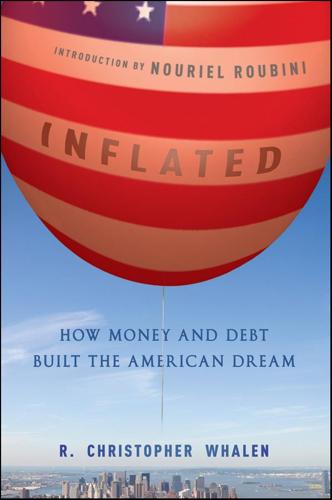
Inflated: How Money and Debt Built the American Dream
by
R. Christopher Whalen
Published 7 Dec 2010
The domestic political contest between the Democrats and Republicans turned on how the Cold War was or was not being won. JFK gained the upper hand in his campaign against Richard Nixon by alleging that a “missile gap” between the United States and the Soviets had developed under Eisenhower. The widely shared view of the likelihood of global conflict was captured in phases such as “mutually assured destruction” and influenced many areas of American policy, including the international role of the dollar and the growth of U.S. trade with nations outside the Soviet bloc. American leaders in politics, business, and the defense community believed that increasing the flow of goods between the United States and the other nations of the free world was an effective bulwark against communism.
…
Mills, Ogden Mini-Depression (1937-1938) Mini recession, Greenspan/FOMC response Minneapolis Fed, open presidency Minton, Bruce Fat Years and the Lean Mintz, Steven Missouri Pacific Railroad, purchase Mitchell, Charles Mitchell, John Mondale, Fritz Mondale, Walter Monetary order Monetary policy, unification (implication) Money changes, biblical view functions fungibility hoarding issuance, federal government control one-to-one substitute perspective, change printing, power Roosevelt impact state role, increase turnover/velocity Wilson perspective Money supply adequacy, public concern flexibility change increase gold/silver, role (debate) increase Fed, impact public clamor stability Money Trusts attack breaking, fight Bryan perspective, change challenge panic impact power, increase Pujo Committee investigation Republican viewpoint rise Monopoly NRA protection power, attack profits, enhancement Moral hazard Morgan, Iwan Deficit Government Morgan, J.P. buyout campaign contributions control investments, pooling panic impact power Strong, interaction Morgenthau, Henry Morgenthau, Jr., Henry Morrow, Dwight Multilateral trade framework Murphy, Charles Muskie, Edmund Mussolini, Benito rise Mutually assured destruction (MAD) Myers, Margaret National Bank Act (1865) passage National Banking Act, enactment National Bank of Commerce, Houston bank rescue National banks branch establishment, restrictions closure, FDR authority creation number (1935) National Citizens League, Laughlin organization National City Bank campaign contributions National currency adoption creation devaluation Roosevelt impact National Currency Act (1863) National Industrial Recovery Act National Monetary Commission Aldrich group meetings banking reform bill blue-ribbon report establishment National monetary system, infrastructure (establishment) National Recovery Administration centralization FDR attempt Johnson control National Reserve Association banker control proposal Near-banks, status Negative liberty Neo-Keynesian economic policies, comparison Neo-Keynesian socialists, impact New Deal authoritarian nature, displeasure Baruch analysis Boom (1933) criticism FDR statist initiatives, Fed Board (impact) FDR tempering, Hoover deal Federal Reserve System, role laws, Supreme Court void price controls/rationing private investment rate, decline RFC, impact sensitivity New Dealers, The New Deal III New Era Investing New era thinking New York Clearing House bailout, organization clearing claims reduction treatment trust membership, absence New York Reserve Bank actions, Fed control (inability) New York Stock Exchange, decline Nixon, Richard betrayal China trip devaluation dollar/gold link, cessation financial legacy gold convertibility, cessation Keynesian claim NEP resignation unemployment observation wages/prices, 90-day freeze Nixonomics Nominal economic growth, driving Non-military discretionary expenditures, funding Norman, Montagu Norris, George North, Gary North Atlantic Treaty Organization (NATO), formation Northern Pacific Railroad Cooke control insolvency Northern Securities Company, anti-trust action Norton, Charles D.
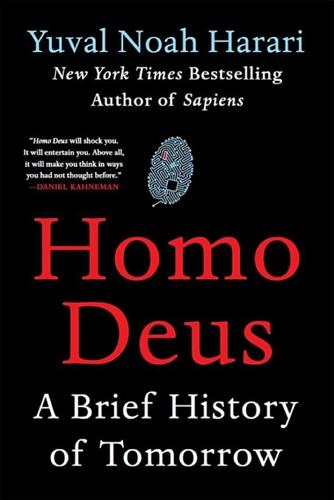
Homo Deus: A Brief History of Tomorrow
by
Yuval Noah Harari
Published 1 Mar 2015
Despite the support of all these colonels and generals, militarily the Warsaw Pact had a huge numerical superiority over NATO. In order to reach parity in conventional armament, Western countries would probably have had to scrap liberal democracy and the free market, and become totalitarian states on a permanent war footing. Liberal democracy was saved only by nuclear weapons. NATO adopted the doctrine of MAD (mutual assured destruction), according to which even conventional Soviet attacks would be answered by an all-out nuclear strike. ‘If you attack us,’ threatened the liberals, ‘we will make sure nobody comes out of it alive.’ Behind this monstrous shield, liberal democracy and the free market managed to hold out in their last bastions, and Westerners could enjoy sex, drugs and rock and roll, as well as washing machines, refrigerators and televisions.
…
(game show) 315–16, 315 Jesus Christ 91, 155, 183, 187, 271, 274, 297 Jews/Judaism: ancient/biblical 60, 90–1, 94, 172–3, 174, 181, 193, 194–5, 268, 390; animal welfare and 94; expulsions from early modern Europe 197, 198; Great Jewish Revolt (AD 70) 194; homosexuality and 225–6; Second World War and 164–5, 165, 182 Jolie, Angelina 332–3, 335, 347 Jones, Lieutenant Henry 254 Journal of Personality and Social Psychology 354–5 Joyce, James: Ulysses 240 JSTOR digital library 383 Jung, Carl 223–4 Kahneman, Daniel 294, 295–6, 338–9 Kasparov, Garry 320–1, 320 Khmer Rouge 264 Khrushchev, Nikita 263, 273–4 Kurzweil, Ray 24, 25, 27; The Singularity is Near 381 Kyoto protocol, 1997 215–16 Lake Fayum engineering project, Egypt 161–2, 175, 178 Larson, Professor Steve 324–5 Law of the Jungle 14–21 lawns 58–64, 62, 63 lawyers, replacement by artificial intelligence of 314 Lea, Tom: That 2,000 Yard Stare (1944) 244, 245, 246 Lenin Academy for Agricultural Sciences 371–2 Lenin, Vladimir 181, 207, 251, 271, 272, 273, 375 Levy, Professor Frank 322 liberal humanism/liberalism 98, 181, 247; contemporary alternatives to 267–77; free will and 281–90, 304; humanism and see humanism; humanist wars of religion, 1914– 1991 and 261–7; individualism, belief in 290–304, 305; meaning of life and 304, 305; schism within humanism and 246–57; science undermines foundations of 281–306; technological challenge to 305–6, 307–50; value of experience and 257–9, 260, 387–8; victory of 265–7 life expectancy 5, 25–7, 32–4, 50 ‘logic bombs’ (malicious software codes) 17 Louis XIV, King 4, 64, 227 lucid dreaming 361–2 Luther, Martin 185–7, 275, 276 Luther King, Martin 263–4, 275 Lysenko, Trofim 371–2 MAD (mutual assured destruction) 265 malaria 12, 19, 315 malnutrition 3, 5, 6, 10, 27, 55 Mao Zedong 27, 165, 167, 251, 259, 263, 375 Maris, Bill 24 marriage: artificial intelligence and 337–8, 343; gay 275, 276; humanism and 223–5, 275, 276, 291, 303–4, 338, 364; life expectancy and 26 Marx, Karl/Marxism 56–7, 60, 183, 207, 247–8, 271–4; Communist Manifesto 217; Das Kapital 57, 274 Mattersight Corporation 317–18 Mazzini, Giuseppe 249–50 meaning of life 184, 222, 223, 299–306, 338, 386 Memphis, Egypt 158–9 Mendes, Aristides de Sousa 164–5, 164 Merkel, Angela 248–9 Mesopotamia 93 Mexico 8–9, 11, 263 Michelangelo 27, 253; David 260 Microsoft 15, 157, 330–1; Band 330–1; Cortana 342–3 Mill, John Stuart 35 ‘mind-reading’ helmet 44–5 Mindojo 314 MIT 322, 383 modern covenant 199–219, 220 Modi, Narendra 206, 207 money: credit and 201–5; Dataism and 352, 365, 379; intersubjective nature of 144, 145, 171, 177; invention of 157, 158, 352, 379; investment in growth 209–11 mother–infant bond 88–90 Mubarak, Hosni 137 Muhammad 188, 226, 270, 391 Murnane, Professor Richard 322 Museum of Islamic Art, Qatar 64 Muslims: Charlie Hebdo attack and 226; Crusades and 146, 147, 148, 149; economic growth, belief in 206; evaluating success of 174; evolution and 103; expulsions of from early modern Europe 197, 198; free will and 285; lawns and 64; LGBT community and 225 see also Islam Mussolini, Benito 302 Myanmar 144, 206 Nagel, Thomas 357 nanotechnology 23, 25, 51, 98, 212, 269, 344, 353 National Health Service, UK 334–5 National Salvation Front, Romania 136 NATO 264–5 Naveh, Danny 76, 96 Nayaka people 75–6, 96 Nazism 98, 164–5, 181, 182, 247, 255–7, 262–3, 375, 376, 396 Ne Win, General 144 Neanderthals 49, 156, 261, 273, 356, 378 Nebuchadnezzar, King of Babylonia 172–3, 310 Nelson, Shawn 255 New York Times 309, 332–4, 347, 370 New Zealand: Animal Welfare Amendment Act, 2015 122 Newton, Isaac 27, 97–8, 143, 197 Nietzsche, Friedrich 234, 254, 268 non-organic beings 43, 45 Norenzayan, Ara 354–5 Novartis 330 nuclear weapons 15, 16, 17, 17, 131, 149, 163, 216, 265, 372 Nyerere, Julius 166 Oakland Athletics 321 Obama, President Barack 313, 375 obesity 5–6, 18, 54 OncoFinder 323 Ottoman Empire 197, 207 ‘Our Boys Didn’t Die in Vain’ syndrome 300–3, 301 Page, Larry 28 paradox of knowledge 55–8 Paris Agreement, 2015 216 Pathway Pharmaceuticals 323 Petsuchos 161–2 Pfungst, Oskar 129 pharmacists 317 pigs, domesticated 79–83, 82, 87–8, 90, 98, 99, 100, 101, 231 Pinker, Steven 305 Pius IX, Pope 270–1 Pixie Scientific 330 plague/infectious disease 1–2, 6–14 politics: automation of 338–41; biochemical pursuit of happiness and 41; liberalism and 226–7, 229, 232, 232, 234, 247–50, 247n, 252; life expectancy and 26–7, 29; revolution and 132–7; speed of change in 58 pollution 20, 176, 213–14, 215–16, 341–2 poverty 3–6, 19, 33, 55, 205–6, 250, 251, 262, 349 Presley, Elvis 159–60, 159 Problem of Other Minds 119–20, 126–7 Protestant Reformation 185–7, 198, 242–4, 242, 243 psychology: evolutionary 82–3; focus of research 353–6, 360–2; Freudian 117; humanism and 223–4, 251–2; positive 360–2 Putin, Vladimir 26, 375 pygmy chimpanzees (bonobos) 138–9 Quantified Self movement 331 quantum physics 103, 170, 182, 234 Qur’an 170, 174, 269, 270 rats, laboratory 38, 39, 101, 122–4, 123, 127–8, 286–7 Redelmeier, Donald 296 relativity, theory of 102, 103, 170 religion: animals and 75–8, 90–8, 173; animist 75–8, 91, 92, 96–7, 173; challenge to liberalism 268; Dataism 367–97 see also Dataism; defining 180–7; ethical judgments 195–7; evolution and see evolution; formula for knowledge 235–7; God, death of 67, 234, 261, 268; humanist ethic and 234–5; monotheist 101–2, 173; science, relationship with 187–95, 197–8; scriptures, belief in 172–4; spirituality and 184–7; theist religions 90–6, 98, 274 revolutions 57, 60, 132–7, 155, 263–4, 308, 310–11 Ritalin 39, 364 robo-rat 286–7 Roman Empire 98, 191, 192, 194, 240, 373 Romanian Revolution, 1989 133–7, 138 Romeo and Juliet (Shakespeare) 365–6 Rousseau, Jean-Jacques 223, 282, 305 Russian Revolution, 1917 132–3, 136 Rwanda 15 Saarinen, Sharon 53 Saladin 146, 147, 148, 150–1 Santino (chimpanzee) 125–7 Saraswati, Dayananda 270, 271, 273 Scientific Revolution 96–9, 197–8, 212, 236–7, 379 Scotland 4, 303–4, 303 Second World War, 1939–45 21, 34, 55, 115, 164, 253, 262–3, 292 self: animal self-consciousness 124–7; Dataism and 386–7, 392–3; evolutionary theory and 103–4; experiencing and narrating self 294–305, 337, 338–9, 343; free will and 222–3, 230, 247, 281–90, 304, 305, 306, 338; life sciences undermine liberal idea of 281–306, 328–9; monotheism and 173, 174; single authentic self, humanist idea of 226–7, 235–6, 251, 281–306, 328–41, 363–6, 390–1; socialism and self-reflection 251–2; soul and 285; techno-humanism and 363–6; technological challenge to liberal idea of 327–46, 363–6; transcranial stimulator and 289 Seligman, Martin 360 Senusret III 161, 162 September 11 attacks, New York, 2011 18, 374 Shavan, Shlomi 331 Shedet, Egypt 161–2 Silico Medicine 323 Silicon Valley 15, 24, 25, 268, 274, 351, 381 Sima Qian 173, 174 Singapore 32, 207 smallpox 8–9, 10, 11 Snayers, Pieter: Battle of White Mountain 242–4, 243, 246 Sobek 161–2, 163, 171, 178–9 socialist humanism/socialism 247–8, 250–2, 256, 259–60, 261–2, 263, 264, 265, 266–7, 271–4, 325, 351, 376 soul 29, 92, 101–6, 115–16, 128, 130, 132, 138, 146, 147, 148, 150, 160, 184–5, 186, 189, 195, 229, 272, 282, 283, 285, 291, 324, 325, 381 South Korea 33, 151, 264, 266, 294, 349 Soviet Union: communism and 206, 208, 370, 371–2; data processing and 370, 370, 371–2; disappearance/collapse of 132–3, 135, 136, 145, 145, 266; economy and 206, 208, 370, 370, 371–2; Second World War and 263 Spanish Flu 9–10, 11 Sperry, Professor Roger Wolcott 292 St Augustine 275, 276 Stalin, Joseph 26–7, 256, 391 stock exchange 105–10, 203, 210, 294, 313, 369–70, 371 Stone Age 33–4, 60, 74, 80, 131, 155, 156, 157, 163, 176, 261 subjective experience 34, 80, 82–3, 105–17, 143–4, 155, 179, 229, 237, 312, 388, 393 Sudan 270, 271, 273 suicide rates 2, 15, 33 Sumerians 156–8, 159, 162–3, 323 Survivor (TV reality show) 240 Swartz, Aaron 382–3; Guerilla Open Access Manifesto 383 Sylvester I, Pope 190–1 Syria 3, 19, 149, 171, 220, 275, 313 Taiping Rebellion, 1850–64 271 Talwar, Professor Sanjiv 286–7 techno-humanism: definition of 352–3; focus of psychological research and 353–9; human will and 363–6; upgrading of mind 359–66 technology: Dataism and see Dataism; inequality and future 346–50; liberal idea of individual challenged by 327–46; renders humans economically and militarily useless 307–27; techno-humanism and see techno-humanism Tekmira 203 terrorism 14, 18–19, 226, 288, 290, 311 Tesla 114, 322 Thatcher, Margaret 57, 372 Thiel, Peter 24–5 Third Man, The (movie) 253–4 Thirty Years War, 1618–48 242–3 Three Gorges Dam, 163, 188, 196 Thucydides 173, 174 Toyota 230, 294, 323 transcranial stimulators 44–5, 287–90, 362–3, 364 Tree of Knowledge, biblical 76–7, 77, 97, 98 tuberculosis 9, 19, 23, 24 Turing, Alan 120, 367 Turing Machine 367 Turing Test 120 23andMe 336 Twitter 47, 137, 313, 387 US Army 287–90, 362–3, 364 Uganda 192–3, 195 United States: Dataism and 374; energy usage and happiness levels in 34; evolution, suspicion of within 102; Kyoto protocol, 1997 and 215–16; liberalism, view of within 247n; nuclear weapons and 163; pursuit of happiness and 31; value of life in compared to Afghan life 100; Vietnam War and 264, 265; well-being levels 34 Universal Declaration of Human Rights 21, 24, 31 Urban II, Pope 227–8 Uruk 156–7 Valla, Lorenzo 192 Valle Giulia, Battle of, 1968 263 vampire bats 204–5 Vedas 170, 181, 270 Vietnam War, 1954–75 57, 244, 264, 265 virtual-reality worlds 326–7 VITAL 322–3 Voyager golden record 258–9 Waal, Frans de 140–1 Walter, Jean-Jacques: Gustav Adolph of Sweden at the Battle of Breitenfeld (1631) 242, 243, 244–5 war 1–3, 14–19; humanism and narratives of 241–6, 242, 245, 253–6 Warsaw Pact 264–5 Watson (artificial intelligence system) 315–17, 315, 330 Watson, John 88–9, 90 Waze 341–2 web of meaning 143–9 WEIRD (Western, educated, industrialised, rich and democratic) countries, psychology research focus on 354–5, 359, 360 West Africa: Ebola and 11, 13, 203 ‘What Is It Like to Be a Bat?’

The Illegals: Russia's Most Audacious Spies and Their Century-Long Mission to Infiltrate the West
by
Shaun Walker
Published 15 Apr 2025
His award citation proudly noted that the assault ended with 2,100 Red Army soldiers killed and 8,100 taken prisoner.[14] For Drozdov, there was little doubt that getting the better of such enemies was worth any amount of collateral damage. 18 The Main Enemy Spying on the Americans The flash point of 1962, when the Cuban missile crisis pushed the world to the brink of nuclear war, receded into the past, and the logic of mutually assured destruction, whereby each side’s vulnerability to attack prevented either from launching a first strike, led to a peculiar form of Cold War stability. This culminated in Richard Nixon’s visit to Moscow in 1972, the first ever made by a U.S. president. Nixon and Brezhnev signed seven agreements, including one on arms control and another on the prevention of accidental military clashes.
…
(son of Mikhail Vasenkov), 316 League of Nations, 30 le Carré, John, 330 Lefortovo Prison, 58 legends: backup, 220 definition of, 122, 360 in digital age, 357 Lenin, Vladimir, 8 before 1917, 15–18 Cheka and, 20, 360 death of, 29 illegal vs. legal party work and, 18, 20–1 konspiratsiya and, 16–17 October Revolution and, 20, 25 Leon, see Ben Yehuda, Shlomo Leon and Eddie’s (nightclub), 109 Leonov, Nikolai, 305 Life, 142 Line ER, 314 Line N: definition of, 360–1 in New York residency, 261, 314 number of officers in, 267 responsibilities of, 182, 185–6 Line OT, 314 Line PR, 314 Line VKR, 314 Line X, 314 Linitskaya, Galina, 173–4, 196, 266, 386–7n9 Linitsky, Leonid (father of Galina Linitskaya), 386–7n9 Linov, Fyodor (father of Yuri), 154–5, 166 Linov, Yuri, 148–9 Andropov, Yuri, and, 214–15 arrest and interrogation by Israel of, 219–21 biography of, 154–6 daughters and, 185, 189, 205, 224 false identity of, 182–3 illegal work in Austria by, 184–7 illegal work in Belgium by, 190–1 illegal work in Britain by, 189–90 illegal work in Ireland by, 187–9 illegal work in Israel by, 208–19 language study by, 156, 162, 206–7, 212, 214 Lazarev, Anatoly, and, 216–17 Odinga, Raila, and, 169–70 Operation Progress work by, 193, 200–3, 205–6 post-illegal life of, 224, 348 recruitment of, 153–4, 156–7 return to Soviet Union of, 222–3 search for a wife for, 174–7 training in East Germany of, 167–72 training in Kharkiv of, 157–9 training in Kyiv of, 159–67 trial and sentencing in Israel of, 221–2 wife Tamara Kovalenko and, 175–81, 189, 191–2, 205, 216–17, 223–4 Litvinenko, Alexander, 326 LiveJournal (blogging platform), 340 live letter box, 185 Lives of Wonderful People, The (book series), 347 Lokhov, Vladimir, 210–11, 214, 216 Lonsdale, Gordon, see Molody, Konon Los Alamos National Laboratory, 109 Lowry, Helen (wife of Iskhak Akhmerov), 75, 78 Lubyanka (building), see Cheka; KGB Lubyanka Square (Moscow), 26 Luce, Clare Boothe, 134 Luce, Henry, 134 Lunacharsky, Anatoly, 35 Lyudmila (wife of Vladimir Putin), 309 M Maclean, Donald, 108, 114 Majda (source of Yuri Linov), 202 Makayev, Valery, 113–15 Maklyarsky, Mikhail, 92–5, 97 Malinovsky, Roman, 372n17 Manchuria, 22 Mangel, Joaquín Gutiérrez, 120–1 Manhattan Project, 109 Man in Plainclothes (1973 film), 384n2 Mao Xiaofeng, 312 Mao Zedong, Chairman, 202 Margarita (daughter of Alexander Poteyev), 316 Marina (wife of Alexander Poteyev), 331 Markin, Valentin, 69–71 Marshall Plan, 110 Marusya (Soviet agent), 101–2 Massing, Hede, 73–6, 109 Max (KGB officer), 259–60 Mayer, Ludwig, see Dultsev, Artem Mayer, Maria, see Dultseva, Anna Mazanik, Elena, 103–6 McCarthy, Joseph, 112 McCarthyism, 111–12, 140 McDonald’s: in Soviet Union, 298 Medvedev, Dmitry, 329, 330–1, 334 Meir, Golda, 208, 212, 219 Mercader, Caridad (mother of Ramón), 84–5 Mercader, Ramón, 84–6, 132 Merkulov, Vsevolod, 90–1 Metsos, Christopher, see Kapustin, Pavel MGIMO (Moscow State Institute of International Relations), 337 MI5 (British domestic intelligence service): Blunt, Anthony, and, 108 Molody case and, 142–3 Oldham case and, 50, 370n33 MI6 (British foreign intelligence service): Cuban missile crisis and, 238 founding of, 27 limited scope of, 51 Operation Ghost Stories and, 335 Philby, Kim, and, 108, 113–14 Russia operations by, 327 Michael (son of Dalibor Valoušek), 244, 251–2, 257 Milan (source of Yuri Linov), 202 Milashov, Sergei, 370n23 Mills, Patricia, see Pereverzeva, Natalia Minsker Zeitung, 100 Miriam (Zionist student), 212–13 Mitrokhin, Vasily, 11, 349, 383n10, 393n18 Molody, Konon, 142–4, 147 Molotov-Ribbentrop Pact, 77–8, 87 Moreno, Jorge Martinez, 126 Mornard, Jacques, see Mercader, Ramón Moscow, 25, 54–5 Moskvin, Mikhail, see Trilisser, Meer Mossad, 221–2 Motherland Calls, The (sculpture), 258 Motl, Karl-Bernd, 182–3. See also Linov, Yuri Mozambique, 286 Mueller, Robert, 330–1, 343 Munich Security Conference (2007), 326 Murphy, Cynthia, see Guryev, Lidiya Murphy, Richard, see Guryev, Vladimir Muslim Battalion, 276–8 mutually assured destruction, 111, 236 N Nagayev, Vladimir, 168–71 Namakon, 305 Napoleon (hotel), 41–2 Naryshkin, Sergei, 344–5, 347 NASA (U.S. National Aeronautics and Space Administration), 245 Natalia (wife of Ishkak Akhmerov), 75, 372–3n13 National Security Agency (U.S.), 286 NATO (North Atlantic Treaty Organization), 110, 190, 286, 327 Navalny, Alexei, 355 Nazali, Hassanpour, see Lokhov, Vladimir Nazis: in postwar West Germany, 230 Nea Hellas (ship), 115 nelegalnaya (“illegal”), 18.

Global Catastrophic Risks
by
Nick Bostrom
and
Milan M. Cirkovic
Published 2 Jul 2008
The likelihood of at least one powerful actor being insane is not small. The likelihood that devastating weapons will be built and released accidentally (possibly through overly sensitive automated systems) is also considerable. Finally, the likelihood of a conflict between two [powers capable of unleashing a mutually assured destruction scenario] escalating until one feels compelled to exercise a doomsday option is also non-zero. This indicates that unless adequate defences can be prepared against weapons intended to be ultimately destructive - a point that urgently needs research - the number of actors trying to possess such weapons must be minimized.
…
And even if no one deliberately launched a strike, interpenetrating forces with the necessary autonomy and fast reaction times could produce accidental escalation. 490 Global catastrophic risks During the Cold War period, the world's military power was largely concentrated in two camps, one dominated by the United States and the other by the Soviet Union. As both sides continued to develop and stockpile massive amounts of nuclear weapons, the doctrine of Mutually Assured Destruction (MAD) emerged. Full-scale war could have resulted in the annihilation ofboth powers, and so neither one made the first move. Unfortunately, many of the factors that allowed MAD to work in deterring World War I I I may not be present in an arms race involving nano-built weapons: 1. The Cold War involved only two primary players; once a rough parity was achieved (or perceived) , the resulting standoff was comparatively stable.
…
Stock 80 meteor impact, as cause of mass extinctions 255, 258-9 meteor showers 227, 228 meteor strike risk 1 4- 1 5 meteoroids, a s source o f atmospheric dust 232-3 methane, release from permafrost 274 methane hydrate, release from oceans 273 method of moments 156 microbial toxins 300, 453 use in bioterrorism 456 microcephalin genes 58 global frequencies 59-60 M iddle East, nuclear programmes 397-9, 400 Milankovitch cycles 239-41 Milky Way, collision with Andromeda 37-8 millenarianism 77 millenialism 9, 73-4 amillenialism 75-6 apocalypticism 77, 78, 409, 417 dysfunctional manifestations 84-5 positive effects 83-4 post-millenialism 76 premillenialism 74-5 techno-apocalypticism 81-3 techno-millenialism 79-81 utopianism 77-8 Millenia/ism, Utopianism, and Progress, Olson, T. 86 Millennium Bug 82-3, 340 M illerism 74-5 mind projection fallacy 3 1 0 mini-black holes 349-50 minimal standard model 354 Minuteman ballistic missiles 382 consequences of strike 389 mistakes, as cause of nuclear war 2 1 , 382, 383, 384, 426-7 mitigation policy 29 climate change 16, 277, 279-81 see also risk mitigation model risk 176, 180 model uncertainty, climate change 275-6 molecular manipulators 331 molecular manufacturing 24-5, 481 , 482, 484-6, 498-9 global catastrophic risks 488-9 destructive global governance 492 economic and social disruption 492 ecophagy 495-6 enhanced intelligences 494 environmental degradation 494-5 war 489-92 products 486-7 weapons 487-8 risk mitigation 496-8 molecular nanotechnology 33 1-2 Monod, J. 308 Moon, impact craters 127, 223-4 Moore's Law 79, 328, 450 Moore's Law of Mad Science 338 moral satisfaction, purchase of 106 Moravec, H.P. 1 37 Robot: Mere Machine to Transcendent Mind 79-80 morbidity of infectious diseases 291-2 mortality rates of infectious diseases 292 mosquitoes, disease transmission 289, 296 motivated cognition (rationalization) 99 motivated scepticism (disconfirmation bias) 99, 100 motivation artificial intelligence 3 1 6 , 3 1 7 for nuclear terrorism 406-1 1 mousepox research 457 Mt Pinatubo eruption, effect on climate 270 Mt St Helens eruption ( 1980) , cooling effect 208 Index Mulhall, D., Our Molecular Future 500 Mulligan, J. 464 multiple catastrophic events 167 multiple reliabilities 161-2 multiplier effects, social collapse 367 multiregional hypothesis, origin of modern humans 2 1 1 multi-stakeholder partnerships, role in biotechnology risk management 462-3 muons, effect on life 249, 254 mutation 49 mutual insurance 170 Mutually Assured Destruction (MAD) 490 Myers, N . and Knoll A.H. 69 Nagasaki bomb 428 nano-built weaponry 487-8, 489-92 nanofactories 485-6, 495, 498 block-assembly operation 497 products 486-7 Nanofuture, Hall, J . S . 500 nanomachines 486 Nanomedicine, Vol I: Basic Capabilities, Freitas, R.A. Jr 501 nanoparticles, environmental and health risks 484 nanorobots 486 nanoscale machines 482 nanoscale technologies 481 associated risks 483-4 product simplicity 482-3 Nanosystems: Molecular Machinery, Manufacturing and Computation, Drexler, K.E. 501-2 nanotechnology 24-5, 81, 481-2 interaction with AI 328-9, 33 1-2, 338 see also molecular manufacturing National Research Council ( N RC), guidelines on biotechnological research 460-1 Native Americans, effect of smallpox 296 natural disasters, perceived risk 168 natural selection 49-50 effect on human intelligence 325-6 naval fuel, H E U 413 Nazi Germany, totalitarianism 505, 506 ideology 5 14 stability 507 Nazism 1919-1945, Noakes, J. and Pridham, G. 5 1 8 Neanderthals 9 , 56, 57 near-Earth objects 545 dynamical analysis 226-9 see also asteroids; comets near-Earth object searches 14, 226 neo-catastrophic explanations, Fermi paradox 1 34 neural networks 312, 340 tank classifier problem 321-2 neutron stars 39 hyperons 351 Newby-Clark, I.R. et a!.
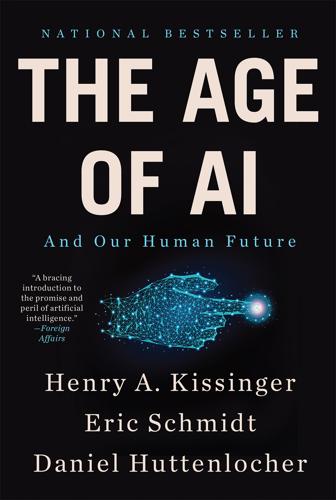
The Age of AI: And Our Human Future
by
Henry A Kissinger
,
Eric Schmidt
and
Daniel Huttenlocher
Published 2 Nov 2021
As both superpowers’ arsenals grew, the possibility of actually deploying nuclear weapons in the service of preventing or punishing the other side’s actions came to seem increasingly surreal and incredible—potentially threatening the logic of deterrence itself. The recognition of this nuclear deadlock produced a new doctrine with a name equal parts threat and sardonic recognition: mutual assured destruction or MAD. Because the number of casualties assumed by this theory, which reduced targets while compounding destructiveness, were vast, increasingly, nuclear weapons were confined to the domain of signaling, including increasing the readiness of key systems and units, moving incrementally toward preparations for a nuclear launch, in ways that were meant to be noticed and heeded.

Why Women Have Better Sex Under Socialism: And Other Arguments for Economic Independence
by
Kristen R. Ghodsee
Published 20 Nov 2018
Because I grew up during the last decades of the Cold War, and was nineteen when the Berlin Wall fell and twenty-one when the Soviet Union imploded, I spent my twenties and thirties with a clear understanding that big political changes are not only possible but that they can come when you least expect them. In fact, in the summer of 1989 I decided to drop out of college so I could see the world before the whole thing got blown to bits in a nuclear war. The threat of mutually assured destruction was so palpable in the late 1980s that it didn’t make sense to try to live an ordinary life. I certainly didn’t want to be stuck in a classroom taking a chemistry midterm when the bombs started falling. I bought a one-way ticket to Spain and left the United States in late September of 1989.
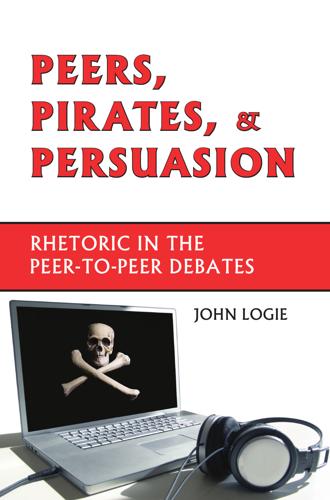
Peers, Pirates, and Persuasion: Rhetoric in the Peer-To-Peer Debates
by
John Logie
Published 29 Dec 2006
There’s a great deal of mistrust right now and it certainly looks to me as if most of it is richly deserved. There’s been an inordinate amount of bullying and threats, a fair amount over-zealous advocacy on all sides that has sometimes crossed the line into bad faith litigation or deceptive lobbying. (“War and Peace”) Litman’s language here echoes the Cold War threat of “mutually assured destruction,” and even if the stakes of the copyright cold war are comparatively minor, the time has come for the combatants to stand down. Refusal to engage in the rhetoric of warfare is both a form of conscientious objection and a long overdue step on the path toward copyright policies tailored to the practical realities and the immense potential of digital media.
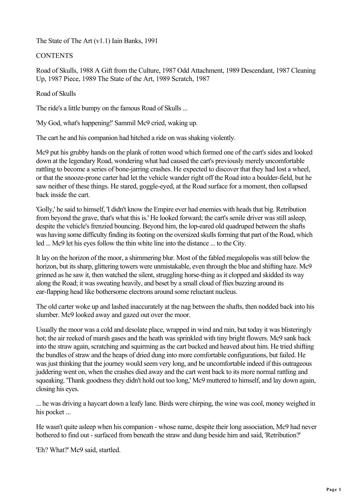
The State of the Art
by
Iain M. Banks
Published 15 Sep 1997
This is the mainstream; we're just like very smart kids; infants with a brilliant construction kit. They're real because they live the way they have to. We aren't because we live the way we want to.' 'Linter,' I said, sitting beside him. 'This is the fucking mental home; the land of the midnight brain. This is the place that gave us Mutual Assured Destruction; they've thrown people into boiling water to cure diseases; they use Electro-Convulsive Therapy; a nation with a law against cruel and unusual punishments electrocutes people to death -' 'Go on; mention the death camps,' Linter said, blinking at the blue distance. 'It was never Eden. It isn't ever going to be, but it might progress.
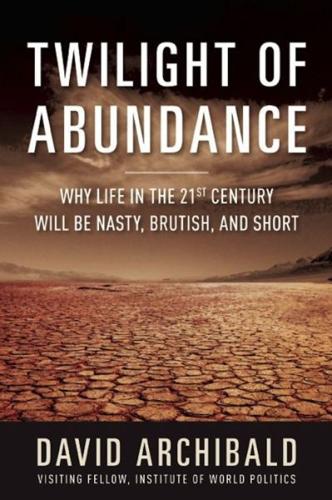
Twilight of Abundance: Why the 21st Century Will Be Nasty, Brutish, and Short
by
David Archibald
Published 24 Mar 2014
It has been estimated that as of November 2012, Iran had 7.6 metric tons of uranium enriched to 3.5 percent U235 and 232 kilograms of uranium enriched to 20 percent U235. Further enriched, the latter quantity is estimated to provide enough uranium for one bomb with a fifty-kilogram core of 90 percent U235. GUARANTEED SECOND STRIKE The U.S.-Russian nuclear standoff gave mankind the most peaceful period in world history. This was the period of mutually assured destruction, or MAD, that made the nuclear powers cautious in their dealings with each other. Each power feared that any use of its own nuclear weapons would trigger massive retaliation ensuring its own complete destruction. We no longer have MAD to keep the peace, and the international fabric is being degraded by questions such as whether Iran will launch an “out of the blue” nuclear strike on Israel as soon as it is capable of doing so.

Marx at the Arcade: Consoles, Controllers, and Class Struggle
by
Jamie Woodcock
Published 17 Jun 2019
The simulation was too complex for most users, so an alternative analog version was developed.29 In 1962, two major events in the early history of videogames took place. The first followed the Cuban Missile Crisis, which saw the launch of the computer war game STAGE (Simulation of Total Atomic Global Exchange) by the US Department of Defense. Rather than ending in mutually assured destruction, the simulation predicted that the United States would defeat the Soviet Union in a thermonuclear war.30 Unfortunately, unlike in WarGames, there is no record of the simulation playing tic-tac-toe to show otherwise (luckily, this has never been tested in practice; otherwise the history of videogames—and the rest of the world—would be much shorter.)

Don't Burn This Book: Thinking for Yourself in an Age of Unreason
by
Dave Rubin
Published 27 Apr 2020
That’s exactly the message your audience—and the average American—needs to hear. “We’ve watched years of the mob coming for everybody. It’s time we stop giving in to it. Not just so that a guy like you isn’t taken out, but the average American doesn’t fear that something they said twenty years ago might be used against them today. “That idea of mutually assured destruction is not the America that I want to be part of. I want to be part of something that has a little bit of forgiveness, that understands we’re all imperfect creatures and is a little more respectful of our ability to disagree, which our country was founded on.” “So how can people fight back and stand strong?”

2312
by
Kim Stanley Robinson
Published 22 May 2012
“There’s been talk about the conflict between Earth and Mars, how it could even lead to war.” “Yes,” she said, “but the talk always goes on to declare this impossible, because everyone is so vulnerable. Mutual assured destruction, as always.” “I’ve always wondered about that,” Wahram admitted. “What if a first strike is made to look like an accident, and is so successful that no one knows who did it, and meanwhile the victim is mostly vaporized? A scenario like that might make one think there is not any certain mutually assured destruction.” “Who would feel that way?” Swan asked. “Almost any power on Earth could make the calculation. They’re safer than any of us. And Mars is notoriously self-absorbed, and also can’t be punctured with a single dart.

Nexus: A Brief History of Information Networks From the Stone Age to AI
by
Yuval Noah Harari
Published 9 Sep 2024
It is unclear whether this will somewhat alleviate or only exacerbate the imperial competition. The more the new empires compete against one another, the greater the danger of armed conflict. The Cold War between the United States and the U.S.S.R. never escalated into a direct military confrontation largely thanks to the doctrine of mutually assured destruction. But the danger of escalation in the age of AI is bigger, because cyber warfare is inherently different from nuclear warfare. First, cyber weapons are much more versatile than nuclear bombs. Cyber weapons can bring down a country’s electric grid, but they can also be used to destroy a secret research facility, jam an enemy sensor, inflame a political scandal, manipulate elections, or hack a single smartphone.
…
Would Chinese missiles fire when the order is given, or perhaps the Americans have hacked them or the chain of command? Would American aircraft carriers function as expected, or would they perhaps shut down mysteriously or sail around in circles?39 Such uncertainty undermines the doctrine of mutually assured destruction. One side might convince itself—rightly or wrongly—that it can launch a successful first strike and avoid massive retaliation. Even worse, if one side thinks it has such an opportunity, the temptation to launch a first strike could become irresistible, because one never knows how long the window of opportunity will remain open.
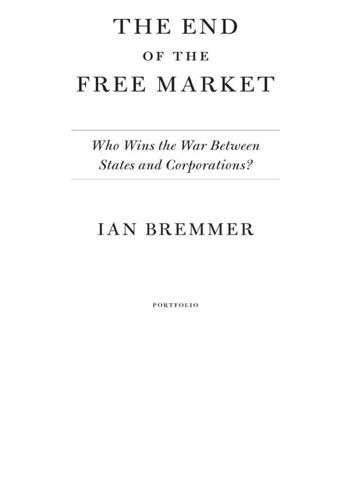
The End of the Free Market: Who Wins the War Between States and Corporations?
by
Ian Bremmer
Published 12 May 2010
Though this isn’t a new Cold War, that conflict offers a useful metaphor for how the battle for free markets can be managed. For decades, the United States and the Soviet Union amassed nuclear arsenals large enough to destroy Earth many times over. The resulting stalemate, which came to be known as mutually assured destruction, helped prevent catastrophic conflict. Today, there are no ties more important for the future of the free market than those that bind America and China—the world’s most powerful advocate of free trade and open markets and the largest and most influential practitioner of state capitalism.
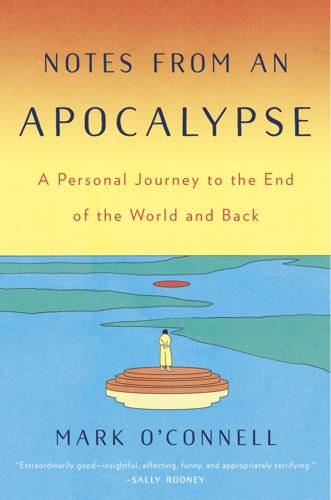
Notes From an Apocalypse: A Personal Journey to the End of the World and Back
by
Mark O'Connell
Published 13 Apr 2020
The threat of nuclear war that hung over much of the twentieth century at least had the advantage of focusing the mind. Nuclear war, for all its considerable flaws, you at least have to admit was gripping. It adhered to certain established narrative conventions. You had near misses, global panics. You had mutually assured destruction, game theory, mushroom clouds, total and instant annihilation. You had plot, was what you had: you had drama. And even more crucially, you had characters. You had protagonists and antagonists, guys with fingers on buttons who either did or did not choose to push them. And when it came to protestors on the streets calling for complete nuclear disarmament, you had an entirely rational and achievable demand.

The Better Angels of Our Nature: Why Violence Has Declined
by
Steven Pinker
Published 24 Sep 2012
Thus we have an explanation of the incentive to invade for trifles: a word, a smile, and any other sign of undervalue. Hobbes called it “glory”; more commonly it is called “honor”; the most accurate descriptor is “credibility.” The policy of deterrence is also known as the balance of terror and, during the Cold War, was called mutual assured destruction (MAD). Whatever peace a policy of deterrence may promise is fragile, because deterrence reduces violence only by a threat of violence. Each side must react to any nonviolent sign of disrespect with a violent demonstration of mettle, whereupon one act of violence can lead to another in an endless cycle of retaliation.
…
They also avoided using the smaller, “tactical” nuclear weapons, many of them comparable to conventional explosives, on the battlefield or in the bombing of enemy facilities. And the United States refrained from using its nuclear arsenal in the late 1940s when it held a nuclear monopoly and did not have to worry about mutually assured destruction. I’ve been quantifying violence throughout this book using proportions. If one were to calculate the amount of destruction that nations have actually perpetrated as a proportion of how much they could perpetrate, given the destructive capacity available to them, the postwar decades would be many orders of magnitudes more peaceable than any time in history.
…
code of the streets; see also honor cognitive dissonance cognitive illusions, xxiii; see also availability heuristic; cluster illusion; conjunction fallacy; loss aversion; overconfidence; positive illusions; sunk-cost fallacy Cohen, Dov Cohen, Jonathan Cold War end of interstate wars in Europe mutually assured destruction proxy wars superpower confrontations Cole, Michael Collier, Paul Collins, Randall Colombia Columbine High School commerce: Christian ideology vs. cooperation in and genocide growth of international trade and money protectionist tariffs and transportation see also gentle commerce common knowledge communality, see Community, ethic of communal violence, see intercommunal conflict communism collapse of and genocide ideology of Community, ethic of compartmentalization, moral compassion see also empathy; sympathy complex systems, science of Concert of Europe concrete operations, Piagetian stage Conflict Catalog conformity Congo, Democratic Republic of (DRC) Congo Free State conjunction fallacy conquest Conquest, Robert Conrad, Joseph conscience; see also moral sense conscientious objection consciousness conscription, see military conscription conservatism and intelligence and morality and treatment of animals see also liberalism, and conservatism Constantine, Emperor Constitution, U.S.: amendments: Second Eighth Thirteenth Nineteenth design of and gentle commerce Cool Hand Luke (film) Cooney, Mark cooperation in commerce evolution of and intelligence norms of in Prisoner’s Dilemma games and Tragedy of the Commons coordination games corporal punishment: of children and torture Correlates of War Project Cosmides, Leda cosmopolitanism and democracy and end of Cold War vs. genocidal ideologies introduction to concept and liberalism vs. macho dominance opposition to and Rights Revolutions costly signaling counter-Enlightenment Country Joe and the Fish Coupland, Reginald coups d’état Courtwright, David Cousins, Norman Cramb, J.

Extreme Money: Masters of the Universe and the Cult of Risk
by
Satyajit Das
Published 14 Oct 2011
Earlier, Heinrich Heine, the German poet, also identified the change: “Money is the God of our time.”1 In the later half of the twentieth century, individuals became true believers. Human history is a sequence of ‘ations’—civilization, industrialization, urbanization, globalization; interspersed with actual or threatened annihilation (war, genocide, or the mutually assured destruction [MAD] pact of the Cold War). The most recent “ation” is financialization—the conversion of everything into monetary form (known as another “ation”—monetization). Increasing wealth, increasing consumption, increased borrowing, and the need to save for retirement has financialized individual lives.
…
See also Maria Bartiromo monolines, 176 Montag, Tom, 198 Monty Python, 97, 180 Moody’s Investor Services, 141, 282 Warren Buffett’s defense of, 325 Moore Capital, 250 Moore, Michael, 165 Moore, Nicholas, 159 moral hazards, 319 Morgan Stanley, 76, 99, 148, 185 Morgan, J.P., 324 Morning Joe, 93 mortality, Japan, 49 mortgages, 179-182 adjusted rate mortgages (ARMs), 183-184 brokers, 186 decline of housing prices, 337-338 defaults, 171, 179 repackaging of, 271-272 scrutiny of ratings agencies, 283 subprime, 70 Moss, Allan, 159, 314 Mossin, Jab, 117 Motherwell, Robert, 200 Motorola, 60 Movement of the Machines, 275 Mozilo, Angelo R., 183, 328 MSNBC, 93 Mullins, David, 144, 248 multistrategy, 243 Mumbai Stock Exchange, 91 Münchau, Wolfgang, 351 Mundell, Robert, 170 municipal bonds, 211-214 TOBs (tender option bonds), 222 Murakami, Takashi, 324 Murder on the Orient Express, 302 Murdoch, Rupert, 149, 164, 322 Museum of Modern Art, 324 mutually assured destruction (MAD), 38 My Broker: A Monk Tycoon Reveals the 7 Laws of Spiritual Growth, 98 N Nader, Ralph, 326 Narvik, Norway, 221 National Australia Bank (NAB), 228 National City Bank, 342 national debt clock, 34 National Economic Council, 215 National Health Service, 47 National Homeownership Strategy, 181 National Public Radio (NPR), 185 natural gas, 251 negative amortization, 182 Nemesis, 366 nest eggs, 27 net risk, 240 networks, 270 vulnerability of, 272-273 Neues Deutschland, 260 Neutron Jack.
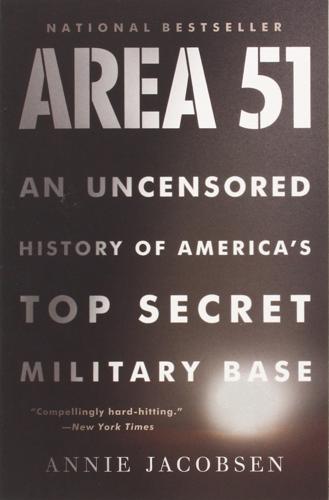
Area 51: An Uncensored History of America's Top Secret Military Base
by
Annie Jacobsen
Published 16 May 2011
On the morning of the accident, an Air Force pilot and his six-man crew were participating in an exercise that was part of Operation Chrome Dome, something that had begun in the late 1950s as part of Strategic Air Command. In a show of force inherent to the military doctrine of the day—something called mutual assured destruction, or MAD—airplanes regularly circled Earth carrying thermonuclear bombs. The idea behind MAD was that if the Soviet Union were to make a sneak attack on America, SAC bombers would already be airborne to strike back at Moscow with nuclear weapons of their own, thereby assuring the mutual destruction of both sides.
…
As radical and impressive as it sounds, the technology was not what raised flags and eyebrows at the Pentagon. The significance of the event came from the fact that with China’s satellite kill, the world moved one dangerous step closer to the very wicked problem of weaponizing space. To enter into that game means entering into the kind of mutual-assured-destruction military industrial–complex madness that has not been engaged in since the height of the Cold War. Actions of this magnitude, certainly by those of a superpower like China, are almost always met by the U.S. military with a response, either overt or veiled, and the Chinese satellite kill was no exception.

The Cold War: Stories From the Big Freeze
by
Bridget Kendall
Published 14 May 2017
Further afield, and complicating the new ‘Great Game’, a nuclear-armed China had joined the fray. Skirmishes on the Soviet–China border had been alarming but had not turned into a full-scale war and, given the stockpiles of missiles building up, all sides seemed to want to keep it that way. The deadly logic of the doctrine of ‘Mutually Assured Destruction’ had also delivered détente between the United States and the Soviet Union, yielding not just the SALT I arms-control deal, but also an agreement between Washington and Moscow that they would not – in theory at least – take advantage of each other by upsetting the equilibrium in the ‘Third World’.
…
and Berlin Wall 212, 213 and Cuban Missile Crisis 229, 230–1, 238 and Indochina 295 Kent, Bruce 430 KGB, Soviet Union Andropov as head 245, 279, 352 power of 163, 172, 250–1, 255, 256, 439, 479, ‘Reminder for the Arrested’ 253 Khmer Rouge 332–3 Khrushchev, Nikita 167 and art 248 and Berlin Wall 213, 214 and Cuba 230, 231, 236, 243 deposing of 163, 243–6 and de-Stalinisation 246, 277 fear of West German success 212 and Hungarian Revolution 180 and International Youth Festival 252 as leader 161–3, 169, 299, 300 and Nixon 163, 253 Secret Speech 159–74, 178, 259 ‘thaw’ 163, 255, 259 and transformation of Soviet Union 169 Kim Il Sung 83 Király, Major-General Béla 191 Kissinger, Henry 313, 314, 317, 320, 349 KKE (Kommounistikó Kómma Elládas) (Communist Party of Greece) 3, 9 Kohl, Helmut 456, 457 Komsomol (Young Communist League) 247 KOR (Komitet Obrony Robotników) (Workers’ Defence Committee) 405, 409, 410 Korean War 81–97 armistice 86 casualties 85 fear of nuclear weapons 117 US losses 295 Kosygin, Alexei 244, 259 Kryuchkov, Vladimir 477, 492 Lattimore, Owen 108–11 Latvia 32, 475–6, 477, 478, 486 Laur, Reni 462 Lefortovo Prison, Moscow 250 Lefteri Nea (‘Free Young’) 7, 8 Leipzig 136, 455 ‘Lenin’s lessons’ 394 Lenin Shipyard, Gdańsk 406–9 Leopold II, King of Belgium 196, 202 Léopoldville, Congo 196, 202 Levin, Mikhail 247 Ligachev, Yegor 440 Lisboa, Angola (later Huambo) 374 Lithuania 32, 475–6, 477, 478, 486 ‘Little Red Book’ 261 Litvinov, Maxim 246 Lityński, Jan and Krystyna 410 Liu Shaoqi 269 Long March 113 Los Alamos 118, 121, 122 Luanda, Angola 368, 370 Lucky Dragon (Japanese fishing boat) 119, 125–9 Lumumba, Patrice 196, 197–8, 202, 203, 204–7 L’Unità (newspaper) 47 Ly Quy Chung 339 MacArthur, General Douglas 84, 89, 92 Makronisi prison camp 18 Manhattan Project 101 Mao Zedong 67–70, 76, 78, 84, 259, 261 Maoism 263, 332, 368 Márquez, García, ‘Chronicle of a Death Foretold’ 321 Marshall, General George 68 Marshall Island 120 Marshall Plan Czechoslovakian refusal of 22, 23, 25 in Italy 38, 39, 40, 43 Stalin fear of 52 in West Germany 133 Marx-Engels Platz, East Berlin 139, 143 Marxism 111, 229, 314, 367, 369, 387 Marxism–Leninism 211, 259, 260, 370, 422 Masaryk, Jan 23, 25 Masaryk, Tomáš 23 Matlock, Jack 492 McCarran Committee 110 McCarthy, Joseph 101, 102, 103, 104, 108, 109 McCarthyism 99–114 blacklisting 103, 113 entertainment industry 103 US army and 103 Middle East 84, 149 Minh, Duong Van 331 Missing (film) (Costa-Gavras) 326 Mobutu, Colonel Joseph-Désiré (Mobutu Sese Seko) 197, 207, 208, 368 Mohammad Reza Pahlavi 150, 151, 152, 154 Molotov–Ribbentrop Pact see Nazi–Soviet Non-Aggression Pact MNC (Mouvement National Congolais) see National Congolese Movement Monroe Doctrine 313 Montalva, Eduardo Frei 313 Mosaddegh, Mohammad 149, 150–7 Moscow News (newspaper) 443, 449 Moscow Olympics, US boycott 352, 387 Moscow Protocol 280 Moskva (magazine) 254 Movimento para a Indepêndencia da Angola (Movement for the Independence of Angola) 371 MPLA (Movimento Popular de Libertação de Angola) (Popular Movement for the Liberation of Angola) 368, 369, 370, 372, 374, 375, 383 mujahidin, Afghan resistance 388, 389–90, 396, 397 Munich agreement 1938 23 Mussolini, Benito 37 ‘Mutually Assured Destruction’ 367 Nagasaki 117, 118 Nagy, Imre 178, 179, 180, 184, 185, 190 Namibia 377, 380 Nanjing 68 Naples, Italy 40, 41 National Congolese Movement (Mouvement National Congolais) (MNC) 196, 201 National Liberation Front see EAM (Ethnikó Apeleftherotikó Métopo) National Security Council, Washington 39 NATO (North Atlantic Treaty Organization) Able Archer exercise 421 and Congo Crisis 205 formation of 24, 54, 55 Germany and 133, 457 Greek membership of 7 and Soviet invasion of Czechoslovakia 280 Nazarbayev, Nursultan 492 Nazi–Soviet Non-Aggression Pact (Molotov–Ribbentrop Pact) 476 Neto, Agostinho 368, 370, 380 New Cold War 419–35 first-hand accounts 124–35 Nezavisimaya Gazeta (newspaper) 447 9/11 390 Nitschke, Karl-Heinz 362 Nixon, Richard and Chile 313, 314 and China 260, 349 television debate 163, 252, 253 and Vietnam War 297, 299, 332 NLF (National Liberation Front of South Vietnam) see Vietcong Non Aligned Movement 6 North Atlantic Treaty Organization see NATO North China Daily News (newspaper) 74 Novaya Zemlya 120 Novotný, President Antonín 277, 282 Nuclear Non-Proliferation Treaty 349 Ogoniok (newspaper) 449 Operation Ajax 151 Operation Boot 151 Operation Carlotta 379 Organisation of African Unity 368, 370 Orwell, George, Nineteen Eighty-Four 248, 260, 478 Osama bin Laden 390 Ostpolitik 350–64 first-hand accounts 352, 353–64 Outer Space Treaty 349 Palach, Jan 280, 290, 291 Partial Test Ban Treaty 349 Pastenak, Boris, Dr Zhivago 174 Pearl Harbor 67 Pentagon Papers 299, 307 ‘percentages agreement’ 6 perestroika 163, 246, 389, 439–51 first-hand accounts 443–51 Pershing II ballistic missiles 422 Phnom Penh, Cambodia 332, 333 PIDE (Polícia Internacional e de Defesa do Estado) (International and State Defence Police) 371 Pienkowska, Alina 416 Pinochet, General Augusto 315, 316, 322, 327 Pinter, Harold 281 Platz der Luftbrücke, Berlin 55 Pleiku, Vietnam 296 Pol Pot 333 Poland Czechoslovakia and 278, 279 invasion in Second World War 476 Khrushchev’s secret speech and 178 martial law 408, 421 Soviet influence in 21 uprising 135, 259 Workers’ Defence Committee 405 see also Solidarity movement Polish United Workers’ Party 407 Pope Paul II 405 Pope Pius XII 45 Portugal 367, 368, 371 Potsdam agreement 39, 51, 52 Poznan, Poland 178, 182 Prague Spring 275–91 first-hand accounts 281–91 Soviet policy reaction 244, 245, 249, 250 Pravda (newspaper) 180 ‘Project Matterhorn,’ Princeton University 118 PTSD (post-traumatic stress disorder) 309 Pugo, Boris 492 Putin, Vladimir 245, 457 racial segregation 195, 200, 232 Radio Free Europe (Radio Liberty) 181, 182, 248, 409 Radio Londra 41 Radio Moscow 198 RAF (Royal Air Force) 4, 12 RAF Alconbury 425, 428 RAF Molesworth 423, 424, 426, 427, 428, 429, 431 Rathausstrasse, East Berlin 143 Reagan, Ronald and Angola 370 and Gorbachev 440, 444, 445 on shooting down of airliner 421 and Soviet Union 352, 422, 423, 424 ‘Reagan Doctrine’ 422, 423 Red Army 9, 21, 51, 68 Red Guards 261, 262, 263, 265, 266, 270–1 Red Scare see McCarthyism refugees camps 29, 30, 31–2, 33 East German 211, 215, 220, 222, 351 in Korean War 85–6, 91, 92 and Vietnam War 332, 334, 337, 338 Reichsmark 51 reparations 51, 133, 177 Reuter, Ernst 54 Revolution (newspaper) 237 Riesaer Petition 362 Roberto, Holden 368 Robotnik(newspaper) 405, 410 Romania 6, 21, 279, 442 Roosevelt, President F.D. 6, 44, 47, 102 Rosenberg, Julius and Ethel 101 RIAS (Rundfunk im amerikanischen Sektor) 134 Rusk, Dean 214 ‘Russification’ 475 Rutskoy, Aleksandr 501 Ryzhkov, Nikolai 498 Saigon, fall of 297, 298, 331–45 first-hand accounts 335–45 Sakharov, Dr Andrei 119, 245, 440, 444, 446 SALT (Strategic Arms Limitation Talks) I and SALT II 349 Sariwon, Korea 90 Savimbi, Jonas 368, 370, 374, 379 Schabowski, Günter 456 Scobie, General Ronald 3, 4 Scout movement 28 Second World War Baltic republics 475 and Greece 3, 5, 6 and Iran 149 nuclear weapons 117, 118 Sino-Japanese War and 67, 76 and Soviet Union 392 SED (Sozialistische Einheitspartei Deutschlands) (Socialist Unity Party) 133, 142, 143 Semipalatinsk 117, 120 Seoul 84 Seven Days War, Israel 282 Shanghai, fall of 65–79 first-hand accounts 70, 71–9 Shevardnadze, Eduard 443 Sinatra, Frank 38 Sino-Japanese war 67 Sino-Soviet Treaty 70 Sinyavsky, Andrei (Abram Tertz) 245, 248, 249, 255 Slánský, Rudolf 278 Slovakia 27, 28 Smith, Walter Bedell 111 Smith Act 1940 104, 106 Snow, Edgar 111, 112, 113–14 Journey to the Beginning 113 Socialist Republic of Vietnam 332 Solidarity movement, Poland 135, 403–18 first-hand accounts 408, 409–18 Solovki prison 164 Solzhenitsyn, Aleksandr 245, 248, 251 One Day in the Life of Ivan Denisovich 163, 164 The First Circle 247 The Gulag Archipelago 440 South Africa 368, 369–70, 371, 372, 374, 375, 377–81 South African Defence Force 372, 381 South West African People’s Organization (SWAPO) 377 Soviet Air Defence Command 421 Soviet Union 159–74, 489–503 and Angola 369, 370 and atomic bomb 48, 83, 117, 121, 149 backing for decolonisation 195 and Berlin Blockade 53–4 building programmes 169 and China 68, 70, 161, 259, 333, 334 and Congo Crisis 197, 206 and Cuba 229, 230 culture in 162, 245, 253–5, 440, 448 and Czechoslovakia 22–8, 278–80 declaration of war on Japan 83 economy 244 expansionism 5, 32, 37, 52 500 Days Plan 497 and Greece 7 H-bomb research 119 housebuilding programme 163 and Italy 39, 41, 47 labour camps 161, 164, 245, 247, 251, 252, 254 ‘Law on the Press and Other Forms of Mass Information’ 446 liberalisation 162, 163 and Middle East 149 ‘perestroika’ reforms 163, 246, 389, 439–51 and Polish strike 407 and post war Germany 52, 53, 135 psychiatric hospitals 245, 249 purges 161 samizdat 245, 247, 248, 249, 440 Union Treaty 492 and Vietnam 333 view of Stalin 134, 161, 162 Yalta agreement 21 and Yugoslavia 6 see also Hungarian Revolution space race 244, 300 SS Meredith Victory 85 Stalin, Josef banishments 164 Berlin Blockade 54 and Cuba 236 cult of 248 and Czechoslovakia 22, 25 death of 161, 164, 165, 166, 168, 247 and Greece 5, 6 and Italian election 39 and Italy 41 and Khrushchev 168 and Korea 83 and post war Germany 51, 133 ‘spheres of influence’ 21 and Tito 6 Yalta agreement 47 Stalin statue 179, 184, 187, 188 Stalingrad 41 ‘Star Wars’ 422 START (Strategic Arms Reduction Treaty) 445 Stasi police 144, 224, 352, 361, 362 Strategic Arms Limitation Talks see SALT Suez Crisis 181 Suslov, Mikhail 388, 408 SWAPO see South West African People’s Organization Syngman Rhee 83 Taiwan 70, 71 Taraki, Nur Mohammad 387, 388 Tehran 150, 151 Teller, Edward 118, 121, 122, 124 Tempelhof Airport, Berlin 53, 55, 60, 62 Tempo (magazine) 25 Tertz, Abram see Sinyavsky, Andrei Tet Offensive 298, 309, 335, 339 Thatcher, Margaret 422, 423, 457 Tito, Marshal Josip 6, 21, 69, 182 Tobadamaru (Japanese cargo ship) 93, 94 Treaty of Friendship 68 Treaty of Varkiza 17 Trieste 44 Trikeri prison camp 18 Truman, President Harry on Communist infiltrators 101 and Czechoslovakia 23 and Iran 150 on Italy 37 and Korea 84, 85 McCarthyism and 102 on Soviet atomic bomb 117 Truman Doctrine 7, 18 Turkey 7, 230, 231 ‘The Two Thousand Words’ 278, 283 Ulam, Stanisław 118, 122 Ulbricht, Walter 133, 134–5, 141, 211, 212, 213, 278, 350 Un-American Activities Committee see HUAC Uncle Sam 74 The Uncounted Enemy (CBS documentary) 309 Union of Czechoslovak Writers 277 UNITA (União Nacional para a Independência Total de Angola) (National Union for the Total Independence of Angola) 368, 369, 370, 374–5, 377, 379, 383 United Nations Congo crisis 197, 205 Korean War 84, 85 Vietnamese Boat People 334 US and Afghanistan 390 and Angola 368, 370 anti-war demonstrations 298–9, 306, 309 backing for decolonisation 195 Berlin airlift 53 in Central and Latin America 313 and Chile 313, 314, 317, 327 and China 67, 68, 69 and Congo Crisis 197, 204, 205 covert interventions 38, 39 and Czechoslovakia 23, 24, 280 and Greece 5, 6, 7 H-bomb research 118 and Hungarian revolution 181 increased defence spending 422 and Indochina 295–6 and Iran 149, 150 and Italian election 37–9, 43–4 and NATO 54, 55 nuclear warheads 230 popular culture 103, 136, 177, 359 and post war Germany 52–4, 55 and Sino-Soviet split 259, 260 Yalta agreement 21 see also Cuban Missile crisis; Korean War; Marshall Plan; McCarthyism; Vietnam War USS Maddox 296 Ustinov, Dmitri 388 Vietnam currency 342, 343 New Economic Zone 332, 343 re-education camps 332, 342, 344 Vietnam Veterans Against the War 307, 308–9 Vietnam War 293–310 aftermath 331–45 distraction of détente 349 public opinion in US 298–9 Vietnam–Cambodia war 333–4 Vietnam–China war 334 Vietnamese Boat People 334 Vietcong (National Liberation Front) 298, 331, 335, 339, 340 Viljoen, Major-General 372, 379 Voice of America 198, 247 Volpin, Aleksandr 249, 253 Walentynowicz, Anna 406, 411, 412, 413 ‘war games’ 235, 421 Warsaw Pact 177, 178, 180, 279, 407 Wałęsa, Lech 406–8, 412, 413, 414, 415, 416, 418 Watergate scandal 299 Die Wende 458 West Germany (Federal Republic of Germany) border with East 211 currency 52 economic success 212 relationship with East 350–1, 456, 457, 458 symbolic of West 135 US missile base 422 Westmoreland, Colonel 309 Wheeler, John 121, 124 Wheeler, Lois 113, 114 ‘Winter Soldier Investigation’ 299, 307 Worker (journal) 409 World Festival of Youth and Students Moscow 1957 163 Yakovlev, Aleksandr 498, 499 Yakovlev, Yegor 443 Yalta agreement 1945 6, 21, 39, 47, 51, 478 Yanayev, Gennady 492 Yeltsin, Boris 441, 450, 477, 482, 491, 492, 493–4, 498 Young Pioneers 181, 247 Yugoslavia 6, 9 Zaire see Congo Zervas, Napoleon 11 Zinn, Howard, Vietnam: The Logic of Withdrawal 306 Zuchthaus 146 Acknowledgements This book began as two fifteen-episode series for BBC Radio 4, Cold War: Stories from the Big Freeze, the first of which was broadcast in July 2016, the second in July 2017.

This Is How They Tell Me the World Ends: The Cyberweapons Arms Race
by
Nicole Perlroth
Published 9 Feb 2021
At the same time Russia was embedding in our grid, “little green men”—armed Russian Special Forces wearing green uniforms without insignia—had started cycling into Crimea. The Kremlin was signaling to Washington that if it retaliated on behalf of its Ukraine ally, or ever dared turn off the lights in Moscow, Russia had the ability to turn around and do the same. Call it mutually assured destruction for the internet era. And if Russia did attack the grid, we were screwed. The Department of Homeland Security had emergency preparedness plans for natural disasters, earthquakes, hurricanes, tornadoes, heat waves, and power outages that spanned days. But there was no grand master plan for a cyberattack that denied power to millions of people for any sustained period.
…
Cyber Command started planting time bombs in Iran’s communications systems, air defenses, and critical parts of its grid. By June 2019 it was safe to assume that Iran’s attacks on U.S. critical infrastructure was Tehran responding in kind. What the security community witnessed that summer was, in effect, mutually assured destruction in real time. That summer spark plugs were everywhere. A series of escalating military skirmishes spiraled into the cyber domain. That May and June, the United States blamed Iran for snapping mines onto the hulls of several oil tankers as they passed through the Gulf of Oman—a vital shipping lane for a third of the world’s oil—and then detonating them nearly all at once.
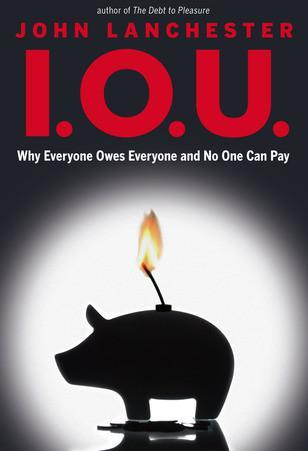
I.O.U.: Why Everyone Owes Everyone and No One Can Pay
by
John Lanchester
Published 14 Dec 2009
Niall Ferguson has called the resulting economic hybrid “Chimerica.”3 I don’t think there’s any historical parallel for this new transnational economic entity, and the look of it, frankly, gives me the willies: there’s something profoundly unnatural about such a skewed trans-Pacific balance of saving and spending. The Chinese would, I suspect, dearly love to dump a significant proportion of the T-bills and diversify into other areas of savings, but they can’t, because it would be an act of economic mutually assured destruction: the dollar would crash, which would wipe out (a) American consumption and (b) Chinese savings, with consequences roughly equal to a smallish world war. But the European Union had no equivalent phenomenon and therefore no China to blame; and, as Greenspan points out in that piece, it also had historically low interest rates.

Respectable: The Experience of Class
by
Lynsey Hanley
Published 20 Apr 2016
While growing up I colluded with the papers I relied on to give me a sense of the world outside, knowing they were offering up only one small part of it, but needing those offerings all the same. The idea that we all might die, unfathomably horribly, because of something called MAD – the Cold War nuclear doctrine of Mutually Assured Destruction – was so terrifying to me that I needed to know more about it; and yet the more I found out, the more frightened I became. The exposure was too early and – ironically for newspapers which even then I understood to be biased – too raw, too graphic, for me to comprehend without going bananas in the process.
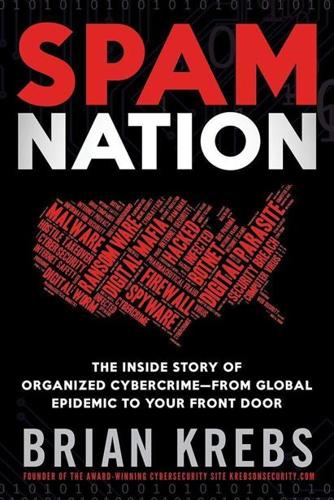
Spam Nation: The Inside Story of Organized Cybercrime-From Global Epidemic to Your Front Door
by
Brian Krebs
Published 18 Nov 2014
“I’m trying to ruin his ChronoPay because if he will not have money, he will hopefully stop all these things.” Not long after that interview with Gusev, Vrublevsky finally acknowledged that the Pharma Wars, as many were calling their feud, had progressed beyond the point of return. Rather, Vrublevsky said wryly, neither side appeared to be deterred by “mutual assured destruction.” Here he was referring to a doctrine of military strategy in which both sides in a nuclear arms race are discouraged from launching a first strike based on the certainty that the aggressor’s action will trigger an equivalent response. “The problem is that Gusev is not trying to hit me with his weapons, but he is trying to scare me,” Vrublevsky said in one of his many phone calls to this author.
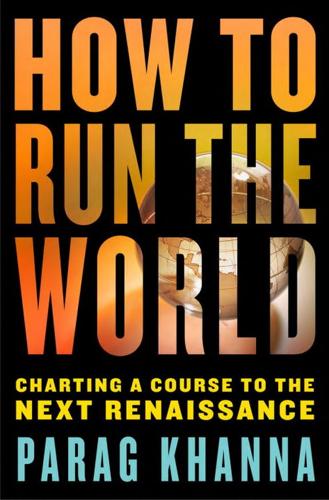
How to Run the World: Charting a Course to the Next Renaissance
by
Parag Khanna
Published 11 Jan 2011
Another option is to cede Kirkuk to Kurdistan—but since Kurdistan is landlocked, it would have to share revenues fairly with Baghdad, lest the rump Iraqi government spike taxes on Kurdistan for exporting through its territory (which Kurdistan’s other neighbors, including Syria and Turkey, could do as well). Through such territorial compromises, the Mideast may graduate from mutually assured destruction to mutual assurances—and use its armies to guard pipelines instead of borders. Arabs want to restore the glory they enjoyed during the European Middle Ages, and they actually have the wealth to do so. But even more pointless territorial disputes stand in the way of regional integration.
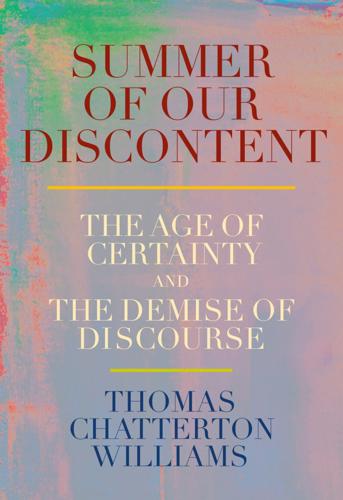
Summer of Our Discontent: The Age of Certainty and the Demise of Discourse
by
Thomas Chatterton Williams
Published 4 Aug 2025
We must revisit, reassess, and ultimately learn to reaffirm our core beliefs—which have been so gravely tested since the comparative normalcy of the Obama years, but which have always formed the basis of any enduring social progress—so that we may achieve our noblest ideals. Summer of Our Discontent is ultimately an argument for why we must resist the mutually assured destruction of identitarianism—even when it comes dressed up in the seductive guise of “antiracism”—and really believe in the process of liberalism again, if we are ever to make our multiethnic societies hospitable to ourselves and to the future generations we hope will surpass us. We must, in a sense, reopen—or finally open—the liberal mind, which has been pressed perilously closed by furious, radical, and sophistic forces on both sides of the political and cultural spectrum.
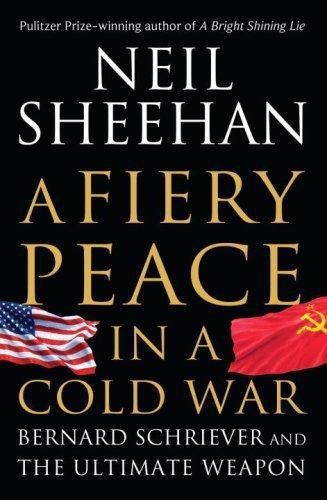
A Fiery Peace in a Cold War: Bernard Schriever and the Ultimate Weapon
by
Neil Sheehan
Published 21 Sep 2009
Once the missile existed the Soviets were “unlikely to miscalculate our capability to retaliate” and would be afraid to attack. The ICBM would thus achieve its highest purpose. It would have “deterred Total War.” Schriever was articulating a concept that would subsequently become known as Mutual Assured Destruction. And once they had attained the means to penetrate what he called the “New Environment—outer space,” they could move on to the next contribution to “preserve the peace.” They would power their rockets to even higher speeds than 20,000 feet per second in order to fling into orbit around the earth the spy satellites Arnold and von Kármán had envisioned.
…
No American leader could contemplate a first strike, as it was called, against the Soviet Union without knowing that enough of Russia’s nuclear arsenal would survive intact to destroy the United States in turn. A nuclear stalemate was complete. The strategists referred to the condition as Mutual Assured Destruction, or MAD. There was nothing mad about the grim equation. It made perfect sense by enforcing a nuclear peace. The arms race should have ended there. It was senseless to go on, but go on it did on both sides at the cost of trillions. Technology was in the saddle of a horse named Fear in a race of human folly.
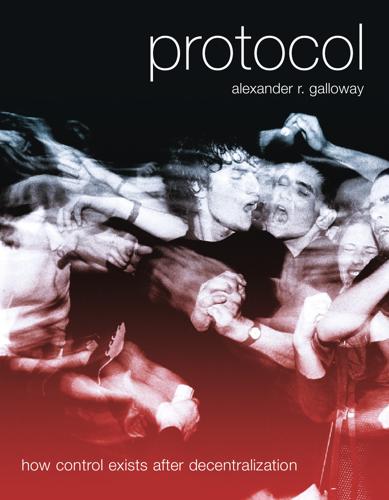
Protocol: how control exists after decentralization
by
Alexander R. Galloway
Published 1 Apr 2004
See John Arquilla and David Ronfeldt, The Advent of Netwar (Santa Monica: Rand, 1996), p. 5. Chapter 6 196 serving as useful asset managers at one historical moment, then disappearing, or perhaps fading only to reemerge later as useful again. The Cold War was synonymous with a specific military diagram—bilateral symmetry, mutual assured destruction (MAD), massiveness, might, containment, deterrence, negotiation; the war against drugs has a different diagram—multiplicity, specificity, law and criminality, personal fear, public awareness. This book is largely about one specific diagram, or organizational design, called distribution, and its approximate relationship in a larger historical transformation involving digital computers and ultimately the control mechanism called protocol.61 In this diagramatic narrative it is possible to pick sides and describe one diagram as the protagonist and another as the antagonist.
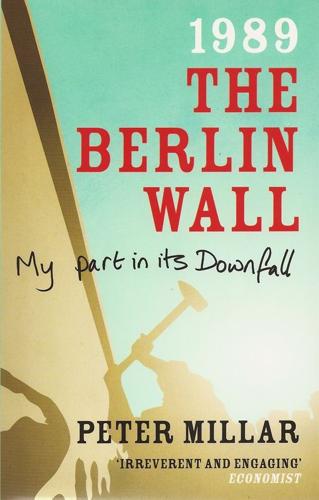
1989 The Berlin Wall: My Part in Its Downfall
by
Peter Millar
Published 1 Oct 2009
The nineteenth-century German military philosopher Clausewitz had famously declared politics to be the ‘continuation of war by other means’. By the mid-twentieth century the Cold War had become the new definition of those ‘other means’. Everyone assumed it would last forever. Some – primarily on the Western side – were even thankful for it. Peace was assured by the policy of Mutual Assured Destruction, which had the pleasing acronym MAD: whichever side started a nuclear conflict would assure its own annihilation. Retaliation was inevitable, therefore war was unthinkable. The Cold War was a stalemate that had once been known as the Balance of Power. That balance had not been achieved easily.
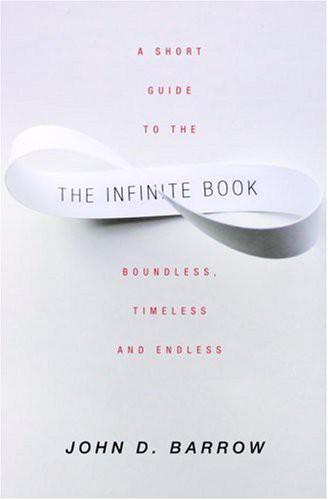
The Infinite Book: A Short Guide to the Boundless, Timeless and Endless
by
John D. Barrow
Published 1 Aug 2005
24 Could such an approach help us out of our ethical problems with an infinite Universe? It would have to be that a host of possible worlds were defunct because they made the existence and persistence of conscious life impossible. While this is believable for the extreme cases in which all possible moral outrages are committed so that mutual assured destruction always occurs, it is not a convincing panacea. After all, many of those other worlds that display an abundance of bad behaviour look embarrassingly like parts of our own history. It is not too hard to imagine the victory of evil over good. It need not lead to extinction, merely tyranny.

The Authoritarian Moment: How the Left Weaponized America's Institutions Against Dissent
by
Ben Shapiro
Published 26 Jul 2021
I happen to believe that people should be able to hire and fire whomever they want to. But the authoritarian Left disagrees. And not only do they disagree, they’ve captured the legal system to the extent that you can only be targeted for having the wrong politics today. All of this raises a broader strategic possibility: the possibility of mutually assured destruction. Before I founded the Daily Wire, I ran an organization called Truth Revolt. The goal of the organization was to act as a sort of reverse Media Matters: to use a team of activists to encourage advertisers not to spend their money with left-wing outlets. In launching Truth Revolt, we openly acknowledged that we didn’t like our own tactics.

New Dark Age: Technology and the End of the Future
by
James Bridle
Published 18 Jun 2018
We have also seen the ways in which data leaks and breaches: the critical excursions and chain reactions that lead to privacy meltdowns and the rhizomatic mushroom cloud. These analogies are not mere speculations: they are the inherent and totalising effects of our social and engineering choices. Just as we spent forty-five years locked in a Cold War perpetuated by the spectre of mutually assured destruction, we find ourselves in an intellectual, ontological dead end today. The primary method we have for evaluating the world – more data – is faltering. It’s failing to account for complex, human-driven systems, and its failure is becoming obvious – not least because we’ve built a vast, planet-spanning information-sharing system for making it obvious to us.

Live Work Work Work Die: A Journey Into the Savage Heart of Silicon Valley
by
Corey Pein
Published 23 Apr 2018
The overcrowding was absurd. It sometimes took as long as an hour to get a turn in the bathroom, which was filthy, and where the only roll of toilet paper had MIKE scrawled across the top in Sharpie. The prevalence of misleadingly positive reviews could only be explained by the system of mutually assured destruction implicit in the Airbnb review process. Praise was usually repaid in kind. However, the merest tremble of complaint, however valid, was sure to be answered with devastating slander. One previous guest wrote that when she and her boyfriend accidentally checked out late, Luna “threatened to keep our airbnb deposit unless we gave her a positive review.”
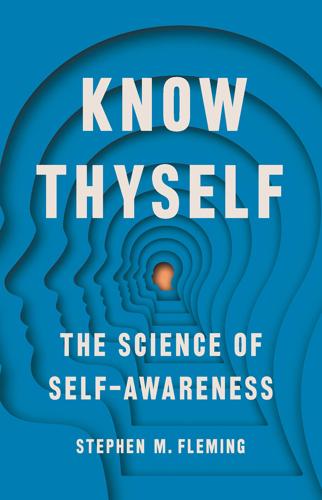
Know Thyself
by
Stephen M Fleming
Published 27 Apr 2021
It was the height of the Cold War between the United States and Russia, and there was a very real threat that long-range nuclear missiles could be launched by either side. That fateful morning, the alarms went off in Petrov’s command center, alerting him that five US missiles were on their way to Russia. Under the doctrine of mutually assured destruction, his job was to immediately report the attack to his superiors so they could launch a counterattack. Time was of the essence—within twenty-five minutes, the missiles would detonate on Soviet soil.1 But Petrov decided that the alert was unlikely to be a real missile. Instead, he called in a system malfunction.

Red Mars
by
Kim Stanley Robinson
Published 23 Oct 1992
No fiery white cloud, no roar on the soundtrack; just a reporter’s tinny voice, chattering about the end of the Martian rioters’ doomsday threat, and the vindication of the concept of strategic defense. Although apparently the missiles had come from the Amex lunar base, launched by rail gun. “I never did like the idea,” Arkady said. “It was mutual assured destruction all over again.” Roald said, “But if there’s mutual assured destruction, and one side loses the capability . . . “We haven’t lost the capability here, though. And they value what’s here as much as we do. So now we’re back to the Swiss defense.” Destroy what they wanted and take to the hills, for resistance forever. It was more to his liking.

Accessory to War: The Unspoken Alliance Between Astrophysics and the Military
by
Neil Degrasse Tyson
and
Avis Lang
Published 10 Sep 2018
The report also contends that the military’s periodic statements on doctrine and strategic planning “give space weapons an air of inevitability.”160 So, picture this: Two adversaries possess weapons capable of immense devastation. Neither side will hesitate to use those weapons to their fullest. Both await a reason to do so—such as an aggressive move by the other side. The likely scenario is inescapable escalation toward a renewed state of mutual assured destruction (MAD), in the course of which the line between defensive and offensive weaponry will be blurry at best. As the political essayist I. F. Stone wrote back in the 1950s, when US–Soviet nuclear war felt almost imminent, “Both sides in every war always claim to be aggressed.”161 Uncompromisingly hardheaded, Space Weapons Earth Wars simply presents a panoply of available or conceivable options for the waging of space battles.
…
H., 138, 454n Morgan, John Pierpont, 55, 161 Moseley, T. Michael, 33 Mosul, Iraq, 34, 518n Mountain Pass Mine, California, 383 MOUT (Military Operations on Urban Terrain), 201–2 Mowthorpe, Matthew, 258 Mumford, Lewis, 381–82 muons, 218 Murtha, Jack, 412n Mussolini, Benito, 403–4 mutual assured destruction (MAD), 298 Myer, Albert J., 123–26, 127–28, 448nn myopia, 442n Mysteries of the Sun and Soul (Kritzinger), 427–28n Nagasaki, Japan, 111, 263, 301, 302, 303, 474n, 505n Naked and the Dead, The, 387 NASA (National Aeronautics and Space Administration) aerospace budget, 533n budget, 232, 282, 289–90, 320, 345, 510n competition with Air Force, 289 contact with China prohibited, 376 cooperation with Pentagon in Vietnam War, 290 creation of, 270, 271 critiques of non-science budget, 369–70 funding of space research, 21 mandate for Moon landings, 289 Manned Spaceflight Center (Johnson Space Center), 286 National Academy of Sciences, 231–32, 251, 267, 269 National Aeronautics and Space Act of 1958, 270, 277, 279, 287 National Bureau of Standards, 192, 453n, 455n National Defense Education Act, 270 National Endowment for the Arts, 289 National Nuclear Security Administration, 390 National Priorities Project, 14 National Reconnaissance Office (NRO), 21, 204, 225, 228, 231–32, 500n, 501n, 517n National Science Foundation, 21, 227, 267, 271, 533n national science laboratories, 28–29 National Security Act of 1947, 265, 481n National Security Agency/Central Security Service (NSA/CSS), 13–14, 413n National Security Council, 265, 268, 270, 276 national security, defined, 13–14, 413nn National Space Program, The, 283 National Space Symposium, 16–20, 24–25, 26, 414n, 415n, 417n Natural Magick (Porta), 107 Nauplius (king), 446n Nautical Almanac (Maskelyne), 94 Navajo resistance to westward expansion, 124 navigation by ancient mariners, 66–74 challenges in fifteenth century, 84–85, 86–87 clues used by wayfinders, 64–66, 82 dead reckoning, 77, 82, 86 defined, 65–66 ephemerides and, 82, 94 instruments and devices of early navigators, 74–75 magnetic compass development, 75–78 in the Mediterranean in 1320, 77–78 questionnaires on longitude and latitude, 90, 438n running down the latitude, 82 see also charts, maritime NAVSTAR Global Positioning System (GPS), 278, 332, 335–36 Nazi Germany astrology and, 57–63, 427–28nn, 429nn Grossdeutschland as driving vision, 64 Nostradamus used for propaganda, 59, 428–29nn near-Earth objects (NEOs), 253–54, 255, 256 Necho (king), 73, 434n Nehru, Jawaharlal, 351 Nelson, Horatio, 115–16, 122 Netherlands military use of telescopes, 110–11 Twelve Years’ Truce with Spain, 104, 107 New Astronomy, The (Langley), 148 Newell, Homer, 369 New Guinea, 64, 430n Newton, Isaac colors and, 145, 166–67 longitude and, 93, 95 on necessity of experiments, 460–61n on particle nature of light, 146, 169 spectrum produced from white light, 145, 166–67, 461n telescope design, 444n on twinkling of stars, 152 New-York Convention of August 1776, 113 New Zealand, 65, 78 NII-4 think tank, 264 Nimbus satellites, 291 1984 (Orwell), 317, 508n Nixon, Richard, 271, 281, 473n Noah’s use of a dove, 65 no-first-use policies, 309, 507n noise in CCDs, 203 cooling of telescopes to avoid, 170, 203 defined, 220 infrared noise, 170 jamming and, 260, 515n static in radio communications, 177, 178 from Van Allen radiation belt, 216 non-financial business sector, 4 nonlethal weapons using nonvisible wavelengths, 201–2, 470–71n North American Aerospace Defense Command (NORAD), 16, 353–54 North Atlantic Treaty, 265 North Atlantic Treaty Organization (NATO), 265, 305–6, 309–10, 328 North Korea ASAT (antisatellite weapon) program, 259 satellite surveillance of missile-launch sites, 379, 482n Sohae Satellite Launching Station, 206 Taepodong-1 intermediate-range ballistic missile, 256 tension over missile and nuclear programs, 253, 299, 310, 356, 530n Northrop Grumman B-2 stealth bombers, 198, 303, 470n campaign contributions, 412n in Colorado Springs, 16 James Webb Space Telescope, 23 military-related projects and sales, 18, 23 overview, 22–23 prosperity after September 11, 2001, 11, 12 Starshade screen, 21 Nostradamus, 53, 59, 428–29nn NSC 162/2, 304–5, 506n NSC 68, “A Report to the National Security Council,” 266, 314, 499n nuclear accidents, 255–60, 484–85n nuclear explosions damage from, 302 gamma-ray bursts, 215, 473–74n peaceful (PNEs), 499n see also atomic bombs; fusion bombs; nuclear tests Nuclear Operations doctrine document, 308, 311 “nuclear Pearl Harbor,” 411n Nuclear Posture Review Report, 308 nuclear tests Bikini Atoll nuclear bomb tests, 402–3 Comprehensive Nuclear Test Ban Treaty, 313–14, 508n Limited Nuclear Test Ban Treaty, 215, 273, 285, 287, 293, 313, 498n moratorium under Eisenhower, 307 problems from, 284–85, 302, 496–97n as “psychosis,” 302–4 Sedan, 496n Starfish Prime, 302, 496–97n, 505n Tsar Bomba, 307, 505–6n unclassified data from, 402 yields of, 303–4, 505–6n Obama, Barack national security strategy, 323 nuclear policy, 308 space budget, 510n space policy, 503n summit with Hu Jintao, 376 UN General Assembly speech, 387–88, 528n Wall Street speech, 4–5 obelisks, 40 Obering, Trey, 481n Oberkochen, Germany, 132 “October effect” in stock market, 56 Odysseus, 45, 67 Oliver, Bernard, 470n Olson, Roy, 217 On the Ocean (Pytheas), 71–72, 434n On the Sphere of the World (Sacrobosco), 77, 83 On War (Clausewitz), 238 Operation Desert Shield, 340 see also Gulf War Operation Desert Storm absence of moonlight, 7, 79 aircraft used, 7, 332, 512n, 514n bomb hit rates, 332, 514n casualties due to fratricide, 334 news coverage and public reaction, 7–8, 341 shortage of GPS receivers, 333–34 stealth aircraft, 7, 197, 332, 514n see also Gulf War Operation Fishbowl, 290–91 Operation Iraqi Freedom, 16–17, 19, 24, 197, 346–47 see also Iraq War Operation Overcast, 262 Operation Paperclip, 262, 468n optical glass about, 130–31 British production in World War I, 135–36 cost, 131, 451n demand in World War I, 134–36, 139–40, 452n fuel used in production, 131, 450–51n US production in World War I, 139–40, 454–55n optical munitions, 132, 134, 135, 136, 140 optical telegraphs, 118–19, 120–28, 446–47nn see also telescopes Opticks (Newton), 166–67 Order of Christ, 79 Organization for Security and Co-operation in Europe, 327 Orient and Occident, 68 Orion Nebula, 103, 203 Orkney Islands, 71 Orwell, George, 317 Ostara, 421n Outer Space Treaty negotiations and diplomacy, 274, 313, 382, 503n omissions and limitations, 313, 314 provisions of, 273, 286, 287, 296–97, 313–14, 486n, 493n signing and ratification of, 292–93, 295–96, 314, 501n, 503n US space doctrine and, 296–97, 503–4n Owen, Wilfred, 387 ozone, 214, 225 Pakistan, 206, 310 Panama, 331, 499n Paris Agreement, 388, 528–29n Paris Observatory, 93, 94, 98, 133, 142 Parker, Hyde, 115–16 PAROS (Prevention of an Arms Race in Outer Space), 293–94 Parra Mantois et Cie.
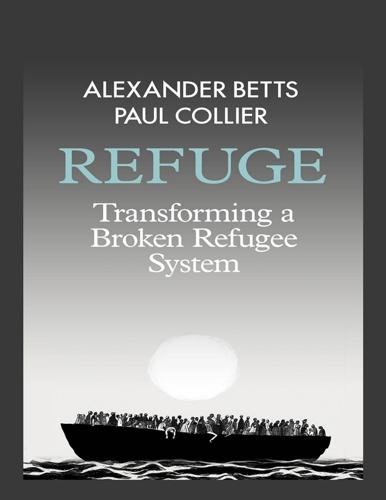
Refuge: Transforming a Broken Refugee System
by
Alexander Betts
and
Paul Collier
Published 29 Mar 2017
In each case, their effects on fragility have been incidental to their rationale. An implication is that there are no easy fixes. Humpty cannot be restored to his seat on the wall. MAD no more Paradoxically, one factor might have been the end of the Cold War between the Warsaw Pact and NATO. The Cold War was defined by fear of ‘mutual assured destruction’ (MAD) from nuclear weapons, something that people who have grown up after 1991 find it hard to appreciate. Both sides recruited allies, so a conflict almost anywhere might draw in the superpowers and escalate, as had happened at the onset of the First World War. This made even conflicts in out-of-the-way places potentially so dangerous that they were discouraged.
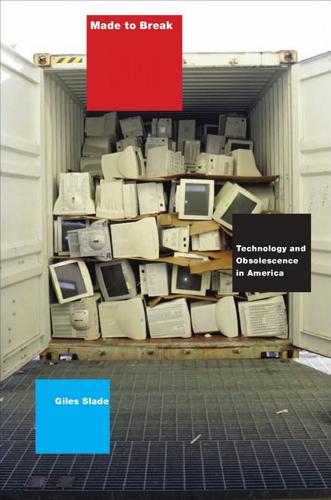
Made to Break: Technology and Obsolescence in America
by
Giles Slade
Published 14 Apr 2006
They also fulfi led Cousins’s personal program of keeping the horrors of atomic war front and center while attempting to provide an alternative perspective on the arms race through his writings and through organizations like the United World Federalists and SANE, the National Committee for a Sane Nuclear Policy, which chose its nonacronymic name because of its sharp contrast with MAD, mutually assured destruction, the ugly reality underlying the cold war arms race. Less well known than “Modern Man Is Obsolete” is Cousins’s piece concerning the nuclear tests at Bikini Atoll in the Marshall Islands.59 In 1946, what was then called Operation Crossroads tested two 23-kiloton atmospheric nuclear weapons.
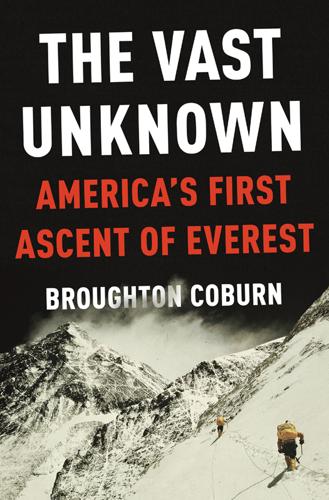
The Vast Unknown: America's First Ascent of Everest
by
Broughton Coburn
Published 29 Apr 2013
The Soviet Union—and, by association, communism—had pulled off a propaganda coup, fueling visions that outer space might provide the venue for the next act in the Cold War. Space offered a frightening new artery for delivering weapons. It became easy to picture a celestial battle spiraling out of control, ending in the “mutually assured destruction” of the United States, the USSR, and perhaps the rest of the world. Twenty-three months before Gordon Cooper’s flight, cosmonaut Yuri Gagarin had become the first human launched into space. Then—nine months before Faith 7—the Soviets sent up Vostoks 3 and 4, a day apart. Each Vostok capsule held a single cosmonaut.
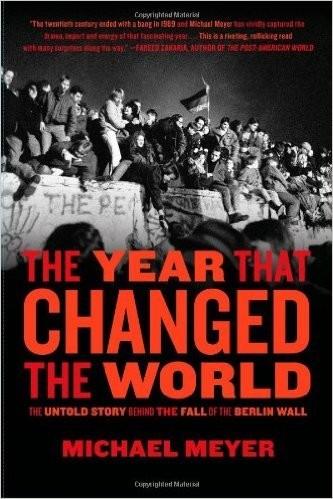
The Year That Changed the World: The Untold Story Behind the Fall of the Berlin Wall
by
Michael Meyer
Published 7 Sep 2009
It usurped Western culture, which in turn diffused throughout the world. In American schools of the 1950s and early 1960s, kids “ducked and tucked” under their desks against atomic blasts. When they grew up, they explored the trade-offs between guns and butter in Economics 101. They were fluent in the lexicon of confrontation: containment, mutually assured destruction, the domino theory. Everyone knew about the nuclear button, the “hotline” between Washington and Moscow, the briefcase, aka the football, the satchel of nuclear codes that to this day accompanies the president everywhere. The Cold War was hip: James Bond, The Third Man, Graham Greene, John le Carré, Tom Clancy.

@War: The Rise of the Military-Internet Complex
by
Shane Harris
Published 14 Sep 2014
Maybe in a real standoff they would fear a cyber counterstrike by the United States—or worse, a nuclear one. Arguably, one lesson of the war game was that the military should reexamine its premises and assess how likely another country was to launch a first strike in cyberspace, given the mutually assured destruction that the military believed would follow. Instead, the game reinforced the military’s natural disposition toward war. And it convinced senior military and Pentagon leaders that if a cyber war ever did break out, it would happen “at the speed of light,” with practically no warning. From now on, whenever they testified before Congress or gave public speeches and press interviews, they warned about the instantly devastating nature of cyber warfare.
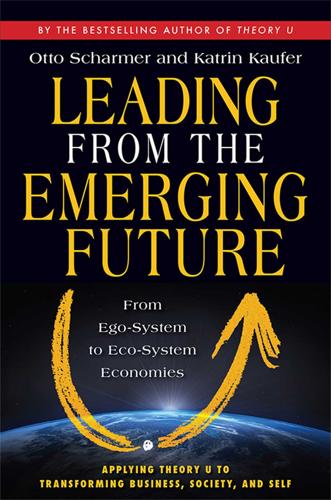
Leading From the Emerging Future: From Ego-System to Eco-System Economies
by
Otto Scharmer
and
Katrin Kaufer
Published 14 Apr 2013
11 A year and a half after Chernobyl, Gorbachev retired all of the Soviet Union’s nuclear warheads with a range of five hundred to five thousand kilometers. Watching the catastrophic events of Chernobyl unfold, Gorbachev allowed his thoughts to slow down and his mind to become aware, to let go of the old military logic of MAD—mutually assured destruction—and to let the seeds of disarmament germinate and grow. These seeds ended up changing the course of world history for the better.12 This story raises an obvious question: How should the course of disruptive events, those beginning to shake up our planet as we speak, affect our thoughts and awareness as a global community today?
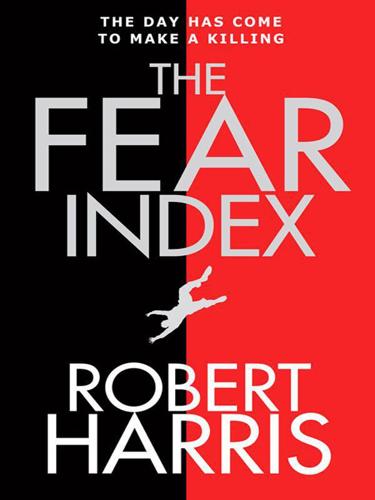
The Fear Index
by
Robert Harris
Published 14 Aug 2011
One thing we’ve been able to do, for instance, is correlate recent market fluctuations with the frequency rate of fear-related words in the media – terror, alarm, panic, horror, dismay, dread, scare, anthrax, nuclear. Our conclusion is that fear is driving the world as never before.’ Elmira Gulzhan said, ‘That is al-Qaeda.’ ‘Partly. But why should al-Qaeda arouse more fear than the threat of mutually assured destruction did during the Cold War in the fifties and sixties – which, incidentally, were times of great market growth and stability? Our conclusion is that digitalisation itself is creating an epidemic of fear, and that Epictetus had it right: we live in a world not of real things but of opinion and fantasy.

War for Eternity: Inside Bannon's Far-Right Circle of Global Power Brokers
by
Benjamin R. Teitelbaum
Published 14 May 2020
Olavo doubts the ability of journalists and scholars to write about him fairly, and their parallel surveillance seemed to be a precautionary measure to contest a false quotation. That was the most logical explanation. But perhaps he was planning to write about me as well, or at least to give himself the option to do so in colorful terms should some form of retaliation be warranted. Mutually assured destruction: I had experienced it before as an ethnographer, and it often yielded the best interviews. When “subjects” know they can fight back, they often speak more freely. I rested my recorder on the back shoulder of his seat during the ride. His assistant sat with her recorder in hand, the receiver pointed at me as we headed east to a shopping mall complex at the edge of Petersburg.
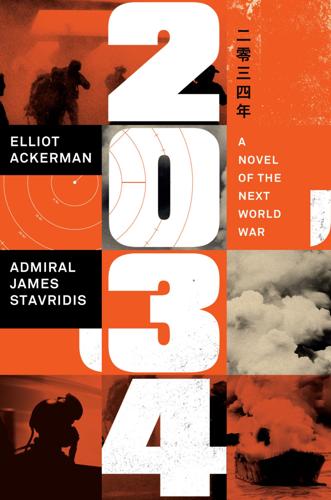
2034: A Novel of the Next World War
by
Elliot Ackerman
and
James Admiral Stavridis
Published 15 Mar 2021
With her arms crossed and her legs stretched out in front of her, she closed her eyes and relaxed. She tried to imagine the news reports—USS Enterprise strikes Chinese naval facility with tactical nuclear weapons—but she couldn’t; it seemed too improbable. Although few Cold War precepts had aged well in the twenty-first century, the logic of mutually assured destruction was one of them. Even so, thought Hunt, her country had little to gain by wiping out the port at Zhanjiang. As she prepared to alter the course of the Enterprise, she couldn’t help but recognize this maneuver for the theater it was—for the theater such maneuvers always had been—ever since man split the atom, unleashed its power, and nations coerced one another with the threat of that power.
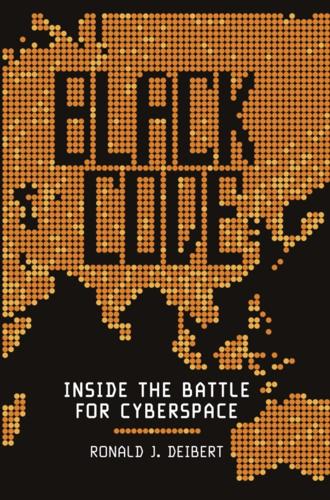
Black Code: Inside the Battle for Cyberspace
by
Ronald J. Deibert
Published 13 May 2013
Is it only a matter of time before the whole system collapses? “If one extrapolates into the future,” Arthur Koestler once said with respect to the nuclear predicament, “the probability of disaster approaches statistical certainty.” Is cyberspace any different? Analogies to the Cold War and the logic of mutual assured destruction (MAD) come to mind. In those recent times, humans let their baser competitive instincts threaten civilization itself. But it didn’t happen. And now? With critical infrastructure a vector for armed conflict and all of us interdependent to such a substantial degree, shouldn’t the same perverse logic that restrained policy-makers from dropping the atomic bomb restrain them from dropping cyber bombs?
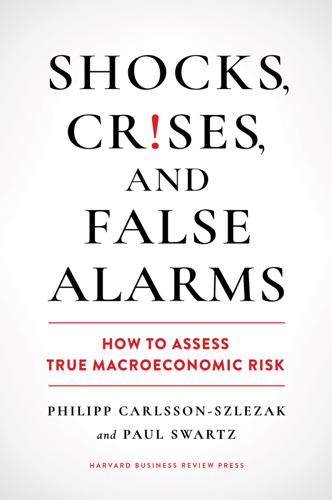
Shocks, Crises, and False Alarms: How to Assess True Macroeconomic Risk
by
Philipp Carlsson-Szlezak
and
Paul Swartz
Published 8 Jul 2024
The convergence bubble comprised four elements. Security convergence. In August 1990, less than a year after the fall of the Berlin Wall, the world witnessed the Gulf War, a successful, surgical, and multilateral effort to expel Iraq from Kuwait. The sharp contrast with the Cold War’s specter of mutually assured destruction underlined the unipolar moment and fueled bubbly extrapolation toward a future without major military conflict, stabilized by a benign hegemon.5 This relaxation fed through to a decline in US military spending, as seen in figure 17.1A. Political convergence. The end of the Cold War also suggested the end of (political) systems rivalry, and the impending and final victory of democracy.

The Singularity Is Near: When Humans Transcend Biology
by
Ray Kurzweil
Published 14 Jul 2005
(That is, only an all-out thermonuclear war involving the ICBM arsenals poses a risk to survival of all humans.) Nuclear proliferation and nuclear terrorism belong to the "profound-local" category of risk, along with genocide. However, the concern is certainly severe because the logic of mutual assured destruction does not work in the context of suicide terrorists. Debatably we've now added another existential risk, which is the possibility of a bioengineered virus that spreads easily, has a long incubation period, and delivers an ultimately deadly payload. Some viruses are easily communicable, such as the flu and common cold.
…
The nature of terrorist attacks and the philosophies of the organizations behind them highlight how civil liberties can be at odds with legitimate state interests in surveillance and control. Our law-enforcement system—and indeed, much of our thinking about security—is based on the assumption that people are motivated to preserve their own lives and well-being. That logic underlies all our strategies, from protection at the local level to mutual assured destruction on the world stage. But a foe that values the destruction of both its enemy and itself is not amenable to this line of reasoning. The implications of dealing with an enemy that does not value its own survival are deeply troublesome and have led to controversy that will only intensify as the stakes continue to escalate.
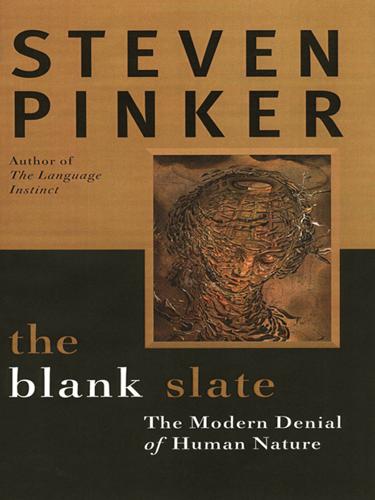
The Blank Slate: The Modern Denial of Human Nature
by
Steven Pinker
Published 1 Jan 2002
The policy that you will inflict as much harm on others as they inflicted on you cancels their incentive to raid for gain, and the policy that you will not strike first cancels their incentive to raid for mistrust. This is reinforced by the policy to retaliate with no more harm than they inflicted on you, because it allays the fear that you will use a flimsy pretext to justify a massive opportunistic raid. The nuclear strategy of “Mutual Assured Destruction” is the most obvious contemporary example of the law of retaliation. But it is an explicit version of an ancient impulse, the emotion of vengeance, that may have been installed in our brains by natural selection. Daly and Wilson observe, “In societies from every corner of the world, we can read of vows to avenge a slain father or brother, and of rituals that sanctify those vows—of a mother raising her son to avenge a father who died in the avenger’s infancy, of graveside vows, of drinking the deceased kinsman’s blood as a covenant, or keeping his bloody garment as a relic.”73 Modern states often find themselves at odds with their citizens’ craving for revenge.
…
E. moralistic fallacy moralization morality basis of cross-cultural differences in emotions and religion and science and self-deception and universality of Moral Majority moral progress Mount, Ferdinand Muller, Hermann Murdoch Iris Murdock, George Murray, Charles music Mutual Assured Destruction mutualism Myth of the First Three Years, The (Bruer) Napoleon I, emperor of France National Center for Science Education National Endowment for the Arts National Institute of Mental Health National Institutes of Health National Public Radio National Science Foundation Native Americans Natural Classicism natural history, intuitive Natural History of Rape, A (Thornhill and Palmer) naturalistic fallacy natural selection Dawkins on sex ratios and see also evolution Navajo language Nazism Neel, James Neill, A.
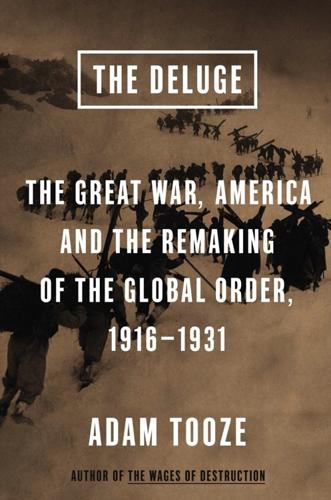
The Deluge: The Great War, America and the Remaking of the Global Order, 1916-1931
by
Adam Tooze
Published 13 Nov 2014
After 1945 in the global Cold War clash between the United States and the Soviet Union, the world would witness the logic of confrontation taken to its extreme. Two global coalitions, self-confidently proclaiming antagonistic ideologies, each armed with massive arsenals of nuclear weapons, threatened humanity with Mutually Assured Destruction. And there are many historians who want to see in 1918–19 a precursor to the Cold War, with Wilson squaring off against Lenin. But though this analogy may be tempting, it is misleading in that in 1919 there was nothing like the symmetry that prevailed in 1945.22 By November 1918 not only was Germany on its knees, but Russia too.
…
A. 398 Madras 180, 188, 386 Maginot, André 442 Mahan, Alfred Thayer 35 Majority SPD, (MSPD) Germany 73, 75, 130 Makino Nobuaki 144, 258, 259 Malvy, Louis 175 Manchester Guardian 56 Manchuria and Japan 22, 93, 96, 322, 403, 484–5, 499–500 Russian rights over railway system 420 manganese 125, 148, 153 Mannerheim, Carl Gustaf 150–51 Mao Zedong 91, 330, 421, 479, 481 ‘autumn harvest’ uprising in Hunan 483 Marshall, George 291 Marshall Plan 277 martial law 157 Marx, Karl 138 Marxism in China 91 entering fourth generation 414–15 in Germany 237 and the peasantry 408 and Sinn Fein 79 view of history 141–2 see also Bolshevism/Bolsheviks; Communism Masaryk, Tomas Garrigue 157–8, 284 Massachusetts Democrats 343 Matsuoka Yosuke 501–2 Max von Baden, Prince 140, 220, 222, 225 Mazzini, Giuseppe 177 Mellon, Andrew 469 Mellon-Berenger accord 469, 473, 497 Menshevism/Mensheviks 80, 83, 84, 85–6, 126, 138 Constituent Assembly elections (1917) 85, 85 expulsion from Central Executive Committee of All-Russian Congress 157 Merriman, Charles 309 Mesopotamia 186, 193, 375, 381 Indian Muslims in 390 Mesopotamian campaign 186 Mexico 44 proposed alliance with Germany 65–6 US private long-term investment (December 1930) 477 Michaelis, Georg 111 Middle East and Britain 22, 193–7, 364, 374, 377–82, 463; deployment of Imperial Forces, February 1920 375 and France 193–4, 378, 380 and the US 193–6, 378 see also specific countries Milan, Perez 354 militarism challenged by Germany’s surrender 8 German see Germany: militarism Japanese see Japan: militarism military power and the new order 8 Miliukov, Pavel Nikolayevich 71, 161, 194 Millard, Thomas Franklin Fairfax 88, 89, 92 Miller, David H. 324 Miller, Yevgeny 234 Millerand, Alexandre 361 Milner, Alfred, 1st Viscount 194, 377, 379–80 Miners’ Federation of Great Britain 248 Minseito (Constitutional People’s Government Party, Japan) 485–6 Mirbach, Count Wilhelm von 164–5 modernity, US problematic entry into 27–9 Monnet, Jean 205, 290, 291 Monroe doctrine 15, 269, 310 Montagu, Edwin Samuel 186, 187–8, 195, 383, 384, 385, 387, 388, 389, 391, 392, 436 Montagu-Chelmsford reforms 188–9, 210, 382, 383, 385 moral authority, and the new order 8 moral entrepreneurship 23 moral order 10 Morgan, John Pierpont 461 Moscow assassination attempt on Lenin (August 1918) 168 Comintern: First Congress 241, 408–9; Third Congress 419 Fourth All-Russian congress 138, 145–6, 164 move of Bolshevik capital to 413 unarmed German troops sent to 165 Motono Ichiro 98, 146 MSPD (Majority Social Democratic Party, Germany) 73, 75, 130 Mukden 499–500, 503 Murmansk front 166 Operation Capstone plans 166–7, 170 Muslim League 181, 188 Mussolini, Benito 10, 174, 307, 311–12, 402, 441–2, 452, 491, 502, 511 and the Corfu crisis 446–7 effect of World War I on 305 and Hitler 305–6 and Lloyd George 306 Mutsu (Japanese cruiser) 399 Mutually Assured Destruction 10 Nanjing 482, 483, 485 Napoleon III 273 Nassau 274 National Equal Rights League, US 339 National Liberal League, India 386 national planned economy model 199–200 national republicanism 221, 515 see also Chinese National Republican Army (NRA) National Socialist German Workers’ Party (NSDAP) 450, 503, 506, 515 Nazi Germany 472, 513 nationalism American see United States of America: nationalism Chinese 90, 91, 96, 100, 103, 106, 327–9, 404, 419, 435, 475–83, 499 Czech 158, 159, 284 Egyptian 378–80 and financial hegemony 435 German see Germany: nationalism Indian see India: nationalism Irish 179–80, 190–93, 376–7 Italian 306, 308 Japanese 259, 324, 329–30, 485, 499–500 of the ‘old world’ 233 Polish 284 and ‘positive’ economics 488 Russian 150, 411 Turkish 381–2, 437–8 Ukrainian 122, 125 NATO (North Atlantic Treaty Organization) 109, 276, 277 Naumann, Friedrich 220 Mitteleuropa 113 naval arms race 35–6, 248, 268–70, 396 naval blockade 34–5, 39, 56, 473 naval disarmament London Conference 474, 486, 490–93, 499, 512 Washington Conference 397–402 Nazism Nazi Germany 472, 513 NSDAP see National Socialist German Workers’ Party (NSDAP) NEP see New Economic Policy Netherlands, wartime wholesale price dislocation 213 New Deal 505, 517 New Economic Policy (NEP) 423, 424, 435, 483 new world order America’s overshadowing of see United States of America and the armistice document 227–9 breaching wall between foreign policy and domestic politics 9 British Empire secured as key pillar to 198 Churchill’s vision 4, 8, 9, 18, 23 and Communism’s reinvention 408–34 and deflation 354, 358–73 and democracy see democracy and diplomacy see diplomacy and disarmament/armaments limitation 45, 53, 227, 264–5, 277, 280, 313; naval see naval disarmament and economic supremacy 8, 12–16; of the US 12–16, 36, 206–9, 211 and freedom of the seas 16, 45, 53, 75, 120, 226, 228, 257, 268–70 French subordination in 289–90 Hitler’s vision 4–5, 18, 23, 26 and imperialism see imperialism/colonialism internationalism see internationalism and the League of Nations see League of Nations levelling of wealth across Europe 250–51 and liberalism see liberalism and limitations of the 1919 ‘worldwide’ revolution 233 and Locarno 4, 23, 462 and London’s debt settlement with Washington 439 and military power 8 see also militarism and the modern ‘chain gang’ 30, 463, 511, 517–18 and moral authority 8 Mussolini’s denunciation of 10 new hierarchy in reconstruction of world economy 362 and patterns in the frustration of power 463–4 peace settlements 4, 5 see also specific treaties and power shift through interaction of military force, economics and diplomacy 23–30 and power vacuums see power vacuum ‘pyramids of peace’ 8, 9 and the quest for pacification and appeasement strategies 26 and regime change 9 and Trotsky 8, 11–12, 18, 23, 26, 29–30 and Versailles Treaty see Versailles/Paris peace conferences and Treaty and the Washington Naval Conference see Washington Naval Conference Wilson on 45 and the Wilsonian fiasco 333–50; undermining of domestic progressive coalitions 243–4 Wilson’s view of French and British imperialism as main threat to 223–4 New York Times 55 New Zealand and the Commonwealth 394 Hoover moratorium 498 racial discrimination 393 US private long-term investment (December 1930) 477 wartime wholesale price dislocation 213 NGOs 23 Nicholas II of Russia 165 Nishihara Kamezo 96, 99, 101, 104, 105, 143, 323 Nitti, Francesco 176, 306, 311, 312, 320, 361, 466 Nivelle, Robert Georges 74 Norman, Montagu, 1st Baron 373 Northcliffe, Alfred Harmsworth, 1st Viscount 184 Norway, wartime wholesale price dislocation 213 Noske, Gustav 238, 239, 317, 318, 319 NRA (Chinese National Republican Army) 480–81, 482–3, 485 NSDAP see National Socialist German Workers’ Party nuclear weapons 10 October Revolution (1917) 83–6 oil 39, 47, 148, 153, 167, 394, 415 Okuma Shigenobu 94, 95 Open Door policy, US 15–16, 44, 103, 205 and the Washington Conference 397, 405 Operation Capstone plans 166–8, 170 Orlando, Vittorio 176, 177, 178, 306, 307, 308, 309–10, 311 Osaka Asahi Shimbun (newspaper) 363 Ottoman Empire 3, 5, 9, 33, 173, 176, 195, 337, 378, 437 British protection against Tsarist expansion 193 Entente policy of dismantling 381 Entente self-determination demands 52 and the Raj and Khilafat movement 384–5, 416 and Russia/USSR 193, 194 and Wilson’s 14 Points manifesto 121 see also Turkey Ozaki Yukio 94, 96, 144, 324, 364 Pacific Treaties 4, 11, 397, 400–402, 474 see also Washington Naval Conference Page, Walter Hines 45 Palestine 195–6, 377, 380 deployment of Imperial Forces, February 1920 375 Indian Muslims in 390 Palmer, A.
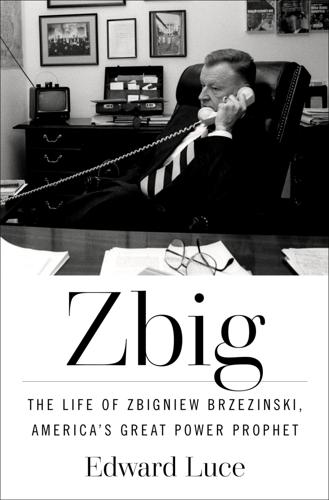
Zbig: The Life of Zbigniew Brzezinski, America's Great Power Prophet
by
Edward Luce
Published 13 May 2025
The newly created Department of Energy would take responsibility for nuclear weapons. CENTCOM would extend US Cold War doctrine to the Middle East. Carter’s most important nuclear directive was PD-59, which finally retired what Huntington had dubbed America’s Era One doctrine of massive nuclear retaliation. Under Carter, mutually assured destruction embraced and extended the flexible nuclear war–fighting plan that had been adopted in the 1960s. This permitted tactical strikes on moving Soviet military assets. US nuclear planners would no longer target Soviet cities and other population centers. Instead, Strategic Air Command would pinpoint shifting Soviet targets on the battlefield.52 To PD-59’s critics, including Muskie, the shift made nuclear war more likely.
…
Begin, 220–21, 224, 231, 263, 266, 290, 359–60 bloodless presidential record of, 358–59, 374 and Brezhnev, 194, 202–4, 206, 231, 293–97 cabinet meetings held by, 209 at Camp David (retreat), 209, 268 at Camp David peace talks (see Camp David Accords) and Billy Carter, 342–43 Carter Doctrine, 323–24 on China normalization, 275–76 China policy of, 248, 256 civil rights supported by, 171, 215 cluster-bomb sale to Israel refused by, 216–17 conservatism of, 339 criticism of, 215–19, 222–25, 227 on the cruise missile program, 232–33 on CV’s resignation, 337 depression following election loss, 369 on détente, 183–84 economic philosophy of, 339–40 on energy conservation, 340 evolution of, 343–44 at foreign policy breakfasts, 231 foreign policy of, 171–73, 181–82, 184, 223–24, 236–37, 242, 245–46, 248, 290 on fossil fuels, 339–40 at the G7 summit, 349–50 gubernatorial campaign of, 171 on the Helsinki Final Act, 188, 190 and HK, 174–75, 182–83, 225, 307–8 in hospice care, 356 human rights focus of, 174, 182, 188–89, 191, 193, 200–201, 206, 240, 248 inauguration of, 197, 200 instinct to do what’s right, 312 integrity of, 174 Iranian woes of, 268–74, 286–89 (see also Iran hostage crisis) Iran trip, 241–68 on Islam, 327 Israel supported by, 215–17, 223 on Ted Kennedy, 310 malaise speech by (1979), 311 vs. McGovern, 170–71 on the Middle East, 200, 215–23, 290, 490n80 (see also Camp David Accords) on military spending, 229 modest origins of, 186 on mutually assured destruction, 345 national security briefings, 200 and the neutron bomb, 233–35, 246, 255 Nobel Peace Prize awarded to, 456 NSC staff addressed by, 213 on nuclear weapons, 228, 293–94, 343–45 optimism of, 184 Palestinians supported by, 215–17, 220, 222–23, 292 Panama Canal Treaty desired by (see Panama Canal) panel convened on the Soviet brigade in Cuba, 299–300 PD-59, 345–46 Plains home of, 186 Playboy interview by, 187–88 Poland trip, 238–41, 243 political self-harm by, 312 and the pope (see under John Paul II, Pope) popularity of, 228–29 as a preacher, 235 presidential campaign of, 167–68, 171–74, 178, 180–81, 184–87 in presidential debates, 187–90 presidential election won by, 191–92 reading, love of, 209, 235–36 on Reagan, 369 vs.
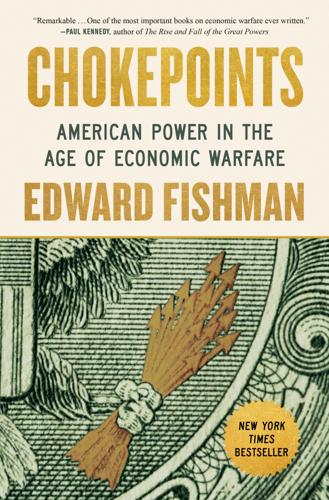
Chokepoints: American Power in the Age of Economic Warfare
by
Edward Fishman
Published 25 Feb 2025
It also lent credence to the view that the Iranian regime was untethered to reality and might well use a nuclear weapon—or perhaps transfer the radioactive ingredients for a “dirty bomb” to Hezbollah or another militant proxy—if its capabilities were allowed to grow. The “dirty bomb” scenario, in which Tehran might secretly help terrorists stage a catastrophic attack using a makeshift nuclear device, kept Adam Szubin up at night. Concepts like mutual assured destruction that deterred nation-states from using nuclear weapons might fail against Hezbollah, Szubin feared, because an attack by such a group would leave “no return address.” In early November, less than a month after the foiled Cafe Milano plot came to light, the IAEA issued its most damning report yet on Iran’s nuclear program.
…
K., 361–62 MIT, 54 Mnuchin, Steven, 230, 249, 251, 251, 252, 264, 266, 269, 272, 276, 278, 299, 303 Mobile World Congress, 287 Modi, Narendra, 361 Mohamed bin Zayed, Sheikh, 83 Mohammed bin Salman, Prince, 383 money laundering, 44, 61 Morey, Daryl, 283 Morgan Stanley, 182 Morgenthau, Henry, 26 Mossad, 88, 131 Mousavi, Mir-Hossein, 73 Mnuchin, Steven, xiv Mueller, Robert, 93 Munich Security Conference, 146, 147, 215, 285–86 Muscat, 115, 116, 119–20 Mussolini, Benito, 15 N Nabiullina, Elvira, xiv, 193, 194, 195–99, 220, 310, 311, 344, 351–53, 414 NAFTA (North American Free Trade Agreement), 32, 33 Napoleon, 14, 15 Naryshkin, Sergei, 335 NASDAQ, 20 Natanz, 58, 120 National Association of Manufacturers, 158, 180 National Economic Council, 230, 360 National Iranian Tanker Company, 112 NATO, 140, 146, 341 Russia and, 146, 259, 330, 418 natural gas, 54, 89, 142, 149, 212, 318, 341, 352, 354, 357, 360, 366, 384 liquefied (LNG), 318, 360, 374 Nord Stream 1 pipeline, 317, 384 Nord Stream 2 pipeline, 211–12, 317–18, 321–22, 332–33, 336–37 Navalny, Alexei, 315 naval power, 16–19, 23 Navarro, Peter, 229, 249 Nazi Germany, 15–16, 50, 321 neoliberalism, 4, 5, 6, 31–32, 313 Nephew, Richard, 72–73, 77, 78, 90, 111, 115, 118–22, 124 Netanyahu, Benjamin, 89, 92, 98, 102, 116, 121–22, 125, 128, 129 Netherlands, 14, 301, 392–95 New Russia (Novorossiya), 166, 169, 188, 202, 207, 219, 224 New York Federal Reserve Bank, 24, 310, 405 New York Stock Exchange, 20, 239, 300 New York Times, 180, 181, 183, 252 New York Times Magazine, 68 New Zealand, 269 Nicholas I, Tsar, 174 Nikakhtar, Nazak, 269–70 9/11 terrorist attacks, 6, 35, 36–39, 44, 160, 320 NIOC (National Iranian Oil Company), 86 Nixon, Richard, 24, 27, 28, 29, 54, 115, 248 Nobel Peace Prize, 77–78 Nobel Prize (in Economics), 5 Nokia, 234, 255, 286 Nord Stream 1 pipeline, 317, 384 Nord Stream 2 pipeline, 211–12, 317–18, 321–22, 332–33, 336–37 Normandy, 177–78 Normandy Format, 178, 205 Nortel, 233, 234 North Korea, 8, 42, 43–45 Banco Delta Asia and, 44–45, 61 China and, 43, 44, 249, 250 nuclear weapons of, 43, 45, 249, 266 Norway, 167 Novak, Alexander, 384 Novatek, 181 Novichok, 259 Novorossiya (New Russia), 166, 169, 188, 202, 207, 219, 224 NSA (National Security Agency), 45, 160, 205, 234 PRISM program of, 287 NSC (National Security Council), 44, 111, 115, 118, 139, 161, 163–64, 166, 171, 227, 229, 229, 243, 255, 256, 264–65, 269, 274, 290, 301, 325, 329, 334, 339, 392 nuclear weapons, 23, 44, 59, 77, 169, 424 Huawei equipment and, 290 of Iran, see Iran, nuclear program of of Iraq, 17, 18, 58 of Libya, 69 mutual assured destruction and, 94 of North Korea, 43, 45, 249, 266 of Russia, 148, 158, 351, 417 of Ukraine, 145 Nuland, Victoria, xiv, 140, 144–46, 152–55, 153, 157, 158, 160, 166, 176, 184, 203, 222–23, 313 Nvidia, 292, 394, 422 O Obama, Barack, 51, 70–71, 77–78, 87, 88, 142, 173, 214, 216, 221–23, 243, 256, 260, 263, 282, 304, 314, 315, 364, 413, 421 Iran and, 69, 70–76, 77–81, 82, 85, 89, 91, 92, 93–97, 97, 98–106, 108, 116, 118, 119, 124–26, 129, 130, 133, 260, 303, 314, 344, 364, 365, 417 Levey and, 70, 72 Malaysia Airlines Flight 17 and, 183 Netanyahu and, 98 at Normandy ceremony, 177–78 North Korea and, 249 Putin and, 157–58, 160, 190, 223, 224 and Russia’s accession to WTO, 149 Russia sanctions and, 159, 160, 162–64, 167, 171, 172, 174–76, 181–82, 185, 190–91, 200–201, 206, 208, 216–19, 223–24, 259, 302, 303, 321, 325, 336, 411 and Russia’s interference in U.S. election, 222–24 and Russia’s invasion of Georgia, 147 Russo-Ukrainian War and, 157–58, 189, 213 Ukraine aid and, 204–6 Obama, Michelle, 193 O’Brien, Robert, 279 OFAC (Office of Foreign Assets Control), xviii, 38–41, 50–52, 51, 67, 69, 80, 95, 131, 134, 134, 154, 158, 159, 161, 162, 173–74, 176, 186–87, 190, 311, 313–14, 341, 364 Office of Management and Budget, 172 oil, 15, 28, 54, 61, 89, 99, 197, 273, 325, 356, 391, 406–7 1973 Arab oil embargo, 28–29, 359, 376 globalization and, 387–88 in Iran, 56, 60–61, 68–69, 78–80, 86, 87, 89–92, 396, 413 Iran sanctions and, 89–92, 94, 95, 98–106, 103, 109, 117–18, 176, 219, 282, 344, 364–65, 368–70, 375, 406, 419 in Iraq, 16–18, 99, 102 OPEC and, 28–30, 197–98, 376, 383 OPEC+ and, 383–84 petrodollars, xix, 21, 29–30, 30, 33, 57, 68, 87, 107, 111, 121, 123, 197, 326, 368, 398, 407 price of, 3–4, 21, 29–30, 61, 68, 89–92, 95, 99–100, 103, 149, 193, 195–98, 200, 200, 218, 325, 326, 341, 344, 356, 358, 359, 360, 364–67, 368–72, 373–77, 383–85, 387, 398, 413, 416, 419, 421 Russian, 3–4, 54, 142, 149, 163, 169, 174, 177, 185–86, 190–92, 193–96, 322, 341, 352, 354, 356–58, 360–62, 364–67, 366–67, 381, 406, 412, 413, 417, 419 Russian, price cap on, 366–67, 368–72, 373–77, 381, 382–88, 399, 406, 415, 419 Saudi, 102, 103, 325, 359, 383, 387, 406 shale, 103, 103, 177, 196, 198, Strategic Petroleum Reserve (SPR), 359–60, 384 U.S. production of, 28, 103, 103, 196, 198, 421 Oil-for-Food program, 17–18 Olympics, 161, 331, 331, 334 Oman, 115, 117, 119 OMV, 211 ONGC, 101 OPEC (Organization of Petroleum Exporting Countries), 28–30, 197–98, 376 OPEC+, 383–84 Oracle, 300 Orange Revolution, 147 Orbán, Viktor, 143, 210 Osborne, George, 242 Ottoman Empire, 1, 3 P P5+1 nations, xviii, 76, 117, 120, 121, 126–27 Pahlavi, Mohammad Reza, 54 Pakistan, 199 Palais des Nations, 49, 51 Pape, Robert, 130 Paris, terrorist attacks in, 205, 214 Paris Peace Conference, 14–15 Pascual, Carlos, 100–102, 104, 132 PATRIOT Act, 39, 44 Paulson, Hank, 64–65, 88, 172, 239, 249, 262 Pavlovsky, Gleb, 148 Pei, I.
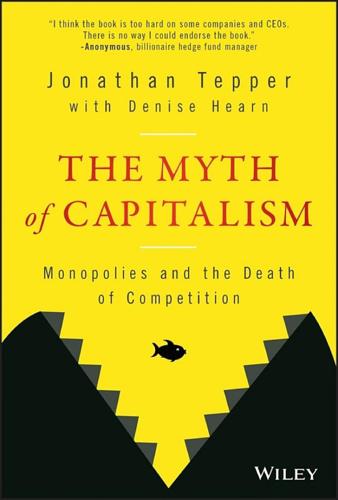
The Myth of Capitalism: Monopolies and the Death of Competition
by
Jonathan Tepper
Published 20 Nov 2018
Not all mergers necessarily raise prices, and many are intended purely to squeeze workers, suppliers, and business partners.30 By crushing their counterparties, they transfer wealth to themselves. This is most evident when you look at the profitability of agricultural giants as farm incomes have fallen and bankruptcies increased. In other cases, mergers are a direct response to a competitor's merger. Companies are in an arm's race to get bigger and bigger. It is a game of mutually assured destruction, where fewer smaller companies survive. Walmart's rise as a grocer triggered two massive waves of industry consolidation in the late 1990s and early 2000s. The first was a wave of mergers by Walmart competitors, for example, Kroger and Fred Meyer. The second wave of consolidation came as meatpackers, dairy companies, and food processors merged to avoid being crushed by Walmart and supermarkets.
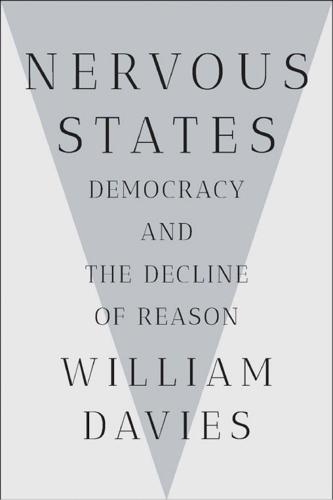
Nervous States: Democracy and the Decline of Reason
by
William Davies
Published 26 Feb 2019
US defense agencies first sought to connect up university computers in the mid-1960s, creating an embryonic version of the Internet, on the assumption that a computational network would be more resilient to nuclear attack than a central hub. It was only the emergency of the Second World War, then the Cold War threat of mutually assured destruction, that created sufficient political intensity for digital computers to be built at all. The Second World War brought the scientific and military establishments into a tight alliance which, in the United States at least, has remained intact ever since. The formation of the National Defense Research Committee in 1940 created the template for a new style of research investment, which was high-budget, high-risk, often classified, and aimed at matters of the greatest national urgency.

The Uninhabitable Earth: Life After Warming
by
David Wallace-Wells
Published 19 Feb 2019
That has been the work of a single generation. The second generation faces a very different task: the project of preserving our collective future, forestalling that devastation and engineering an alternate path. There is simply no analogy to draw on, outside of mythology and theology—and perhaps the Cold War prospect of mutually assured destruction. Few feel like gods in the face of warming, but that the totality of climate change should make us feel so passive—that is another of its delusions. In folklore and comic books and church pews and movie theaters, stories about the fate of the earth often perversely counsel passivity in their audiences, and perhaps it should not surprise us that the threat of climate change is no different.
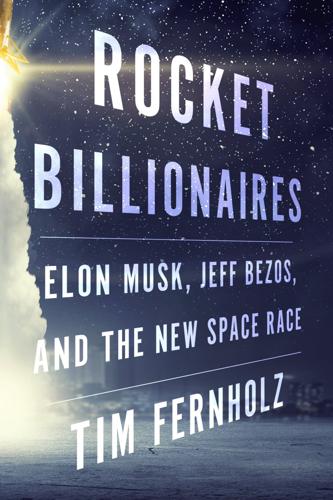
Rocket Billionaires: Elon Musk, Jeff Bezos, and the New Space Race
by
Tim Fernholz
Published 20 Mar 2018
But his key influence was the Reagan-era program known derisively as Star Wars but properly called the Strategic Defense Initiative (SDI). It had arisen as something of a parallel space program to satisfy the new president’s ideological objectives. The Reagan administration wanted to find a trump card in nuclear strategy to replace the deterrence logic of “mutually assured destruction,” which theoretically forestalled nuclear war by presenting it as a murder-suicide. This program would develop new technology to escape this situation. It considered everything from missiles to lasers to magnetic rail guns in its search for tools to eliminate an incoming wave of nuclear-tipped missiles.
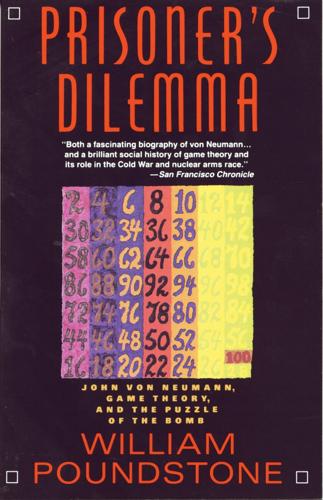
Prisoner's Dilemma: John Von Neumann, Game Theory, and the Puzzle of the Bomb
by
William Poundstone
Published 2 Jan 1993
Most conflicts are not prisoner’s dilemmas, though. No example of a prisoner’s dilemma has been more popular, both in technical articles and the popular press, than a nuclear arms rivalry. This is so much the case that the term “prisoner’s dilemma” is sometimes taken to be part of the jargon of nuclear strategy, along with “mutual assured destruction” and “MIRV.” The perception that arms races pose prisoner’s dilemmas may overshadow the reality, but it has become one of the paradigms of our time. Flood says he wasn’t thinking specifically of the nuclear situation when he and Dresher formulated their game—rather, of Nash equilibriums.
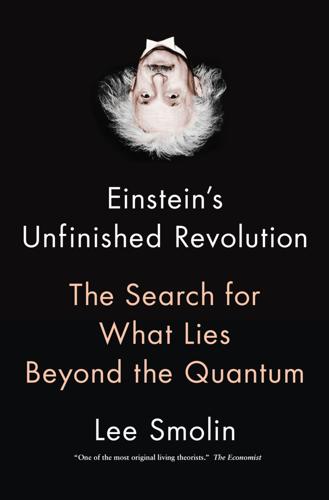
Einstein's Unfinished Revolution: The Search for What Lies Beyond the Quantum
by
Lee Smolin
Published 31 Mar 2019
. // Sette brevi lezioni di fisica. Milan: Adelphi Edizioni, 2014. Tegmark, Max. Our Mathematical Universe: My Quest for the Ultimate Nature of Reality. New York: Alfred A. Knopf, 2014. Biographies of Key Figures Byrne, Peter. The Many Worlds of Hugh Everett III: Multiple Universes, Mutual Assured Destruction, and the Meltdown of a Nuclear Family. Oxford and New York: Oxford University Press, 2010. Farmelo, Graham. The Strangest Man: The Hidden Life of Paul Dirac, Mystic of the Atom. New York: Basic Books, 2009. Gribbin, John. Erwin Schrödinger and the Quantum Revolution. Hoboken, NJ: John Wiley and Sons, 2013.

Messing With the Enemy: Surviving in a Social Media World of Hackers, Terrorists, Russians, and Fake News
by
Clint Watts
Published 28 May 2018
Nuclear programs, combined with America’s much vaunted new “Star Wars” missile defense system, put the Kremlin at a severe disadvantage at a time when the Soviets were experiencing their own calamitous war in Afghanistan. NATO further challenged the Soviet Union’s grip on Eastern Europe. Short of the mutually assured destruction of a nuclear exchange, the Soviet Union would lose any major conflict with the United States and its broad range of allies. Economically, the USSR’s closed planned economy was doomed to failure. The Soviets needed a new, cost-effective approach if they were to keep pace in the Cold War.
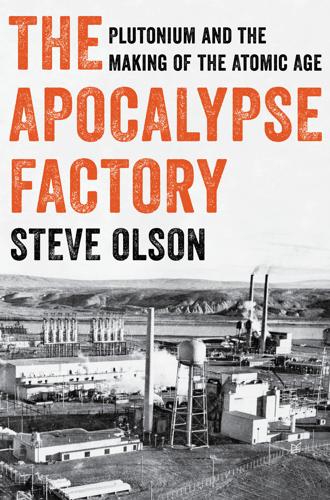
The Apocalypse Factory: Plutonium and the Making of the Atomic Age
by
Steve Olson
Published 28 Jul 2020
By the time of the Kennedy administration, it had become clear that a nuclear war could not be won. Any use of nuclear weapons would likely trigger a large nuclear response from the other side. And even after absorbing a large nuclear attack, either the United States or Soviet Union would have enough weapons left to destroy the other. This standoff came to be known as mutually assured destruction, or MAD. Kennedy’s defense secretary, Robert McNamara, described the situation in a pivotal 1965 speech. The security of the United States, he said, depends on its ability “to absorb the total weight of nuclear attack on our country—on our retaliatory forces, on our command and control apparatus, on our industrial capacity, on our cities, and on our population—and still be capable of damaging the aggressor to the point that his society would be simply no longer viable in twentieth-century terms.

Enlightenment Now: The Case for Reason, Science, Humanism, and Progress
by
Steven Pinker
Published 13 Feb 2018
In a crisis, nuclear weapon states are like an armed homeowner confronting an armed burglar, each tempted to shoot first to avoid being shot.105 In theory this security dilemma or Hobbesian trap can be defused if each side has a second-strike capability, such as missiles in submarines or airborne bombers that can elude a first strike and exact devastating revenge—the condition of Mutual Assured Destruction (MAD). But some debates in nuclear metaphysics raise doubts about whether a second strike can be guaranteed in every conceivable scenario, and whether a nation that depended on it might still be vulnerable to nuclear blackmail. So the United States and Russia maintain the option of “launch on warning,” in which a leader who is advised that his missiles are under attack can decide in the next few minutes whether to use them or lose them.
…
See sex differences; women mental health and illness cognitive behavioral therapy, 175, 282 depression, 280–83, 284, 476n74 disease mongering/concept creep, 281–2 drugs for, 281, 282 and freedom, 285 paradox of, 282 as percentage of global burden of disease, 282 rates of depression and anxiety, 282–3, 476n74 See also anxiety; suicide mental models, 22–3 Mercier, Hugo, 380 Merton, Robert, xvii–xviii methane (natural gas), 136, 143, 147, 183 methodological naturalism, 421–2 Mexican-American War (1946–48), 163 Mexico agriculture in, 76 homicide rates in, 169, 170, 172 literacy in, 236 Mexican Revolution, 199 social spending in, 109 Trump and immigration from, 336 women’s rights in, 222 Meyer, Bruce, 116 microwave ovens, 252 Midas, King, 299 Middle Ages accidental death rates in, 180–81 belief in external forces, 9–10 cost of artificial light in, 253, 253 homicide in, 43, 168 poverty and, 79–80 private militias as ubiquitous in, 197 racism and slavery of, 397 middle class globalization and effects on, 112, 113, 118–19, 339, 340 worldwide increase of, 86, 459–60n18 Middle East and North Africa carbon emissions of, 144 communist governments in, 200 education in, 236–7, 237 emancipative values in, 227–8, 227, 439 imperialist interventions in, 439 literacy and, 236 refugees from, and European populism, 338 See also Arab countries; Muslim countries; individual countries Milanović, Branko, 104–5, 111, 112, 113 military governments, 200 military spending, 162, 467n18 Millennials, 225 depression and, 476n74 digital technology and, 244 happiness and, 273 as increasingly liberal, 217 low voter turnout in Trump’s election, 343 secularization and, 437 suicide and, 280 well-being of, 283 Miller, George, 314 Mill, John Stuart, 373, 417 Milošević, Slobodan, 447 mind-body dualism, 3, 22, 422, 427 mining safety and working conditions, 185, 230 minority rights, populist disregard for, 333, 340 misanthropy of cultural criticism, 34, 247, 446 of traditional environmentalism, 122, 134, 154 Mishima, Yukio, 446 Missouri, capital punishment in, 211 mobile phones/smartphones, 94–5, 257, 331 Mokyr, Joel, 82–3, 332 Molière, 411 Monbiot, George, 264 Mongolia, 85, 86 Monitoring the Future (youth survey), 185 monotonicity, 44 Montefiore, Hugh, 465n76 Montesquieu, 8, 10, 12, 13, 223 Monty Python’s Flying Circus, 392 Mooney, Chris, 387 Moore, Patrick, 465n76 Moore’s Law, 46, 298, 330 morality as balancing desires conflicting with others’, 414 basis of, 412–15, 419 capital punishment abolition and, 211–12, 213 deontological, 416–18 evolution as selecting for, 415 humanism and, 395, 410 impartiality and, 412–13, 415 progress in, as cumulative, 327 relativists vs. realists, 429–30 and safety regulations, 190 social contracts against harm, 27–8 sympathy and, 415 utilitarian, 415–19 and violence, vulnerability to, 414–15 See also theism and theistic morality moral sense abstract reasoning and honing of, 243 deficits in, 26, 140 root-causism and, 169–70 sacrifice and, 140–41 Morgenthau, Hans, 309 Morrison, Philip, 308 Morton, Oliver, 154 Moss, Jonathan, 402 Mothers Against Drunk Driving, 178 motor vehicles accident deaths, 42, 176–8, 177 deaths in, vs. terrorist deaths, 192, 193 decline in demand for, 135 drunk driving, 178 robotic cars, 180 safety, development of, 177–8, 190 Moynihan, Daniel Patrick, 200 Mozambique, escape from poverty of, 85, 86 Mozgovoi, Aleksandr, 479n93 Mueller, John, 205–6, 263, 305, 310–311, 313 Mugabe, Robert, 91 Mukherjee, Bharati, 284 Muller, Richard, 313 multiethnic communities, 405, 448, 450 multiverse theory, 424–5 Munroe, Randall, 127, 128, 430, 489n52 music, 260, 407 Musk, Elon, 296 Muslim countries atheists in, 435 cohorts, 442, 491n106 cruel punishments in, 439, 440 emancipative values weakest in, 223, 227–8, 227, 240, 439, 442 female genital mutilation in, 439 fertility decreasing in, 126, 436 homosexuality as crime in, 223, 439, 440 “honor killings” of women in, 439 and humanism, lack of progress in, 439–42 humanistic revolution in, 442–3, 491n106 human rights violations and, 439 separation of mosque and state, 441 theocracies and, 201 Universal Declaration of Human Rights, 418–19 women’s rights in, 222, 439, 442, 491n106 See also Arab countries; Islam; Islamist extremists; Muslims Muslims conspiracy theories and, 67, 336 hate crimes targeting, 219–20, 220 literal readings of Quran, 440, 490n96 percentage of world population, 436 sharia law and, 440, 490n96 as strongly religious, 440 Trump and immigration of, 336 Mussolini, Benito, 445, 446, 447, 491n118 Mutar, Faisal Saeed Al-, 442 Myanmar (Burma), 203, 419 Myhrvold, Nathan, 477n20 Naam, Ramez, 298, 477n20 Nabokov, Vladimir, 261 Nader, Ralph, 177 Nagel, Thomas, 351–2, 412, 413, 427, 429, 482n4, 488n43 Nalin, David, 64 Namazie, Maryam, 443 Namibia, 203 NASA, 295, 300 Nasr, Amir Ahmad, 443 Nasrin, Taslima, 443 nationalism as counter-Enlightenment value, 30–31, 448 political ideologies and, 31 romantic nationalism, 165–6, 447, 448, 449–51 Russian, 159 vs. social contract, 31 See also populism National Science Foundation, 356–7, 387 nation-states cyber-sabotage accomplished by, 304 as putative units of group selection, 31, 448, 450 romantic nationalism, 165, 447, 448, 449–51 tribalism and, 450 natural disaster deaths, 187–9, 188 destruction of civilizations, 295–6 extinction of human species, 294–5 natural gas (methane), 136, 143, 147, 183 naturalism, 392, 421–2, 486n17 Natural Resources Defense Council, 465n76 natural selection, 18–19 homeostasis discovered by, 22 human intelligence and, 297 humanism and, 413–14 reality as selection pressure, 355 See also evolution nature competition and arms races in, 19, 24–5 environmentalism, traditional view of, 122 purpose in, science as refuting, 8, 24, 394–5, 434–5 as robust, 133 Romanticism and, 30, 121 See also natural selection Nawaz, Maajid, 443 Nazi Germany Christianity of, 430 counter-Enlightenment ideology of, 397 eugenics and, 399 Holocaust, 161, 397, 399, 430 intellectual fans of, 447 Nietzsche as influence on, 445 public health invoked by, 399 “scientific racism” of, 397–8 See also Germany; Hitler, Adolf Negativity bias, 47–8, 293 Negroponte, John, 310 Nemirow, Jason, 140 neo-fascism, 419, 448, 451 neo-reaction, 419, 451 Nepal, 203 Netherlands commerce, embrace of, 84–5 emancipative values in, 225–7, 226, 227 happiness ranking of, 475n30 homicide rates in, 169, 170 life expectancy in, 95 literacy in, 236 populism repudiated in, 338–9 secularization and, 436 social spending in, 108 New Deal, 107–8 New England, homicide rates in, 169, 170 New Peace, 43 New Strategic Arms Reduction Treaty, 317, 318 Newton, Sir Isaac, 24 New York City, 172, 286–7, 380 New York Times, 44, 50, 74, 97, 151, 280, 292, 373, 409, 420 New Zealand economic freedom in, 365, 483n39 education in, 237 and escape from poverty, 85 happiness and, 451, 475n30 IQ gains in, 241, 241 secularization and, 437, 438–9 social spending in, 365, 483n39 well-being and, 438–9, 451 women’s rights in, 222 Nicaragua, 158 Niebuhr, Reinhold, 311 Nietzsche, Friedrich, 443–7 cultural pessimism, advocate of, 39–40, 406 intellectuals and artists as fans, 445, 446–7, 452 quotations from, 444–5 See also romantic heroism Niger, 203 Nigeria democratization of, 203 famine in, 73 killings by Boko Haram in, 162 polio in, 65 secularization and, 436 terrorist deaths in, 193 Nisbet, Robert, 40 Nixon, Richard, 119 Nobel Peace Prize, 203, 232, 240, 316 Nomani, Asra, 443 Non-Proliferation Treaty (1970), 316–17 No Nukes concert and film (1979), 147 nonviolent resistance, success rate of, 405 non-Western Enlightenments, 29–30, 419, 439, 442–3, 456n2 Norberg, Johan, 54–5, 68, 79, 125, 203–4 Nordhaus, Ted, 122, 141–2, 147, 253–4 Nordhaus, William, 138, 253 Nordic countries egalitarian income distribution in, 98 emancipative values in, 225–7, 226, 227 environment of, 130 and escape from poverty, 85 forced sterilization laws of, 399 human rights in, 208, 208 Norma Rae (film), 113 Norris, Pippa, 224, 340 North, Douglass, 83 North Korea Arduous March, 78 as autocratic, 201–2 conflict with South Korea, 158 democratization and, 206 famine in, 78 human rights in, 208, 208 nuclear weapons and, 317, 320 poverty in, 90 Norvig, Peter, 477n20 Norway emancipative values in, 225–7, 226, 227 happiness ranking of, 475n30 human rights in, 208, 208 income per capita in, 271 populism and, 341 nostalgia, 48, 113, 256 Nozick, Robert, 99 nuclear power, 144–5, 146–50, 330, 465n76 nuclear war, 307–321 balance of terror, 315 ban on (Global Zero), 315–17, 320–21 close calls, 310, 312–13, 318, 479nn93,95 deterrence and, 312, 314–15, 317 fear, failure to mobilize public, 308–311, 479n80 Graduated Reciprocation in Tension-Reduction (GRIT), 318, 320 historical pessimism and, 308 and international relations, 312, 315 launch on warning (hair trigger), 315, 319–20 Mutual Assured Destruction (MAD), 315 nations with capacity, 313, 317–18, 318 New Strategic Arms Reduction Treaty (New START), 317, 318 no-first-use pledge, 320 Non-Proliferation Treaty (1970), 316–17 nuclear winter, 308, 310 probability of nuclear war, 312–13 proliferation limited, 313 reduction of arsenal, 317–19, 318, 480nn113,117,121 second-strike capacity, 315, 319 security dilemma (Hobbesian trap) of, 315 Trump and, 336–7 nuclear weapons arms race during Cold War, 291, 308, 311 complacency about, 286 Hiroshima bombing, 305 Manhattan Project and development of, 314 terrorism as threat, 310–311, 313–14 treaty banning atmospheric testing, 133–4 uranium extracted for power plants, 149, 317 Nunn, Sam, 316, 319 Nussbaum, Martha, 248, 264, 413 Nye, Bill, 434 Nyerere, Julius, 447 Obama, Barack approval rating on departure, 338 bullying as issue for, 49 conspiracy theories about, 336, 358 farewell speech and Enlightenment, 338, 481n30 as first African American U.S. president, 214 health care and, 109 on income inequality, 97 on “now” as best time to be born, 37 and nuclear weapons, 316, 319, 320–21, 336–7 racism and, 217 Republican obstructionism and, 432 theoconservatives and, 449 Obamacare, 109 Obama, Michelle, 214 obesity epidemic, 69 objective measurement actuarial formulas outperforming experts, 403–4 as goal of scientific literacy, 403–5 as morally enlightened, 43 Naomi Klein’s dismissal of, 139 resisters of scientific thinking objecting to, 403 See also data occupational safety and accident deaths, 185–7, 187 Occupy Wall Street, 97 Oceania, postcolonial governments of, 201 oceans acidification of, 137, 138, 153 and carbon dioxide (CO2) capture, 136, 150 deep-sea vents as biological energy source, 19 desalination of water, 129, 149 fisheries, 325 geoengineering and, 150, 152–3 marine conservation areas, 132–3, 133 sea level rise, 137, 138 species extinctions and, 463n32 Oklahoma City bombing (1995), 194 Olds, Jacqueline, 274 O’Neill, Eugene, 446 O’Neill, William, 286 Ono, Yoko, 166 On the Waterfront (film), 113 opioid overdoses, 184–5 Oppenheimer, J.
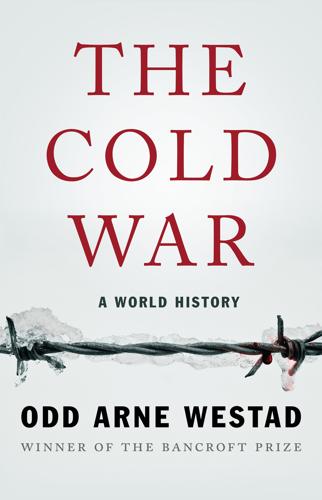
The Cold War: A World History
by
Odd Arne Westad
Published 4 Sep 2017
If that failed, as McNamara assumed it would because of the Soviet conventional superiority in Europe, the United States would use smaller, tactical nuclear weapons. Only as a last resort would the Americans respond with an all-out nuclear attack on Soviet cities and military bases. The Kennedy Administration developed the Single Integrated Operational Plan, known as SIOP, which assumed that mutually assured destruction was not the only possible outcome in case of war. Khrushchev was well aware of US strategic superiority in nuclear terms. His response was to combine bluffing and a war of nerves. The Soviets consistently claimed to have a greater nuclear capability than they actually possessed, and attempted to make up for what they lacked in precision and ballistic expertise by developing ever bigger nuclear weapons.
…
“I feel the Soviet are so defense minded, so paranoid about being attacked,” Reagan wrote in his diary, “that without being in any way soft on them we ought to tell them no one here has any intention of doing anything like that. What the hell have they got that anyone would want?”18 Ever since he became president, Reagan had been preoccupied with finding ways in which the United States could be protected against a nuclear attack. He found the principles of mutually assured destruction to be morally contentious and personally repugnant. The thought of himself ever having to use the nuclear launch codes horrified Reagan, who as president avoided most briefings or simulations in which he would have to do so. Instead, the president in 1983 commissioned a Strategic Defense Initiative (SDI), which would focus on preventing nuclear missiles from ever reaching the US mainland.
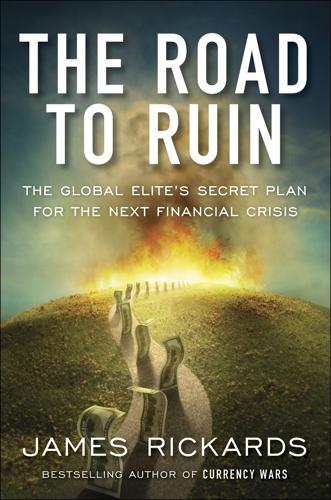
The Road to Ruin: The Global Elites' Secret Plan for the Next Financial Crisis
by
James Rickards
Published 15 Nov 2016
These newer bombs used fission to cause a secondary fusion implosion, releasing far greater energy and achieving a new order of destruction. These advances in technology and destructive force were not ends in themselves. They were guided by new nuclear war fighting doctrines developed first at RAND Corporation, and later expanded at Harvard University and other elite schools. The doctrine, called Mutual Assured Destruction, or MAD, was the product of game theory in which participants based their actions on expected reactions of other participants who, in turn, acted based on expected reactions of the initial actor, and so on recursively until a behavioral equilibrium was reached. What RAND Corporation discovered is that winning a nuclear arms race was destabilizing and likely to result in nuclear war.

Adapt: Why Success Always Starts With Failure
by
Tim Harford
Published 1 Jun 2011
’ – Robert Friedel 1 ‘A most interesting experiment’ In 1931, the British Air Ministry sent out a demanding new specification for a fighter aircraft. It was a remarkable document for two reasons. The first was that throughout its existence the Royal Air Force had been dismissive of fighters. The conventional wisdom was that bombers could not be stopped. Instead, foreshadowing the nuclear doctrine of mutually assured destruction, the correct use of air power was widely presumed to be to build the largest possible fleet of bombers and strike any enemy with overwhelming force. The second reason was that the specification’s demands seemed almost impossible to meet. Rather than rely on known technology, the bureaucrats wanted aviation engineers to abandon their orthodoxies and produce something completely new.
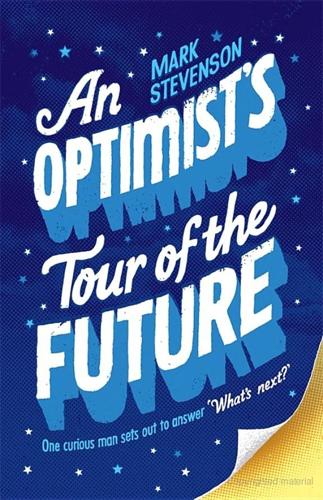
An Optimist's Tour of the Future
by
Mark Stevenson
Published 4 Dec 2010
Economies dependent on American trade go into a tailspin, igniting a global economic crisis. (2) Nanotechnology arms race. Nations terrified of the threat posed by foreign powers who might possess this technology ahead of them race to produce their own version, driven by the same desires that saw nuclear arms proliferation. Once again, Mutually Assured Destruction via powerful nano-engineered weapons is on the table and the world lives in fear of, or worse, suffers an all-out nano-war. (3) Welcome back Hitler. At the 2008 Global Catastrophic Risks conference, Mike Treder, co-founder of the Center for Responsible Nanotechnology, said, ‘If you can make any product you want on your desk in your home, what happens to all the people whose jobs rely on finding raw materials, manufacturing those products, delivering them – transportation, storage, wholesale, retail – all of those people might someday be left jobless … Such social disruption can leave a vacuum that allows a powerful charismatic personality to take hold.
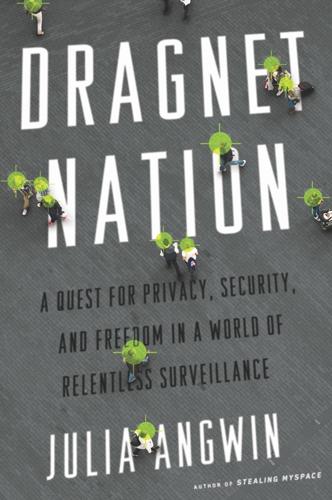
Dragnet Nation: A Quest for Privacy, Security, and Freedom in a World of Relentless Surveillance
by
Julia Angwin
Published 25 Feb 2014
The evidence suggests that human surveillance, or perceived surveillance through pictures of human eyes or cameras actively monitored by humans, can modify behavior to promote positive social habits, such as clearing up dishes in a communal cafeteria, and sometimes can deter property crimes. However, there is some evidence that suggests that street lighting may be just as effective. Mutually assured surveillance also appears to have helped prevent mutually assured destruction during the Cold War. However, surveillance does not appear to be good for predicting terrorism, as many terrorist events have slipped through the dragnets. Even the Stasi failed to predict the collapse of the East German regime in 1989. And the flood of surveillance data can be overwhelming and confounding to those who are charged with sorting through it to find terrorists.
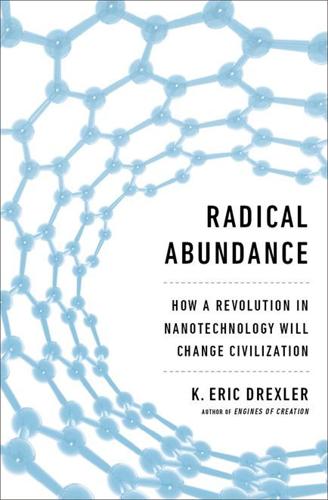
Radical Abundance: How a Revolution in Nanotechnology Will Change Civilization
by
K. Eric Drexler
Published 6 May 2013
The remaining external threats to vital national interests have a circular character, in which responses to threats to security give rise to reciprocal threats in a cycle that can become autonomous when past events, not fundamental interests, shape the dynamics. During the United States/Soviet arms race, for example, military threats were disproportionate to conflicts of material interests—the United States and Soviet Union scarcely competed for markets or natural resources, yet wrestled for power while counting warheads and contemplating mutual assured destruction. By contrast, the United States and Europe compete in every dimension of economic affairs, yet they show no perceptible concerns regarding imbalances in military power: the United States, Britain, and France have stockpiles of thermonuclear weapons of greatly different sizes (thousands vs. hundreds), yet without a recent history of reciprocal threats, these disparities are not regarded as important.
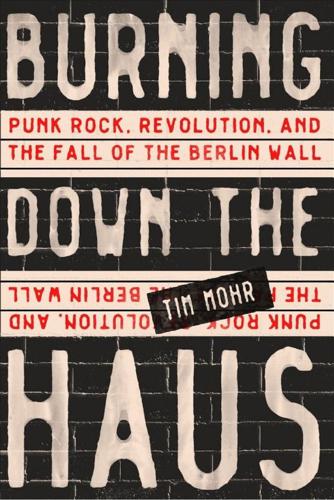
Burning Down the Haus: Punk Rock, Revolution, and the Fall of the Berlin Wall
by
Tim Mohr
Published 10 Sep 2018
A couple of huge international pop hits by German artists brought home the point. At first blush, Alphaville’s “Forever Young,” for instance, seemed to be a sweet ditty about typical teen yearnings. Except for one little thing: the reason we might remain forever young was because we could all be fried in a global blast of mutually assured destruction. Or take Nena’s “99 Luftballons.” One minute a couple is holding hands as they watch their balloons float into the sky; the next minute an early warning system picks up the dirigibles and triggers an all-out nuclear exchange. Then there were all the British bands with songs on the topic, many of them hits in West Germany and across Europe.

Rage Inside the Machine: The Prejudice of Algorithms, and How to Stop the Internet Making Bigots of Us All
by
Robert Elliott Smith
Published 26 Jun 2019
The others include devising a way to make ENIAC (arguably the world’s first real computer) programmable; making substantial contributions to quantum physics6 and equilibrium theories in economics; and, inventing game theory, an area of mathematical research which shaped cold war politics for a generation through his descriptions of a game-theoretic construct he called “mutually assured destruction.” Inspired by Turing’s papers on computation, von Neumann also came up with the modern conception of Babbage’s ‘store’ and ‘mill’ computer structure, in what is now called the ‘von Neumann architecture’, the architecture at the heart of almost all modern computers. Amongst this world-changing productivity, von Neumann also speculated about how computer programs, like genetic organisms, might be able to self-replicate.
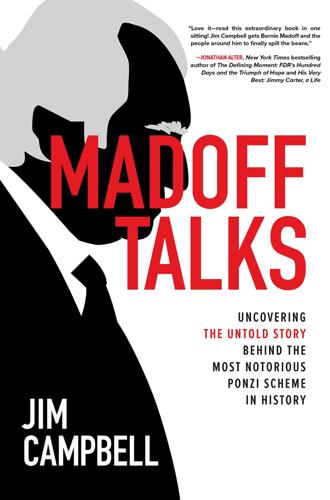
Madoff Talks: Uncovering the Untold Story Behind the Most Notorious Ponzi Scheme in History
by
Jim Campbell
Published 26 Apr 2021
Then Picower would be given, often dictated by himself, outsized, phony returns dwarfing his Ponzi-saving infusions. Bernie had no one to blame but himself for putting himself in this position. He lacked the moral fiber and courage to get out of it. Madoff’s dependency on Picower fueled a commensurate hatred of him. It was a symbiotic relationship that led to mutual assured destruction. At some inexplicable level, Bernie felt a need to make his Big Four rich, even to a far greater extent than satiating his own need to be rich. I found Madoff’s path to Ponzi consisted of three interrelated events, spanning decades. 1962—THE IPO LOSSES: DID MADOFF HAVE A PATHOLOGICAL AVERSION TO LOSSES?

The Future of Fusion Energy
by
Jason Parisi
and
Justin Ball
Published 18 Dec 2018
In our opinion, while this may have been valid during the Cold War, the nature of the nuclear threat has evolved substantially since then. In the current era, nuclear weapons are far less useful for deterrence. Non-state actors, such as terrorists, are often unperturbed by the threat of mutually assured destruction. For example, there is evidence that Al-Qaeda has been actively trying to obtain nuclear material in order to set off a nuclear device in a city. Additionally, now that so many states have nuclear weapons, it has become more likely that an attack will occur, even if it isn’t a rational or strategically wise action.
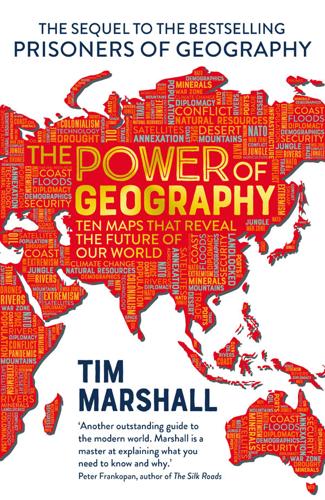
The Power of Geography: Ten Maps That Reveal the Future of Our World
by
Tim Marshall
Published 14 Oct 2021
The leaders of the two superpowers saw clearly that nuclear war means that everyone loses, and we may come to see space war in the same terms. There’s always the danger that one state might risk limited strikes to gain an advantage, but it’s more likely that countries will focus on deterrence based on ‘mutually assured destruction’. This doctrine is as logically ‘mad’ as it was during the Cold War, but it held then and may apply in the future. Just as there were kinetic wars inside the Cold War, so we may see limited forms of warfare in space stopping short of action endangering our entire existence. The diplomatic channels necessary to achieve standard operating procedures can build trust and reduce tensions.

Boom: Bubbles and the End of Stagnation
by
Byrne Hobart
and
Tobias Huber
Published 29 Oct 2024
Today, nuclear power accounts for 18 percent of US electricity generation, producing $38 billion in annual revenue. In France, nuclear power produces almost 70 percent of electricity. Nuclear competition also prompted the development of game theory, an important branch of math and economics also invented by von Neumann. In a world of mutually assured destruction in which a state could retaliate against a devastating nuclear attack but could not stop an assault already underway, academics undertook more serious decision-making models that incorporated known incentives and uncertain information. Today, game theory underpins the ad pricing models of major internet companies like Alphabet, Amazon, and Facebook.
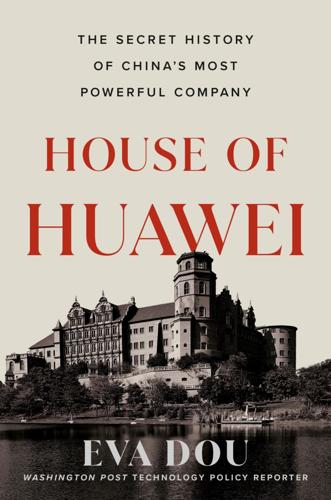
House of Huawei: The Secret History of China's Most Powerful Company
by
Eva Dou
Published 14 Jan 2025
Now the assumption on both sides is that the other nation sees the competition as a zero-sum game and believes that it will not act in good faith, that it will be willing to go to extreme lengths to come out ahead, and that if backed into a corner, it will be willing to entertain pushing the big red button for mutually assured destruction, simply out of spite. “It depends on what threat you’re trying to manage, right?” said Charles Clancy, the former NSA cybersecurity researcher, about why Western governments had until recently largely considered Huawei equipment safe enough to use. “If the threat you’re managing does not presume China activating their intelligence law and going much more aggressively against adversaries across the globe, then the threat is manageable.
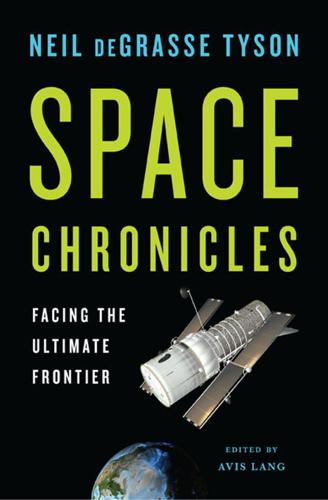
Space Chronicles: Facing the Ultimate Frontier
by
Neil Degrasse Tyson
and
Avis Lang
Published 27 Feb 2012
But out in space, even a pressure as small as that can be important—for it’s acting all the time, hour after hour, day after day. Unlike rocket fuel, it’s free and unlimited. If we want to, we can use it; we can build sails to catch the radiation blowing from the sun. In the 1990s, a group of US and Russian rocket scientists who preferred to collaborate rather than contribute to mutual assured destruction (aptly known as MAD) began working on solar sails through a privately funded collaboration led by the Planetary Society. The fruit of their labor, Cosmos 1, was an engineless, 220-pound spacecraft shaped like a supersize daisy. This celestial sailboat folded inside an unarmed intercontinental ballistic missile left over from the Soviet Union’s Cold War arsenal and was launched from a Russian submarine.
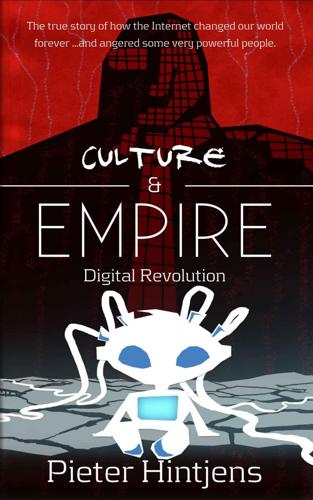
Culture & Empire: Digital Revolution
by
Pieter Hintjens
Published 11 Mar 2013
Bush was director of the CIA for just over a year, Russ Baker claims in Family of Secrets, with much research, that the Bush family played a central part in US politics and secret services for half a century. These men had made phony war their business for decades, and ran the largest budgets in the world, so when their era of "mutually assured destruction" ended, they were presumably looking for new work. I would, in their place. I think that by the end of the last century, Islam was selected as the best candidate for a Bad Guy to replace the crumbling East-West divide with its slowing profits for the military-industrial complex. We have the mass immigration of North Africans and Turks into Europe as the basis for anti-Islamic public policies in Europe.
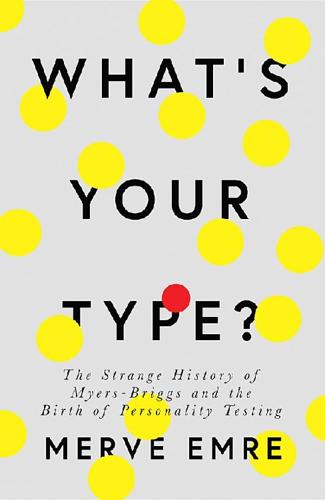
What’s Your Type?
by
Merve Emre
Published 16 Aug 2018
He talked and joked like a poet too, writing ironic and existentially grave test questions for inclusion in Gough’s questionnaires. “Life is devastating in its poignancy for me much of the time”—true or false? “I feel chilled to the depths of my soul”—true or false? But he also believed that creativity had to serve a utilitarian political purpose, especially now that mankind’s mutually assured destruction was a new fact of life. “As a species,” he wrote, “we are at such a point of historical no return that it behooves us to muster all our powers, in the name of the Creator if necessary, to meet consciously the problems that our own evolution has set for us … Put creativity to work!” We have, most of us, a certain image of the creative person.
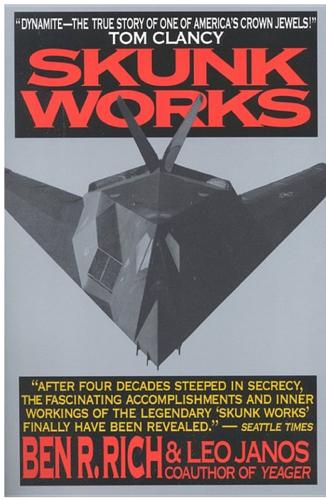
Skunk Works: A Personal Memoir of My Years of Lockheed
by
Ben R. Rich
and
Leo Janos
Published 1 Jan 1994
LeMay was also sore about our close relationship to the CIA because in his view the agency had no right to have its own independent air wing, furnished by the Skunk Works. But now LeMay whisked in with his entourage and a shopping list that included converting the Blackbird into an extended-range deep-penetration bomber that the Russians could not stop. LeMay had fathered the SAC strategy called MAD—Mutual Assured Destruction. That said it all. Our Blackbird would nuke ’em back to the Stone Age. Kelly briefed LeMay personally and invited several of us who were experts on various components of the airplane to sit in just in case the general had technical questions. I was intrigued watching the big, two-fisted LeMay puffing on a thick cigar, his shrewd eyes focused in concentration as Kelly zipped through a classified slide show detailing all the performance characteristics of the new airplane.
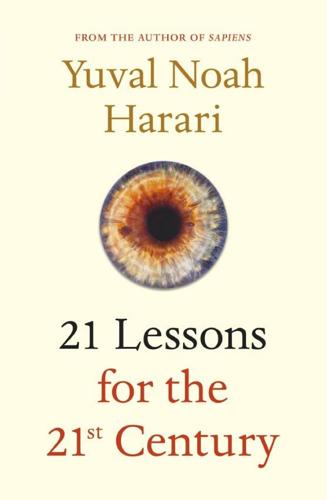
21 Lessons for the 21st Century
by
Yuval Noah Harari
Published 29 Aug 2018
Whatever you think about regulating disruptive technologies, ask yourself whether these regulations are likely to hold even if climate change causes global food shortages, floods cities all over the world, and sends hundreds of millions of refugees across borders. In turn, technological disruptions might increase the danger of apocalyptic wars, not just by increasing global tensions, but also by destabilising the nuclear balance of power. Since the 1950s, superpowers avoided conflicts with one another because they all knew that war meant mutually assured destruction. But as new kinds of offensive and defensive weapons appear, a rising technological superpower might conclude that it can destroy its enemies with impunity. Conversely, a declining power might fear that its traditional nuclear weapons might soon become obsolete, and that it had better use them before it loses them.
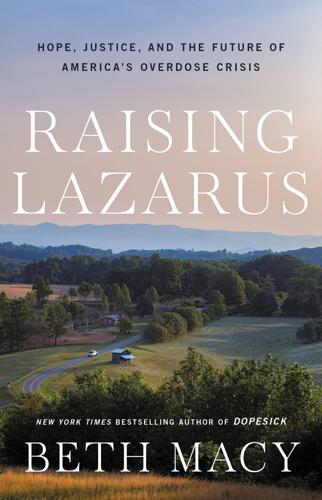
Raising Lazarus: Hope, Justice, and the Future of America’s Overdose Crisis
by
Beth Macy
Published 15 Aug 2022
He was sure that if Trump’s DOJ were still in charge, they would have voted for the bankruptcy plan and made no objection at all. The DOJ could still prosecute the Sacklers after confirmation of the bankruptcy plan, but the states wanted and needed the money the Sacklers were about to send their way—which the Sacklers were sure to stop paying the moment a criminal case was filed. It was a game of mutual assured destruction, Lipson said. “They need the money?” Nan Goldin asked. “The states want the money, that’s right,” Lipson said. He told the group, “I certainly think the more noise you make, the harder it will be for the DOJ to ignore it.” Quinn hoped to go out swinging, but earlier in the week Goldin’s PAIN had discussed staging another protest and decided against it.
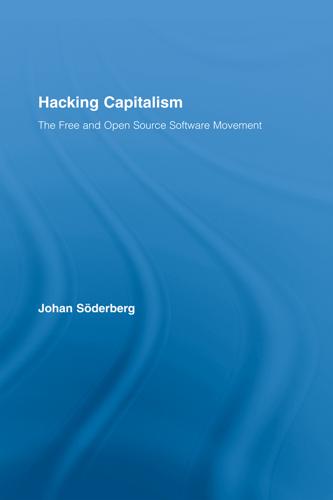
Hacking Capitalism
by
Söderberg, Johan; Söderberg, Johan;
A major concern of theirs was the game-benefits of a nuclear first strike. A first strike, or an accident for that matter, could sever the connections running between the headquarters and the missile silos. The mere possibility of such an outcome created uncertainties and jeopardised the MAD (Mutual Assured Destruction) doctrine. A resilient communication system was therefore crucial to guarantee retaliation capacity. Vulnerability was located at the single line which carried the message: ‘fire’, or: ’hold fire’. Hence, the model envisioned by Paul Baran distanced itself as far as possible from a centralised communication infrastructure.

Everyday Utopia: What 2,000 Years of Wild Experiments Can Teach Us About the Good Life
by
Kristen R. Ghodsee
Published 16 May 2023
“The challenge, Mr. Offenhouse, is to improve yourself, to enrich yourself. Enjoy it.” This final bit of dialogue landed on me like an anvil. There I was, just turned eighteen, living in my English teacher’s spare room, a confused refugee from a violent and now “broken” home, terrified of mutually assured destruction. Like the young Whoopi Goldberg seeing Uhura on the bridge of the original Enterprise and realizing that Black people would exist in the future, I remember considering for the first time that if there was a future, it could be profoundly different from the present. Unlike Star Wars in its galaxy far, far, away, or the Wonder Woman parallel universe filled with Greek gods and magic lassos of truth, Star Trek was my world, a world I believed to be stuck and impossible to change.

Digital Disconnect: How Capitalism Is Turning the Internet Against Democracy
by
Robert W. McChesney
Published 5 Mar 2013
These were a “trove of mobile patents” that would make Google’s Android stand up to legal challenge and diminish the threat of any new market entrants.24 “As tech companies snap up patents,” Politico observed, “they are battling each other in courts around the world.” One antitrust attorney called it mutually assured destruction. The certain loser: the smaller firms that “can’t buy up 20,000 patents” or pay legal fees for endless court cases.25 In the same manner that copyright law has become a deterrent to creativity as much as a foundation for it, so it is with patents.26 “The belief that stronger intellectual property protection inevitably leads to more innovations appears broadly wrong,” the Times writes, because “innovation is often a cumulative process, with each step piggybacking on the ideas before it.”
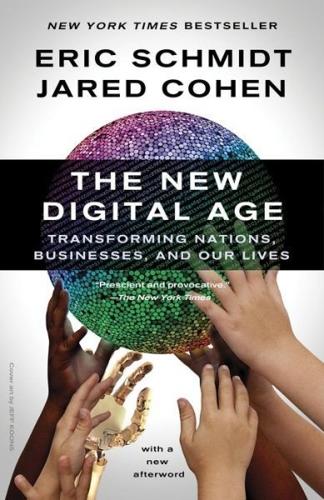
The New Digital Age: Transforming Nations, Businesses, and Our Lives
by
Eric Schmidt
and
Jared Cohen
Published 22 Apr 2013
As with the Cold War, there will be little civilian involvement, awareness or direct harm, which deleteriously affects how states perceive the risks of such activities. States with ambition but a lack of experience in cyber warfare might go too far and unintentionally start a conflict that actually does harm their populations. Eventually, mutually-assured-destruction doctrines might emerge between states that stabilize these dynamics, but the multipolarity of the landscape promises to keep some measure of volatility in the system. More important, there will be a great deal of room for error in the new Code War. The misperceptions, misdirection and mistakes that characterized the Cold War era will reappear with vigor as all participants go through the process of learning how to use the powerful new tools at their disposal.
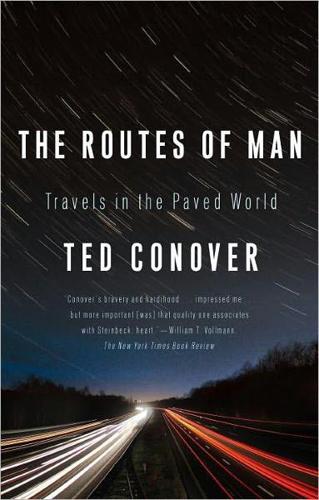
The Routes of Man: How Roads Are Changing the World and the Way We Live Today
by
Ted Conover
Published 15 Jan 2010
But as I pressed him on his views we finally arrived at his bottom line: Khalid declared that he was in favor of an Islamic caliphate—strict Muslim rule of the world. Contrary to the beliefs of some in the West, he said, the Middle East would be a lot safer and more stable if many nations had nuclear weapons, instead of just one (Israel). Then, at least, there would be mutually assured destruction. With that he seemed to take a breath. Latifa appeared and poured us all more tea. I was wondering how a person embracing this ideology could possibly function as a journalist. It was difficult at the moment, Khalid replied; his permission to travel had been revoked by Israel after he had filed a story in Egypt for al-Jazeera that evidently provoked someone in Israeli intelligence.

Who Owns the Future?
by
Jaron Lanier
Published 6 May 2013
At some point no one would care anymore if a congressman tweeted a picture of his penis. Yawn. When people don’t care enough to look, then privacy will be restored. This is a common hope in the “transparency” movement. The golden rule might become hard to distinguish from ambient blackmail if blackmail really becomes ambient enough. A society-wide “mutually assured destruction” effect could motivate a mutually respectful social contract, improving security. If everyone were equally vulnerable to creepiness, then there would be less creepiness. If a lulz-seeker were always just as easy to identify and harass as a victim of online humiliation, then there would be a lot less online humiliation.
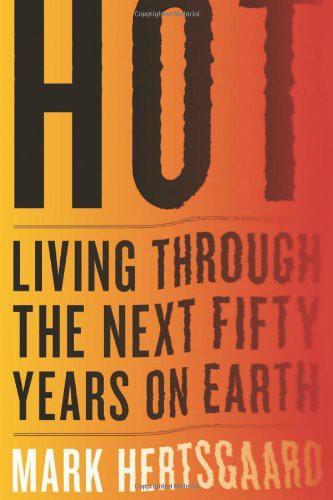
Hot: Living Through the Next Fifty Years on Earth
by
Mark Hertsgaard
Published 15 Jan 2011
Mark Lynas, who was in Copenhagen serving as an unpaid science adviser to the government of the Maldives, rejected such rationalizations as a recipe for global catastrophe. "The historical responsibility argument makes sense in one way only: as an argument for adaptation financing," he told me. Historical responsibility "is not an argument for others to pollute just as much.... That is the logic of 'mutually assured destruction'—where human concepts of equity triumph over the necessity for planetary survival." But the historical responsibility argument cannot be so easily dismissed. As Schellnhuber's WBGU study pointed out, humanity has a limited amount of carbon it can emit over the next fifty years if it wishes to stay within the 2°C limit.
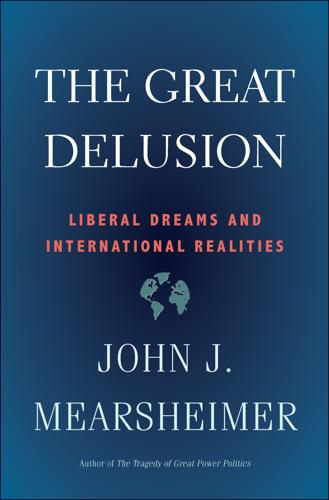
The Great Delusion: Liberal Dreams and International Realities
by
John J. Mearsheimer
Published 24 Sep 2018
But one frequently hears that economic interdependence theory can explain why China’s rise will be peaceful. China’s economy is tied to the economies of its rivals, and this linkage means not only that China and its trading partners depend on each other to keep prospering, but also that prosperity depends on their peaceful relations. A war involving China would be tantamount to mutual assured destruction at the economic level. Hence, economic interdependence will keep the peace in Asia as China rises. It is possible to hypothesize a world in which one or more of the liberal theories apply universally, and one where none of them applies at all. But those are not our world. In our world, those theories are likely to cover certain situations but not others.
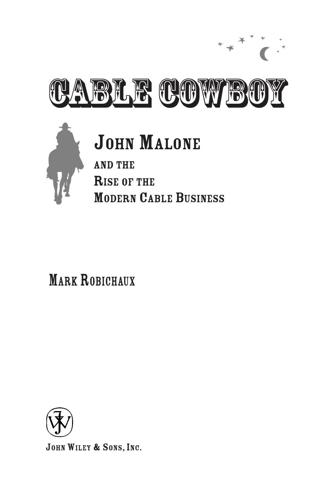
Cable Cowboy
by
Mark Robichaux
Published 19 Oct 2002
Malone had the edge, for TCI could instantly add millions of homes to the reach of Murdoch’s Fox Broadcasting network and the f ledgling Fox News Channel, not to mention the Family Channel, which he was hoping to purchase. The idea, Malone liked to think, was to collaborate even with your enemies— especially with your enemies—to avoid the large and costly fight of real competition. “It’s like mutually assured destruction: Both sides could really hurt the other if they did something really stupid,” Malone once said. “ We have to treat each other with civility to avoid all-out nuclear war.” 7 Yet, for much of 1996, Murdoch’s people had been saying unkind things about TCI and plotting an outright assault on the cable industry.
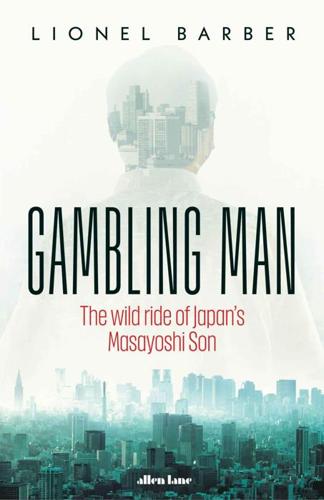
Gambling Man
by
Lionel Barber
Published 3 Oct 2024
Be straight with the banks, he once advised a junior colleague. If you’re straight with them, they will work with you. We don’t want a repeat of the 1990s in Japan when all the bad stuff was hidden.20 Besides, he added, the higher the debt level, the more dangerous it would be for the banks to pull the plug. Masa understood the doctrine of mutually assured destruction, especially later in his career when SoftBank’s borrowings and leverage took on even greater proportions. Kasai, who had five other jobs, including president of the SoftBank Hawks baseball team, played catcher in his high school. He was one of Masa’s most trusted executors, one of a small circle of Japanese managers who made sure that his boss’s visions were not hallucinations.

The Quest: Energy, Security, and the Remaking of the Modern World
by
Daniel Yergin
Published 14 May 2011
Members of what was becoming known as the arms-control community, focusing on proliferation, added their voices to those of the antinuclear activists. For a number of years, there was confidence that the nuclear weapons “club” was stable and highly exclusive, limited to just five members—the United States, the Soviet Union, Britain, France, and China. The doctrine of mutually assured destruction—known as MAD—offered the stability of deterrence between the United States and the Soviet Union. But then, in May of 1974, the Indian foreign minister received a cryptic phone message: “The Buddha is smiling.” He knew what that code meant; India had just exploded a “peaceful nuclear device” in the Rajasthan Desert, 100 miles from the border with Pakistan.
…
Morgan Stanley Morse, Edward Moscow Alekperov in Aliyev in National Hotel in Mossadegh, Mohammad mottainai (too precious to waste) Movement for the Emancipation of the Niger Delta (MEND) Moynihan, Daniel Patrick MTBE (methyl tertiary butyl ether) Mubarak, Hosni mujahedeen, Afghan Mulva, James Musk, Elon mutually assured destruction (MAD) Nabucco project Naim, Moises Naimi, Ali al- Naitoh, Masahisa NASA (National Aeronautics and Space Administration) National Academy of Sciences, U.S. National Assessment of Climate Change, Chinese National Electoral Council, Venezuelan National Energy Administration, Chinese National Energy Plan, U.S.
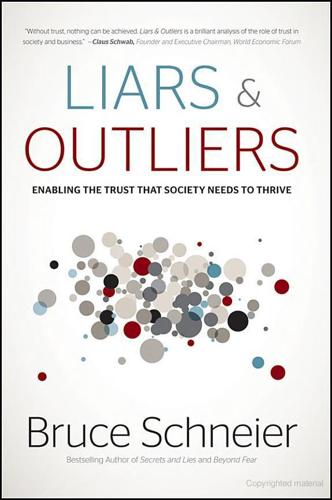
Liars and Outliers: How Security Holds Society Together
by
Bruce Schneier
Published 14 Feb 2012
This step-by-step approach—me paying the contractor partially, him doing some of the work, me paying some more, him doing some more work, etc.—helped both of us trust each other during the entire project because the severity of defection was lessened. This was also the general idea behind the Cold War doctrine of mutually assured destruction. Both the U.S. and the USSR worked to convince the other that they were committed to massive retaliation in the event of a first strike. The result was that neither side was willing to use nuclear weapons; the two countries might not have trusted each other in general, but they both trusted that the other side was crazy enough to follow through on its commitment.
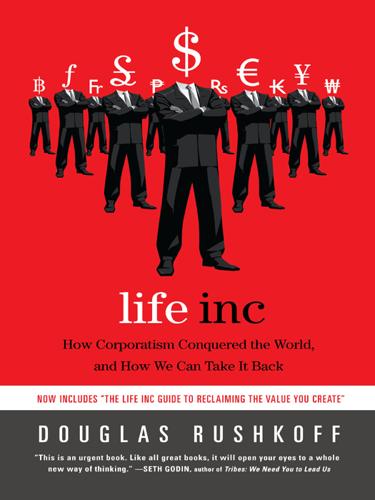
Life Inc.: How the World Became a Corporation and How to Take It Back
by
Douglas Rushkoff
Published 1 Jun 2009
Offering to give up all of one’s weapons was impossible, because there was no way of knowing whether the enemy had really done the same or merely bluffed about his holdings. Instead, each nation had to maintain a nuclear arsenal in order to deter the other from using its own, and bringing about what was known as mutually assured destruction, or MAD. The fact that a nuclear war did not break out served as the best evidence that Nash’s theoretical framework was sound. Encouraged by this success as well as by the voices in his head, Nash applied his game theory to all forms of human interaction. He won a Nobel Prize for showing that a system driven by suspicion and self-interest could reach a state of equilibrium in which everyone’s needs were met.

City: A Guidebook for the Urban Age
by
P. D. Smith
Published 19 Jun 2012
In 2004, the Peace March was revived and, as in 1958, a rally was held in Trafalgar Square at the start before four hundred marchers walked to Aldermaston. See P. D. Smith, Doomsday Men: The Real Dr Strangelove and the Dream of the Superweapon (London: Penguin, 2007), 437. 56. VE Day was on 8 May 1945. On the CND demonstrations, see P. D. Smith, ‘“Gentlemen: You are mad!”: Mutual Assured Destruction and Cold War Culture’, in Dan Stone, ed., The Oxford Handbook on Postwar European History (Oxford: OUP, 2012). 57. ‘Millions join global anti-war protests’, BBC News Online, 17 February 2003 <http://news.bbc.co.uk/1/hi/world/europe/2765215.stm> 58. Cited in Reiss (2007), 15. 59.
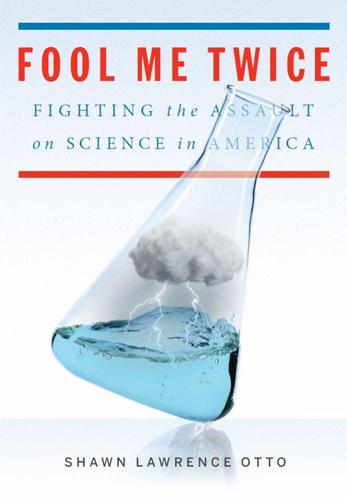
Fool Me Twice: Fighting the Assault on Science in America
by
Shawn Lawrence Otto
Published 10 Oct 2011
The nation was already spending unprecedented amounts of money on the risky Apollo program. Science was unpopular with the general public, which saw the spending as wasteful when so many pressing social needs were going unmet. Science was despoiling the environment, and nuclear physics in particular had embroiled us in an arms race that would perhaps end us all in mutually assured destruction. By 1969 the nation had tumbled into yet another recession, the emerging baby boom was loudly questioning America’s priorities, and Congress was looking for ways to cut spending. There was no political capital to be gained by funding a massive new science investment like a particle accelerator unless there was some greater justification.

Jennifer Morgue
by
Stross, Charles
Published 12 Jan 2006
It was, to use the appropriate adjective, a truly Lovecraftian age, dominated by the cold reality that our lives could be interrupted by torment and death at virtually any time; normal existence was conducted in a soap-bubble universe sustained only by our determination to shut out awareness of the true horrors lurking in the darkness outside it an abyss presided over by chilly alien warriors devoted to death-cult ideologies and dreams of Mutually Assured Destruction. Decades of distance have bought us some relief, thickening the wall of the bubble — memories misting over with the comforting illusion that the Cold War wasn't really as bad as it seemed at the time — but who do we think we're kidding? The Cold War wasn't about us. It was about the Spies, and the Secret Masters, and the Hidden Knowledge.
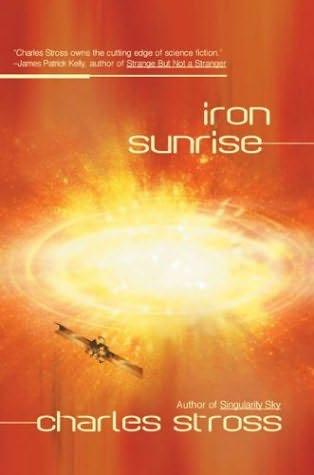
Iron Sunrise
by
Stross, Charles
Published 28 Oct 2004
With nine hundred permanent seats on the UN Security SIG, the only miracle was that anything ever got done at all. Still, if anything could stimulate cooperation, it was the lethal combination of household nanofactories and cheap black-market weapons-grade fissiles. The right to self-defense did not, it was generally held, extend as far as mutually assured destruction — at least, not in built-up areas. Hence the SXB volunteers, and her recurring nightmares and subsequent move to the diplomatic corps’ covert arms control team. Which was basically the same job on an interstellar scale, with the benefit that governments usually tended to be more rational about the disposition of their strategic interstellar deterrents than bampot street performers with a grudge against society and a home brew nuke.
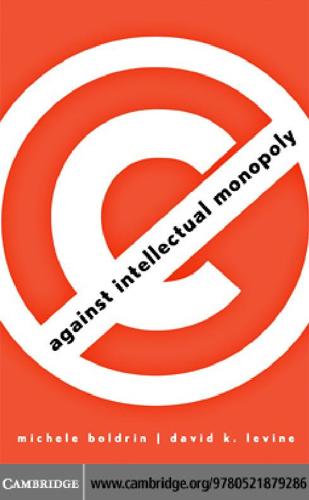
Against Intellectual Monopoly
by
Michele Boldrin
and
David K. Levine
Published 6 Jul 2008
They find that their data is consistent with the hypothesis that preliminary injunctive relief is a predatory weapon in patent cases.10 This situation is akin to that of the cold war, when we used to hold thousands of expensive nuclear weapons for “defensive purposes.” Here, firms are spending vast amounts of money to obtain and hold defensive patents. This leads to an equilibrium that is equally socially bad (because lots of resources are spent to build weapons that should never be used) but desperately more insane than the “threat of mutual assured destruction” was during the cold war. Then, at least, we were trying to protect ourselves from a real and external Communist threat we had not created. In the current defensive patents equilibrium, there is no external threat to our well-being – the threat is entirely one we have created by picking the wrong legislation.

AI 2041: Ten Visions for Our Future
by
Kai-Fu Lee
and
Qiufan Chen
Published 13 Sep 2021
Nuclear weapons are an existential threat, but they’ve been kept in check and even helped reduce conventional warfare, because of the deterrence theory. Deterrence means having nuclear weapons could deter a more powerful adversary, provided your nuclear weapons cannot be taken out by a surprise first attack. Because a nuclear war leads to MAD (mutually assured destruction), any country initiating a nuclear first strike likely faces reciprocity and thus self-destruction. But with autonomous weapons, the deterrence theory does not apply because a surprise first attack may be untraceable, and there is no threat of MAD. In the story, the difficulty of tracking down the Doomsday Drones is one example.

The Profiteers
by
Sally Denton
Guided by the elite Committee on the Present Danger—the potent Washington-based lobby cofounded by Shultz and McCone—the conservative agenda was a geopolitical, pro-defense spending view that had been mounting since World War II. Throughout the 1970s, Bechtel supported the foreign policy think tanks, such as the Hoover Institution and the Heritage Foundation, that were attacking détente and the idea of a peaceful coexistence with the Soviet Union by mutually assured destruction. The “Cold War cabal of unreconstructed hawks and neohawks who had never been at ease with the arms control efforts of the Nixon, Ford, and Carter administrations suddenly came into its own,” with Weinberger its instrument, wrote Robert Scheer in With Enough Shovels. He embodied the group’s ideology and rejection of the possibility of peaceful coexistence with the Soviet Union.

Who Owns England?: How We Lost Our Green and Pleasant Land, and How to Take It Back
by
Guy Shrubsole
Published 1 May 2019
Their silhouettes resembled a cross between aircraft hangars and Bronze Age burial mounds. But whereas the tumuli that dot Berkshire’s chalk downlands were built to remember the dead as they passed into the afterlife, these structures seemed to me to be far more nihilistic: monuments to Mutually Assured Destruction. Up close, the silos appeared even more malevolent. Still shrouded by three lines of fencing, some of it topped by razor wire, they squatted: ziggurats of grassed-over concrete with thick bulkhead doors, defended by menacing MOD signs. THIS IS A PROHIBITED PLACE WITHIN THE MEANING OF THE OFFICIAL SECRETS ACT, read one.

Columbine
by
Dave Cullen
Published 3 Mar 2010
He wrote page after page of specific murder plans. They were at each other’s mercy now. Exposure of the yearbooks could end their participation in Diversion and bring them back on felony charges. For the final year, each boy knew his buddy could get him imprisoned at any time, though they would both go down together. Mutually assured destruction. Dr. Fuselier considered the yearbook passages. Both boys fantasized about murder, but Dylan focused on the single attack. Eric had a grander vision. All his writing alluded to a wider slaughter: killing everything, destroying the human race. In a passionate journal entry a month later, he would cite the Nazis’ Final Solution: “kill them all. well in case you haven’t figured it out yet, I say ‘KILL MANKIND.’”
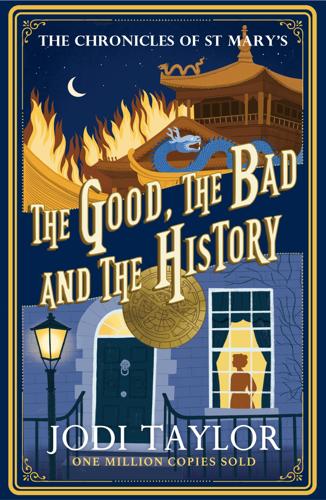
The Good, the Bad and the History
by
Jodi Taylor
Published 21 Jun 2023
‘Let me assure you, I have no intention of interfering in your life. Return the compliment as you said you would – stay out of my way – and any nasty situations can easily be avoided.’ He looked down at me. ‘By both of us.’ I believed him, actually. We both had a lot to hide and this could be a matter of mutually assured destruction. ‘Deal,’ I said. Treadwell nodded and got up to go. ‘Oh – by the way.’ He pulled something from his pocket. ‘You might find these useful. They’re a proprietary medicine not available in your time although you should have no difficulty reproducing them. They will go a long way towards reducing what we call time lag.
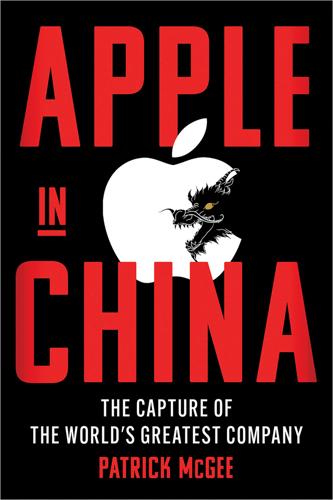
Apple in China: The Capture of the World's Greatest Company
by
Patrick McGee
Published 13 May 2025
So Apple turned to TSMC on an exclusive basis, establishing over-the-top contract terms to protect itself. A person familiar with the contract characterized it as saying: “We need to make sure that you’re gonna go out of business—if you’re gonna put us at risk of going out of business.” It was a “mutually assured destruction” type of situation, this person says, because if TSMC didn’t perform in any given year, there’d be no iPhone. So the Apple decision was made: “We are going to put all of our eggs in one basket, and then we’re gonna guard the basket.” TSMC’s bet would prove critical for making it the world leader in semiconductor fabrication, with Apple as its biggest client.
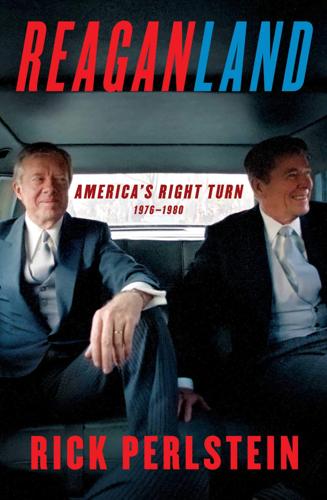
Reaganland: America's Right Turn 1976-1980
by
Rick Perlstein
Published 17 Aug 2020
They took this as open-and-shut evidence of official Kremlin policy, no matter that, during this period, Soviets had never even tried to build enough ICBMs to attempt it. Team B also believed, based on speculative deductions, that the Soviets were increasing their commitment to civil defense. They thus concluded that the Soviets did not believe in the stabilizing doctrine upon which America’s nuclear system was built: “mutually assured destruction,” which held that because each understood that the other could obliterate them many times over, and that thus nobody could truly “win,” the best way to prevent war was to negotiate a parity of firepower. Instead, Team B argued, the Russians were preparing to ride out a nuclear holocaust they intended to start.
…
Unless decisive steps are taken to alert the nation, and to change the course of its policy, our economic and military capability will become inadequate to assure security.” Others said the Soviet Union’s “unparalleled military buildup” was “reminiscent of Nazi Germany’s rearmament in the 1930s,” and that Russia, which “does not subscribe to American notions of nuclear sufficiency and mutually assured destruction,” was building forces “designed to enable the USSR to fight, survive, and win a nuclear war.” Such language soon dominated security discussions in Washington. “Carter to Inherit Intense Dispute on Soviet Intentions,” the Washington Post front page trumpeted a little more than a fortnight before the inauguration, next to a picture of the incoming president looking meek in his plaid flannel shirt.
…
This made the world a much safer place, because neither believed itself to have the greater ability to survive a nuclear war—and thus had no reason to start one. Achieving what JFK called in his inaugural address “that uncertain balance of terror that stays the hand of mankind’s final war”—known colloquially as “mutually assured destruction”—had taken years of meticulous trust-building. Agreement on verifying compliance had been equally challenging. It was, however, only a five-year deal. In November of 1974 Gerald Ford and Leonid Brezhnev agreed on a framework for an eventual SALT II. It was to include even more aggressive ceilings, including on non-missile “intercontinental delivery vehicles”—airplanes—and limits on the number of “multiple independent targeted reentry vehicles”—warheads—each missile could carry.
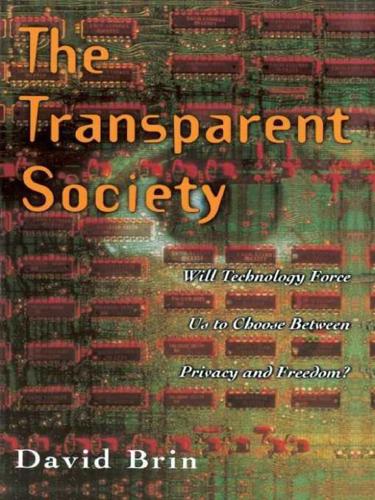
The Transparent Society: Will Technology Force Us to Choose Between Privacy and Freedom?
by
David Brin
Published 1 Jan 1998
A strategy of reciprocal deterrence seemed extremely dangerous during the Cold War, forcing us all to live in fear of a nuclear apocalypse. But it worked. Although direct warfare between large nations had been routine for many thousands of years, this persistent nasty habit was abruptly broken when two mighty empires faced MAD—or mutually assured destruction—a threat of total annihilation if either of them initiated head-on conflict. Despite a litany of shameful and costly surrogate wars, this fifty-year experiment had one valuable outcome: it proved that people and nations may sometimes behave more soberly when they face inescapable accountability for their actions.

Cities Under Siege: The New Military Urbanism
by
Stephen Graham
Published 30 Oct 2009
Within a few years … bombing moved from the selective destruction of key sites within cities to extensive attacks on urban areas and, finally, to instantaneous annihilation of entire urban spaces and populations.’48 Sometimes, exact replicas of the vernacular architecture of the cities to be bombed were built to facilitate the honing of the process. In Dugway Proving Grounds in Utah, for example, the US Army Air Force built exact replicas of Berlin tenements beside Japanese villages of wood and rice paper, and burned them repeatedly so as to perfect the design of its incendiary bombs.49 THE BOMBARDIER’S EYE With the mutually assured destruction of the Cold War, such subtleties became less necessary. ‘With the inter-continental missile’, writes Martin Shaw, ‘the capacity to simultaneously destroy all major centres of urban life became a symbol of the degeneration of war.’50 Nevertheless, great efforts were made in the US during the Cold War to construct a bastion against both nuclear Armageddon and the Communist menace.51 From these efforts emerged the nuclear family, the suburban house, and the nuclear state, fused into the political-cultural bastion of American life.
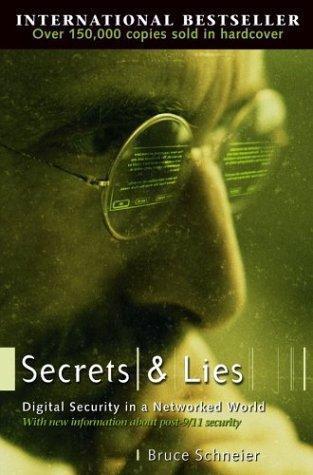
Secrets and Lies: Digital Security in a Networked World
by
Bruce Schneier
Published 1 Jan 2000
We don’t fight crime by making our banks 100 percent immune to attack;we fight crime by catching criminals. Luckily, criminals are pretty stupid. And given the kind of salary a good computer security expert can command, computer crime doesn’t pay nearly as well. If the United States was ever the target of a nuclear attack by the USSR, the planned response was to counterattack. Mutual assured destruction is about as surreal as a security defense gets, but it worked. The Pinkerton Detective Agency was established in 1852. One of their early services was to protect trains from robbers in the American West. Early on, they realized that it was expensive to put a Pinkerton guard on every train.

No Such Thing as Society
by
Andy McSmith
Published 19 Nov 2010
Men can’t turn their emotions on and off like a tap like some women can.’38 CHAPTER 3 PROTEST AND SURIVIVE Away from the small islands ruled by Margaret Thatcher, the continent of Europe was split between the vast military alliances, NATO and the Warsaw Pact, who eyed each across a physical and ideological border that sliced Germany into two and kept Poland, Hungary, Czechoslovakia, Bulgaria and Romania sealed off from their neighbours to the west and south. NATO’s strategists feared that a ‘missile gap’ was developing that might threaten the principle of mutually assured destruction that supposedly deterred the hostile alliances from going to war. The nuclear weapons that NATO held in Europe were carried by ageing British Vulcan bombers and American F1-11s. If these aircraft were scrapped and not replaced, NATO would be unable to launch a nuclear strike against the Warsaw Pact other than with long-range missiles held in silos in the USA.

The Rational Optimist: How Prosperity Evolves
by
Matt Ridley
Published 17 May 2010
Nuclear Armageddon There were very good reasons to be a nuclear pessimist in the Cold War: the build-up of weapons, the confrontations over Berlin and Cuba, the gung-ho rhetoric of some military commanders. Given how most arms races end, it seemed only a matter of time before the Cold War turned hot, very hot. If you had said at the time that you believed that mutually assured destruction would prevent large direct wars between the superpowers, that the Cold War would end, the Soviet empire would disintegrate, global arms spending would fall by 30 per cent and three-quarters of all nuclear missiles would be dismantled, you would have been dismissed as a fool. ‘Historians will view nuclear arms reduction as such an incredible accomplishment,’ says Greg Easterbrook, ‘that it will seem bizarre in retrospect that so little attention was paid while it was happening.’
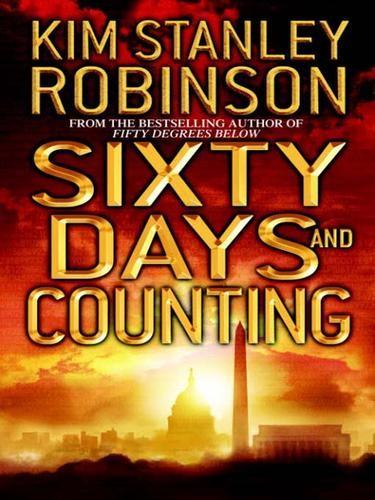
Sixty Days and Counting
by
Kim Stanley Robinson
Published 27 Feb 2007
Thus the Chinese bureaucrats wandered the conference halls looking fat and dangerous, as if explosives were strapped to their waists, implying with their looks and their cryptic comments that if their requirements were not met they would explode their carbon and cook the world. The United States meanwhile still had the biggest carbon burn ongoing, and from time to time in the negotiations could threaten to claim that it was proving harder to cut back than they had thought. So all the big players had their cards, and in a way it was a case of mutual assured destruction all over again. Everyone had to agree on the need to act, or it wouldn’t work for any of them. So all the carbon traders and diplomats were in the halls dealing, the Americans as much as anyone. Indeed they, as the newcomers to the table, seemed the ones most desperate for a global deal.

Connectography: Mapping the Future of Global Civilization
by
Parag Khanna
Published 18 Apr 2016
Pacific Command, has said that the United States and China converge on 80 percent of everything. The commonsense truth is that while leaders talk about “red lines” for public consumption, and navies come dangerously close to trading direct fire, the stock markets churn forward, knowing that there are two kinds of mutually assured destruction at play: military and economic. Military maneuvers don’t tell us enough about what drives leverage among great powers nor what they are willing to fight over. The tangled complexities of today’s system force leaders to think beyond borders and make functional calculations about the cost-benefit utility of their strategies—knowing full well that supply chain warfare involves not just an enemy “over there” but also one’s own deep interests “over there.”

The Precipice: Existential Risk and the Future of Humanity
by
Toby Ord
Published 24 Mar 2020
They created systems for spreading the pathogens to their opponents and built up vast stockpiles, reportedly including more than 20 tons of smallpox and of plague. The program was prone to accidents, with lethal outbreaks of both smallpox and anthrax (see Box).41 While there is no evidence of deliberate attempts to create a pathogen to threaten the whole of humanity, the logic of deterrence or mutually assured destruction could push superpowers or rogue states in that direction. The good news is that for all our flirtation with biowarfare, there appear to have been relatively few deaths from either accidents or use (assuming the Black Death to have been a natural pandemic).42 The confirmed historical death toll from biowarfare is dwarfed by that of natural pandemics over the same time frame.43 Exactly why this is so is unclear.
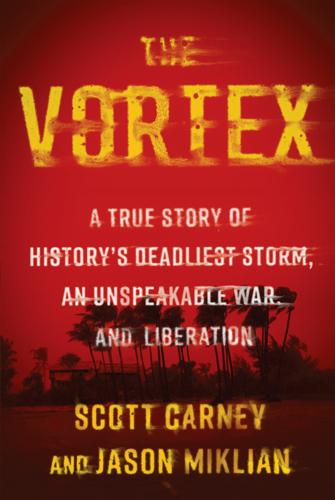
The Vortex: A True Story of History's Deadliest Storm, an Unspeakable War, and Liberation
by
Scott Carney
and
Jason Miklian
Published 28 Mar 2022
It was a grave responsibility, but the autonomy of submarine captains was also a critical Cold War deterrent. The subs could still fire their weapons if the Soviet Union was already smoldering after a nuclear attack. Supposedly, this meant that global thermonuclear war would be less likely to happen because no world leader would be insane enough to start lobbing nukes if that meant their own mutually assured destruction. And that was why Indira Gandhi couldn’t believe what was happening just off the Indian coast. She was dumbstruck that the United States was really willing to end life on the planet in order to prop up a genocidal regime. She worried that the Soviets had overplayed their hand and their Bay of Bengal submarine ploy was little more than a high-stakes bluff.
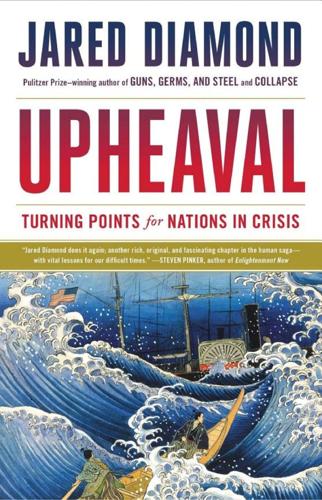
Upheaval: Turning Points for Nations in Crisis
by
Jared Diamond
Published 6 May 2019
Hence even if a Soviet surprise attack destroyed every single one of the silos—unlikely, because the U.S. had so many silos including deceptive dummy ones, hardened against attack, small, and requiring implausibly high accuracy for Soviet missiles to destroy every one of them—the U.S. could still respond with its bombers and its submarines to destroy the Soviet Union. As a result, the nuclear arsenals of both the U.S. and the Soviet Union provided “mutual assured destruction,” and a surprise attack was never carried out. That is, no matter how tempting was the goal of destroying the rival’s nuclear capacity, both American and Soviet planners realized that a surprise attack would be irrational, because it was impossible to destroy all of the rival’s delivery systems in order to prevent the rival from subsequently destroying the attacker.
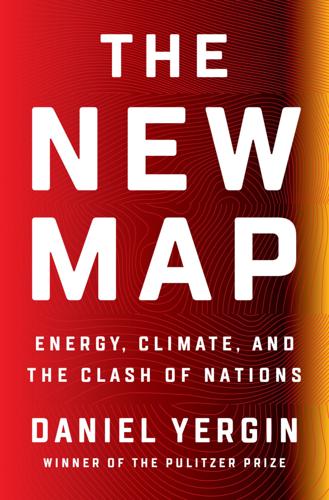
The New Map: Energy, Climate, and the Clash of Nations
by
Daniel Yergin
Published 14 Sep 2020
Clarification on the treatment of “land features” and their “rights” in the adjacent waters of these “features” would be important. Another issue, one of the most vexing, is an understanding of the legal status of the exclusive economic zones. Or perhaps the best that can be hoped for—as a play on the “MAD” (mutually assured destruction) of the U.S.-Soviet nuclear standoff in the Cold War years—may be “MAA,” “mutually assured ambiguity.” But seeking to address issues in a multilateral framework, with a critical role for ASEAN, would help modulate the conviction that the South China Sea is fundamentally a standoff between China and the United States.12 In terms of energy, the clash of nations can be eased with the recognition that the offshore waters of the South China Sea are unlikely to be another Persian Gulf in terms of supply and that the most important contribution to energy security is the secure passage of tankers through its waters.

Lifespan: Why We Age—and Why We Don't Have To
by
David A. Sinclair
and
Matthew D. Laplante
Published 9 Sep 2019
Wells highlighted the possibility of world destruction stemming from the splitting of the atom, wrote Smithsonian writer Brian Handwerk, as well as the future threat of portable devices capable of mass destruction. “Wells also clearly saw the dangers of nuclear proliferation, and the doomsday scenarios that might arise both when nations were capable of ‘mutually assured destruction’ and when non-state actors or terrorists got into the fray.” B. Handwerk, “The Many Futuristic Predictions of H. G. Wells That Came True,” Smithsonian.com, September 21, 2016, https://www.smithsonianmag.com/arts-culture/many-futuristic-predictions-hg-wells-came-true-180960546/. 46. According to the author and film historian Mark Clark, Wells’s sci-fi classic Things to Come and the subsequent 1936 film, which Clark claims was made under the author’s creative control, was his attempt “to save the world.

Your Computer Is on Fire
by
Thomas S. Mullaney
,
Benjamin Peters
,
Mar Hicks
and
Kavita Philip
Published 9 Mar 2021
In 1960, Baran, then a researcher at RAND—a private think tank spun off from the US Air Force in 1956—was tasked with designing a “survivable” communication network: “there was a clear but not formally stated understanding,” he remarked later, “that a survivable communication is needed to stop, as well as to help avoid, a war.”28 He had the strained strategies of mutually assured destruction in mind: in order to maintain peace, the nuclear superpowers would need to enter a perpetual standoff with one another, legitimately armed for the apocalypse at all times. To make good on such a threat, both superpowers would need long-distance communication network infrastructure that could withstand multiple nuclear blasts.

The Rise and Fall of the Neoliberal Order: America and the World in the Free Market Era
by
Gary Gerstle
Published 14 Oct 2022
The lure of Reagan’s much derided Strategic Defense Initiative lay precisely in the hope that it might open a quick path to American victory in a seemingly endless Cold War. If the United States really succeeded in designing a “digital dome” that would protect the homeland from every attacking nuclear bomber and missile, then the doctrine of Mutually Assured Destruction, a strategy that had rendered the Cold War a stalemate for forty years, could be jettisoned. A newly vulnerable Soviet Union could be compelled to surrender or face the threat of unspeakable destruction from unstoppable American missiles. Tellingly, even as Reagan’s critics ridiculed the notion that a digital dome would ever succeed in destroying 100 percent of incoming Soviet bombs, missiles, and projectiles, the Soviet Union’s leadership itself, like the Reagan administration, regarded America’s “star wars” initiative as a game changer.

The Quiet Coup: Neoliberalism and the Looting of America
by
Mehrsa Baradaran
Published 7 May 2024
It is hard to fathom a future crisis being resolved any way other than through bailouts, and equally hard to imagine future regulators demanding anything in return, given the bloated balance sheets of the top firms. JP Morgan crossed the $3 trillion threshold in assets in 2020 and gained another trillion in 2022, virtually guaranteeing mutually assured destruction in the event of any real market stress. Today, stress tests notwithstanding, the banks cannot fail without taking us all down with them. Neoliberalism hasn’t won because it’s right. It has won by convincing policy makers that there is no alternative. ACCORDING TO the Financial Crisis Inquiry Commission report, the crisis was caused, in the simplest terms, by banks taking too much risk in the pursuit of profit.
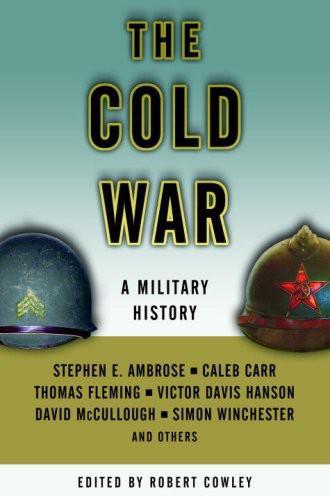
The Cold War
by
Robert Cowley
Published 5 May 1992
As if in recognition of technology's dominance, the Cold War became the era of the acronym: the ICBM; its little sisters, the IRBM (intermedi-ate-range) and the SLBM (submarine-launched); the missile tip with several warheads, MIRV (multiple independently targeted reentry vehicles); ABMs (antiballistic missiles); PALs (permissive action links), the remote-controlled digital codes that could unlock and activate a nuclear weapon; TELs (mobile transporter-erector-launchers); SIOP (single integrated operation plan), which identified all Soviet and Chinese targets to be attacked, enabling the simultaneous use of every available nuclear weapon; SDI (strategic defense initiative), the “star wars” chimera that is still with us; and, of course, that most tellingly sinister acronym of all, MAD (mutual assured destruction). “Like the early fathers of the church” (the writer John Newhouse's phrase), the brethren of the nuclear priesthood squabbled over positions that might have seemed the stuff of theology had not their implications been so real. The disputants did not just conjure hell; they held the keys to it.
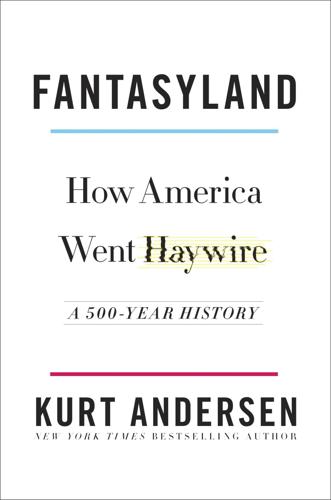
Fantasyland: How America Went Haywire: A 500-Year History
by
Kurt Andersen
Published 4 Sep 2017
In the 1960s, once the United States and the Soviet Union were both armed with hundreds of nuclear launchers and a thousand megatons worth of warheads, each side capable of destroying hundreds of the other’s cities, our central national defense strategy was reduced to a pure game theory notion that Von Neumann had helped craft: if rational player one believes that rational player two, no matter how massively attacked, will retain the ability to catastrophically counterattack, player one will never attack in the first place. Perfectly logical. The possible downside of the nuclearized “game” was hundreds of millions of deaths, however. People were appalled when they learned of Von Neumann’s jocular acronym: Mutual Assured Destruction, or MAD. President Kennedy had made a big campaign issue out of America’s supposed nuclear missile inferiority to the Soviets—a complete fiction. He chose as his secretary of defense a caricature of the rational modern technocrat: the Harvard MBA, former accounting professor, and Ford Motor Company president Robert Strange McNamara.

Superintelligence: Paths, Dangers, Strategies
by
Nick Bostrom
Published 3 Jun 2014
“Neuroethics of Deep Brain Stimulation for Mental Disorders: Brain Stimulation Reward in Humans.” Neurologia medico-chirurgica 50 (9): 845–52. Parfit, Derek. 1986. Reasons and Persons. New York: Oxford University Press. Parfit, Derek. 2011. On What Matters. 2 vols. The Berkeley Tanner Lectures. New York: Oxford University Press. Parrington, Alan J. 1997. “Mutually Assured Destruction Revisited.” Airpower Journal 11 (4). Pasqualotto, Emanuele, Federici, Stefano, and Belardinelli, Marta Olivetti. 2012. “Toward Functioning and Usable Brain–Computer Interfaces (BCIs): A Literature Review.” Disability and Rehabilitation: Assistive Technology 7 (2): 89–103. Pearl, Judea. 2009.
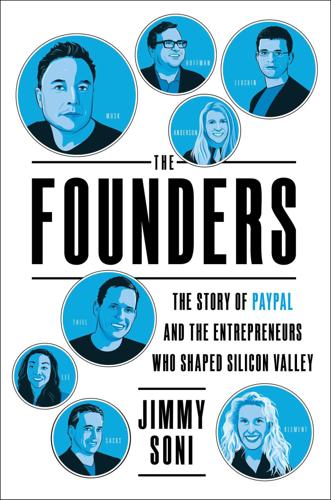
The Founders: The Story of Paypal and the Entrepreneurs Who Shaped Silicon Valley
by
Jimmy Soni
Published 22 Feb 2022
In choosing Omaha, X.com benefited not just from Anderson’s chance family connection, but also the US military’s presence in the area. Protected by half a continent on either side, Nebraska hosted the Strategic Air Command headquarters—the military command controlling much of the country’s nuclear stockpile. During the Cold War, Nebraska’s Offutt Air Force Base planned the country’s “mutually assured destruction” response to a Soviet nuclear attack. Private sector interests, including X.com, took advantage of the military’s investments in the area’s telecommunications systems. In the early 1990s, the region featured one of the country’s first fiber-optic cable networks. That left Omaha remarkably well suited for the far-flung call center of a West Coast payments start-up.

Velocity Weapon
by
Megan E. O'Keefe
Published 10 Jun 2019
It was her job, her responsibility, to survive. To show the would-be Icarions of the universe that Prime was not beaten. To warn the remaining Primes and maybe, just maybe, be a voice of reason. If there was anyone left in all the black to listen. To warn against the dangers of distrust. Of Mutually Assured Destruction. “Right,” she said, and pulled herself into an awkward flamingo stance. “Right.” Bero didn’t answer. Apparently he was comfortable enough with human company to realize when people were talking to themselves. Sanda braced herself with one hand against the bed as she tugged open a dresser drawer.
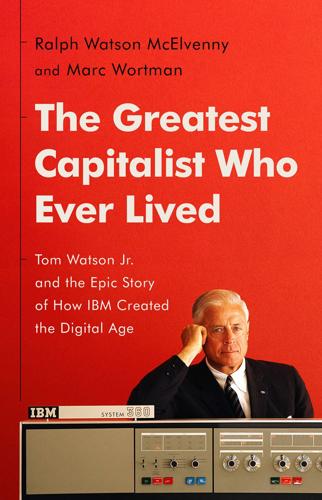
The Greatest Capitalist Who Ever Lived: Tom Watson Jr. And the Epic Story of How IBM Created the Digital Age
by
Ralph Watson McElvenny
and
Marc Wortman
Published 14 Oct 2023
It did.24 SAGE and other data-processing systems built for the military contributed immeasurably to the nation’s defense during the Cold War. But they also raised fears of computer-actuated war. Through films such as the 1964 dark comedy Dr. Strangelove, the company’s iconic “thinking machines” that promised to transform human existence for the better also became associated with a “doomsday” strategy of mutually assured destruction in the nuclear arms race with the Soviet Union. Computers could, like humans, misjudge data sources, inadvertently putting strategic weaponry on alert in response to false warnings of attack. Numerous “nuclear close calls” led in several notable incidents to preparations for possible nuclear retaliation.25 While driving development of SAGE, Tom Watson Jr. himself was no cold warrior.
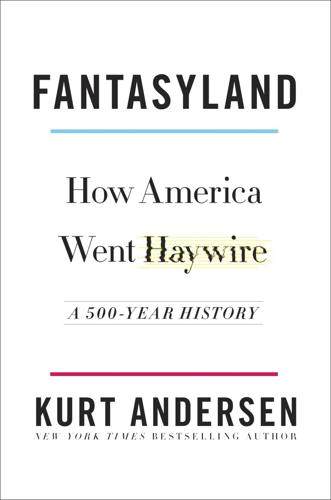
Fantasyland
by
Kurt Andersen
Published 5 Sep 2017
In the 1960s, once the United States and the Soviet Union were both armed with hundreds of nuclear launchers and a thousand megatons worth of warheads, each side capable of destroying hundreds of the other’s cities, our central national defense strategy was reduced to a pure game theory notion that Von Neumann had helped craft: if rational player one believes that rational player two, no matter how massively attacked, will retain the ability to catastrophically counterattack, player one will never attack in the first place. Perfectly logical. The possible downside of the nuclearized “game” was hundreds of millions of deaths, however. People were appalled when they learned of Von Neumann’s jocular acronym: Mutual Assured Destruction, or MAD. President Kennedy had made a big campaign issue out of America’s supposed nuclear missile inferiority to the Soviets—a complete fiction. He chose as his secretary of defense a caricature of the rational modern technocrat: the Harvard MBA, former accounting professor, and Ford Motor Company president Robert Strange McNamara.

The Berlin Wall: A World Divided, 1961-1989
by
Frederick Taylor
Published 26 May 2008
There followed a period of nervous stand-off. The Pershings and ‘cruise’ missiles were introduced into Western Europe, despite protests throughout the continent. Then in 1983 Reagan pulled what many still regard as a stroke of genius. He announced his intention to break the stalemate of ‘mutually assured destruction’ by developing a futuristic anti-missile system capable of preventing Soviet warheads from reaching American soil. This idea seemed to come straight from a Hollywood sci-fi epic (much talk of laser beams) and became known as the ‘Star Wars’ project. In Moscow, Reagan’s announcement caused something approaching panic and, as the conviction strengthened that perhaps the Americans could carry out their threat, a steady sense of demoralisation.
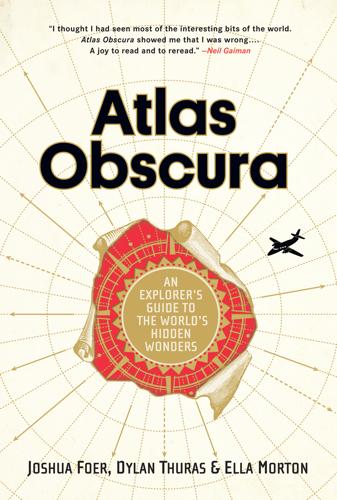
Atlas Obscura: An Explorer's Guide to the World's Hidden Wonders
by
Joshua Foer
,
Dylan Thuras
and
Ella Morton
Published 19 Sep 2016
FOUR CORNERS AND THE SOUTHWEST AND GREAT PLAINS Four Corners and the Southwest ARIZONA Titan Missile Museum GREEN VALLEY When you go underground at the Titan Missile Museum just south of Tucson, you travel back in time to the Soviet-fearing days of “duck and cover,” big red buttons, and mutually assured destruction. The museum, formerly known as Complex 571-7, is one of 54 subterranean missile sites across the country that were active during the Cold War. Decommissioned in 1982, the silo still contains a 108-foot (33 m) missile—with the lethal bits removed. The Titan II missile was capable of rapidly delivering a nine-megaton nuclear warhead to a target 6,300 miles (10,138 km) away.
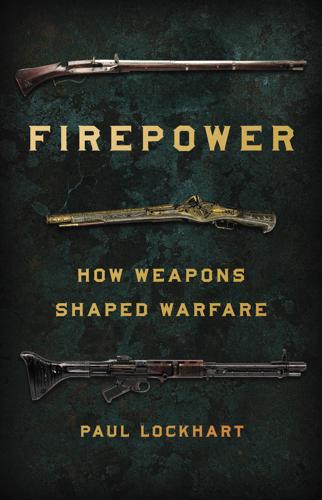
Firepower: How Weapons Shaped Warfare
by
Paul Lockhart
Published 15 Mar 2021
The Soviet-American rivalry and the Cold War, the political paroxysms of Europe and Asia and Africa and the Americas, the innumerable small wars fought in the wake of decolonization, the civil unrest, the cultural and social upheaval—all the momentous disorder that would characterize the world in the three-quarters of a century following 1945—none of these things would have unfolded in quite the same way without the foreboding presence of nuclear weapons and the possibility of mutually assured destruction. All of it grew from that single breathtaking demonstration of the power of the atomic bombs in 1945, the only time nuclear weapons have been used in combat. In the admittedly narrow world of military technology and the conduct of war, the fiery climax of the Second World War also marked a clear and distinct break with the past.

Space Odyssey: Stanley Kubrick, Arthur C. Clarke, and the Making of a Masterpiece
by
Michael Benson
Published 2 Apr 2018
It was the first film by an American director that any of his friends had ever bothered with. In fact, practically the entire UK Campaign for Nuclear Disarmament had gone to see it, coast to coast, and they’d come away doubly determined to fight the global epidemic of insanity best boiled down to the acronym MAD—for mutually assured destruction, appropriately enough. Actually, Strangelove had done more than that. It had shattered Tony’s picture of America. Everyone knew the country was insipid, stupid, silly, and complacent. So how could it have produced a film like this? “Right,” Tony said to himself. “The only way I’m ever going to get Dad off my back is to go down for an interview.”

Atomic Accidents: A History of Nuclear Meltdowns and Disasters: From the Ozark Mountains to Fukushima
by
James Mahaffey
Published 15 Feb 2015
After the war was over, the British were very disappointed to learn that all the camaraderie and warm feelings of brotherhood were blown away by the United States Congress Atomic Energy Act of August 1946, forbidding any sharing of atomic secrets with anyone, even close allies. The Brits were left to fend for themselves in the twisted new world of Cold War and Mutually Assured Destruction. All they had in the world was Canada, an ambitious prime minister, a tour of the X-10 pile, and a willing spirit.119 William Penney, fresh from working for the Americans on blast effects studies at the Bikini Atoll tests in 1946, was put in charge of the British atomic bomb development.
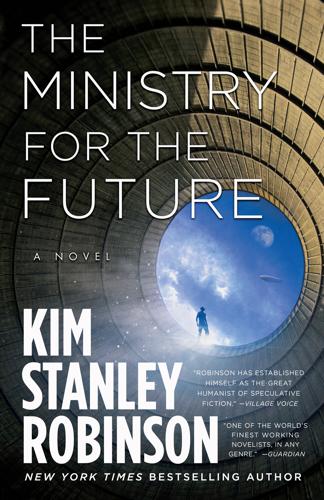
The Ministry for the Future: A Novel
by
Kim Stanley Robinson
Published 5 Oct 2020
The Russian government denied all these rumors and identified them as part of the ongoing anti-Russian campaign common in the West and elsewhere. Nothing to it. Each nation responsible for its own security. Russia was a keeper of all its treaty obligations and a force for stability in the world. Pebble mobs might even be a force for good, because now war was rendered impossible. It was mutual assured destruction, not of civilian populations, but of war machinery. An end to the twentieth-century concept of total war, a return to the focus on military-against-military that had characterized armed conflict before the breakdown of civilized norms established at Westphalia in 1648, then forgotten in the twentieth century.

Slouching Towards Utopia: An Economic History of the Twentieth Century
by
J. Bradford Delong
Published 6 Apr 2020
The Soviet Union’s launch of Sputnik, the first satellite, was an especially loud wake-up call to any who did not see Kennan’s call to fight the Cold War by making America into its best self as a serious challenge requiring serious effort. WAS THIS NONUTOPIA STABLE? The post–World War II world stood under the shadow of nuclear war. The nuclear weapons strategists embraced “MAD” strategies, which seemed to be not just an acronym for “mutual assured destruction” but also accurate shorthand for “insane.” And the world was not free from other serpents in the garden—other forms of militarism and imperialism, of national, cultural, and economic rivalries. For example, in the same letter in which Truman’s successor, President Dwight Eisenhower, admonished his brother Edgar for imagining that his administration could, or should, roll back the New Deal, he boasted about how the CIA under his administration had led the coup that had entrenched Mohammed Reza Pahlavi as shah and dictator in Iran, thus keeping the oil-rich states of the Middle East from going commie.
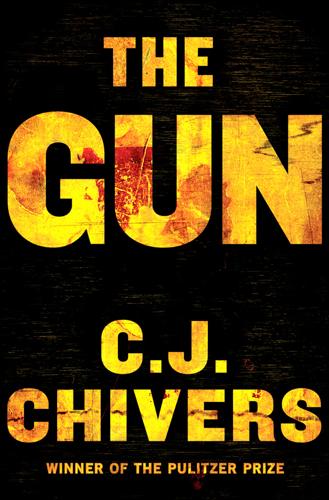
The Gun
by
C. J. Chivers
Published 12 Oct 2010
The Times of London had come to the not especially difficult conclusion that with a Gatling gun “a continuous shower of ounce bullets can be poured upon the spot where the enemy is the thickest, swept along the line of troops or scattered over the field like a jet of water from a fire hose.”56 Other newspapers noted similar Gatling gun properties, even if the analysis they derived from what they saw could be a stretch. “So destructive has its efficiency been made that it may almost be termed a peace preserver rather than a demolisher,” the Washington Post declared. The Indianapolis Sentinel went further, invoking deterrence with the certitude of those who would later embrace the security of mutual assured destruction in the nuclear age. “We believe the Gatling gun will change the whole aspect of war in due time,” its editors wrote. “When six guns can pour a steady stream of bullets at the rate of 3,000 a minute into the enemy, it is easy enough to see that 100 guns would make it prudent not to advance an inch; but on the contrary, retire as soon as possible.
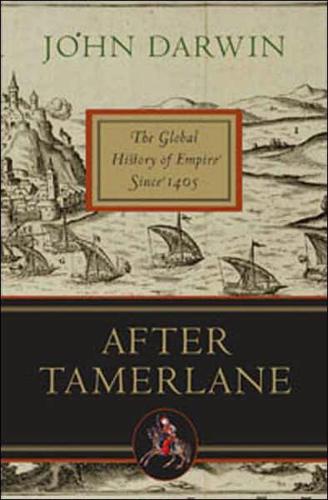
After Tamerlane: The Global History of Empire Since 1405
by
John Darwin
Published 5 Feb 2008
Indeed, it could have been argued that the collateral damage of late-twentieth-century imperialism – the destabilizing effects of covert intervention, the financial succour lent to authoritarian rulers, and the militarization of politics encouraged by the vast traffic in weapons90 – was at least as great as that of its late-nineteenth-century version. It certainly seemed that the dangerous uncertainty of ‘competitive coexistence’ (with the appalling prospect of ‘mutually assured destruction’ in an atomic exchange) was the inevitable price of a bipolar world. But it did not turn out like that. The reversal was astounding. In the mid-1980s the scope of Soviet ambition seemed greater than ever. From a forward base at Camranh Bay in southern Vietnam, the Soviet navy could make its presence felt across the main sea lanes running through South East Asia and in the Indian Ocean, a ‘British lake’ until the 1950s.91 By laying down huge newaircraft carriers like the Leonid Brezhnev, Moscownowaimed to rival the Americans’ capacity to intervene around the globe.
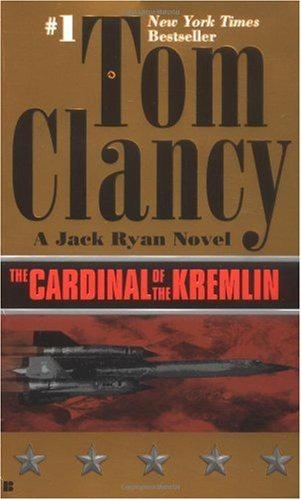
The Cardinal of the Kremlin
by
Tom Clancy
Published 2 Jan 1988
You can kill most every civilian in my country, and we can murder almost every person in your country, in sixty minutes or less from the time you pick up the phone-or my President does. And what do we call that? We call it 'stability.' " "It is stability, Ryan," Narmonov said. "No, sir, the technical name we use is MAD: Mutual Assured Destruction, which isn't even good grammar, but it's accurate enough. The situation we have now is mad, all right, and the fact that supposedly intelligent people have thought it up doesn't make it any more sensible." "It works, doesn't it?" "Sir, why is it stabilizing to have several hundred million people less than an hour away from death?
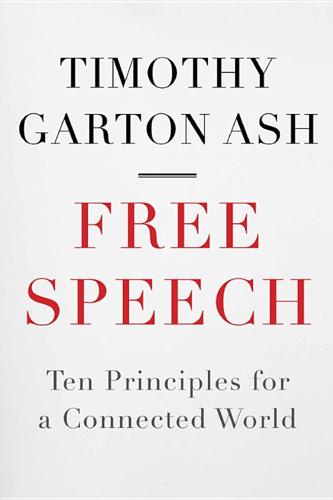
Free Speech: Ten Principles for a Connected World
by
Timothy Garton Ash
Published 23 May 2016
As with the Salvation and Skeleton Armies, you have to work out where the threat originates. If your counterthreat is genuinely defensive, it can be legitimate. ‘If you want peace, prepare for war’, said the ancient Romans. Nuclear deterrence in the Cold War involved states making threats of violence on such a scale—mutually assured destruction, or MAD for short—that neither side would dare to use its nuclear weapons. President Barack Obama devoted part of his 2009 Nobel Peace Prize acceptance speech to explaining why it could be appropriate for the commander in chief of a nation engaged in two wars to accept a prize for services to peace.34 Without going into all the intricacies of ‘just war’ theory, as applied to our time, let us simply agree that a legitimate, UN-sanctioned use or threat of force by states must be distinguished from the generality of ‘threats of violence’ we seek to prevent, prohibit and counter.35 Yet it would be naïve in the extreme to believe that states habitually abide by these fine criteria when they make propaganda for war, in chronic violation of Article 20.1.

The Code: Silicon Valley and the Remaking of America
by
Margaret O'Mara
Published 8 Jul 2019
Before long, the protagonist and his female companion find themselves deep in the Air Command’s mountain bunker, frenetically trying to reprogram a supercomputer that is determined to launch thousands of nuclear warheads. At the last moment, Lightman’s programming skills save the world from mutually assured destruction. The story was pure Hollywood, but for the popcorn-chomping millions watching in the cool dark of American movie theaters that summer, WarGames wasn’t all that far from reality. After decades of test ban treaties and détente, America was once again ramping up its nuclear arsenal and employing the highest of high technology to do it.
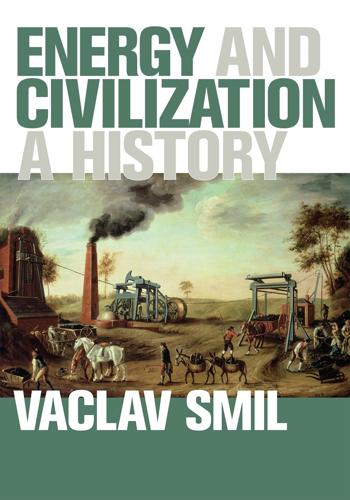
Energy and Civilization: A History
by
Vaclav Smil
Published 11 May 2017
Adding even a partial cost of the subsequent invasion and occupation of Iraq would raise the total well above a trillion dollars, and as the experience since the attack has shown, there is no easy military solution, as both the classic powerful weapons and the latest smart machines are of a limited use against fanatically motivated individuals or groups willing to die in suicide attacks. There is no doubt that the mutually assured destruction (MAD) concept has been the main reason why the two nuclear superpowers have not fought a thermonuclear war, but at the same time, the magnitude of the nuclear stockpiles amassed by the two adversaries, and hence their embedded energy cost, has gone far beyond any rationally defensible deterrent level.
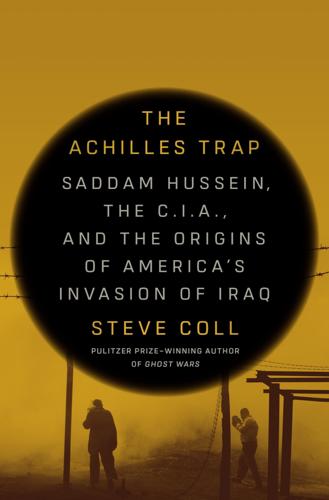
The Achilles Trap: Saddam Hussein, the C.I.A., and the Origins of America's Invasion of Iraq
by
Steve Coll
Published 27 Feb 2024
If it required five or more years to clandestinely develop a nuclear bomb that would surprise Israel after Iran accepted a cease-fire and political settlement, Saddam was willing to be patient, or so it seemed to Jafar. For all his heedless talk in public and private about weapons of mass destruction, Saddam understood the rationality—if it can be called that—of the Cold War deterrence equation of “mutually assured destruction.” His pattern of behavior showed that he sought to deter his enemies from striking Iraq. He also sought to avoid provoking adversaries when he felt the risk of escalation might be too great. Yet Saddam rarely followed a strategic line cogently. He was by temperament a rash improviser and opportunist.

The uplift war
by
David Brin
Published 1 Jun 1987
(No doubt these traditions derived from warped memories of their long lost patron race.) Among the simple but effective methods used by pre-Contact humans (see citations) were the method of counting coup for honor among the “american indians,” trial by champion among the “medieval europeans,” and deterrence by mutual assured destruction, among the “continental tribal states.” Of course, these techniques lacked the subtlety, the delicate balance and homeostasis, of the modern rules of behavior laid out by the Institute for Civilized Warfare . . . “That’s it. Break time. I’m puttin’ a T on it. Enough.” Gailet blinked, her eyes unfocusing as the rude voice drew her back out of her reading trance.
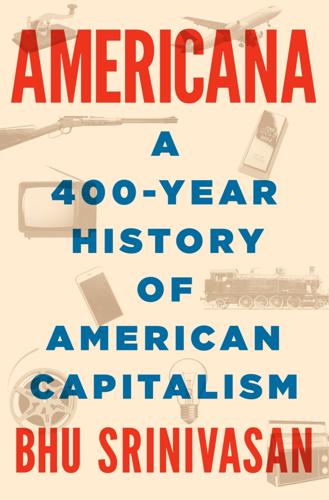
Americana: A 400-Year History of American Capitalism
by
Bhu Srinivasan
Published 25 Sep 2017
His experiments eventually failed but had gained enough traction that they attracted the interest of another notable innovator in Napoleon. The Emperor’s interest didn’t lead anywhere either. Besides, Fulton had a different motivation than his would-be customers. Fulton’s primary mission was to invent weaponry so powerful that it would render naval warfare futile. He envisioned submarine-fired torpedoes creating a mutually assured destruction scenario among the parties that would “put a stop to maritime wars” and free the seas for peaceful, “humane” pursuits. He continued to spend many years peppering people like Thomas Jefferson with letters and drawings. He pressed the secretary of the navy. For a man committed to ending naval warfare, Fulton seems to have spent enormous energy trying to sell weapons.
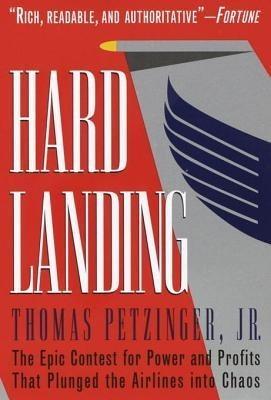
Hard Landing
by
Thomas Petzinger
and
Thomas Petzinger Jr.
Published 1 Jan 1995
All the unions had really received was access to Eastern’s confidential internal documents and three out of sixteen votes on a board of directors, which might as well have been three in a million. Those concessions had established a detente in the cold war at Eastern, but no peace. And both sides remained sufficiently armed to fulfill the Cold War concept of mutually assured destruction. If there was any doubt about the fragility of the peace, it was erased in April of 1985, when the machinists’ contract once again came up for renewal. The Colonel wanted yet another BOHICA deal, preserving some of the concessions already in place. And amazingly Charlie Bryan, now playing the role of union statesman, urged his members to assent.

Americana
by
Bhu Srinivasan
His experiments eventually failed but had gained enough traction that they attracted the interest of another notable innovator in Napoleon. The Emperor’s interest didn’t lead anywhere either. Besides, Fulton had a different motivation than his would-be customers. Fulton’s primary mission was to invent weaponry so powerful that it would render naval warfare futile. He envisioned submarine-fired torpedoes creating a mutually assured destruction scenario among the parties that would “put a stop to maritime wars” and free the seas for peaceful, “humane” pursuits. He continued to spend many years peppering people like Thomas Jefferson with letters and drawings. He pressed the secretary of the navy. For a man committed to ending naval warfare, Fulton seems to have spent enormous energy trying to sell weapons.
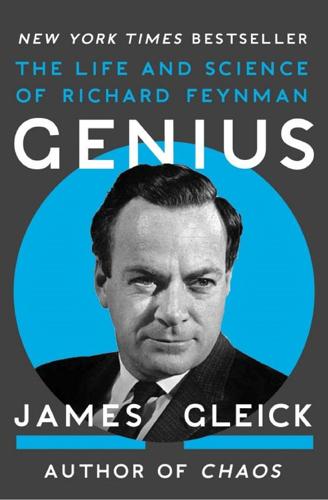
Genius: The Life and Science of Richard Feynman
by
James Gleick
Published 1 Jan 1992
The images of Trinity—the spindly hundred-foot tower waiting to be vaporized, the jackrabbits found shredded a half-mile from the blast, the desert sand fused to a bright jade-green glaze—came to presage the central horror of an age. We have hindsight. We know what followed: the blooding of the scientists, the loss of innocence—Hiroshima, Dr. Strangelove, throw weights, radwaste, Mutual Assured Destruction. The irony is built in. At first, though, ground zero stood for nothing but what it was, a mirrored surface, mildly radioactive, where earlier had stood a tower of steel. Richard Feynman, still not much more than a boy, wrote, “It is a wonderful sight from the air to see the green area with the crater at the center in the brown desert.”
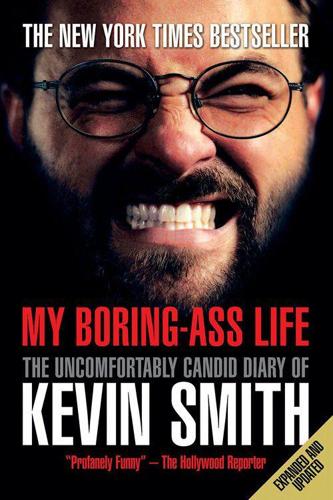
My Boring-Ass Life: The Uncomfortably Candid Diary of Kevin Smith
by
Kevin Smith
Published 24 Sep 2007
For years, this country was deeply afraid of the Russians. Now, the Middle East makes Khrushchev beating his shoe on a podium and telling the US “We will bury you!” seem as threatening as Elmer Fudd during wabbit season. I mean, back during the Cold War, the two “Super Powers” held one another in check with the threat of Mutually Assured Destruction; neither side would rush into battle, because neither side saw the benefit in being dead. But with Middle Eastern extremists, you have an adversary who couldn’t give a fuck about M.A.D., so long as the decadence of the west is wiped out (not to mention all western inhabitants). Even in their most cartoonish, Rambo-like villainy, the “Commies” still seemed human; and that, I believe, had a lot to do with their investment in this world.

Fall Out: A Year of Political Mayhem
by
Tim Shipman
Published 30 Nov 2017
Rogers’ greatest fear, though, was that the government was not doing enough work to analyse the risks or prepare for the possibility of crashing out of the EU without a new deal, falling back on World Trade Organisation tariff rules. He told colleagues the prospect needed to be treated like ‘a national emergency’. Privately he warned of ‘mutually assured destruction’. Rogers had been arguing since 2012 that an exit contingency cell should have been set up in the Cabinet Office, but Cameron and Heywood had vetoed the suggestion. Without that work, May could not credibly threaten to walk away from negotiations, a card she needed to hold in her hand.
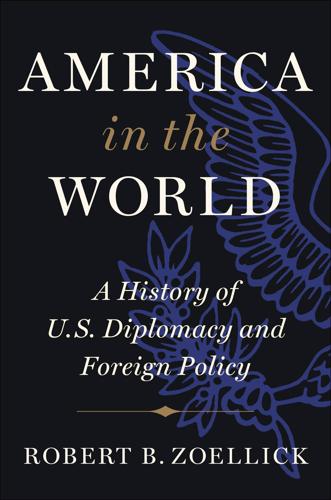
America in the World: A History of U.S. Diplomacy and Foreign Policy
by
Robert B. Zoellick
Published 3 Aug 2020
While negotiators often hold their bargaining strategies close, Reagan expressed his plan baldly—to persuade both opponents and supporters that he was serious.42 The president found nuclear weapons particularly abhorrent. He was troubled by a Pentagon briefing in 1983 on SIOP, the Single Integrated Operational Plan for all-out nuclear war. He found the deterrence logic of “mutually assured destruction” (MAD) to be deeply disturbing, and he struggled to escape its grasp. As Reagan said repeatedly, including at his first meeting with Soviet president Mikhail Gorbachev in Geneva in 1985, “a nuclear war cannot be won and must never be fought.” The administration’s early proposal to eliminate all U.S. and Soviet intermediate-range missiles, as part of the dual-track deployment and negotiation, suited Reagan’s logic.

How the Mind Works
by
Steven Pinker
Published 1 Jan 1997
He was meant to symbolize a kind of intellectual who until recently was prominent in the public’s imagination: the nuclear strategist, paid to think the unthinkable. These men, who included Henry Kissinger (on whom Sellers based his portrayal), Herman Kahn, John von Neumann, and Edward Teller, were stereotyped as amoral nerds who cheerfully filled blackboards with equations about megadeaths and mutual assured destruction. Perhaps the scariest thing about them was their paradoxical conclusions—for example, that safety in the nuclear age comes from exposing one’s cities and protecting one’s missiles. But the unsettling paradoxes of nuclear strategy apply to any conflict between parties whose interests are partly competing and partly shared.
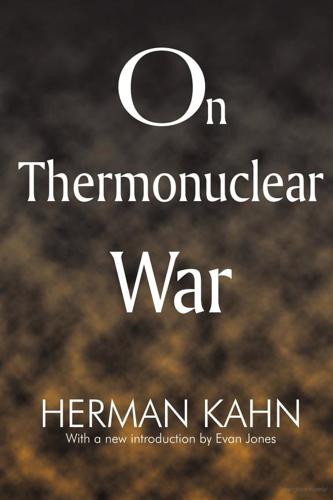
On Thermonuclear War
by
Herman Kahn
Published 16 Jul 2007
In 1955, fifty-two Nobel laureates signed the Mainu Declaration that any nation unwilling to denounce force as a final resort would “cease to exist.” Many thought that further study into the matter was not only counterproductive, but immoral. And, at that, official public policy regarding the use of nuclear weapons left much to be desired: “Nuclear Tripwire,” “Massive Retaliation,” and what later became known as Mutual Assured Destruction (“MAD”). Kahn, a military analyst at Rand since 1948, understood that a defense based on that sort of inconceivable presumption was morally questionable and not credible. One European critic bitterly observed that in order to defend Europe, America had promised to commit murder-suicide: “We urge you to break this promise.”
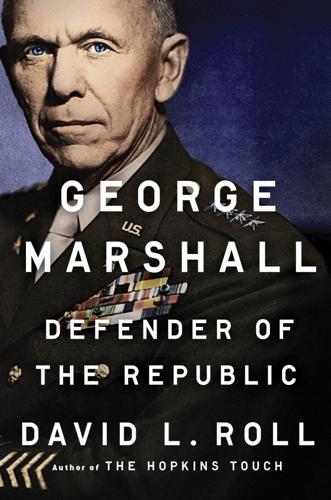
George Marshall: Defender of the Republic
by
David L. Roll
Published 8 Jul 2019
Stalin and the Communist Party, he was convinced, intended to exploit the chaos and dominate much of the rest of Europe. By the time the last of the Marshall Plan dollars were spent in 1952, the West was divided from the East, each backed by military alliances. The United States and the Soviet Union were engaged in a nuclear arms race, restrained only by the fear of mutual assured destruction. It was nowhere near the kind of peace that Marshall envisioned in 1945 when American troops linked up with their Russian counterparts and shared vodka and whiskey on the banks of the Elbe. Nevertheless, his plan was a signal accomplishment. The Western European states, including West Germany, were well on their way to full recovery.
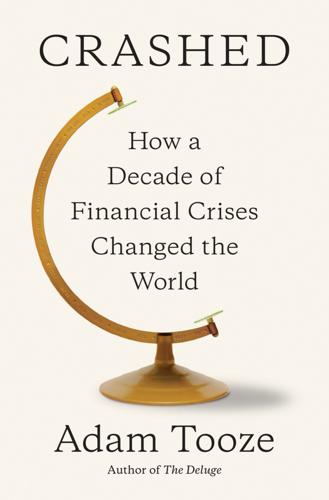
Crashed: How a Decade of Financial Crises Changed the World
by
Adam Tooze
Published 31 Jul 2018
Of course, if the United States suffered a crisis, China would be hurt too.33 Niall Ferguson and Moritz Schularick came up with the term “Chimerica” to describe the Sino-American economic complex.34 For Larry Summers, who had moved from the Treasury to an ill-fated stint as president of Harvard, it reawakened memories of cold war–era mutually assured destruction. At the heart of the world economy, he told Washington audiences, was a “balance of financial terror.”35 The difference was that in the cold war the economy had been America’s strong suit. Now America’s trump card consisted of the hope that it was simply “too big” for China to let it fail.
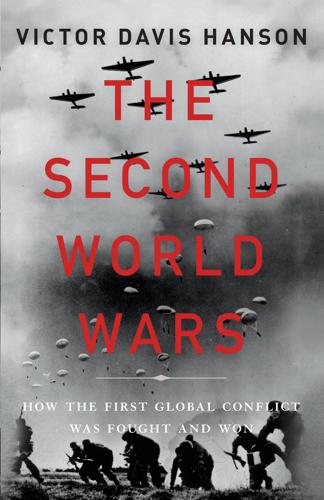
The Second World Wars: How the First Global Conflict Was Fought and Won
by
Victor Davis Hanson
Published 16 Oct 2017
Germany, Japan, and Italy became model global citizens. Central Europe and the South China Sea for over a half century were no longer to be the powder kegs of war. Another world war was averted. More long-term, utopian goals were only half realized. Nuclear weapons, the NATO alliance, and the fear of mutually assured destruction during the Cold War more likely prevented World War III than did the moral censure of the war-born United Nations. The totalitarian absorption of Eastern Europe that had proved a catalyst for World War II was institutionalized by 1945—albeit with Stalinist puppet governments replacing their earlier Nazi-dominated counterparts, an outcome that was not overturned until 1989 and afterward.22 In the ensuing decades perhaps some sixty to seventy million were eventually to perish from Mao Zedong’s unending paranoid revolutions, a far greater death toll in relative peacetime than inflicted by the wartime Japanese.

Palo Alto: A History of California, Capitalism, and the World
by
Malcolm Harris
Published 14 Feb 2023
His boss, Hap Arnold—now promoted to fourth in the military’s hierarchy, fifth if you count Roosevelt—was impressed enough that he had Shockley expand on the memo and publish it under Arnold’s name in a new volume of leading perspectives on the atomic age titled One World or None.20 In between pro forma pleas for world peace, Shockley-as-Arnold laid out the postwar plan: strategic air bases around the world, dispersed weapons, mutually assured destruction before it was called that. What we needed was a bunch of R & D spending, especially on “pilotless” weapons similar to Germany’s V-series rockets. Oh, and we shouldn’t “trammel” scientists with security regulations, Shockley couldn’t keep himself from adding. Whether he realized it then or not, he would play an important role in developing those pilotless weapons.

Behave: The Biology of Humans at Our Best and Worst
by
Robert M. Sapolsky
Published 1 May 2017
Thus, destruction of strain 2 by strain 1 causes the demise of strain 1 thanks to strain 3. The study showed that the strains could exist in equilibrium, each limiting its growth. Cool. But it doesn’t quite fit our intuitions about cooperation. Rock/paper/scissors is to cooperation as peace due to nuclear weapons–based mutually assured destruction is to the Garden of Eden. Which raises a third fundamental, alongside individual selection and kin selection: reciprocal altruism. “I’ll scratch your back if you scratch mine. I’d rather not actually scratch yours if I can get away with it. And I’m watching you in case you try the same.”
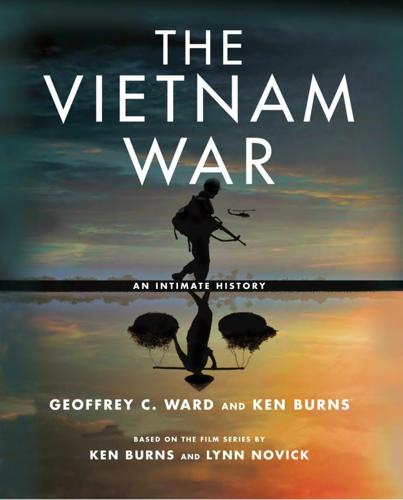
The Vietnam War: An Intimate History
by
Geoffrey C. Ward
and
Ken Burns
Published 4 Sep 2017
“I was able to see the sunlight and hear sounds other than the cries of people tortured.” Phan Quang Tue and Phan Quang Tuan on their way to school in Saigon AT THE BEGINNING OF THE BEGINNING IN OCTOBER 1962, the United States and the Soviet Union came closer than they would ever come again to mutually assured destruction. The Soviets had secretly placed nuclear missiles on the island of Cuba, a little over ninety miles from the United States. The Joint Chiefs of Staff urged President Kennedy to bomb the missile sites. He resisted and instead ordered a naval quarantine to stop Soviet ships from resupplying the island.
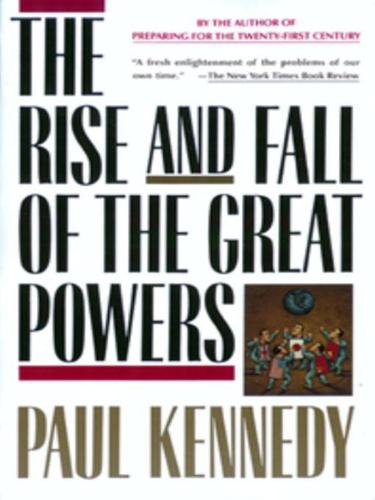
The Rise and Fall of the Great Powers: Economic Change and Military Conflict From 1500 to 2000
by
Paul Kennedy
Published 15 Jan 1989
Both superpowers had over 5,000 combat aircraft, more than ten times the number possessed by the former Great Powers.146 Their total tonnage in warships—the United States had 2.8 million tons, the USSR 2.1 million tons in 1974—was well ahead of Britain (370,000 tons), France (160,000 tons), Japan (180,000 tons), and China (150,000 tons).147 But the greatest disparity lay in the numbers of nuclear delivery weapons, shown in Table 38. Table 38. Nuclear Delivery Vehicles of the Powers, 1974148 So capable had each superpower become of obliterating the other (and anyone else besides)—a state of affairs quickly named MAD, or Mutually Assured Destruction—that they began to evolve arrangements for controlling the nuclear arms race in various ways. There was, following the Cuban missile crisis, the installation of a “hot line” to allow each side to communicate in the event of another critical occasion; there was the nuclear test-ban treaty of 1963, also signed by the United Kingdom, which banned testing in the atmosphere, under water, and in outer space; there was the Strategic Arms Limitation Treaty (SALT I) of 1972, which set limits on the numbers of intercontinental ballistic missiles each side could possess and halted the Russian construction of an anti-ballistic-missile system; there was the extension of that agreement at Vladivostock in 1975, and, in the late 1970s, there were negotiations toward a SALT II treaty (signed in June 1979, but never ratified by the U.S.